Search Result
Results for "
Ethers
" in MedChemExpress (MCE) Product Catalog:
36
Biochemical Assay Reagents
10
Isotope-Labeled Compounds
| Cat. No. |
Product Name |
Target |
Research Areas |
Chemical Structure |
-
- HY-132004
-
|
|
PROTAC Linkers
|
Cancer
|
|
Tos-O-C4-NH-Boc is an alkyl ether-based PROTAC linker can be used in the synthesis of PROTACs, such as BSJ-03-204 (HY-136250) .
|
-
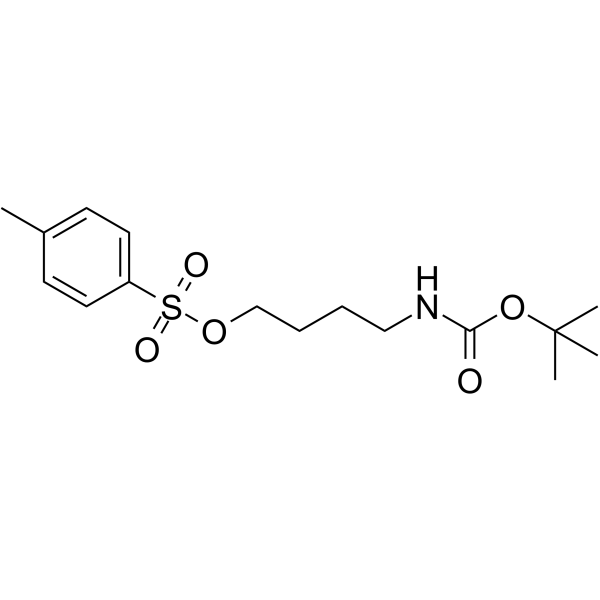
-
- HY-130470
-
|
|
PROTAC Linkers
|
Cancer
|
|
Chloroacetamido-PEG4-C2-Boc is a PEG/Alkyl/ether-based PROTAC linker can be used in the synthesis of PROTACs.
|
-

-
- HY-W094511
-
|
Gold chloride sodium dihydrate
|
Biochemical Assay Reagents
|
Others
|
|
Tetrachloroaurate III sodium dihydrate (Gold chloride sodium dihydrate) is utilized as catalyst in reactions like nucleophilic addition to multiple bonds, nucleophilic substitution of propargylic alcohols, and nonsymmetrical etherization .
|
-

-
- HY-140239
-
|
|
PROTAC Linkers
|
Cancer
|
|
Amino-PEG4-benzyl ester is a PEG- and Alkyl/ether-based PROTAC linker that can be used in the synthesis of PROTACs .
|
-

-
- HY-140406
-
|
|
PROTAC Linkers
|
Cancer
|
|
Aminooxy-PEG3-C2-NH-Boc is a PEG- and Alkyl/ether-based PROTAC linker that can be used in the synthesis of PROTACs .
|
-
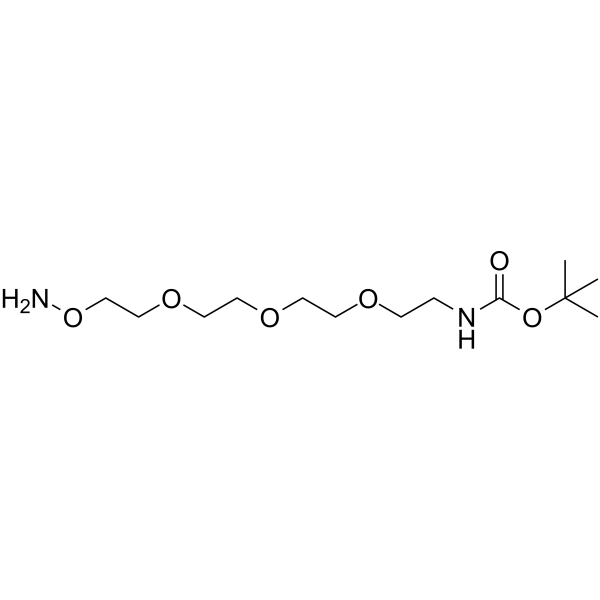
-
- HY-140596
-
|
|
PROTAC Linkers
|
Cancer
|
|
m-PEG3-S-PEG3-Boc is a PEG- and Alkyl/ether -based PROTAC linker can be used in the synthesis of PROTACs .
|
-
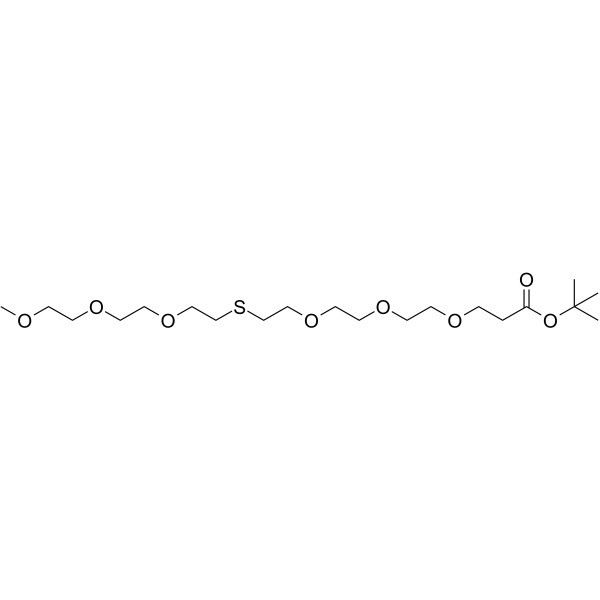
-
- HY-139661
-
|
|
PROTAC Linkers
|
Cancer
|
|
Boc-bipiperidine-ethynylbenzoic acid is an Alkyl/ether-based PROTAC linker can be used in the synthesis of ARD-61 . Boc-bipiperidine-ethynylbenzoic acid is a click chemistry reagent, it contains an Alkyne group and can undergo copper-catalyzed azide-alkyne cycloaddition (CuAAc) with molecules containing Azide groups.
|
-

-
- HY-120775
-
|
|
ADC Linker
PROTAC Linkers
|
Cancer
|
|
Boc-NH-PEG1-CH2CH2COOH is a cleavable (1 unit PEG) ADC linker and also a PEG- and Alkyl/ether-based PROTAC linker can be used in the synthesis of antibody-drug conjugates (ADCs) or PROTACs .
|
-
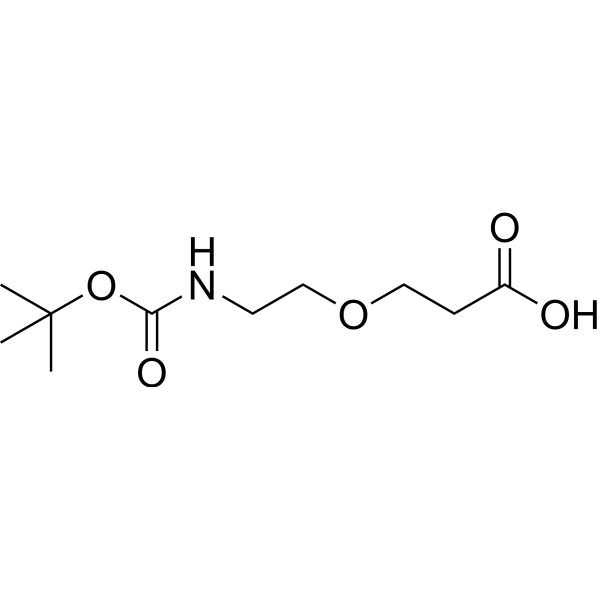
-
- HY-N2756
-
|
|
Others
|
Others
|
|
Amentoflavone 7,4',7'',4'''-tetramethyl ether, a biflavone, is a natural product that can be isolated from Selaginella moellendorffii .
|
-

-
- HY-119176
-
|
|
Others
|
Others
|
|
Oxyfluorfen is a pre- and post-emergence diphenyl ether herbicide to control annual broad-leaved and grass weeds. Oxyfluorfen is a protoporphyrinogen oxidase inhibitor and inhibits photosynthesis by blocking chlorophyll synthesis .
|
-
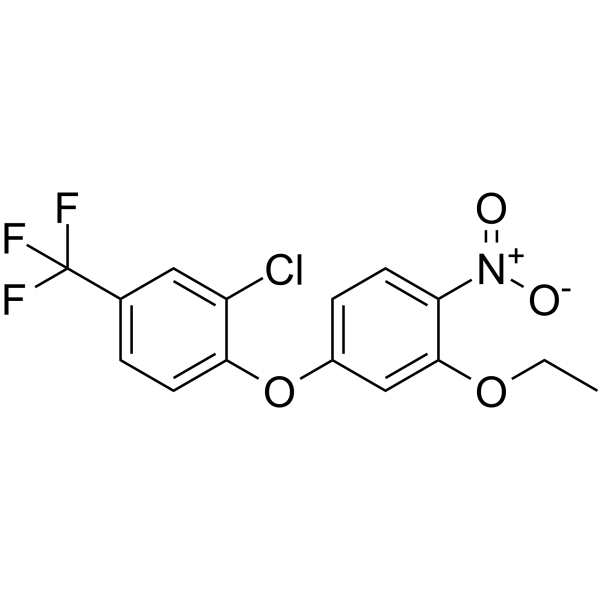
-
- HY-130420
-
|
|
PROTAC Linkers
|
Cancer
|
|
Azido-PEG5-PFP ester is a PEG- and Alkyl/ether-based PROTAC linker can be used in the synthesis of PROTACs . Azido-PEG5-PFP ester is a click chemistry reagent, it contains an Azide group and can undergo copper-catalyzed azide-alkyne cycloaddition reaction (CuAAc) with molecules containing Alkyne groups. Strain-promoted alkyne-azide cycloaddition (SPAAC) can also occur with molecules containing DBCO or BCN groups.
|
-
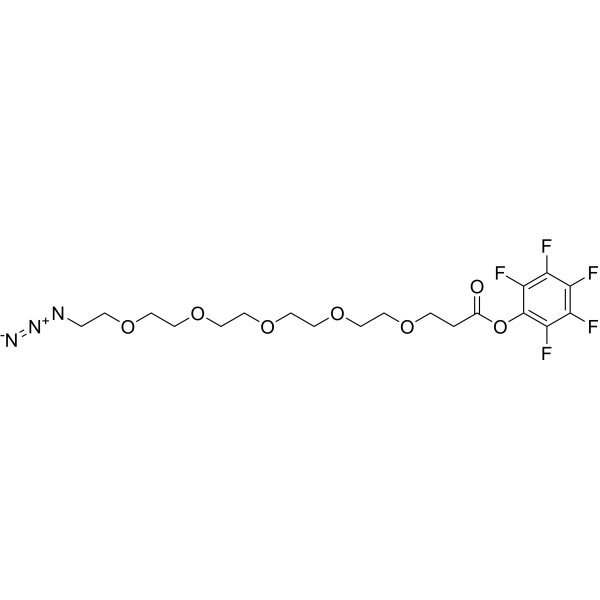
-
- HY-130742
-
|
|
PROTAC Linkers
|
Cancer
|
|
Azido-PEG8-Boc is a PEG- and Alkyl/ether-based PROTAC linker can be used in the synthesis of PROTACs . Azido-PEG8-Boc is a click chemistry reagent, it contains an Azide group and can undergo copper-catalyzed azide-alkyne cycloaddition reaction (CuAAc) with molecules containing Alkyne groups. Strain-promoted alkyne-azide cycloaddition (SPAAC) can also occur with molecules containing DBCO or BCN groups.
|
-
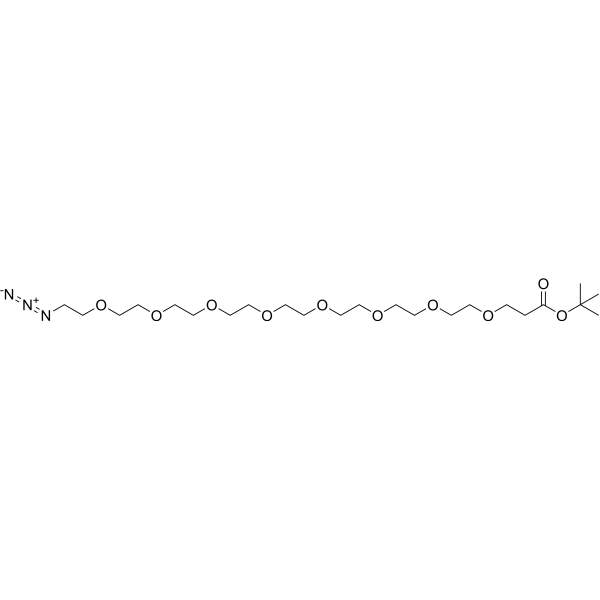
-
- HY-130693
-
|
|
PROTAC Linkers
|
Cancer
|
|
Azido-PEG5-CH2CO2-PFP is a PEG- and Alkyl/ether-based PROTAC linker can be used in the synthesis of PROTACs . Azido-PEG5-CH2CO2-PFP is a click chemistry reagent, it contains an Azide group and can undergo copper-catalyzed azide-alkyne cycloaddition reaction (CuAAc) with molecules containing Alkyne groups. Strain-promoted alkyne-azide cycloaddition (SPAAC) can also occur with molecules containing DBCO or BCN groups.
|
-
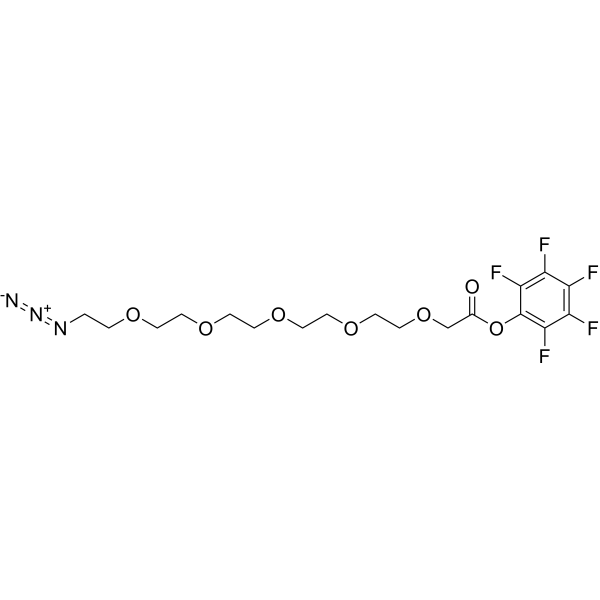
-
- HY-W102545
-
|
|
Biochemical Assay Reagents
|
Others
|
|
Diaza-15-crown-5 extends the lifetime of M intermediates in BR membranes. Diaza-15-crown-5 is a crown ether compound that alters the surface charge of BR membranes. Diaza-15-crown-5 changes the surface charge of the BR film. and overall membrane stability. Diaza-15-crown-5 allows the M state to be maintained for a longer period of time .
|
-

-
- HY-N9903
-
|
TDDC
|
Others
|
Others
|
|
Tetrahydrodehydrodiconiferyl alcohol (TDDC) is a reduction product of dihydrodehydrodiconiferyl alcohol catalyzed by phenylcoumaran benzylic ether reductase. Tetrahydrodehydrodiconiferyl alcohol can be isolated from a hydrogenolysis product of protolignin .
|
-
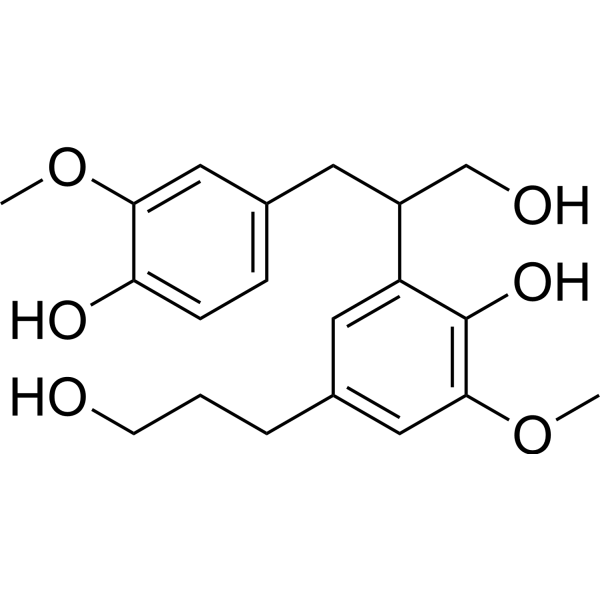
-
- HY-133044
-
|
|
PROTAC Linkers
|
Cancer
|
|
Boc-Pip-alkyne-Ph-COOH is a PROTAC linker, which refers to the alkyl/ether composition. Boc-Pip-alkyne-Ph-COOH can be used in the synthesis of a series of PROTACs, such as ARD-266 (HY-133020). ARD-266 effectively induces degradation of androgen receptor (AR) protein in AR-positive LNCaP, VCaP, and 22Rv1 prostate cancer cell lines with DC50 values of 0.2-1 nM . Boc-Pip-alkyne-Ph-COOH is a click chemistry reagent, it contains an Alkyne group and can undergo copper-catalyzed azide-alkyne cycloaddition (CuAAc) with molecules containing Azide groups.
|
-

-
- HY-130184
-
|
|
ADC Linker
PROTAC Linkers
|
Cancer
|
|
Azido-PEG8-NHS ester is a cleavable 8 unit PEG ADC linker used in the synthesis of antibody-drug conjugates (ADCs) . Azido-PEG8-NHS ester is also a PEG- and Alkyl/ether-based PROTAC linker that can be used in the synthesis of PROTACs . Azido-PEG8-NHS ester is a click chemistry reagent, it contains an Azide group and can undergo copper-catalyzed azide-alkyne cycloaddition reaction (CuAAc) with molecules containing Alkyne groups. Strain-promoted alkyne-azide cycloaddition (SPAAC) can also occur with molecules containing DBCO or BCN groups.
|
-
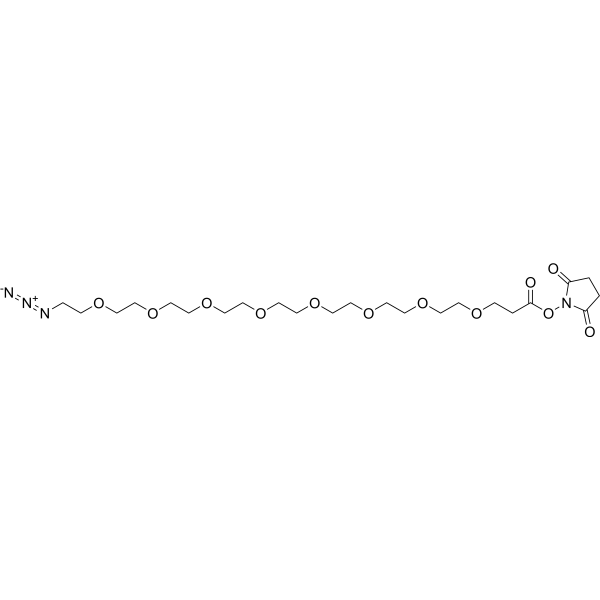
-
- HY-130474
-
|
|
ADC Linker
PROTAC Linkers
|
Cancer
|
|
Azido-PEG6-NHS ester is a cleavable 6 unit PEG ADC linker used in the synthesis of antibody-drug conjugates (ADCs) . Azido-PEG6-NHS ester is also a PEG- and Alkyl/ether based PROTAC linker that can be used in the synthesis of PROTACs . Azido-PEG6-NHS ester is a click chemistry reagent, it contains an Azide group and can undergo copper-catalyzed azide-alkyne cycloaddition reaction (CuAAc) with molecules containing Alkyne groups. Strain-promoted alkyne-azide cycloaddition (SPAAC) can also occur with molecules containing DBCO or BCN groups.
|
-
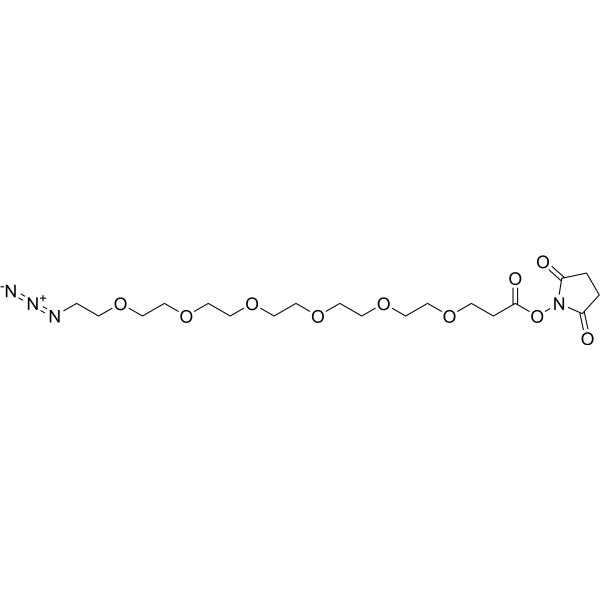
-
- HY-N11903
-
|
|
Others
|
Others
|
|
Acuminatin is a new bis-phenylpropide can be isolated from Magnolia acuminata L .
|
-
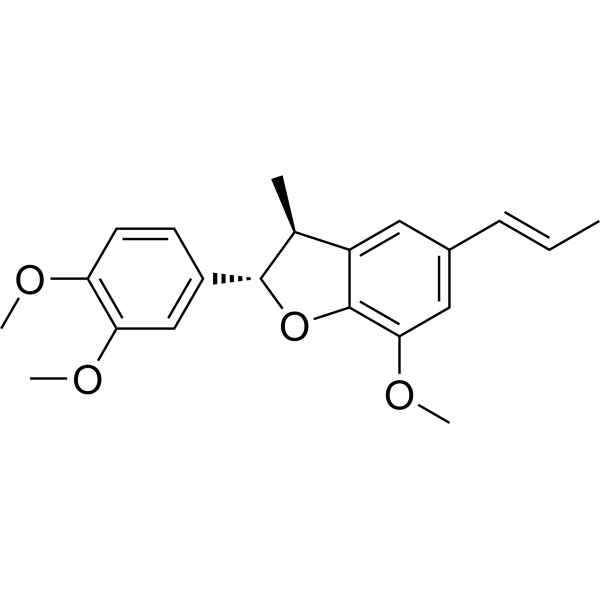
-
- HY-Y0339S
-
-
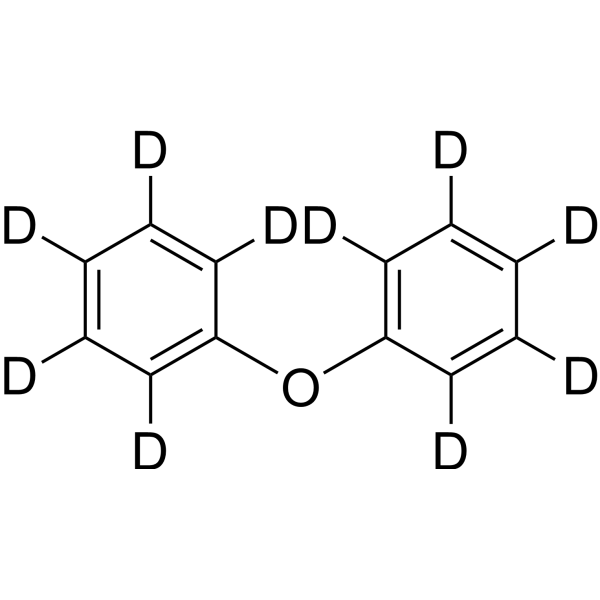
-
- HY-145769
-
|
|
PD-1/PD-L1
|
Cancer
|
|
N2S2-CBMBC, an N2S2 bromo-benzyl ether derivative, acts as a ligand and use 99mTc-labelled complexes 99mTc-N2S2-CBMBC can be used as an imaging agent to be applied to the aspect of detecting PD-L1 expression, realize the real-time, comprehensive and convenient detection of the PD-L1 level of tumors, and overcome the defects of an immunohistochemical method .
|
-
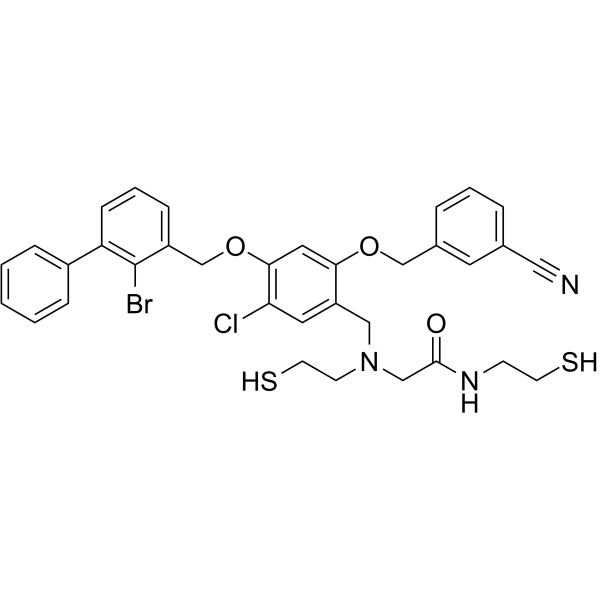
-
- HY-162022
-
|
|
Enterovirus
Virus Protease
|
Infection
|
|
BTA-188, a pyridazinyl oxime ether, is an orally active, potent inhibitor of rhinoviruses (HRV) and enterovirus (EV) 71 in vitro. BTA-188 inhibits HRV-2 replication with an IC50 of 0.8 nM and an IC90 of 11 nM. BTA-188 inhibits enterovirus with an IC50 of 82 and an IC90 of 109 nM. BTA-188 is a potential chemotherapeutic agent for infections caused by the viruses in the Picornaviridae .
|
-

-
- HY-42618
-
|
|
ADC Linker
PROTAC Linkers
|
Cancer
|
|
Azido-PEG4-CH2-Boc is a cleavable 4 unit PEG ADC linker used in the synthesis of antibody-drug conjugates (ADCs) . Azido-PEG4-CH2-Boc is also a PEG- and Alkyl/ether-based PROTAC linker that can be used in the synthesis of PROTACs . Azido-PEG4-CH2-Boc is a click chemistry reagent, it contains an Azide group and can undergo copper-catalyzed azide-alkyne cycloaddition reaction (CuAAc) with molecules containing Alkyne groups. Strain-promoted alkyne-azide cycloaddition (SPAAC) can also occur with molecules containing DBCO or BCN groups.
|
-

-
- HY-130985
-
|
|
PROTAC Linkers
|
Cancer
|
|
9-Decyn-1-ol is an alkyl/ether-based PROTAC linker that can be used in the synthesis of PROTACs. 9-Decyn-1-ol can be used to conjugate GDC-0068 with Lenalidomide to generate INY-03-041. INY-03-041 is a potent, highly selective and PROTAC-based pan-Akt degrader. INY-03-041 inhibits Akt1, Akt2 and Akt3 with IC50s of 2.0 nM, 6.8 nM and 3.5 nM, respectively . 9-Decyn-1-ol is a click chemistry reagent, it contains an Alkyne group and can undergo copper-catalyzed azide-alkyne cycloaddition (CuAAc) with molecules containing Azide groups.
|
-
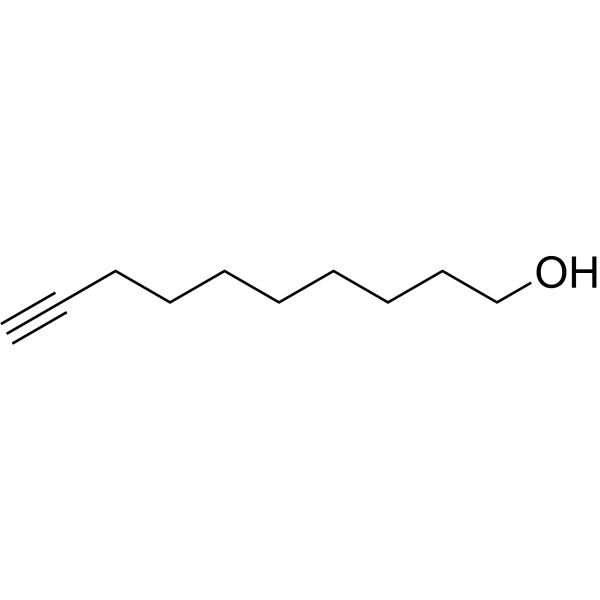
-
- HY-42489
-
|
|
ADC Linker
PROTAC Linkers
|
Cancer
|
|
N3-PEG3-CH2CH2-Boc is a cleavable 3 unit PEG ADC linker used in the synthesis of antibody-drug conjugates (ADCs) . N3-PEG3-CH2CH2-Boc is also a PEG- and Alkyl/ether-based PROTAC linker that can be used in the synthesis of PROTACs . N3-PEG3-CH2CH2-Boc is a click chemistry reagent, it contains an Azide group and can undergo copper-catalyzed azide-alkyne cycloaddition reaction (CuAAc) with molecules containing Alkyne groups. Strain-promoted alkyne-azide cycloaddition (SPAAC) can also occur with molecules containing DBCO or BCN groups.
|
-
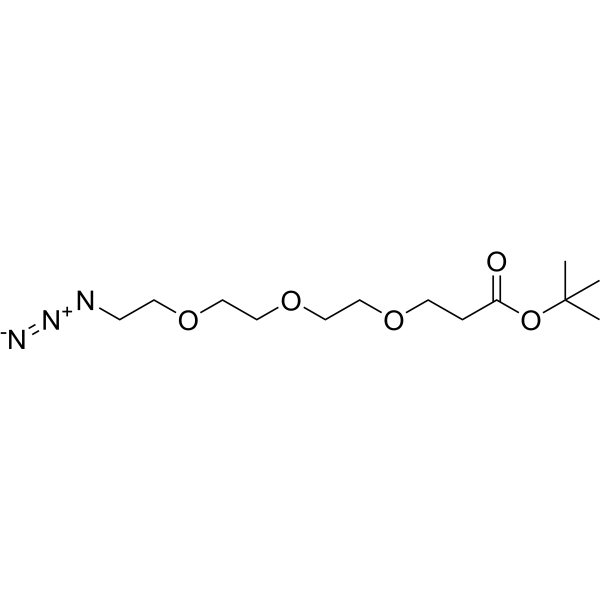
-
- HY-W585866S
-
-

-
- HY-W008585
-
-
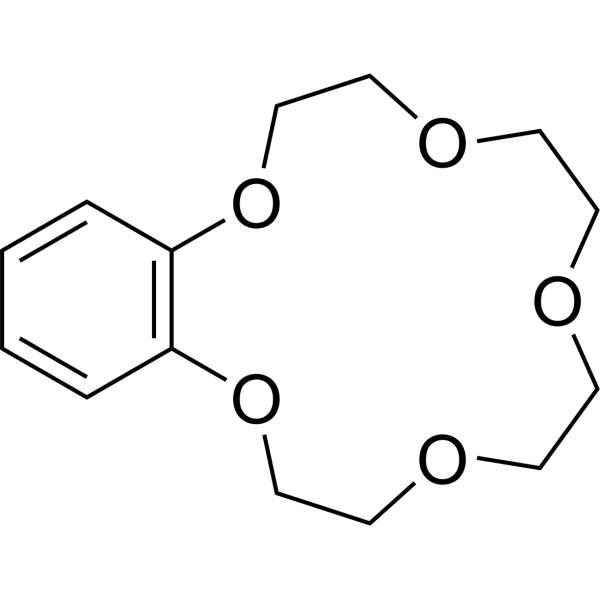
-
- HY-N9203
-
|
|
Bacterial
|
Infection
|
|
Pinobanksin 5-methyl ether can be isolated from Georgian Propolises. Pinobanksin 5-methyl ether has anti-helicobacter activity. Pinobanksin 5-methyl ether is effective inducer of CYP9Q enzyme .
|
-
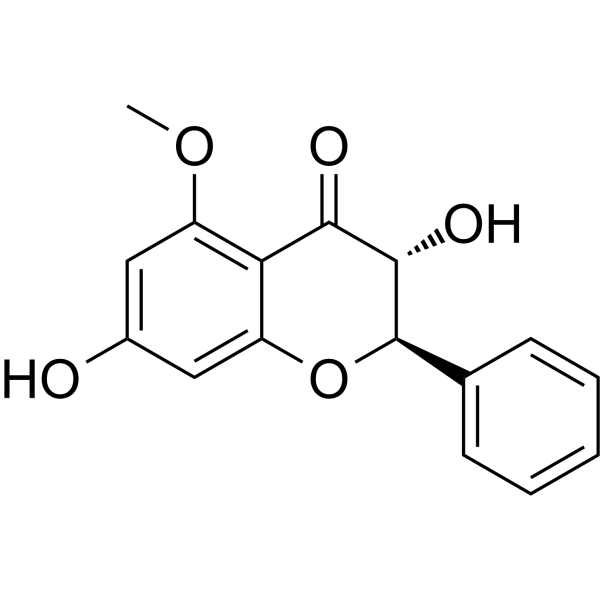
-
- HY-W103245
-
|
B18C6
|
Biochemical Assay Reagents
|
Others
|
|
Benzo-18-crown-6-ether (B18C6) is an organic compound that can be used to prepare stable microcapsule responsive layers for further assembly into bilayer microcapsules. For example, 18-Crown-6-ether is used to prepare the response layer and is coated with a G-quadruplex cross-linked hydrogel layer stabilized by K +; when Mg 2+ ions are present, 18-Crown-6-ether and K + ions can respectively Dissociates and locks with the G-quadruplex cross-linked layer, thereby achieving switchable controlled release of the load .
|
-
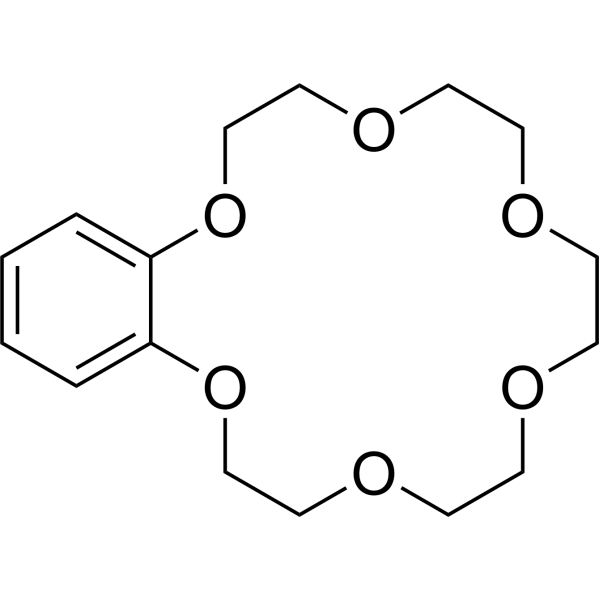
-
- HY-112057
-
|
LY267108
|
Drug Metabolite
|
Others
|
|
Pseudoerythromycin A enol ether (LY267108) is a degradation product of Erythromycin. Pseudoerythromycin A enol ether has no significant antimicrobial activity .
|
-
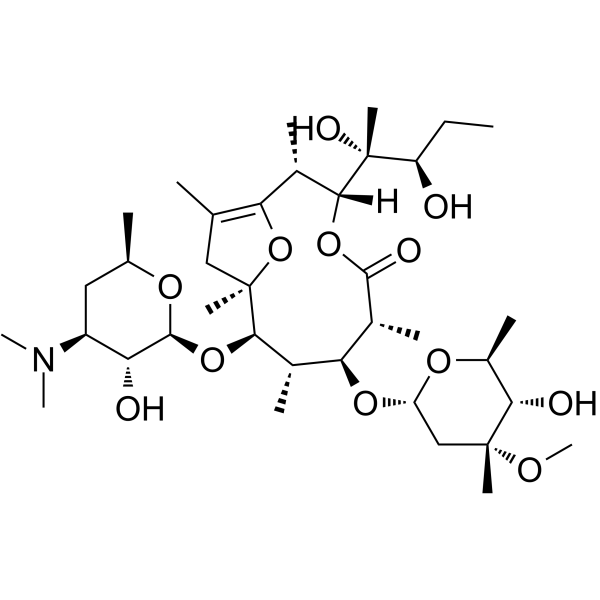
-
- HY-N3754
-
|
|
Parasite
|
Infection
|
|
Dihydropinosylvin monomethyl ether is a natrual compound with nematicidal activity. Dihydropinosylvin monomethyl ether can inhibit pine wood nematodes infection .
|
-
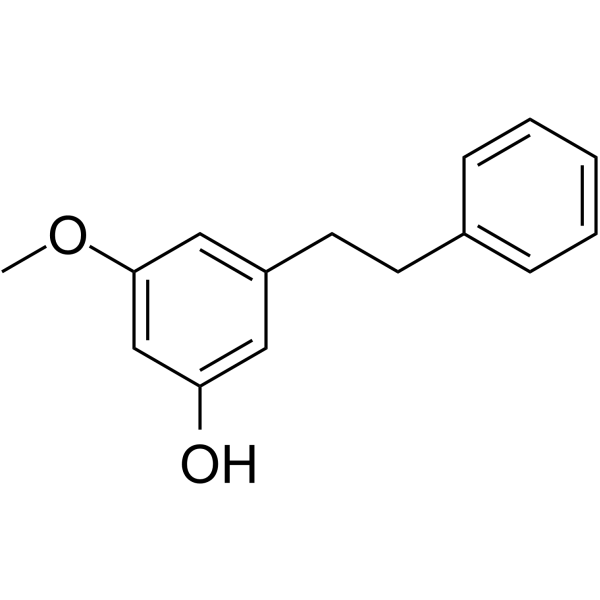
-
- HY-W014394
-
|
|
Others
|
Cardiovascular Disease
|
|
Vanillyl butyl ether is a major contributor to the characteristic flavor and fragrance of vanilla. Vanillyl butyl ether is one of the eco-friendly and nontoxic substances. Vanillyl butyl ether has been proposed as a mild warming agent providing a warming sensation and enhancing the blood circulation .
|
-
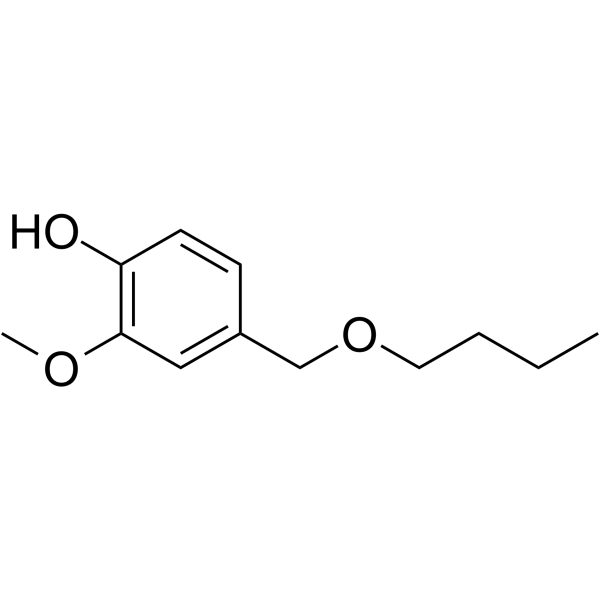
-
- HY-N12274
-
|
|
Others
|
Others
|
|
Quercetin 5,3′-dimethyl ether is a kind of flavonoid. Quercetin 5,3′-dimethyl ether can be isolated from Combretum erythrophyllum (Combretaceae). Quercetin 5,3′-dimethyl ether has anti-inflammatory activity and antibacterial activity .
|
-
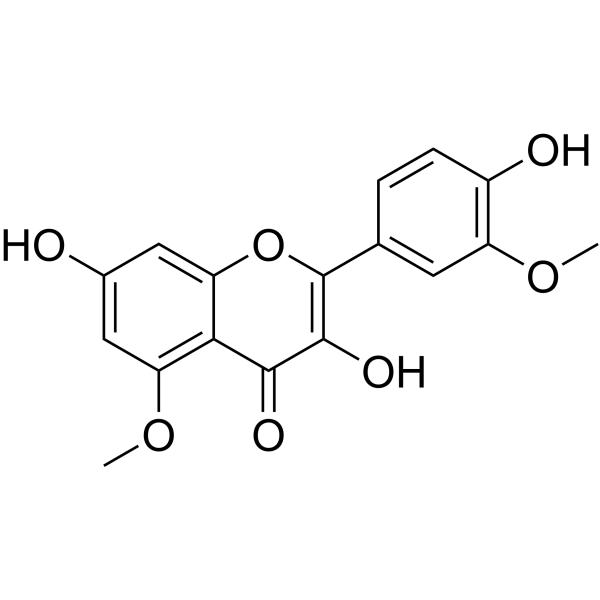
-
- HY-D0180
-
|
18C6; 1,4,7,10,13,16-Hexaoxacyclooctadecane
|
Biochemical Assay Reagents
|
Others
|
|
18-Crown-6-ether (18C6; 1,4,7,10,13,16-Hexaoxacyclooctadecane) is an organic compound that can be used to prepare stable microcapsule responsive layers for further assembly into bilayer microcapsules. For example, 18-Crown-6-ether is used to prepare the response layer and is coated with a G-quadruplex cross-linked hydrogel layer stabilized by K +; when Mg 2+ ions are present, 18-Crown-6-ether and K + ions can respectively Dissociates and locks with the G-quadruplex cross-linked layer, thereby achieving switchable controlled release of the load .
|
-
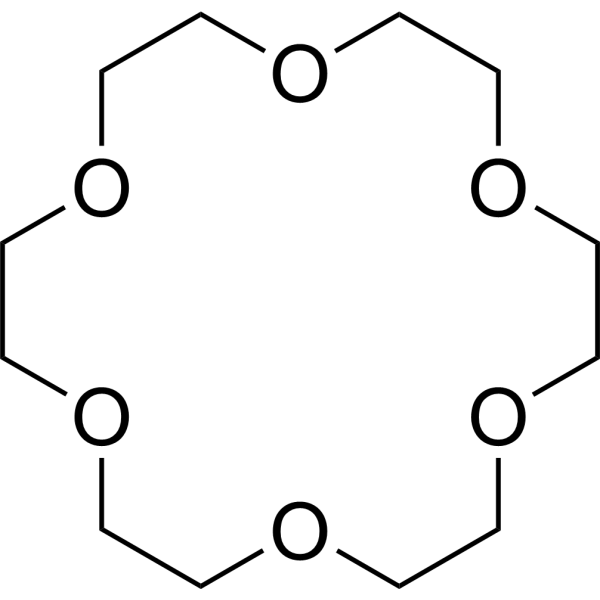
-
- HY-W049970
-
|
|
Bacterial
|
Infection
|
|
Carvacrol methyl ether, a Carvacrol analog, can be isolated from plant volatile oil. Carvacrol methyl ether exhibits antibacterial activity .
|
-

-
- HY-W250183B
-
|
Polyethylene glycol octadecyl ether (n~20)
|
Liposome
|
Others
|
|
Polyoxyethylene (20) stearyl ether (Polyethylene glycol octadecyl ether) is a polyethylene glycolated lipid surfactant that can be used in the formation and stabilization studies of nanoparticles .
|
-
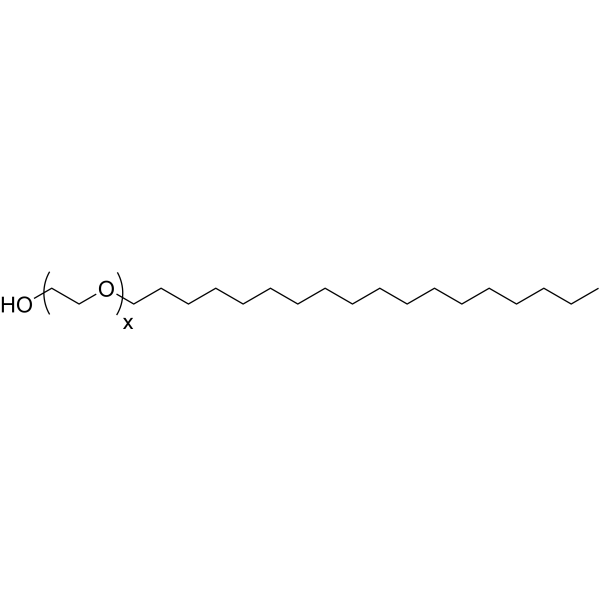
-
- HY-W250171
-
|
Polyoxyethylene (10) cetyl ether
|
Biochemical Assay Reagents
|
Others
|
|
Octaethylene glycol monohexadecyl ether, is a nonionic surfactant commonly used in various industrial and research applications. Octaethylene glycol monohexadecyl ether belongs to the family of polyethylene glycol (PEG) ethers with a hydrophilic head and lipophilic tail, suitable for use in lotions, detergents and solubilizers. Octaethylene glycol monohexadecyl ether is particularly useful in the study of membrane proteins, where it is used to solubilize and stabilize proteins for structural analysis techniques. In addition, Octaethylene glycol monohexadecyl ether has the ability to interact with and penetrate cell membranes, so it has potential applications in drug delivery and other medical fields.
|
-
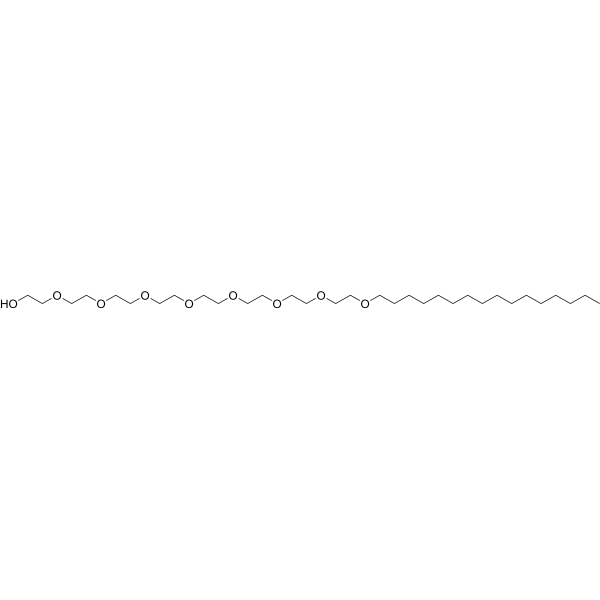
-
- HY-D0147
-
|
Pentoxyresorufin
|
Bacterial
|
Infection
|
|
Resorufin pentyl ether (Pentoxyresorufin) is a Resazurin (HY-111391) analogue. Resorufin pentyl ether can function as a substrate probe to characterize and differentiate between a variety of inducers of cytochromes P-450. Resorufin pentyl ether has bactericidal activity against N. gonorrhoeae .
|
-
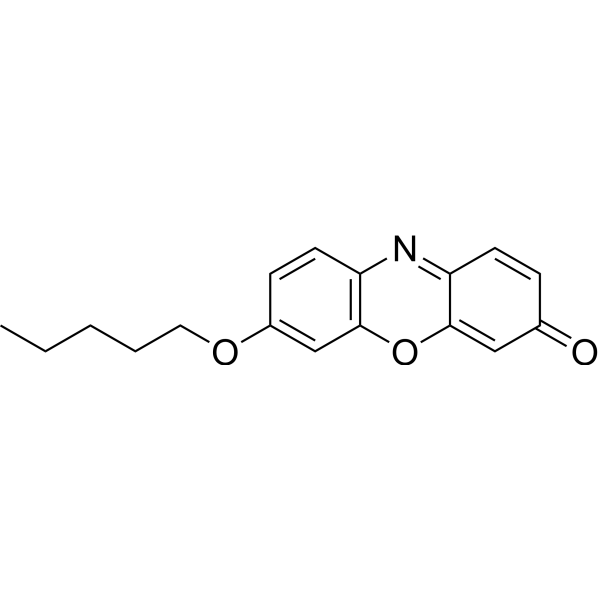
-
- HY-N8930
-
|
|
Others
|
Others
|
|
Eupatorin-5-methyl ether (TMF) can be isolated from Orthosiphon stamineus. Eupatorin-5-methyl ether is a kind of flavonoid compound. Eupatorin-5-methyl ether inhibits NO production (IC50 5.5 μM).
|
-
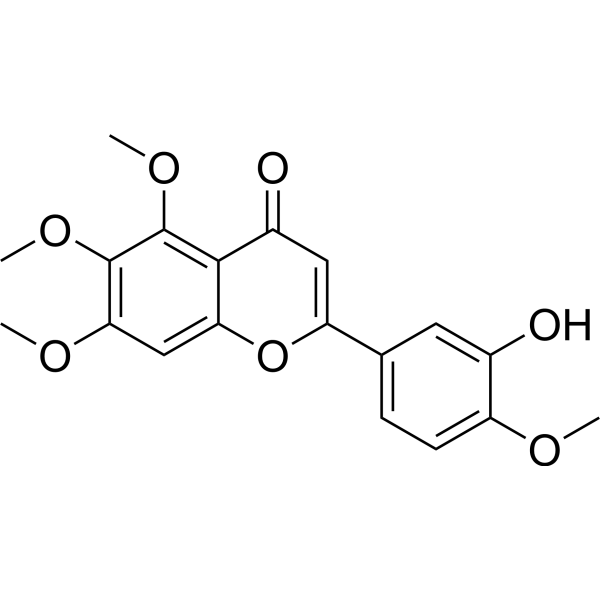
-
- HY-N1152
-
|
|
Others
|
Inflammation/Immunology
|
|
threo-Guaiacylglycerol beta-coniferyl ether is a lignan that can inhibit NO production. threo-Guaiacylglycerol beta-coniferyl ether exhibits anti-neuroinflammatory activities .
|
-

-
- HY-110014
-
|
|
Cannabinoid Receptor
|
Neurological Disease
|
|
Noladin ether is a potent and selective agonist of cannabinoid CB1 receptor, with a Ki of 21.2 nM. Noladin ether can cause hypothermia, intestinal immobility, and mild antinociception .
|
-
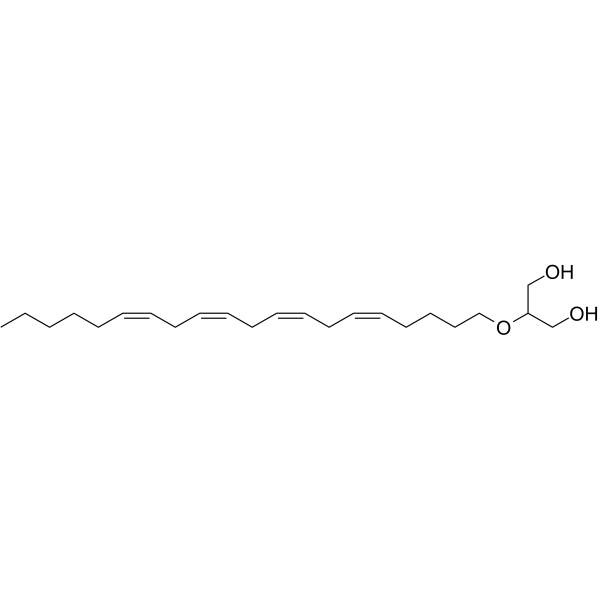
-
- HY-D0144
-
|
Methoxyresorufin
|
Cytochrome P450
|
Others
|
|
Resorufin methyl ether (Methoxyresorufin) is a cytochrome P450 fluorometric substrate . Resorufin methyl ether is a relatively specific substrate for CYP1A2 activity in rodents .
|
-
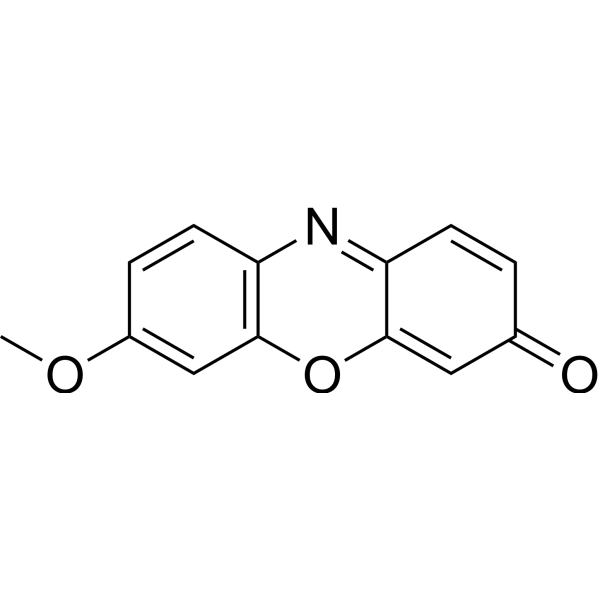
-
- HY-D1904
-
|
|
Fluorescent Dye
|
Others
|
|
D-Luciferin 6'-methyl ether sodium salt is a firefly luciferase inhibitor. D-Luciferin 6'-methyl ether sodium salt is a cofactor in Luc-catalyzed synthesis of dinucleoside polyphosphates .
|
-
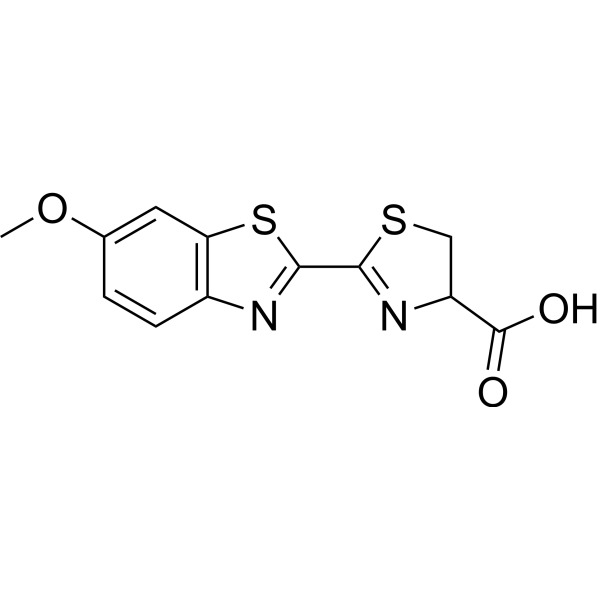
-
- HY-W250183C
-
|
Polyethylene glycol octadecyl ether (n=2)
|
Biochemical Assay Reagents
|
Others
|
|
Polyoxyethylene (2) stearyl ether (Polyethylene glycol octadecyl ether, n=2) is a biochemical reagent that can be used as a biological material or organic compound for life science related research .
|
-
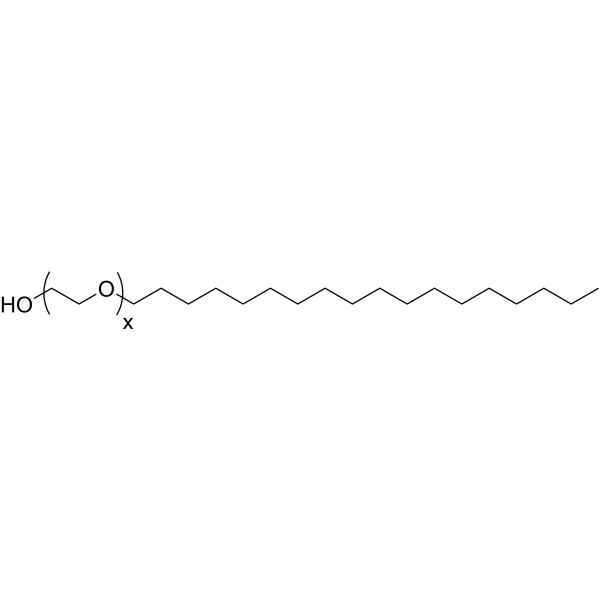
-
- HY-N4314
-
|
4',5,6,7-Tetramethoxyflavone
|
Bacterial
|
Infection
Inflammation/Immunology
|
|
Scutellarein tetramethyl ether (4',5,6,7-Tetramethoxyflavone) is a bioactive component of Siam weed extract. Scutellarein tetramethyl ether (4',5,6,7-Tetramethoxyflavone) exhibits anti-inflammatory activity through NF-κB pathway . Scutellarein tetramethyl ether (4',5,6,7-Tetramethoxyflavone) modulats of bacterial agent resistance via efflux pump inhibition . Scutellarein tetramethyl ether (4',5,6,7-Tetramethoxyflavone) can enhance blood coagulation .
|
-
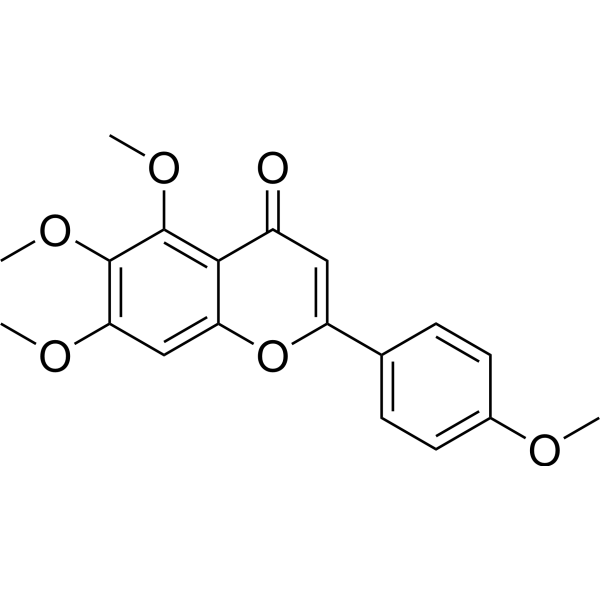
-
- HY-W250178
-
|
|
Biochemical Assay Reagents
|
Others
|
|
Octaethylene glycol monodecyl ether, is a nonionic surfactant commonly used in various industrial and research applications. It belongs to the family of polyethylene glycol (PEG) ethers with a hydrophilic head and lipophilic tail and is suitable for use in lotions, detergents and solubilizers. Octaethylene glycol monodecyl ether is particularly useful in the study of membrane proteins, where it is used to solubilize and stabilize proteins for structural analysis techniques. In addition, Octaethylene glycol monodecyl ether has the ability to interact with and penetrate cell membranes, so it has potential applications in drug delivery and other medical fields.
|
-
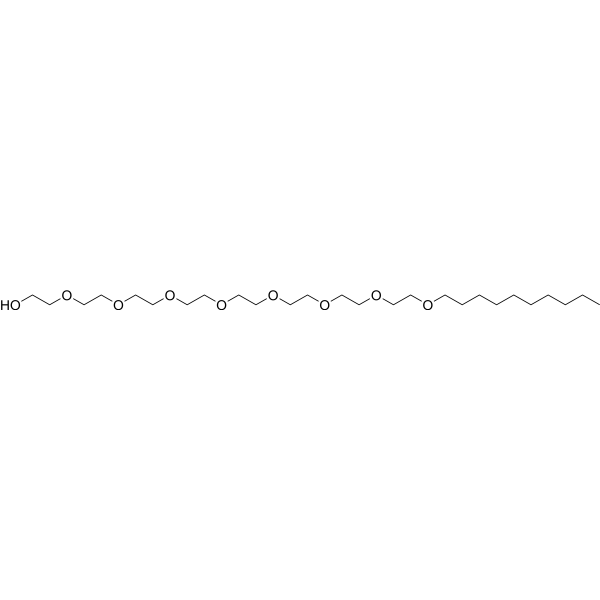
-
- HY-W250195
-
|
|
Biochemical Assay Reagents
|
Others
|
|
Hexaethylene glycol monotetradecyl ether is a kind of nonionic surfactant with hydrophilic head and lipophilic tail. It belongs to the class of polyethylene glycol (PEG) ethers and is widely used in different industrial and research applications. Due to its unique properties, Hexaethylene glycol monotetradecyl ether is commonly used in lotions, detergents and solubilizers. It is particularly useful in the study of membrane proteins and can be used to stabilize and solubilize proteins for use in structural analysis techniques. Due to its moisturizing and emulsifying properties, Hexaethylene glycol monotetradecyl ether is also used in personal care and cosmetics.
|
-
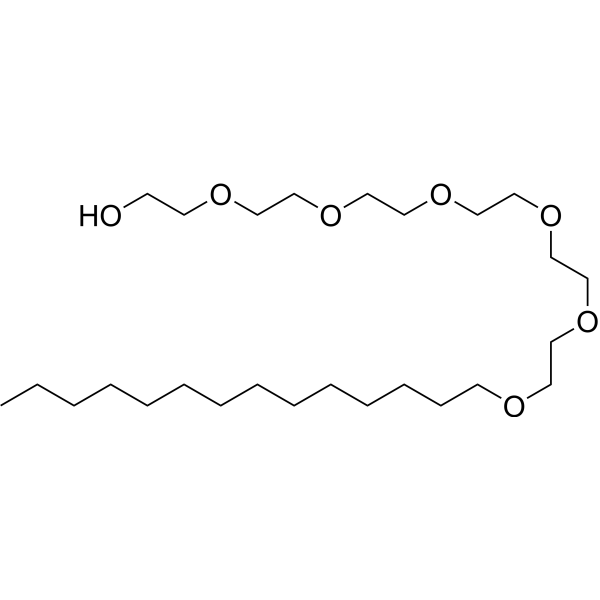
-
- HY-W250176
-
|
|
Biochemical Assay Reagents
|
Others
|
|
Polyethylene glycol trimethylnonyl ether, is a nonionic surfactant commonly used in various industrial and research applications. It belongs to the family of polyethylene glycol (PEG) ethers with a hydrophilic head and lipophilic tail and is suitable for use in lotions, detergents and solubilizers. Polyethylene glycol trimethylnonyl ether is particularly useful in protein chemistry, where it is used to solubilize and stabilize proteins, such as membrane proteins, for structural analysis techniques. In addition, Polyethylene glycol trimethylnonyl ether has potential applications in drug delivery and other medical fields due to its ability to interact with and penetrate cell membranes.
|
-
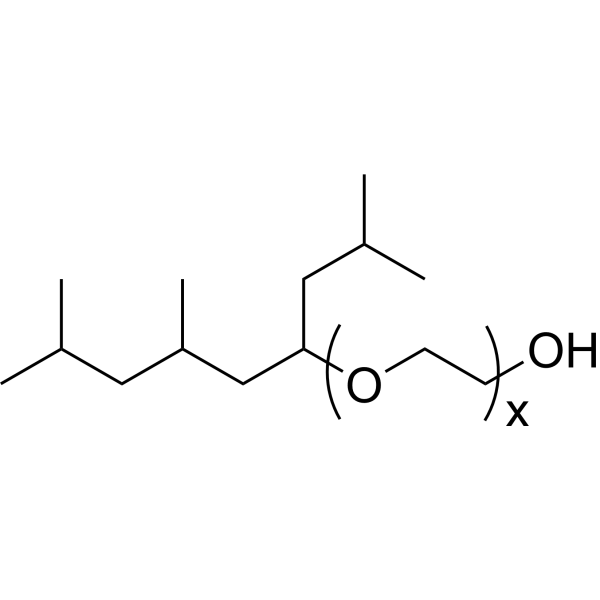
-
- HY-139415
-
-
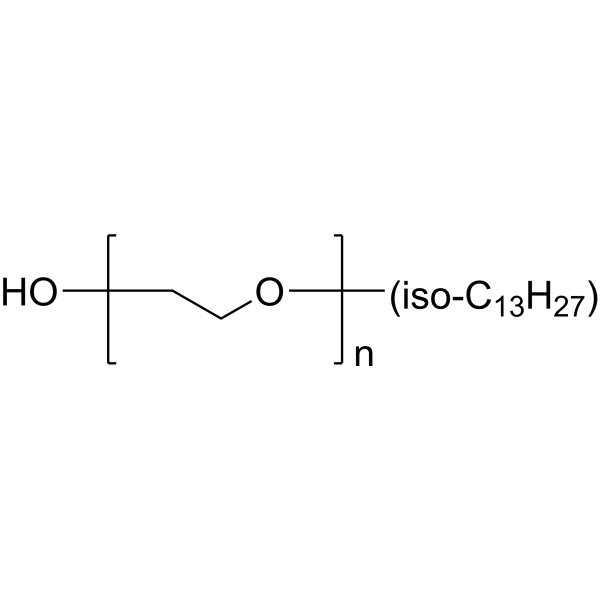
-
- HY-N9051
-
|
|
Glucosidase
|
Inflammation/Immunology
Cancer
|
|
6-Prenylquercetin-3-Me ether is a natural product that can be extracted from G. uralensis leaves.
6-Prenylquercetin-3-Me ether has radical scavenging activity toward DPPH. 6-Prenylquercetin-3-Me ether also has inhibitory activity against α-glucosidase .
|
-

- HY-W250183
-
|
Polyethylene glycol octadecyl ether (n~10, average Mn~711)
|
Biochemical Assay Reagents
|
Others
|
|
Polyoxyethylene (10) stearyl ether (Polyethylene glycol octadecyl ether, n~10, average Mn~711) is a biochemical reagent that can be used as a biological material or organic compound for life science related research.
|
-
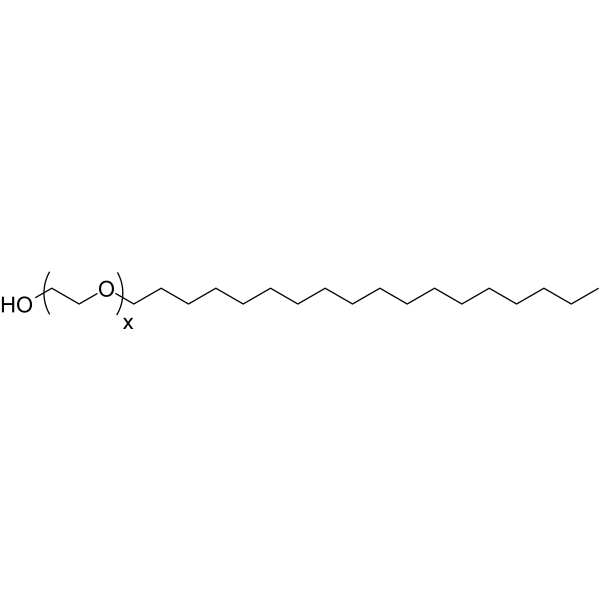
- HY-N11906
-
|
Syringaresinol dimethyl ether; Lirioresinol C dimethyl ether
|
Others
|
Inflammation/Immunology
|
|
Diayangambin (Syringaresinol dimethyl ether; Lirioresinol C dimethyl ether) is a cell proliferation inhibitor with an IC50 value of 1.5 μM against human monocytes. Diayangambin also has immunosuppressive and anti-inflammatory effects .
|
-
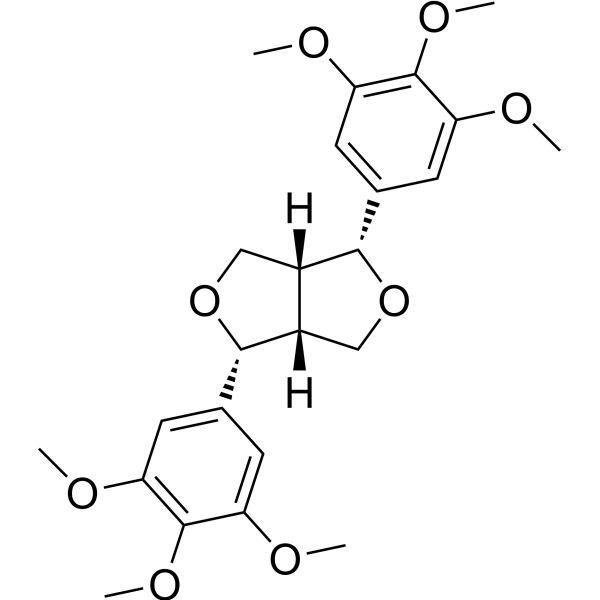
- HY-146626S
-
|
|
Isotope-Labeled Compounds
|
Cancer
|
|
1,3,5(10)-Estratriene-17α-ethyl-3,17β-diol 3-methyl ether-d5 is the deuterium labeled 1,3,5(10)-Estratriene-17α-ethyl-3,17β-diol 3-methyl ether[1].
|
-
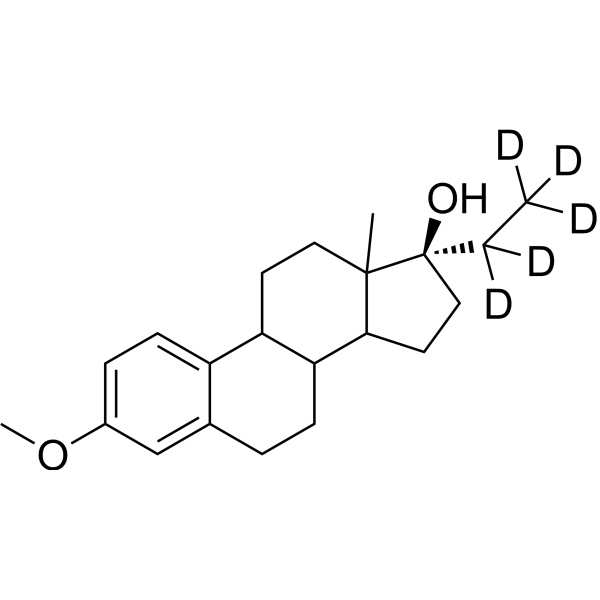
- HY-N1789
-
|
|
Others
|
Others
|
|
Kaempferol-7,4'-dimethyl ether is a PTP1B inhibitor, and also can inhibit the production of NO. Kaempferol-7,4'-dimethyl ether shows the inhibition rate of 46.1% at 100 μM. Kaempferol-7,4'-dimethyl ether inhibits PTP1B activity with IC50 value of 16.92 μM .
|
-
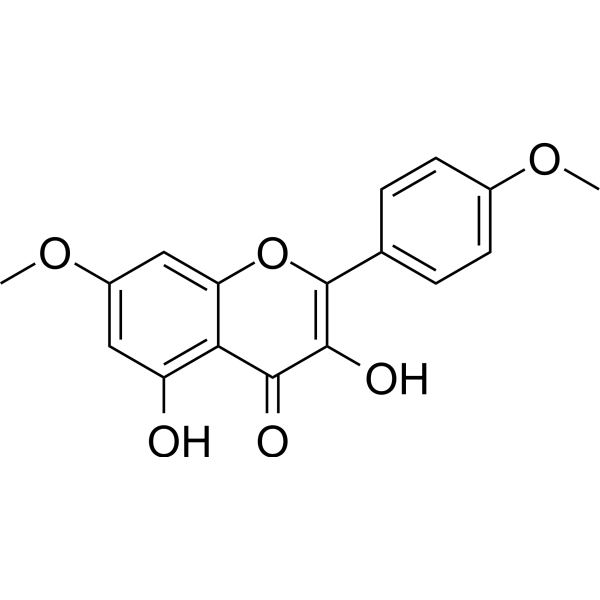
- HY-118427
-
|
|
Parasite
Endogenous Metabolite
|
Infection
Cancer
|
|
Asterriquinol D dimethyl ether is a fungal metabolite, which can inhibit mouse myeloma NS-1 cell lines with an IC50 of 28 μg/mL. Asterriquinol D dimethyl ether also inhibits Tritrichomonas foetus .
|
-
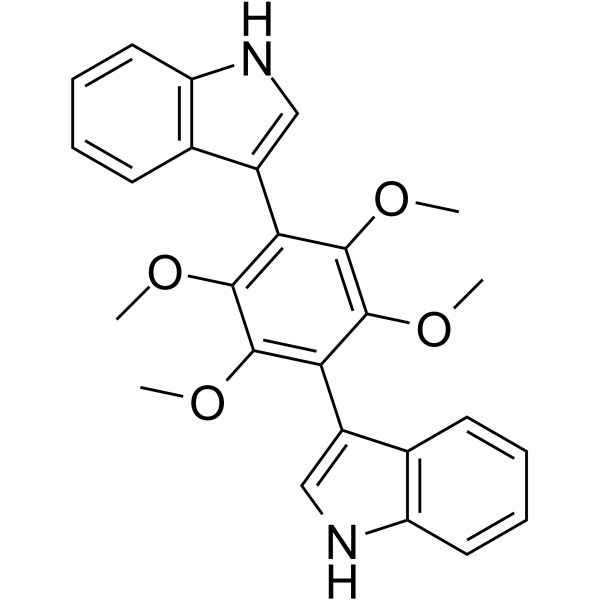
- HY-147170
-
|
|
Fluorescent Dye
|
Others
|
|
(1,1'-Dipyrenyl)dimethyl ether exhibits intramolecular excimer fluorescence in competition with fluorescence from the locally excited pyrene chromophore. (1,1'-Dipyrenyl)dimethyl ether is soluble in synthetic phospholipid membranes .
|
-
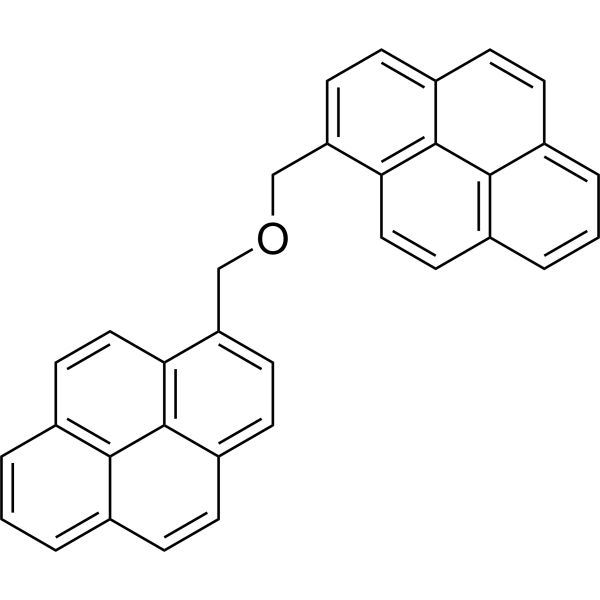
- HY-101314
-
|
Tropine 4-chlorobenzhydryl ether hydrochloride
|
Dopamine Transporter
|
Neurological Disease
|
|
3-CPMT (Tropine 4-chlorobenzhydryl ether hydrochloride) is a potent dopamine uptake inhibitor . 3-CPMT (Tropine 4-chlorobenzhydryl ether hydrochloride) acts as a potent long-acting antihistaminic agent .
|
-

- HY-W250183A
-
|
Polyethylene glycol octadecyl ether (n~100, average Mn~4670)
|
Biochemical Assay Reagents
|
Others
|
|
Polyoxyethylene (100) stearyl ether (Polyethylene glycol octadecyl ether, n~100, average Mn~4670) is a biochemical reagent that can be used as a biological material or organic compound for life science related research .
|
-
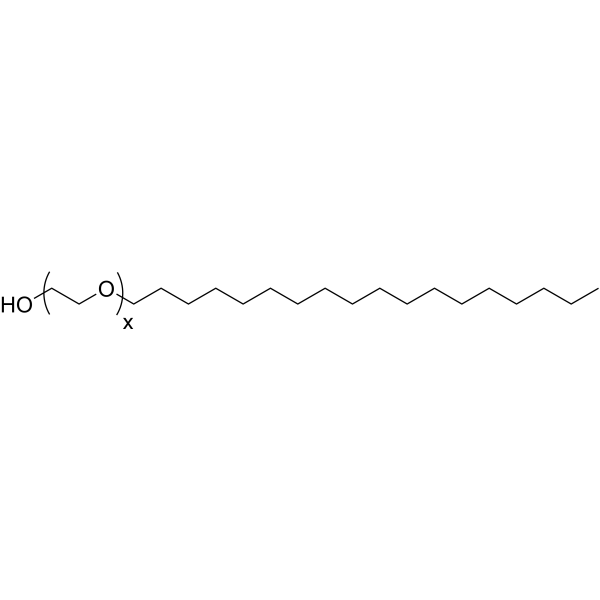
- HY-N2411
-
|
|
5-HT Receptor
|
Neurological Disease
|
|
Geissoschizine methyl ether, a major indole alkaloid found in Uncaria hook, is a major active component of Yokukansan with psychotropic effects. Geissoschizine methyl ether is potent 5-HT1A receptor agonist .
|
-
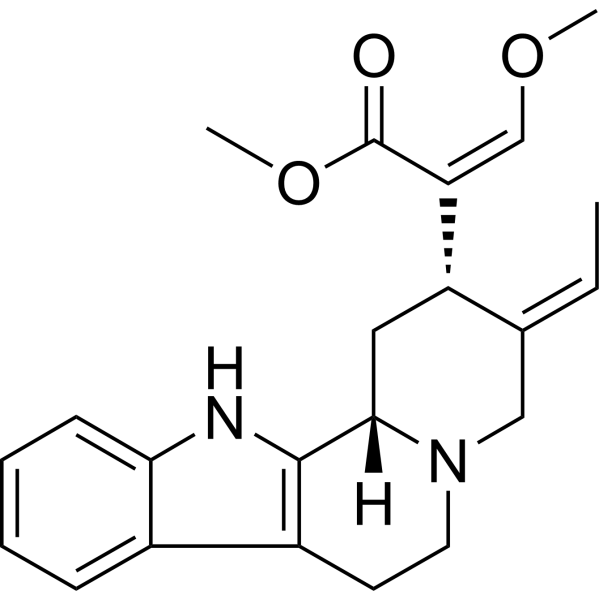
- HY-108294
-
|
Nonaoxyethylene monododecyl ether
|
Biochemical Assay Reagents
|
Others
|
|
Nonaethylene glycol monododecyl ether (Nonaoxyethylene monododecyl ether) is a nonionic surfactant and polyethylene glycol (PEG) detergent that can be used to form initial coalesced O/W emulsion droplets, as well as for protein separation and purification .
|
-
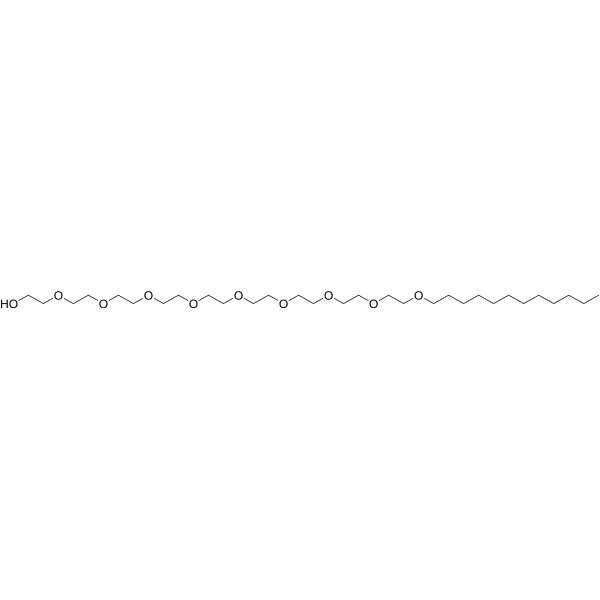
- HY-138941
-
|
C12E8
|
Influenza Virus
|
Infection
|
|
Octaethylene glycol monododecyl ether (C12E8) is an non-ionic detergent that can be used for membrane protein extraction. Octaethylene glycol monododecyl ether can solubilize the viral membrane of intact influenza virus .
|
-

- HY-N9166
-
|
|
Others
|
Others
|
|
erythro-Guaiacylglycerol-β-O-4'-dehydrodisinapyl ether (Compound 122) inhibits lettuce germination. erythro-Guaiacylglycerol-β-O-4'-dehydrodisinapyl ether can be isolated from Brassica fruticulosa .
|
-

- HY-W250179
-
|
Polyoxyethylene (6) cetyl ether
|
Biochemical Assay Reagents
|
Others
|
|
Hexaethylene glycol monohexadecyl ether, is a nonionic surfactant belonging to the polyethylene glycol (PEG) ether family. It has a hydrophilic head and a lipophilic tail, which makes it suitable for a wide range of applications. Specifically, Hexaethylene glycol monohexadecyl ether is commonly used in membrane protein research, for solubilization and stabilization of proteins, and for structural analysis techniques such as X-ray crystallography and electron microscopy. Additionally, Hexaethylene glycol monohexadecyl ether is used in a variety of other industrial and research applications, including drug delivery systems, nanotechnology, and diagnostic analysis. Its unique properties make it ideal for facilitating interactions between molecules with different physicochemical properties.
|
-

- HY-135584
-
|
|
Estrogen Receptor/ERR
|
|
|
Raloxifene 6-Monomethyl Ether (Compound 7) is a Raloxifene derivative that inhibits estrogen receptor α. Raloxifene 4-Monomethyl Ether inhibits MCF-7 cells with an IC50 of 250 nM and a pIC50 of 6.6 .
|
-
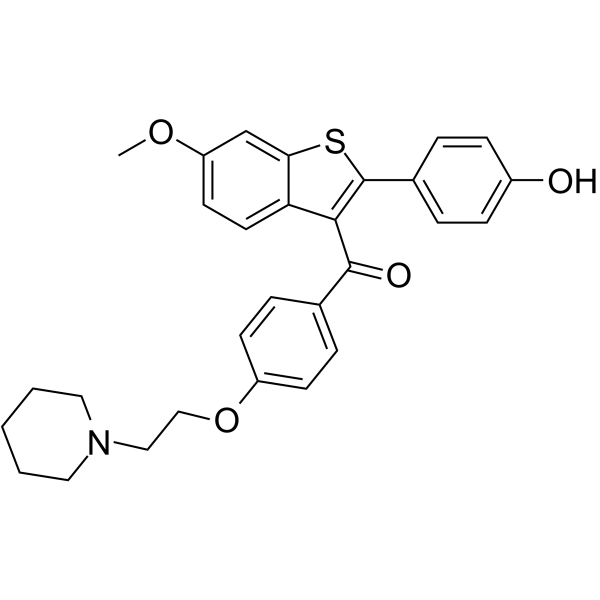
- HY-135590
-
|
|
Estrogen Receptor/ERR
|
|
|
Raloxifene 4-Monomethyl Ether (Compound 37) is a Raloxifene derivative that inhibits estrogen receptor α. Raloxifene 4-Monomethyl Ether inhibits MCF-7 cells with an IC50 of 1 μM and a pIC50 of 6 .
|
-
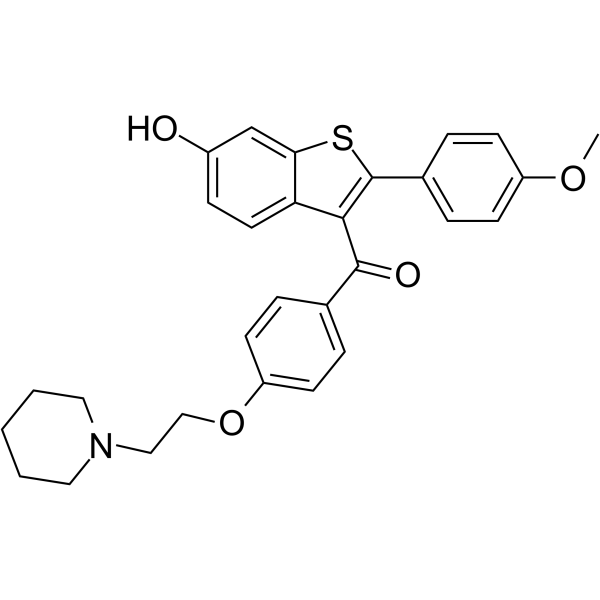
- HY-N12071
-
|
|
Others
|
Others
|
|
Lucidin-ω-Me ether (Compound 2) can be isolated from the roots of Knoxia valerianoides. Lucidin-ω-Me ether inhibits the advanced glycation end products (AGEs) formation in vitro(IC50: 62.79 μM) .
|
-
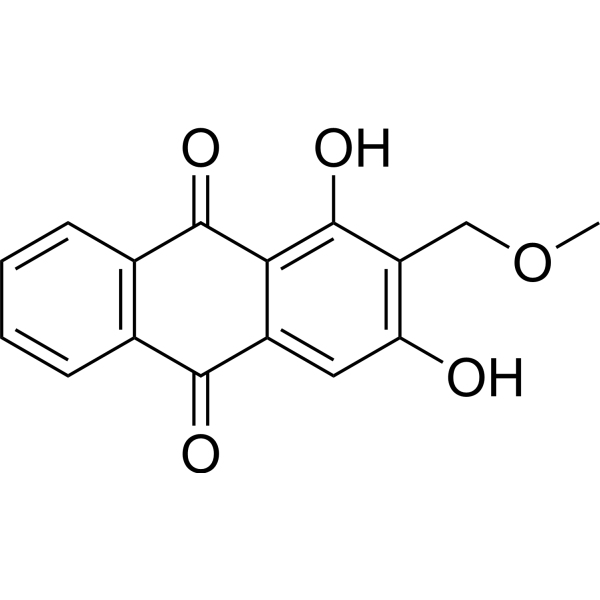
- HY-117061
-
|
|
Prostaglandin Receptor
|
Endocrinology
|
|
Prostaglandin F2α alcohol methyl ether is an alcohol methyl ether G protein-coupled receptor. Prostaglandin F2α is also a luteinizing hormone in sheep and may be a nociceptive mediator in the spinal cord .
|
-
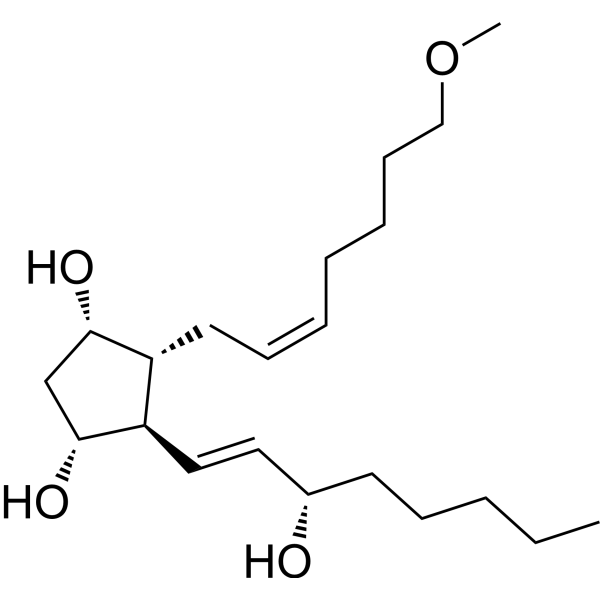
- HY-W009048
-
|
DCH18C6; Perhydrodibenzo-18-crown-6
|
Biochemical Assay Reagents
|
Others
|
|
Dicyclohexano-18-crown-6-ether selectively extracts lysine-rich cytochrome c proteins from other cationic proteins under weakly acidic and neutral conditions, demonstrating specificity in ligand-protein interactions .
|
-

- HY-149516
-
|
|
Others
|
Others
|
|
Human enteropeptidase-IN-3 is an enteropeptidase inhibitor. Human enteropeptidase-IN-3 exhibits enteropeptidase activity and long duration of inhibitory state. Human enteropeptidase-IN-3 can be used for intetinal digestive related diseases research .
|
-
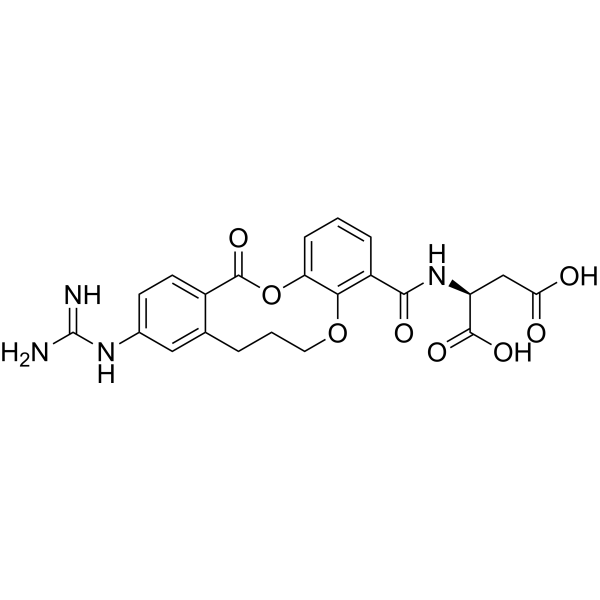
- HY-N3864
-
|
|
Others
|
Others
|
|
Erythro-Guaiacylglycerol beta-coniferyl ether (compound 22) can be isolated from the stems and leaves of mung beans. Erythro-Guaiacylglycerol beta-coniferyl ether inhibits α-Glycosidase activity with EC50 value of 18.71 μM .
|
-
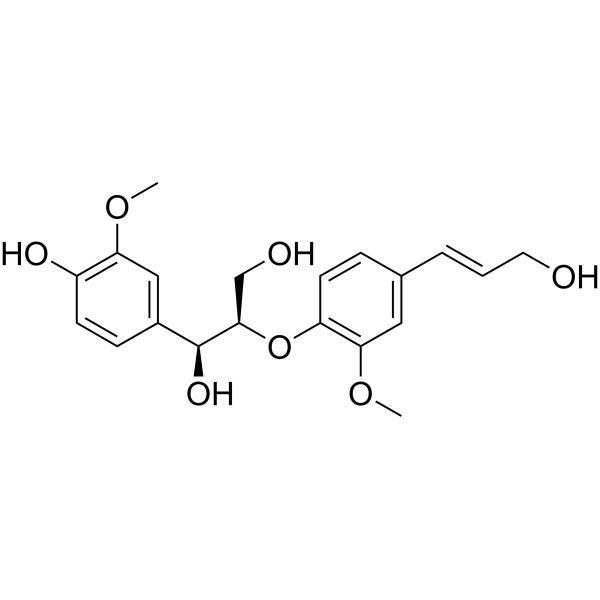
- HY-N9135
-
-
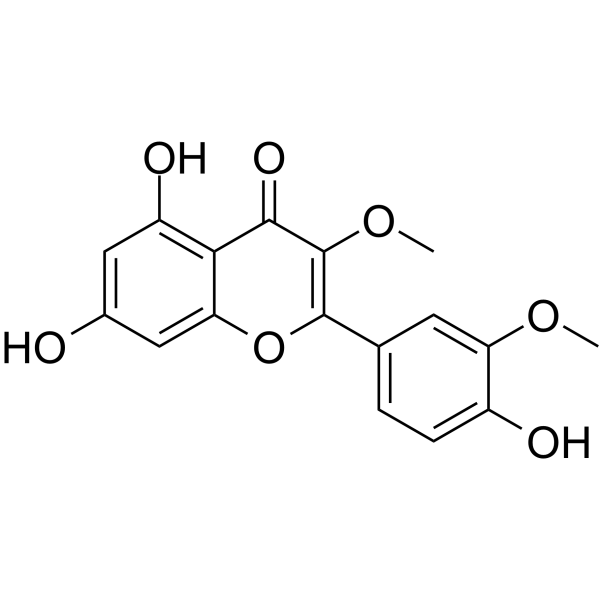
- HY-N3056
-
-
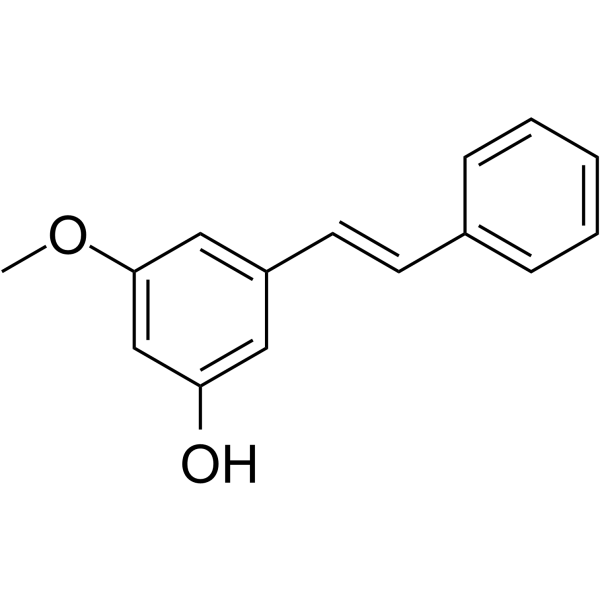
- HY-N1582
-
|
3,4′-Dimethylquercetin
|
Others
|
Cancer
|
|
Quercetin 3,4′-dimethyl ether (3,4′-Dimethylquercetin) is a dimethoxyflavone can be isolated from Combretum quadrangulare. Quercetin 3,4′-dimethyl ether overcomes TRAIL resistance by enhancing DR5 expression and has anti-tumor activity .
|
-
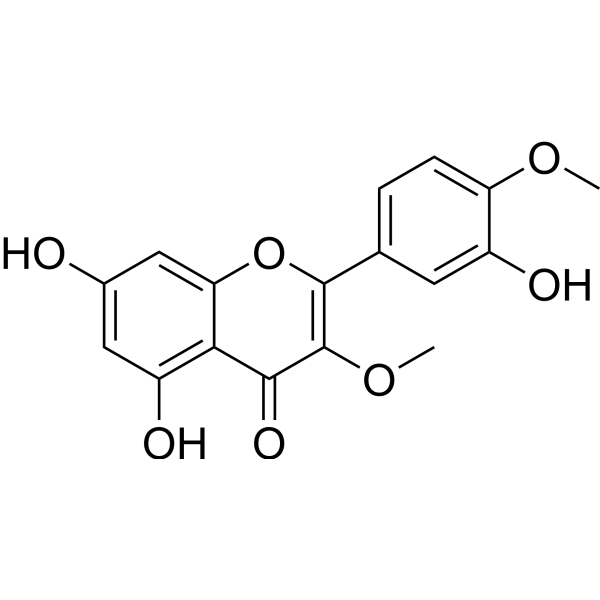
- HY-N2180
-
|
(+)-Eudesmin
|
PKC
PKA
|
Neurological Disease
|
|
Pinoresinol dimethyl ether ((+)-Eudesmin) is a non-phenolic furofuran lignan isolated from Magnolia biondii with neuritogenic activity. Pinoresinol dimethyl ether ((+)-Eudesmin) can induce neuritis outgrowth from PC12 cells by stimulating up-stream MAPK, PKC and PKA pathways .
|
-
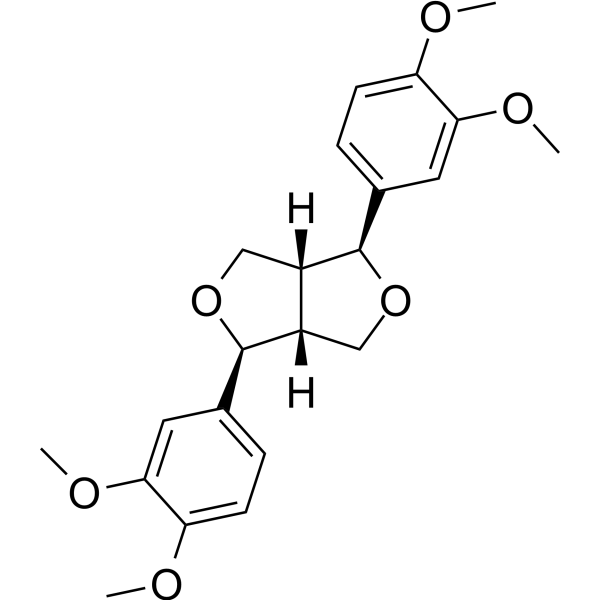
- HY-130458
-
|
EGS crosslinker
|
PROTAC Linkers
|
Cancer
|
|
EGNHS is an alkyl/ether-based PROTAC linker that can be used in the synthesis of PROTACs .
|
-
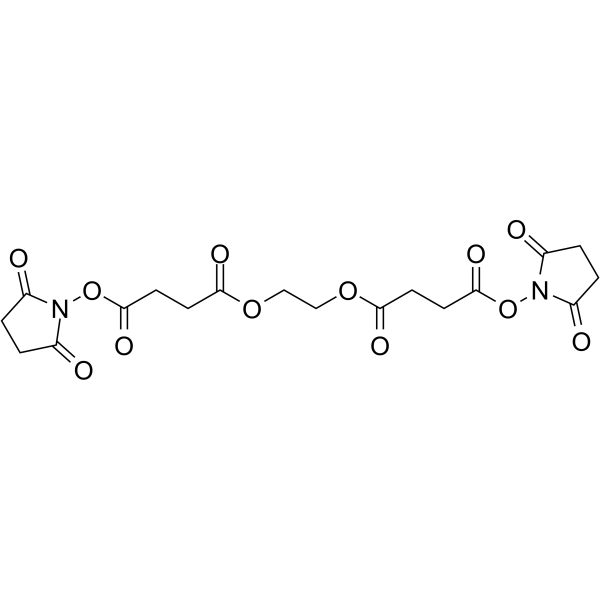
- HY-N8259
-
|
|
Others
|
Others
|
|
Obovatol is a biphenyl ether lignan isolated from the leaves of Magnolia obovata Thunb .
|
-
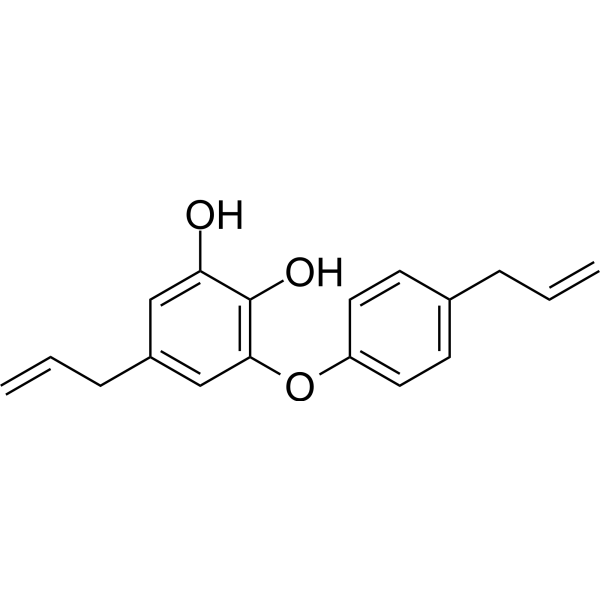
- HY-N1785
-
|
|
Others
|
Others
|
|
Hibiscetin heptamethyl ether is a natural product isolated from various medicinal plants .
|
-
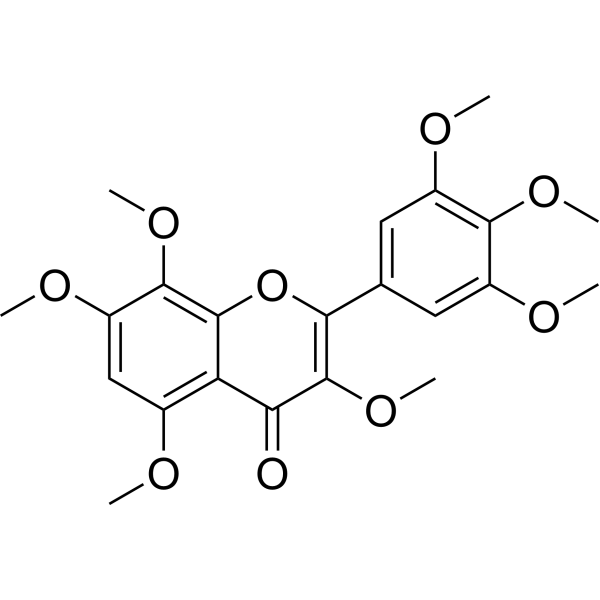
- HY-N11000
-
|
|
Others
|
Others
|
|
Heteropeucenin 7-methyl ether is a chromone that can be found in Harrisonia perforata .
|
-
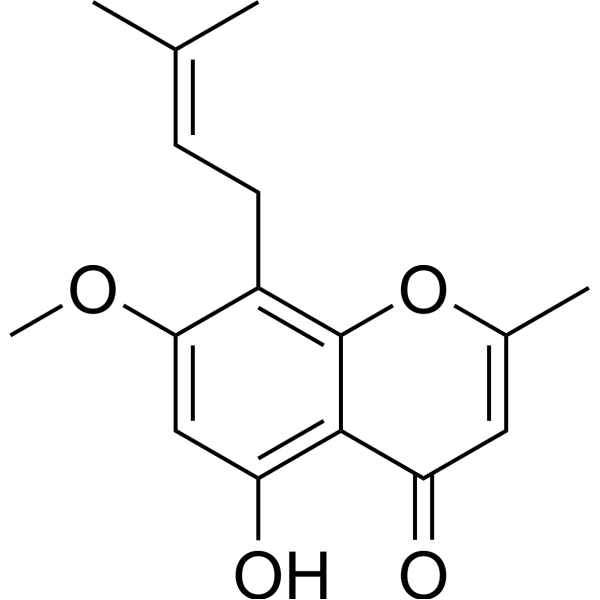
- HY-N3420
-
|
|
Others
|
Cancer
|
|
Koaburaside monomethyl ether is a phenolic glycoside that can be isolated from Averrhoa carambola L. .
|
-
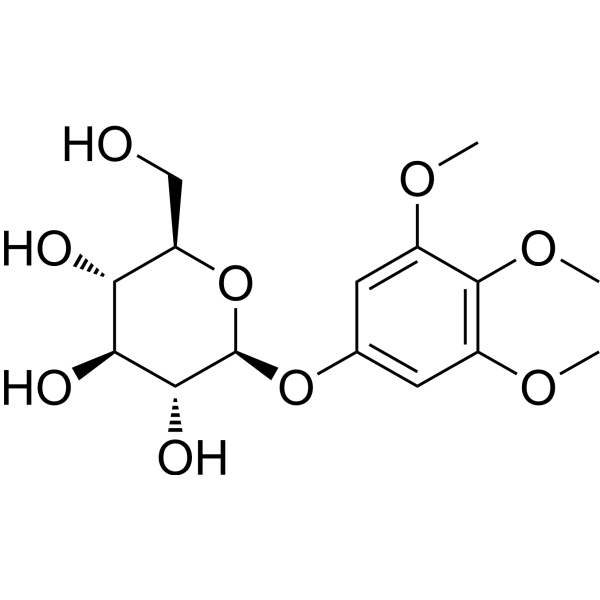
- HY-A0104
-
HPMC
3 Publications Verification
Hypromellose; (Hydroxypropyl)methyl cellulose; Celacol HPM 5000
|
Others
|
Others
|
|
HPMC (Hypromellose) is a hydrophilic, non-ionic cellulose ether used to form swellable-soluble matrices.
|
-
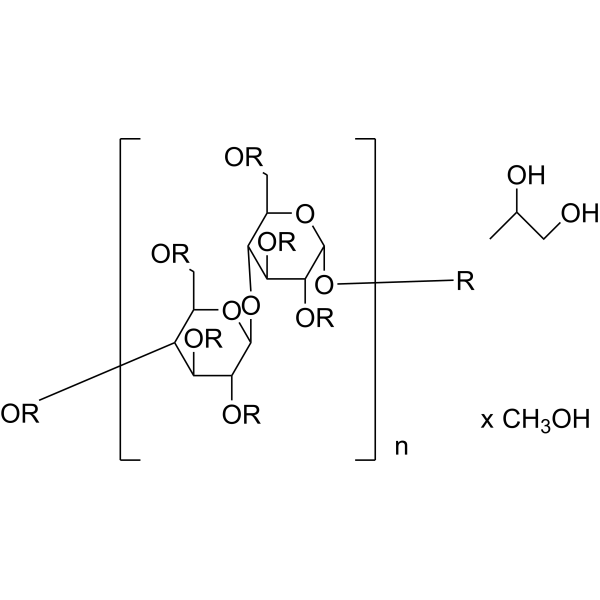
- HY-N4280
-
-
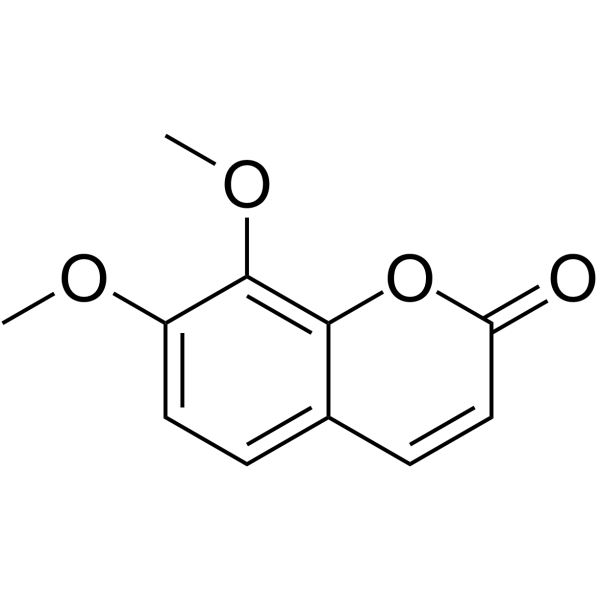
- HY-128927
-
|
|
ADC Linker
|
Cancer
|
|
Mc-Leu-Gly-Arg is a cleavable ether linker for antibody-drug conjugates (ADC) design.
|
-

- HY-119343
-
|
|
PROTAC Linkers
|
Cancer
|
|
Biotin-PFP ester is an alkyl/ether-based PROTAC linker that can be used in the synthesis of PROTACs .
|
-

- HY-124318
-
|
|
PROTAC Linkers
|
Cancer
|
|
SMPH Crosslinker is an alkyl/ether-based PROTAC linker that can be used in the synthesis of PROTACs .
|
-
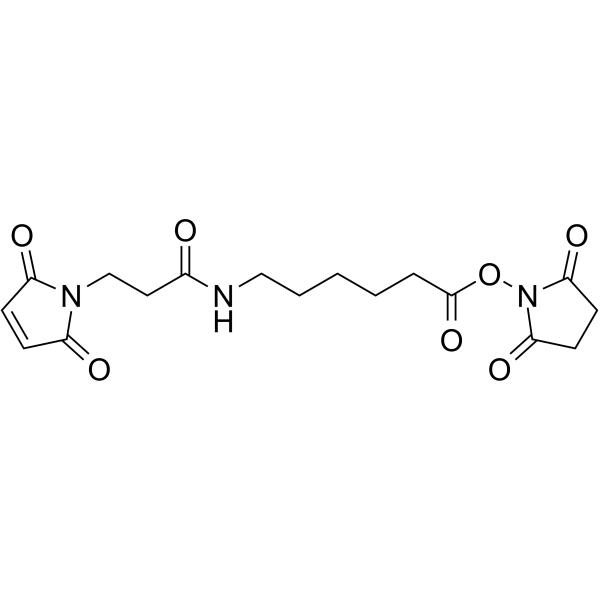
- HY-141175
-
|
|
PROTAC Linkers
|
Cancer
|
|
TCO-PNB ester is an alkyl/ether-based PROTAC linker that can be used in the synthesis of PROTACs .
|
-
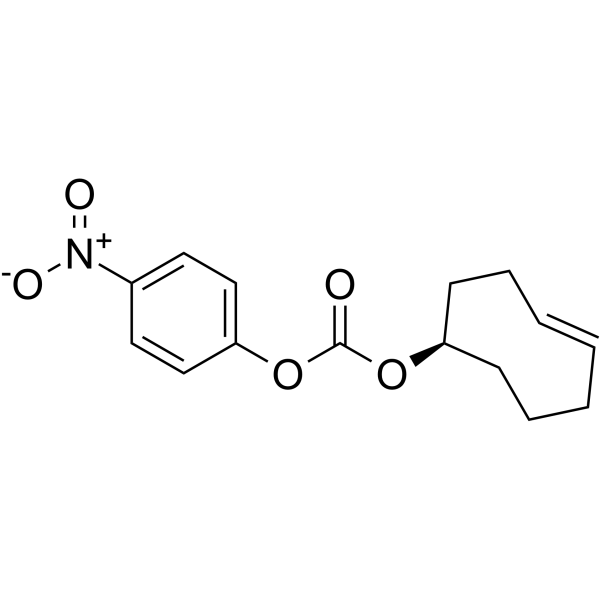
- HY-141165
-
|
|
PROTAC Linkers
|
Cancer
|
|
TCO-NHS ester is an alkyl/ether-based PROTAC linker that can be used in the synthesis of PROTACs .
|
-
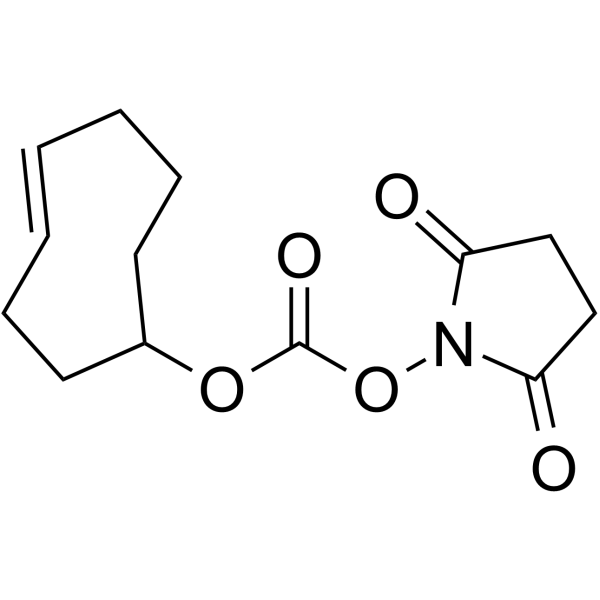
- HY-138467
-
|
|
PROTAC Linkers
|
Cancer
|
|
Mal-PFP ester is an alkyl/ether-based PROTAC linker that can be used in the synthesis of PROTACs .
|
-
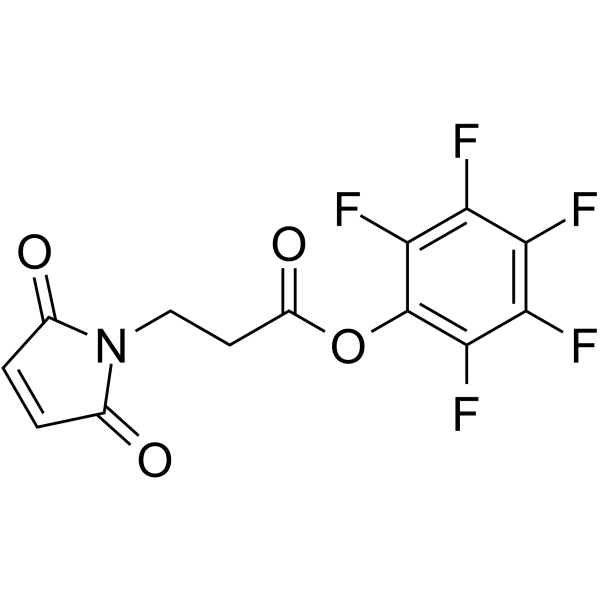
- HY-W127401
-
-

- HY-157514
-
|
|
Ligands for E3 Ligase
|
Cancer
|
|
Thalidomide 4'-ether-PEG1-azide is the Thalidomide (HY-14658)-based cereblon ligand used in the recruitment of CRBN protein. Thalidomide 4'-ether-PEG1-azide can be connected to the ligand for protein by a linker to form PROTACs .
|
-
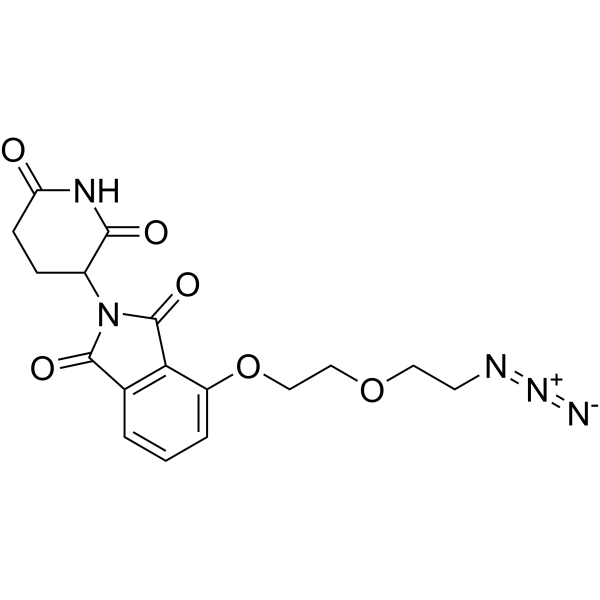
- HY-W667666
-
|
|
Others
|
Others
|
|
Anthragallol 1,2-dimethyl ether (compound 11) can be isolated from O. umbellata. Anthragallol 1,2-dimethyl ether has cytotoxicity, with IC50 values of 5.9 and 8.8 μg/ml against A549 cells and MDA-MB-231 cells, respectively .
|
-

- HY-W018365
-
|
|
PROTAC Linkers
|
Cancer
|
|
Tetraethylene glycol monomethyl ether is a PEG-based PROTAC linker that can be used in the synthesis of PROTACs .
|
-

- HY-120175
-
|
|
PROTAC Linkers
|
Cancer
|
|
Nonaethylene glycol monomethyl ether is a PEG-based PROTAC linker that can be used in the synthesis of PROTACs .
|
-

- HY-W044459
-
|
|
PROTAC Linkers
|
Cancer
|
|
Triethylene glycol monobenzyl ether is a PEG-based PROTAC linker that can be used in the synthesis of PROTACs .
|
-
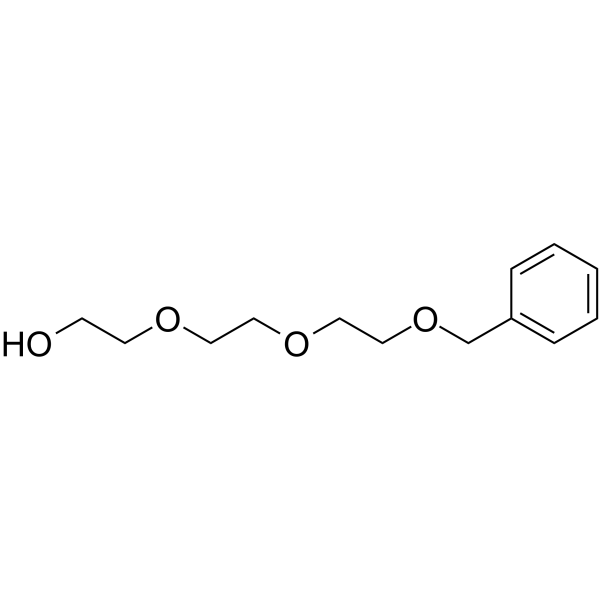
- HY-W042625
-
|
|
PROTAC Linkers
|
Cancer
|
|
Hexaethylene glycol monomethyl ether is a PEG-based PROTAC linker that can be used in the synthesis of PROTACs .
|
-
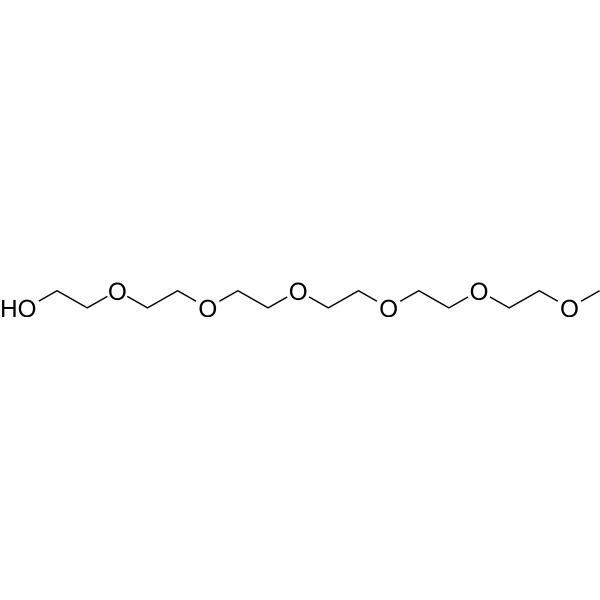
- HY-W042657
-
|
|
PROTAC Linkers
|
Cancer
|
|
Octaethylene glycol monomethyl ether is a PEG-based PROTAC linker that can be used in the synthesis of PROTACs .
|
-

- HY-W042713
-
|
|
PROTAC Linkers
|
Cancer
|
|
Pentaethylene glycol monomethyl ether is a PEG-based PROTAC linker that can be used in the synthesis of PROTACs .
|
-
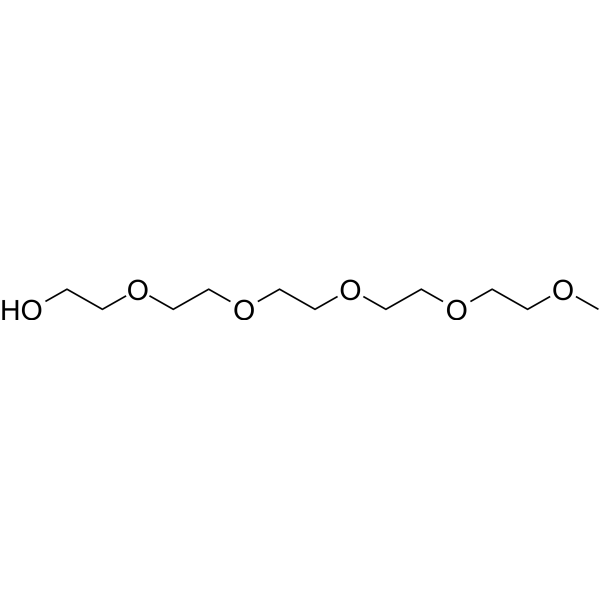
- HY-22393
-
|
|
PROTAC Linkers
|
Cancer
|
|
Diethylene Glycol Monobenzyl Ether is a PEG-based PROTAC linker that can be used in the synthesis of PROTACs .
|
-
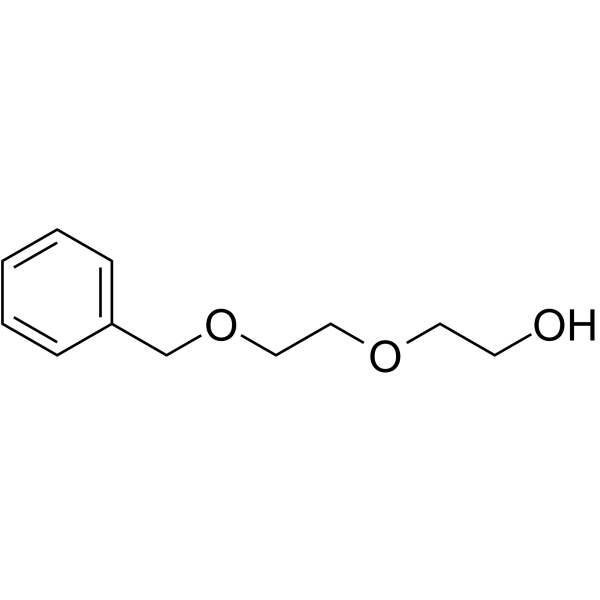
- HY-W018464
-
|
|
PROTAC Linkers
|
Cancer
|
|
N-Boc-serinol is an alkyl/ether-based PROTAC linker that can be used in the synthesis of PROTACs .
|
-
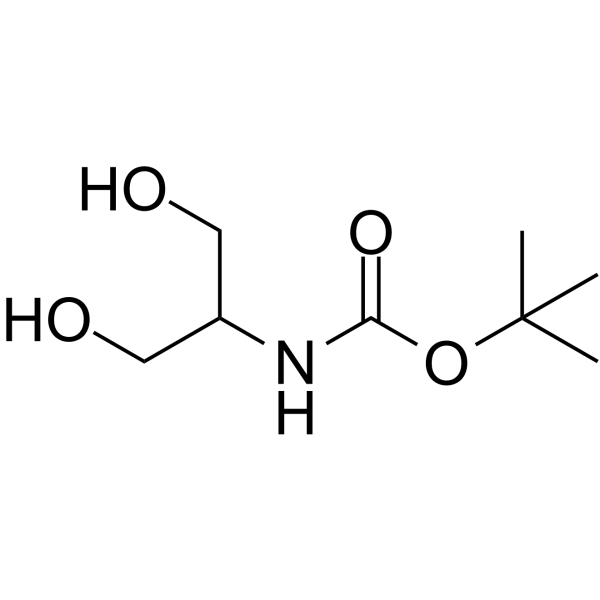
- HY-140991
-
|
|
PROTAC Linkers
|
Cancer
|
|
Mal-NH-Boc is an alkyl/ether-based PROTAC linker that can be used in the synthesis of PROTACs .
|
-

- HY-141268
-
|
|
PROTAC Linkers
|
Cancer
|
|
Methyltetrazine-Sulfo-NHS ester (sodium) is an alkyl/ether-based PROTAC linker that can be used in the synthesis of PROTACs .
|
-

- HY-133404
-
|
|
PROTAC Linkers
|
Cancer
|
|
Fmoc-aminooxy-PFP ester is an alkyl/ether-based PROTAC linker that can be used in the synthesis of PROTACs .
|
-

- HY-136168
-
|
|
PROTAC Linkers
|
Cancer
|
|
Mal-amino-sulfo is an alkyl/ether-based PROTAC linker that can be used in the synthesis of PROTACs .
|
-
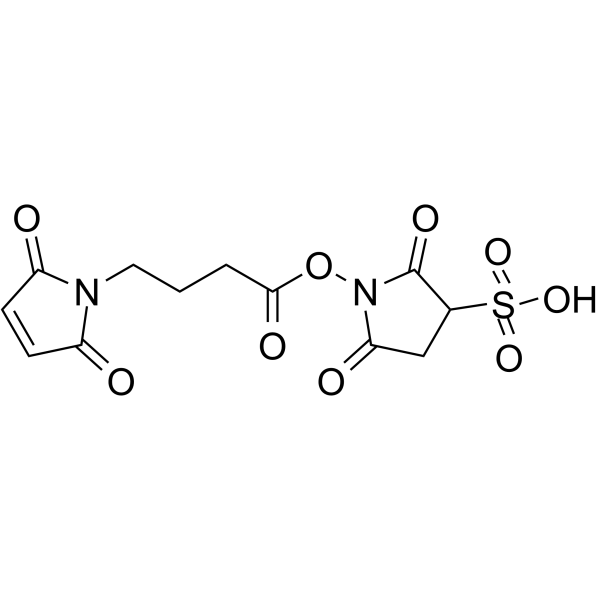
- HY-132065
-
|
PEG10-dodecyl
|
PROTAC Linkers
|
Cancer
|
|
Decaethylene glycol dodecyl ether is a PEG-based PROTAC linker that can be used in the synthesis of PROTACs .
|
-
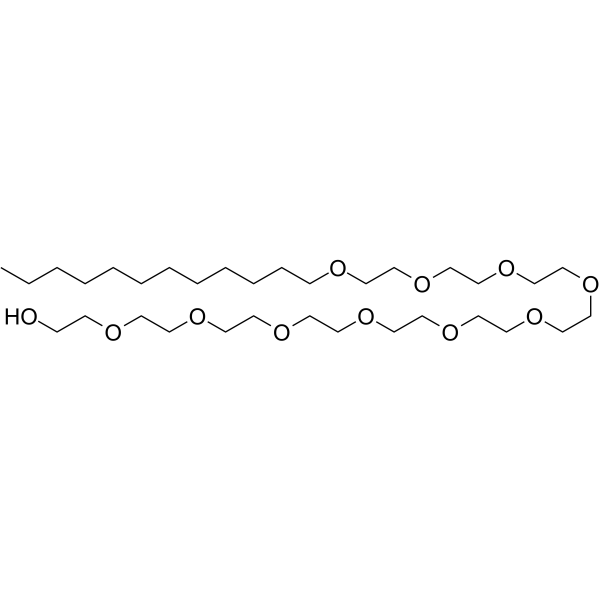
- HY-134746
-
|
|
PROTAC Linkers
|
Cancer
|
|
Hexaethylene glycol dimethyl ether is a PEG-based PROTAC linker that can be used in the synthesis of PROTACs .
|
-

- HY-W096096
-
|
|
PROTAC Linkers
|
Cancer
|
|
Tetraethylene glycol monohexadecyl ether is a PEG-based PROTAC linker that can be used in the synthesis of PROTACs .
|
-
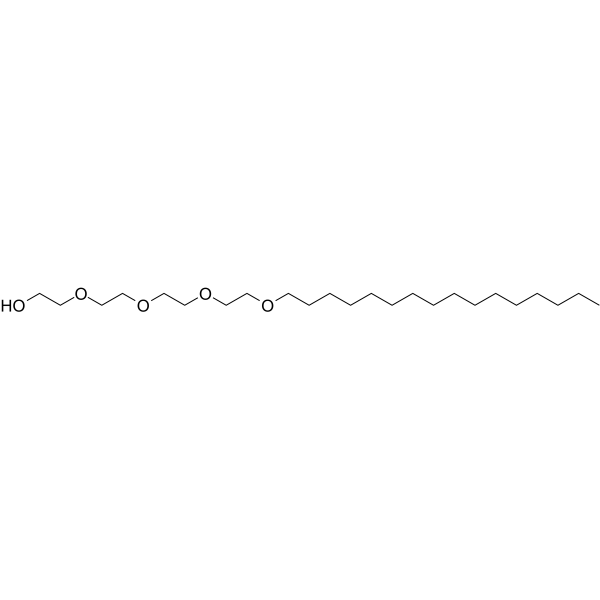
- HY-W142506
-
|
|
PROTAC Linkers
|
Cancer
|
|
Triethylene glycol monododecyl ether is a PEG-based PROTAC linker that can be used in the synthesis of PROTACs .
|
-
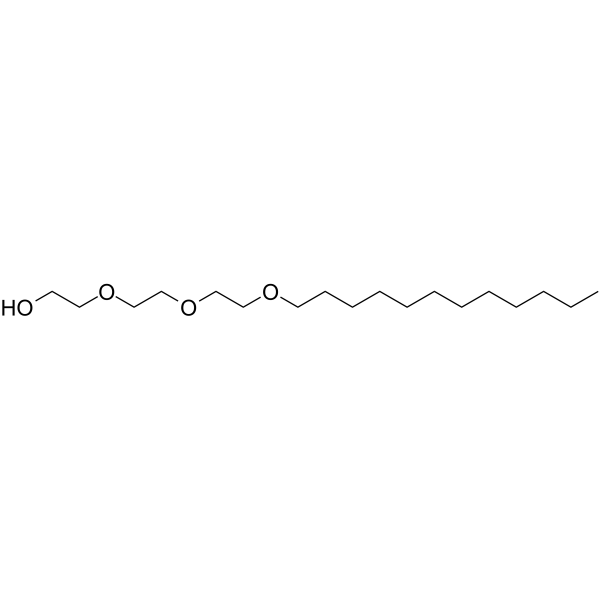
- HY-W190971
-
|
|
PROTAC Linkers
|
Cancer
|
|
Triethylene glycol monodecyl ether is a PEG-based PROTAC linker that can be used in the synthesis of PROTACs .
|
-
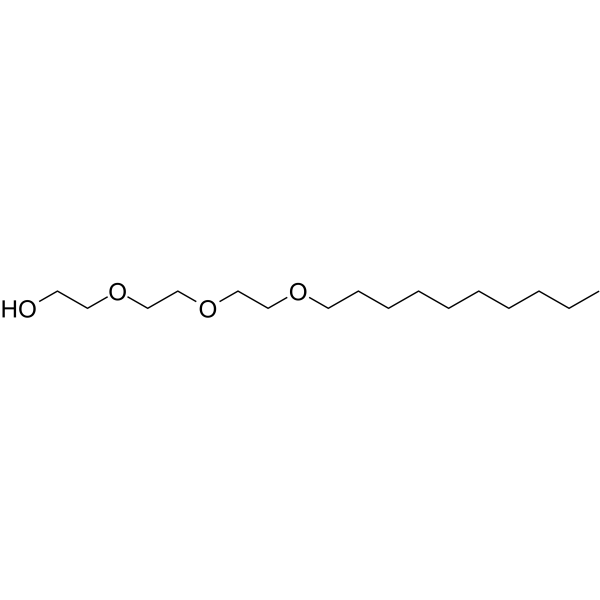
- HY-N11516
-
|
|
Others
|
Others
|
|
Erythro-guaiacylglycerol-β-ferulic acid ether is a natural product that can be isolated from Gueldenstaedtia verna .
|
-
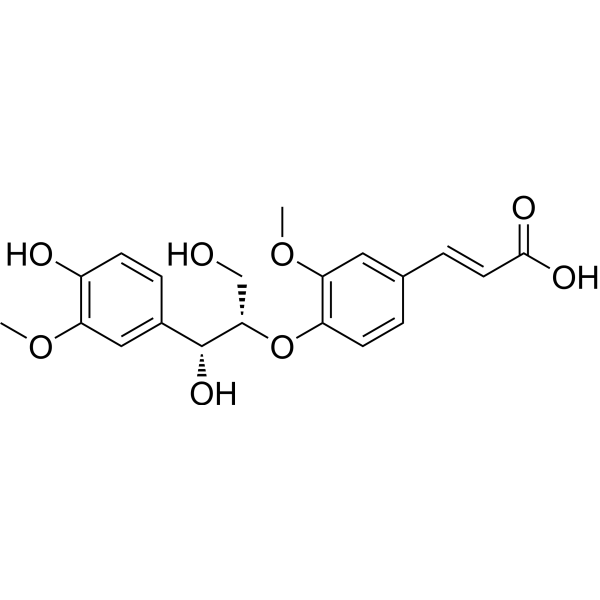
- HY-D0146
-
|
BzRes; 7-Benzyloxyresorufin; 7-Benzyloxyphenoxazone
|
Fluorescent Dye
|
Others
|
|
Resorufin benzyl ether (BzRes), a fluorogenic enzyme substrate, can be used to detect CYP3A4 enzyme activity. Resorufin benzyl ether modified with a recognizing moiety boronate, can be used for ONOO - detection via a self-immolation mechanism. Ex/Em=530-570 nm/590 nm .
|
-
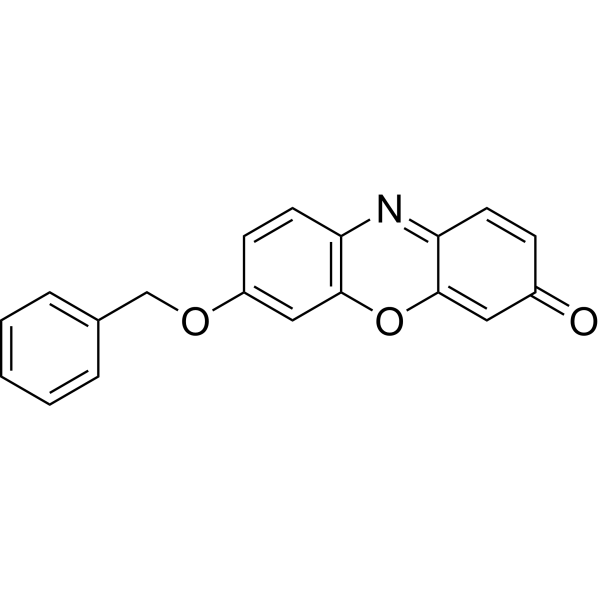
- HY-W073183
-
|
|
Biochemical Assay Reagents
|
Others
|
|
Dibenzo-24-crown-8-ether is a phase transfer catalyst that can reduce H 2PtCl 6·6H 2O and FeCl 2·4H 2O in a thermal system to synthesize 17 nm monodispersed iron-platinum (FePt) alloy nanoparticles .
|
-
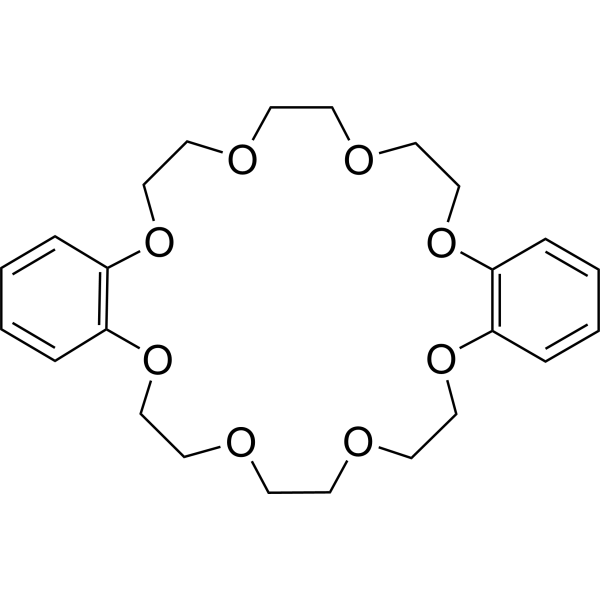
- HY-157515
-
|
|
E3 Ligase Ligand-Linker Conjugates
|
Cancer
|
|
Thalidomide 4'-ether-PEG2-azide is a click chemistry modified cereblon (CRBN) inhibitor Thalidomide (HY-14658). Thalidomide 4'-ether-PEG2-azide contains an azide group and can undergo copper-catalyzed azide-alkyne cycloaddition reaction (CuAAc) with molecules containing alkynyl groups. Thalidomide 4'-ether-PEG2-azide can be used as a ligand of E3 ubiquitin ligase and Linker conjugates (E3 Ligase Ligand-Linker Conjugates) for the synthesis of PROTACs .
|
-

- HY-A0272
-
|
Sodium lauryl polyoxyethylene ether sulfate
|
Biochemical Assay Reagents
|
Others
|
|
Sodium lauryl polyoxyethylene ether sulfate is an anionic active agent with excellent decontamination, emulsification, dispersion, wetting and other properties.
|
-
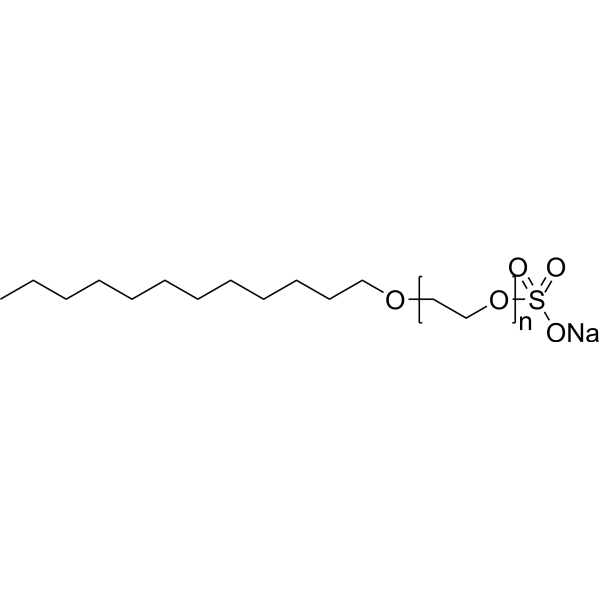
- HY-130490
-
|
|
PROTAC Linkers
|
Cancer
|
|
Biotin-bis-amido-SS-NHS is an Alkyl/ether-based PROTAC linker can be used in the synthesis of PROTACs.
|
-

- HY-113924
-
|
|
PROTAC Linkers
|
Cancer
|
|
Tri(t-butoxycarbonylethoxymethyl) ethanol is an alkyl/ether-based PROTAC linker that can be used in the synthesis of PROTACs .
|
-
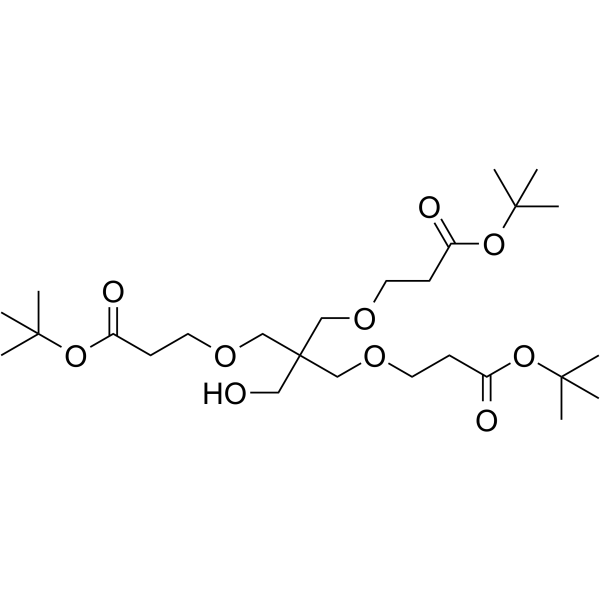
- HY-136159
-
|
|
PROTAC Linkers
|
Cancer
|
|
3-Mercaptopropanyl-N-hydroxysuccinimide ester is an alkyl/ether-based PROTAC linker that can be used in the synthesis of PROTACs .
|
-
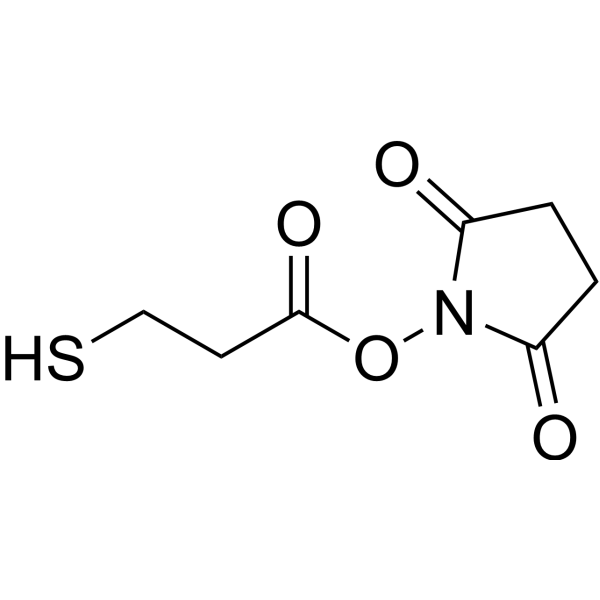
- HY-122207
-
|
|
Others
|
Infection
|
|
Erythromycin A enol ether is an acidic degradation product of Erythromycin A (macrolide antibiotic) and has no antibacterial effect .
|
-

- HY-42569
-
|
|
PROTAC Linkers
|
Cancer
|
|
Methyl 3-hydroxypropanoate is an alkyl/ether-based PROTAC linker that can be used in the synthesis of PROTACs .
|
-
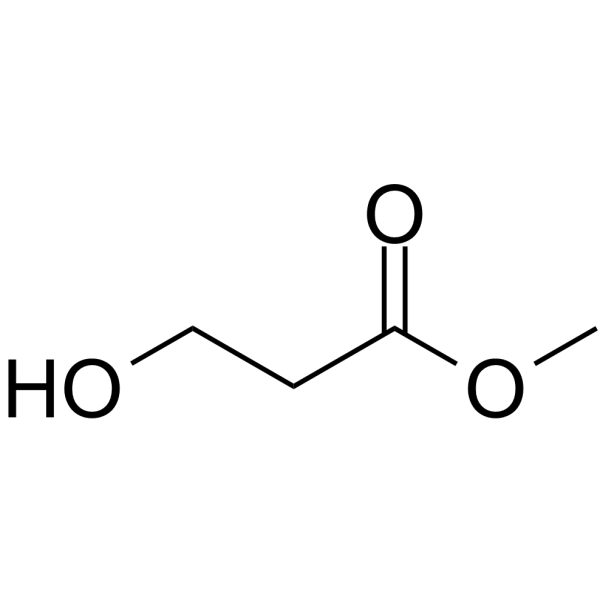
- HY-N1340
-
|
(-)-Rosthornin A; Isodopharicin C
|
Others
|
Others
|
|
Rosthornin A is a ent-kaurene diterpenoid compound, isolated from the ether extract of the dried leaves of Rabdosia rosthornii .
|
-
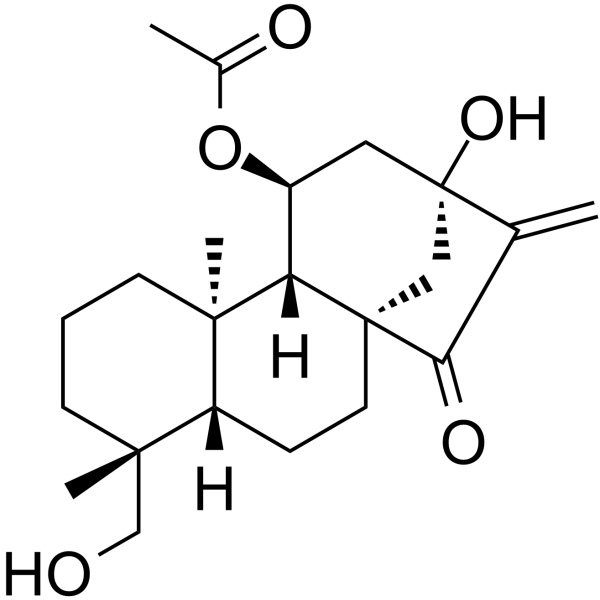
- HY-W667667
-
|
|
Others
|
Others
|
|
5-Hydroxyalizarin 1-methyl ether is a quinone compound isolated from Hymenodictyon excelsum .
|
-
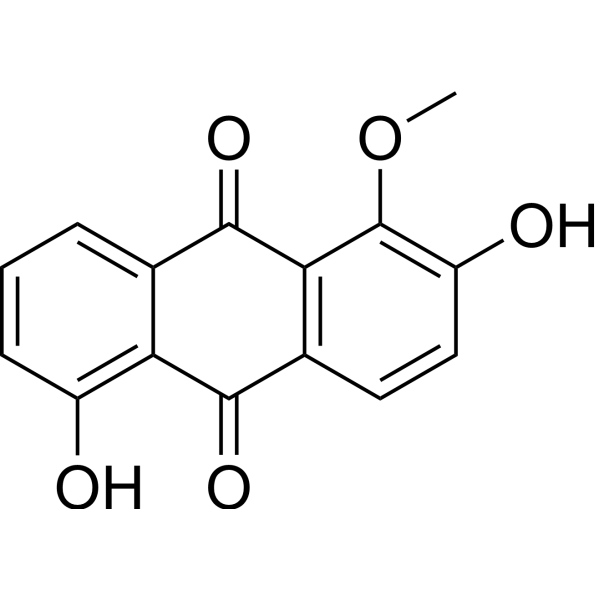
- HY-N12596
-
|
|
Others
|
Others
|
|
Uralenol-3-methyl ether is a flavonol which can be extracted from Daphne giraldii .
|
-

- HY-W098901
-
|
|
Others
|
Others
|
|
Benzoin ethyl ether is a biological material or organic compound that can be used in life science research .
|
-

- HY-130315
-
-
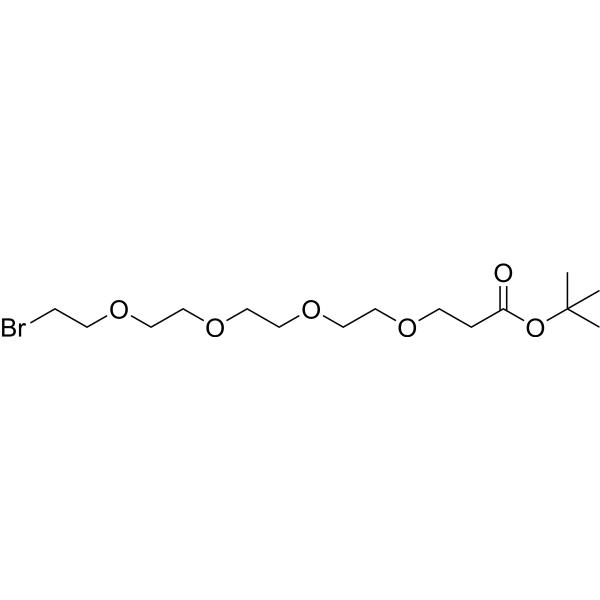
- HY-135580
-
|
|
Drug Metabolite
|
Endocrinology
|
|
Raloxifene Bismethyl Ether is a metabolite of Raloxifene and an estrogen receptor inactive compound on which both hydroxyl groups are absent .
|
-

- HY-135580A
-
|
|
Drug Metabolite
|
Endocrinology
|
|
Raloxifene Bismethyl Ether hydrochloride is a metabolite of Raloxifene and an estrogen receptor inactive compound on which both hydroxyl groups are absent .
|
-

- HY-130416
-
|
|
PROTAC Linkers
|
Cancer
|
|
Mal-PEG2-PFP ester is a Alkyl/ether-based PROTAC linker can be used in the synthesis of PROTACs.
|
-
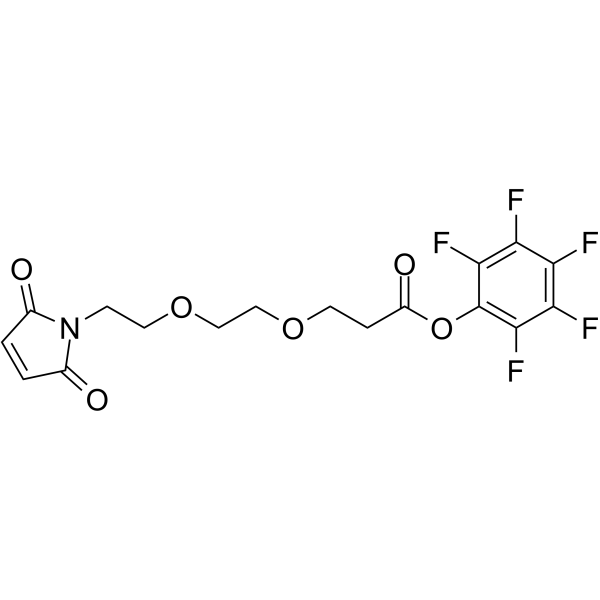
- HY-130568
-
|
|
PROTAC Linkers
|
Cancer
|
|
Mal-PEG1-PFP ester is a Alkyl/ether-based PROTAC linker can be used in the synthesis of PROTACs.
|
-
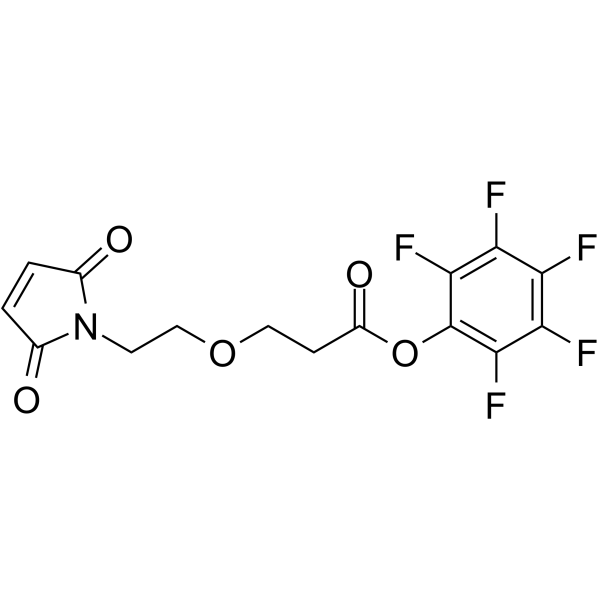
- HY-141336
-
|
DL-α-Lipoic acid-NHS
|
PROTAC Linkers
|
Cancer
|
|
α-Lipoic acid-NHS is an alkyl/ether-based PROTAC linker that can be used in the synthesis of PROTACs .
|
-
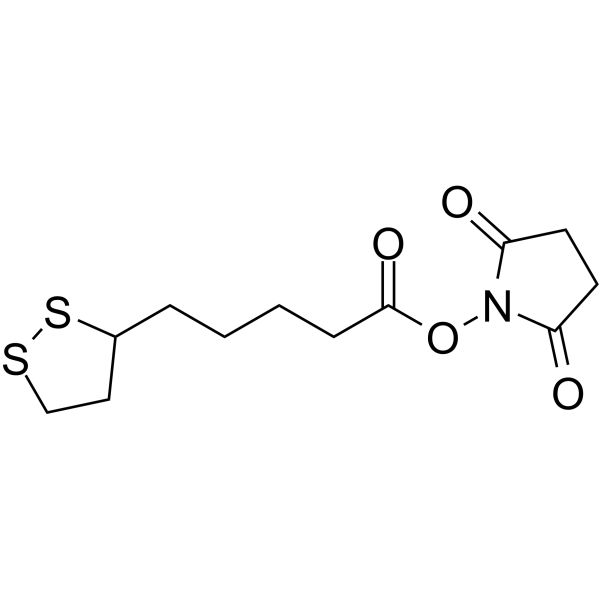
- HY-136158
-
|
Sulfo-EMCS free acid
|
PROTAC Linkers
|
Cancer
|
|
6-Maleimidocaproic acid sulfo-NHS is an alkyl/ether-based PROTAC linker that can be used in the synthesis of PROTACs .
|
-

- HY-138354
-
|
|
PROTAC Linkers
|
Cancer
|
|
Pyrroline-5-carboxylate is an alkyl/ether-based PROTAC linker that can be used in the synthesis of PROTACs .
|
-
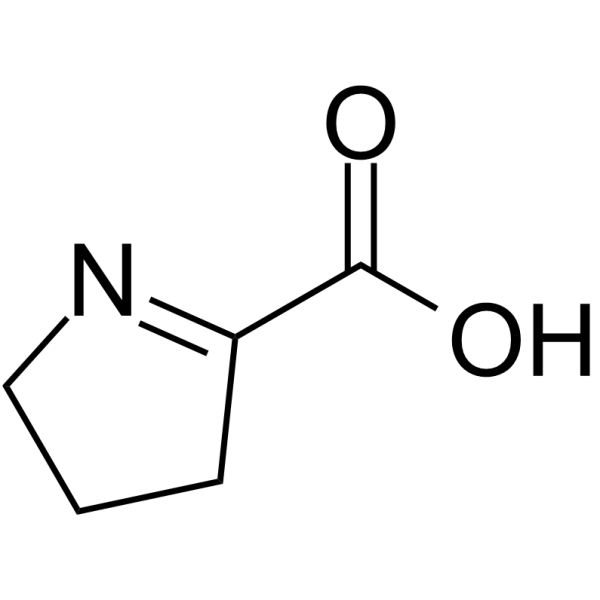
- HY-W007529
-
|
|
PROTAC Linkers
|
Cancer
|
|
Boc-6-aminohexanoic acid is an alkyl/ether-based PROTAC linker that can be used in the synthesis of PROTACs .
|
-

- HY-138492
-
|
|
PROTAC Linkers
|
Cancer
|
|
Boc-NH-PPG2 is an alkyl/ether-based PROTAC linker that can be used in the synthesis of PROTACs .
|
-
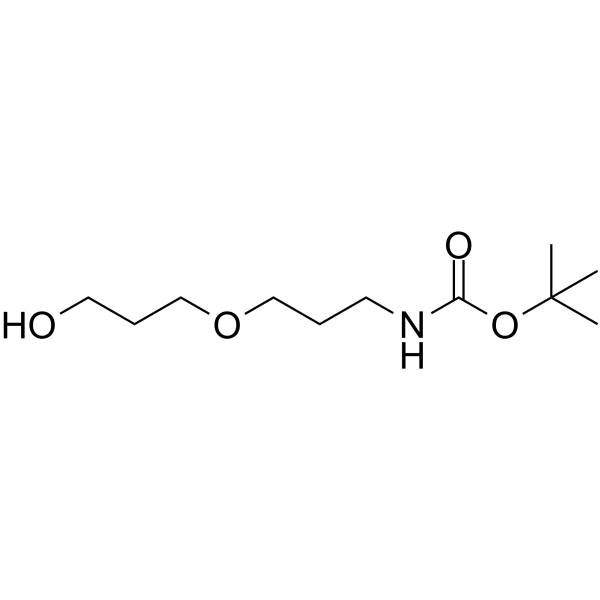
- HY-Y1883
-
-
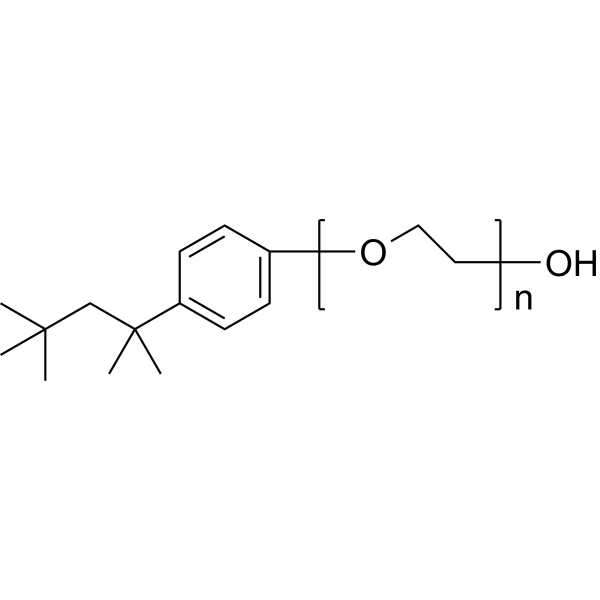
- HY-N1339
-
|
(-)-Rosthornin B
|
Others
|
Others
|
|
Rosthornin B is a ent-kaurene diterpenoid compound, isolated from the ether extract of the dried leaves of Rabdosia rosthornii .
|
-

- HY-N10994
-
|
|
Others
|
Others
|
|
Peucenin 7-O-methyl ether is a natural product that can be isolated from the flowers of Rosa rugosa .
|
-
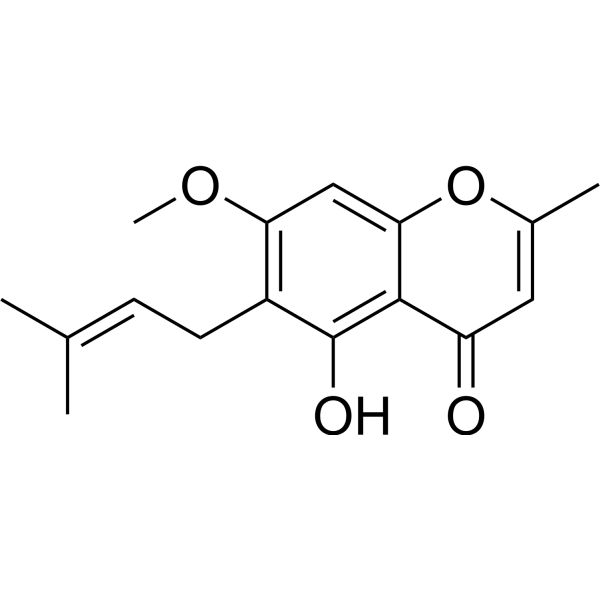
- HY-W127577
-
|
O-Isopentyl-cholesterol
|
Biochemical Assay Reagents
|
Others
|
|
Cholesteryl isoamyl ether is a biochemical reagent that can be used as a biological material or organic compound for life science related research.
|
-
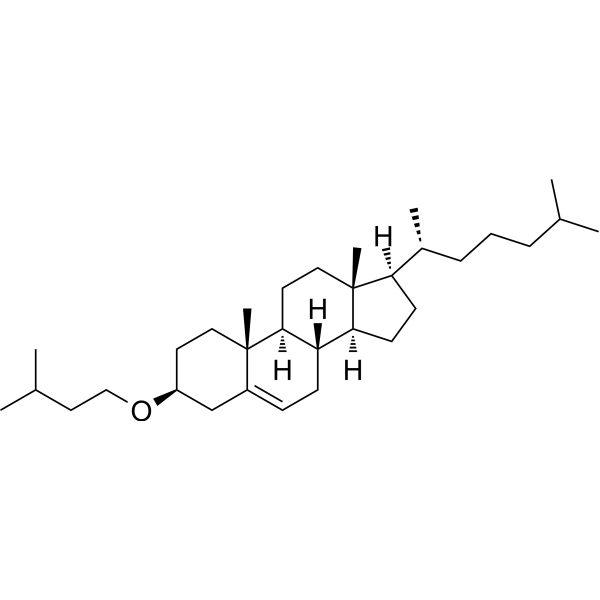
- HY-N1538
-
|
|
Others
|
Others
|
|
(+)-Piperitol-3,3-dimethylallyl ether can be isolated from the roots and the bark of Zanthoxylum usambarense .
|
-
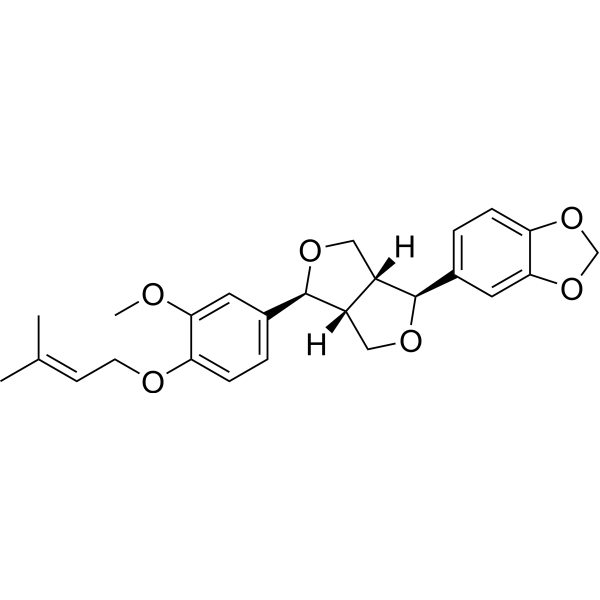
- HY-W663232
-
|
|
Others
|
Others
|
|
Anthragallol-2-methyl ether (compound 4) can be isolated from the fruits of Morinda citrifolia .
|
-

- HY-N8450
-
|
|
Others
|
Others
|
|
3-Acetylpinobanksin-7-methyl ether is a natural product that can be isolated from propolis .
|
-
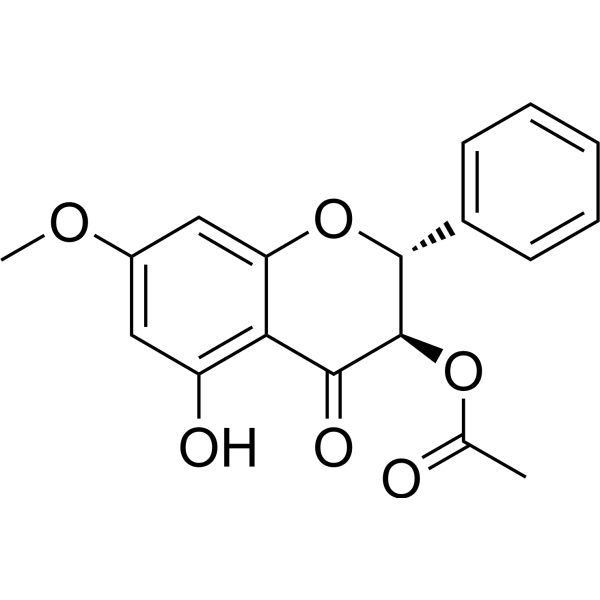
- HY-134524
-
|
Dimethyl isosorbide; O,O-Dimethylisosorbide
|
Biochemical Assay Reagents
|
Others
|
|
Isosorbide dimethyl ether is a biobased high boiling green solvent. Isosorbide dimethyl ether can be used for sustainable ultrafiltration and microfiltration membrane preparation. Isosorbide dimethyl ether can be used as an excipient, such as solvent, penetration aid. Pharmaceutical excipients, or pharmaceutical auxiliaries, refer to other chemical substances used in the pharmaceutical process other than pharmaceutical ingredients. Pharmaceutical excipients generally refer to inactive ingredients in pharmaceutical preparations, which can improve the stability, solubility and processability of pharmaceutical preparations. Pharmaceutical excipients also affect the absorption, distribution, metabolism, and elimination (ADME) processes of co-administered drugs .
|
-

- HY-W007656
-
|
|
Others
|
Others
|
|
Cyclen is the aza analogue of crown ether, used as a precursor for MRI contrast agents, and is an intermediate for the preparation of effective macrocyclic chelates .
|
-

- HY-126888
-
|
|
PROTAC Linkers
|
Cancer
|
|
Mal-PEG5-NHS ester is an Alkyl/ether and PEG-based PROTAC linker can be used in the synthesis of PROTACs.
|
-
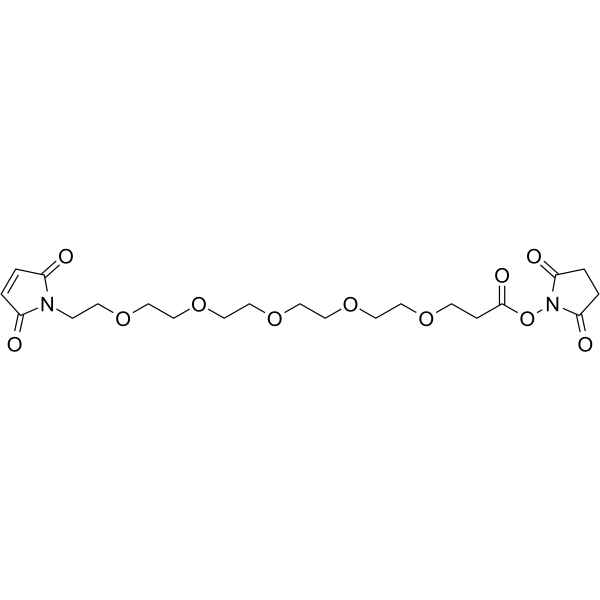
- HY-114512
-
|
|
PROTAC Linkers
|
Cancer
|
|
m-PEG1-NHS ester is a PEG/Alkyl/ether-based PROTAC linker can be used in the synthesis of PROTACs.
|
-
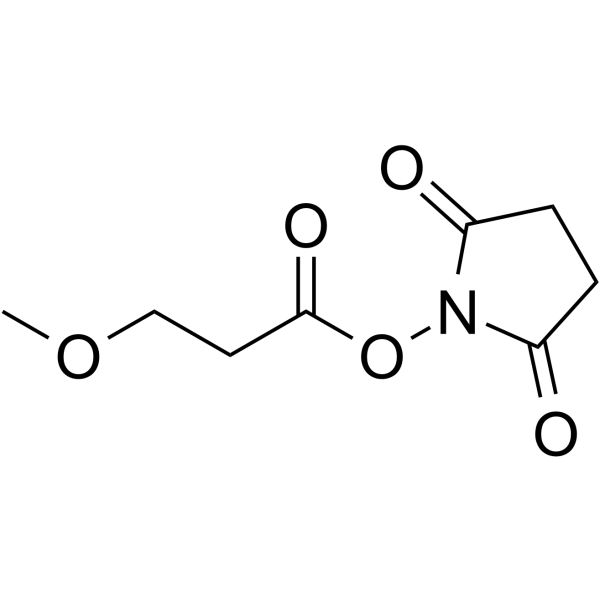
- HY-124377
-
|
|
PROTAC Linkers
|
Cancer
|
|
SPDP-C6-NHS ester is an alkyl/ether-based PROTAC linker that can be used in the synthesis of PROTACs .
|
-
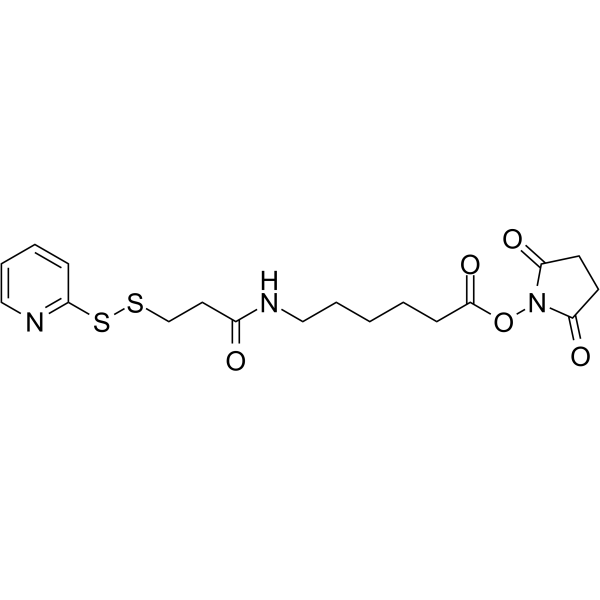
- HY-133162
-
|
|
PROTAC Linkers
|
Cancer
|
|
Mal-PEG1-Boc is an alkyl/ether-based PROTAC linker that can be used in the synthesis of PROTACs .
|
-
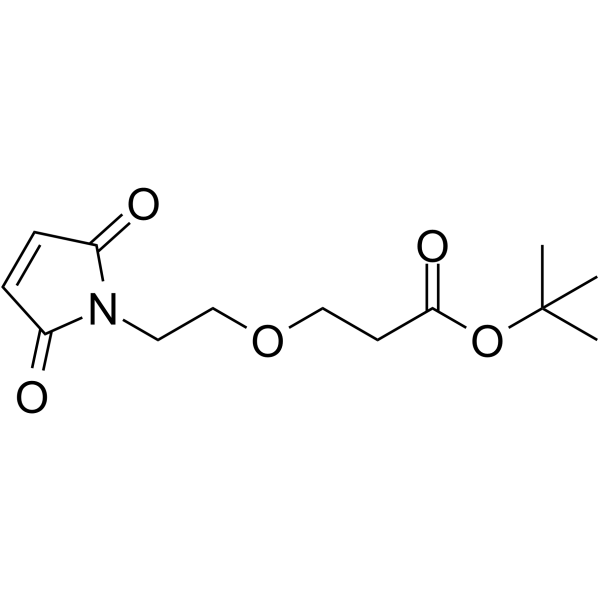
- HY-140342
-
|
|
PROTAC Linkers
|
Cancer
|
|
Boc-C16-NHS ester is an alkyl/ether-based PROTAC linker that can be used in the synthesis of PROTACs .
|
-
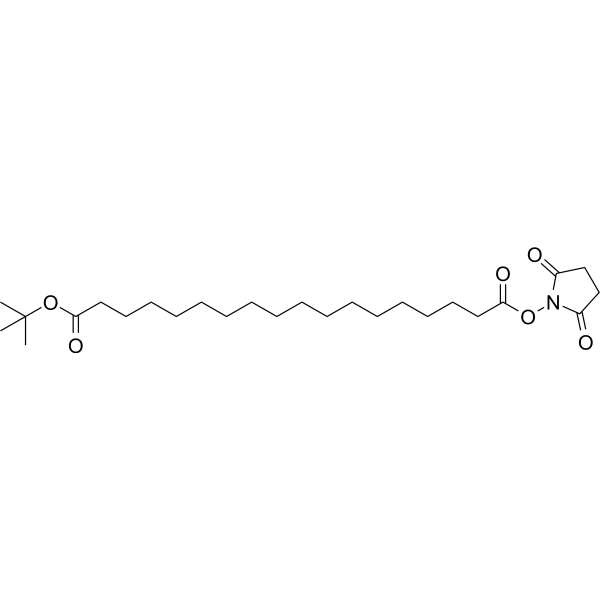
- HY-140680
-
|
|
PROTAC Linkers
|
Cancer
|
|
m-PEG-Lys-NHS ester (MW 20000) is an alkyl/ether-based PROTAC linker that can be used in the synthesis of PROTACs .
|
-
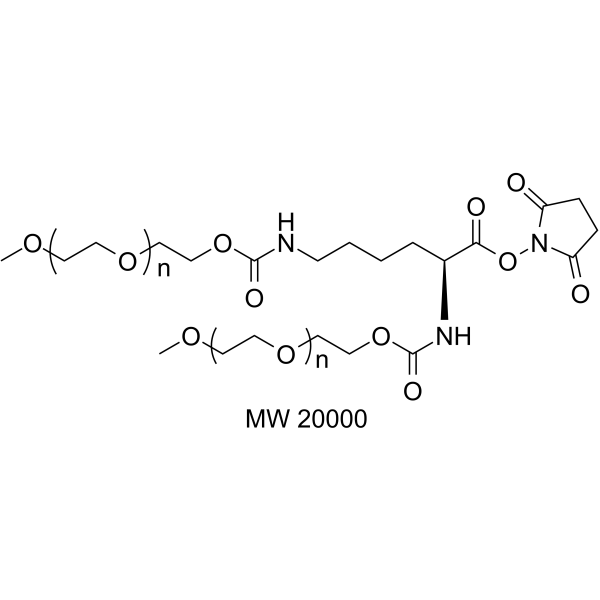
- HY-140681
-
|
|
PROTAC Linkers
|
Cancer
|
|
m-PEG-Lys-NHS ester (MW 40000) is an alkyl/ether-based PROTAC linker that can be used in the synthesis of PROTACs .
|
-
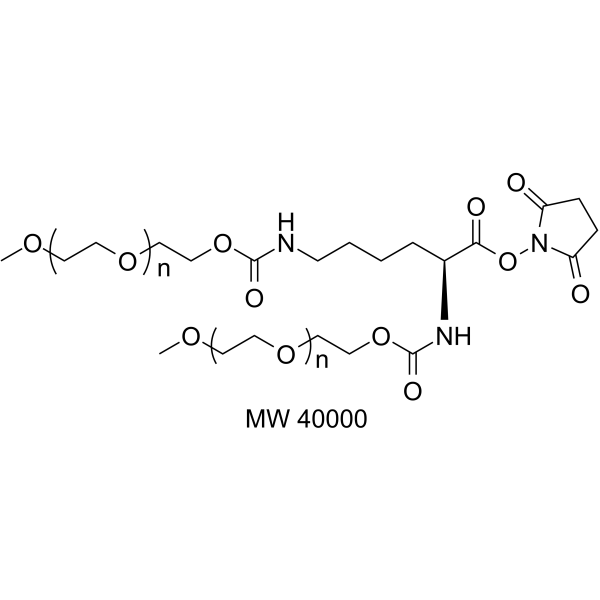
- HY-135915
-
|
|
PROTAC Linkers
|
Cancer
|
|
Biotin-C5-NHS Ester is an alkyl/ether-based PROTAC linker that can be used in the synthesis of PROTACs .
|
-
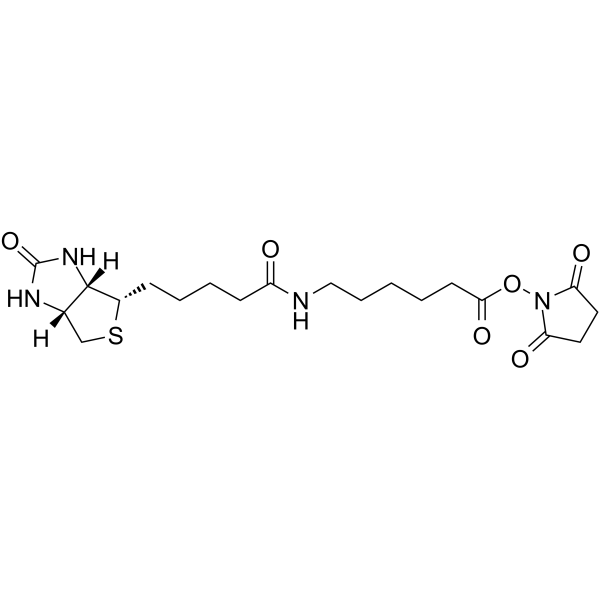
- HY-135920
-
|
|
PROTAC Linkers
|
Cancer
|
|
Biotin-C10-NHS Ester is an alkyl/ether-based PROTAC linker that can be used in the synthesis of PROTACs .
|
-

- HY-W009037
-
|
|
PROTAC Linkers
|
Cancer
|
|
Maleimide-C10-NHS ester is an alkyl/ether-based PROTAC linker that can be used in the synthesis of PROTACs .
|
-
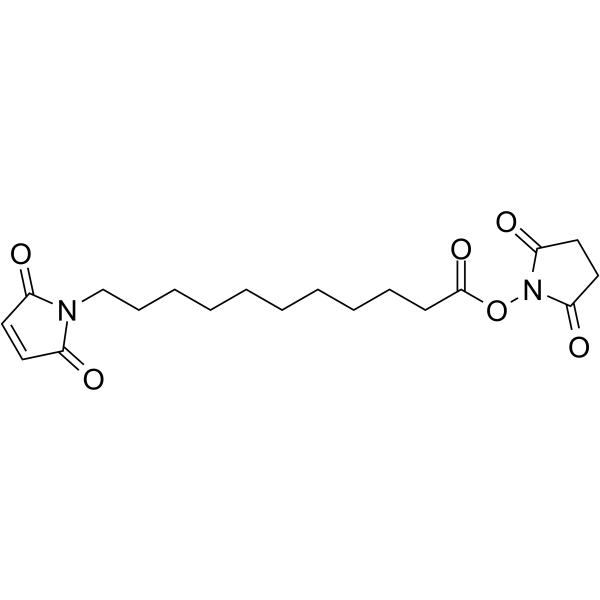
- HY-138473
-
|
|
PROTAC Linkers
|
Cancer
|
|
Boc-PEG1-Boc is an alkyl/ether-based PROTAC linker that can be used in the synthesis of PROTACs .
|
-
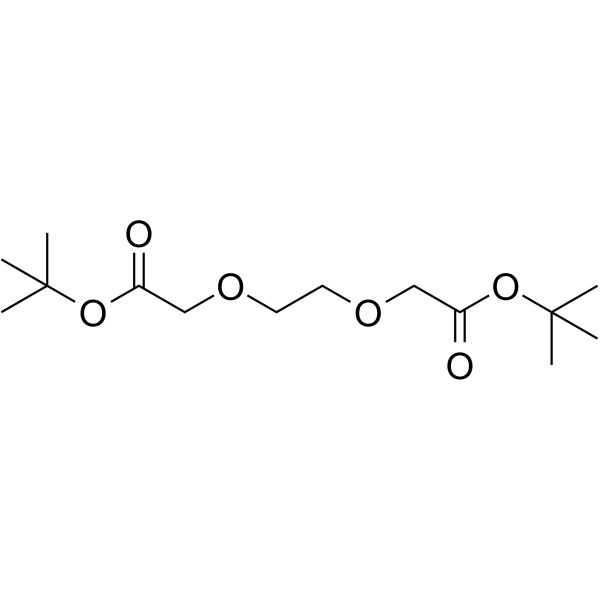
- HY-W013458
-
|
|
PROTAC Linkers
|
Cancer
|
|
Bis2-bromoethyl ether is an alkyl chain-based PROTAC linker that can be used in the synthesis of PROTACs .
|
-
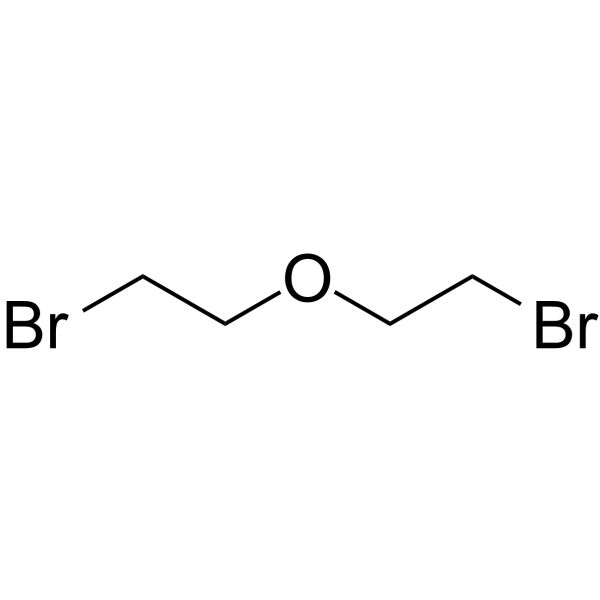
- HY-W096152
-
|
|
PROTAC Linkers
|
Cancer
|
|
Chloroacetamido-C4-NHBoc is an alkyl/ether-based PROTAC linker that can be used in the synthesis of PROTACs .
|
-
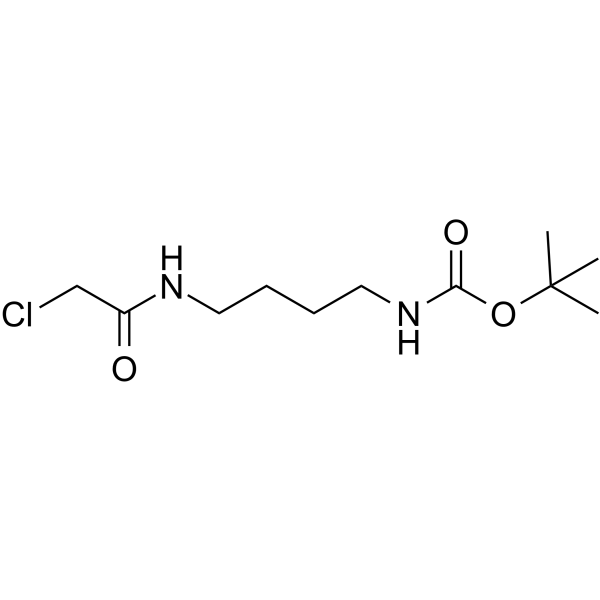
- HY-138504
-
|
|
PROTAC Linkers
|
Cancer
|
|
Bis-PEG2-Boc is an alkyl/ether-based PROTAC linker that can be used in the synthesis of PROTACs .
|
-

- HY-138520
-
|
|
PROTAC Linkers
|
Cancer
|
|
5-[Boc(methyl)amino]pentanal is an alkyl/ether-based PROTAC linker that can be used in the synthesis of PROTACs .
|
-
![5-[Boc(methyl)amino]pentanal](//file.medchemexpress.com/product_pic/hy-138520.gif)
- HY-W127440
-
|
|
Biochemical Assay Reagents
|
Others
|
|
i-Cholesteryl methyl ether is a biochemical reagent that can be used as a biological material or organic compound for life science related research.
|
-
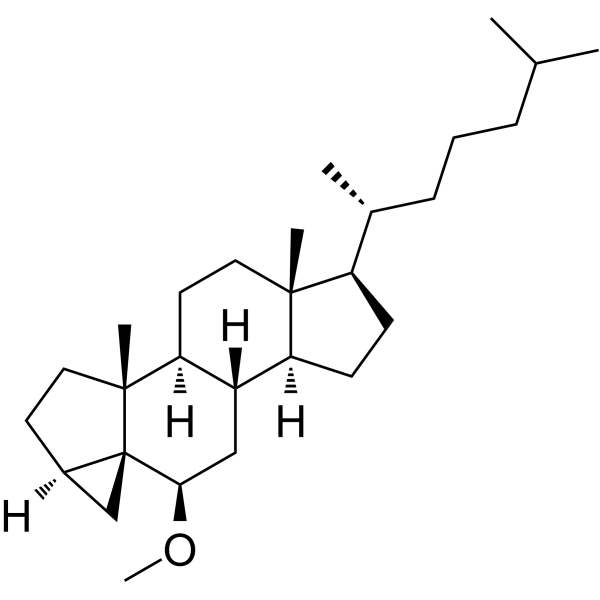
- HY-W250169
-
|
|
Biochemical Assay Reagents
|
Others
|
|
Secondary alcohol polyoxyethylene ether is a biochemical reagent that can be used as a biological material or organic compound for life science related research.
|
-
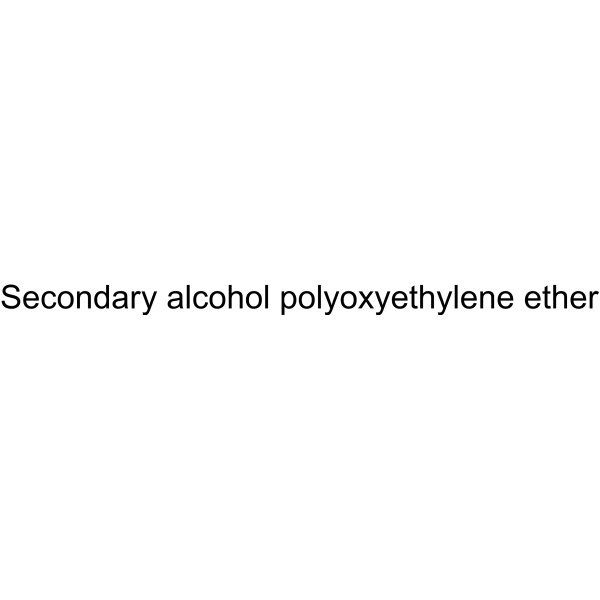
- HY-W250198
-
|
|
Biochemical Assay Reagents
|
Others
|
|
Hexaethylene glycol monododecyl ether is a biochemical reagent that can be used as a biological material or organic compound for life science related research.
|
-
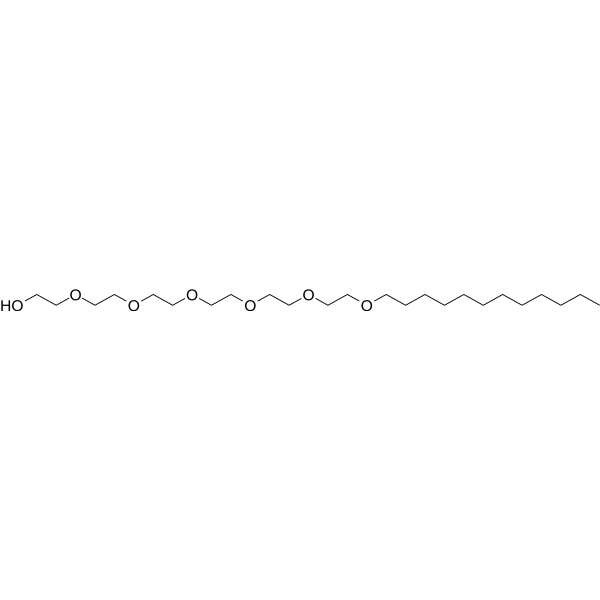
- HY-W250185
-
|
|
Biochemical Assay Reagents
|
Others
|
|
Pentaethylene glycol monodecyl ether is a biochemical reagent that can be used as a biological material or organic compound for life science related research.
|
-

- HY-115749
-
|
6′-Methoxyluciferin
|
Others
|
Others
|
|
D-Luciferin 6′-methyl ether (6′-Methoxyluciferin; compound 19a) is a potent luciferase from the North American firefly Photinus pyralis (PpyLuc) inhibitor with an IC50 of 0.1 µM. D-Luciferin 6′-methyl ether, a D-luciferin analog, shows non-specific interactions at ATP- and luciferin-binding sites of the PpyLuc active site .
|
-
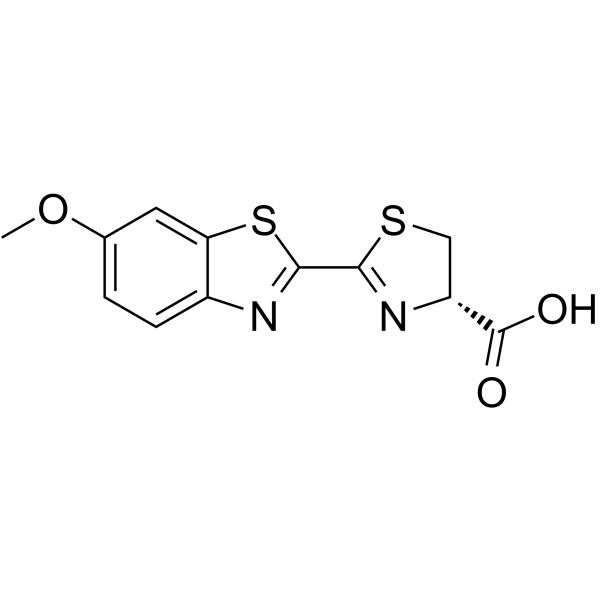
- HY-N7150
-
|
5,7-Dihydroxy-3',4',5'-trimethoxyflavone
|
Xanthine Oxidase
|
Metabolic Disease
|
|
Tricetin 3',4',5'-trimethyl ether (5,7-Dihydroxy-3',4',5'-trimethoxyflavone) is a flavone glucoside, that can be isolated the flowers of Chrysanthemum sinensea. Tricetin 3',4',5'-trimethyl ether displays xanthine oxidase competitive-type inhibitory activity, with an IC50 of 0.51 μM and a Ki of 0.37 μM .
|
-
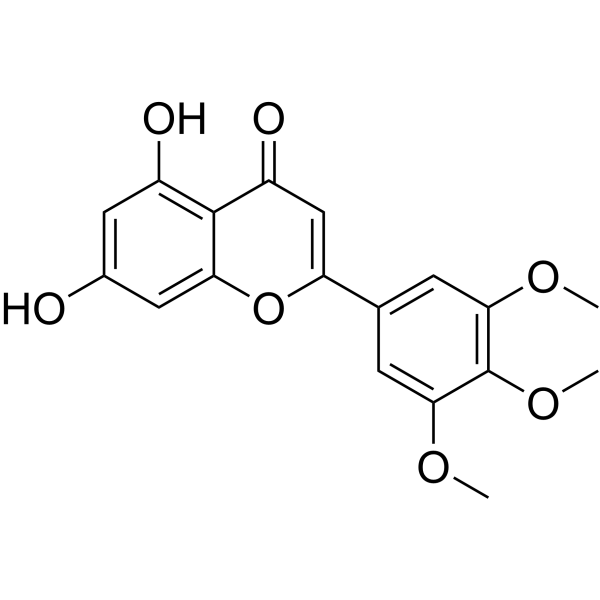
- HY-130404
-
|
|
PROTAC Linkers
|
Cancer
|
|
m-PEG3-Boc is a PEG- and Alkyl/ether-based PROTAC linker can be used in the synthesis of PROTACs .
|
-
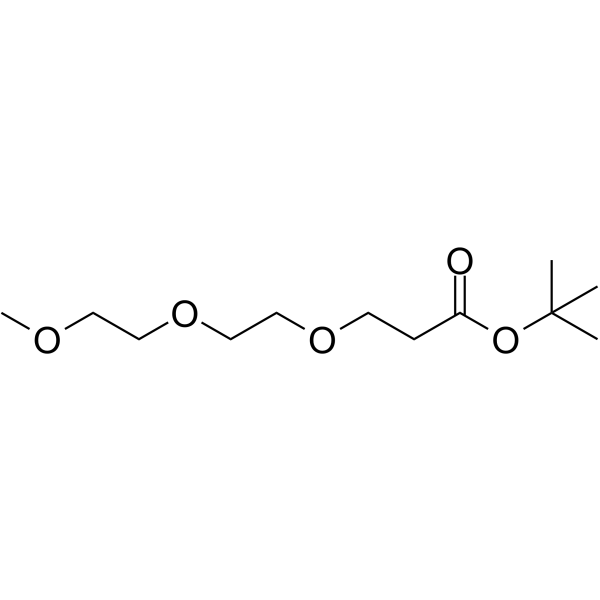
- HY-140484
-
|
|
PROTAC Linkers
|
Cancer
|
|
Acid-PEG3-mono-methyl ester is an alkyl/ether-based PROTAC linker that can be used in the synthesis of PROTACs .
|
-
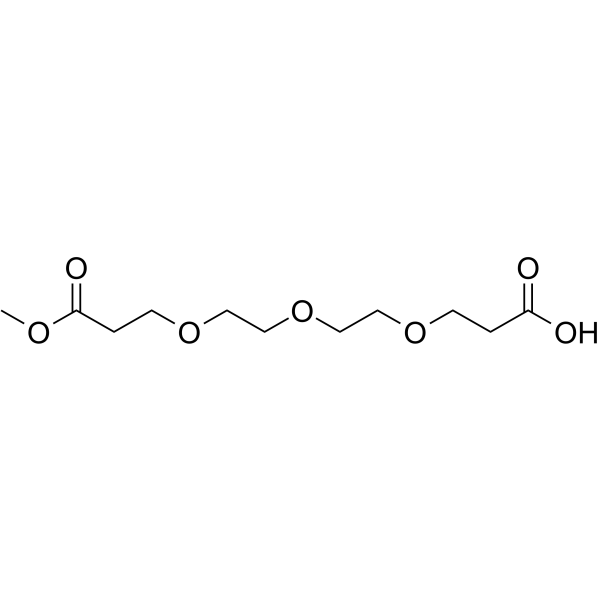
- HY-140992
-
|
|
PROTAC Linkers
|
Cancer
|
|
Mal-C4-NH-Boc is an alkyl/ether-based PROTAC linker that can be used in the synthesis of PROTACs .
|
-
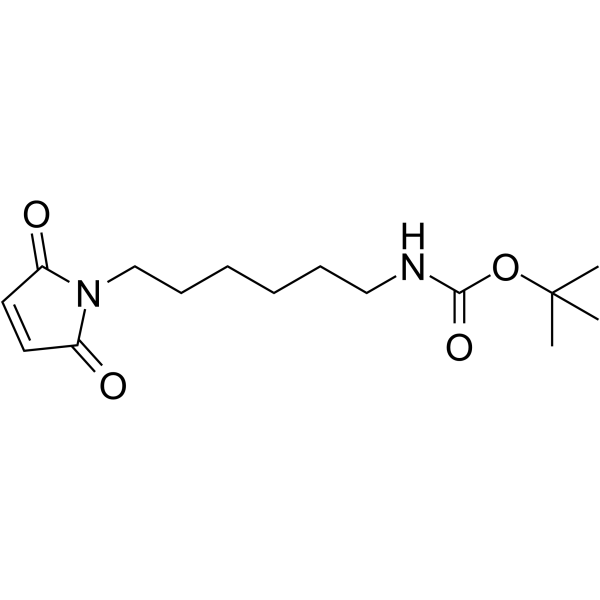
- HY-138534
-
|
|
PROTAC Linkers
|
Cancer
|
|
THP-CH3-ethyl propionate is an alkyl/ether-based PROTAC linker that can be used in the synthesis of PROTACs .
|
-
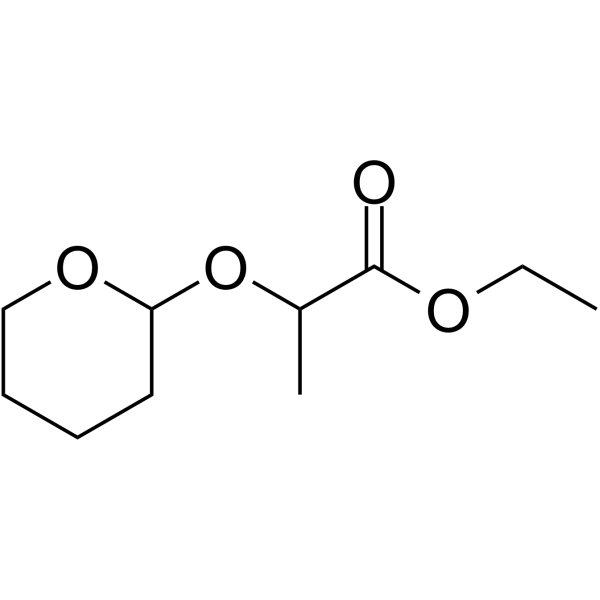
- HY-136158A
-
|
Sulfo-EMCS
|
PROTAC Linkers
|
Cancer
|
|
6-Maleimidocaproic acid sulfo-NHS (Sulfo-EMCS) sodium is an alkyl/ether-based PROTAC linker that can be used in the synthesis of PROTACs .
|
-
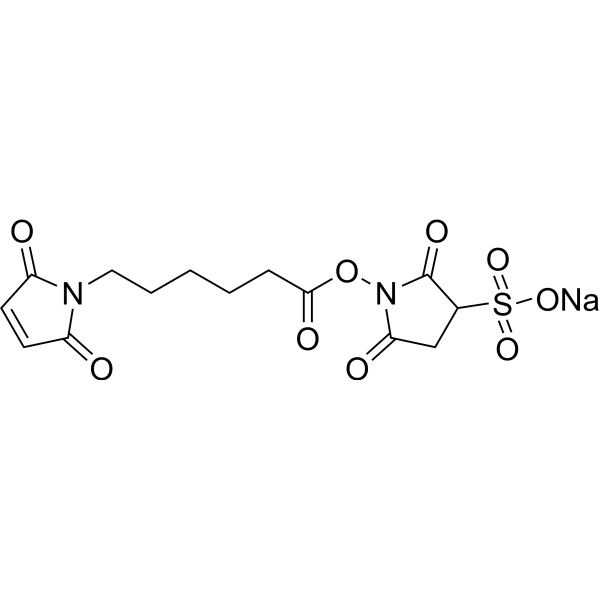
- HY-111811
-
|
|
Others
|
Inflammation/Immunology
|
|
Homomangiferin is mangiferin monomethyl ether. Homomangiferin has important medicinal properties and is widely used to relieve many symptoms, for example coughing and asthma .
|
-

- HY-111911
-
|
|
Amyloid-β
|
Neurological Disease
|
|
Xanthocillin X permethyl ether is a natural compound isolated from fungal extracts, with Aβ-42 lowering activity .
|
-
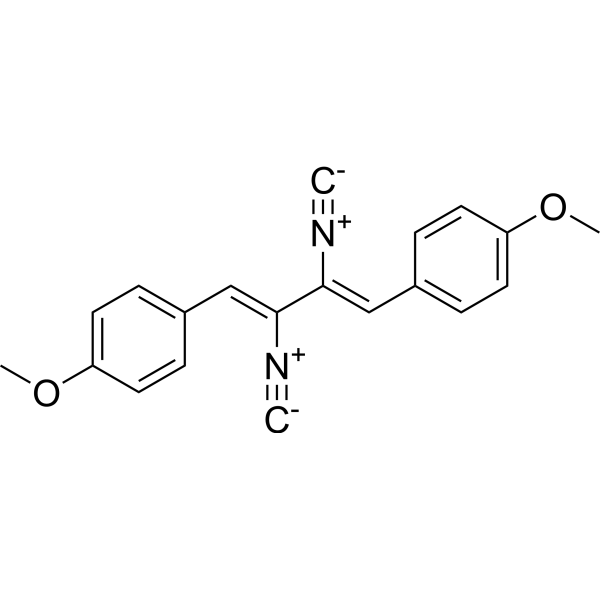
- HY-N3434
-
|
|
Others
|
Others
|
|
Kaempferol 3,7,4'-trimethyl ether is a flavonol aglycone isolated from the leaves of Siparuna gigantotepala, has antioxidant activity .
|
-

- HY-W039197
-
|
|
PROTAC Linkers
|
Cancer
|
|
Acid-PEG4-mono-methyl ester is a PEG- and Alkyl/ether-based PROTAC linker can be used in the synthesis of PROTACs .
|
-
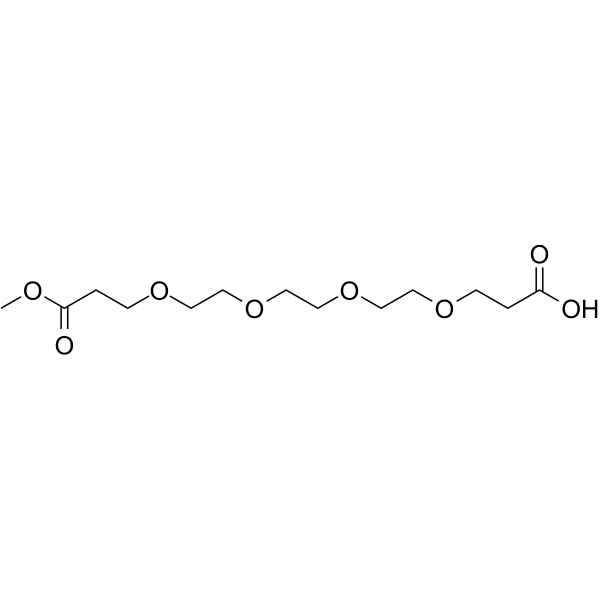
- HY-133405
-
|
|
PROTAC Linkers
|
Cancer
|
|
Boc-NH-O-C1-NHS ester is an alkyl/ether-based PROTAC linker that can be used in the synthesis of PROTACs .
|
-
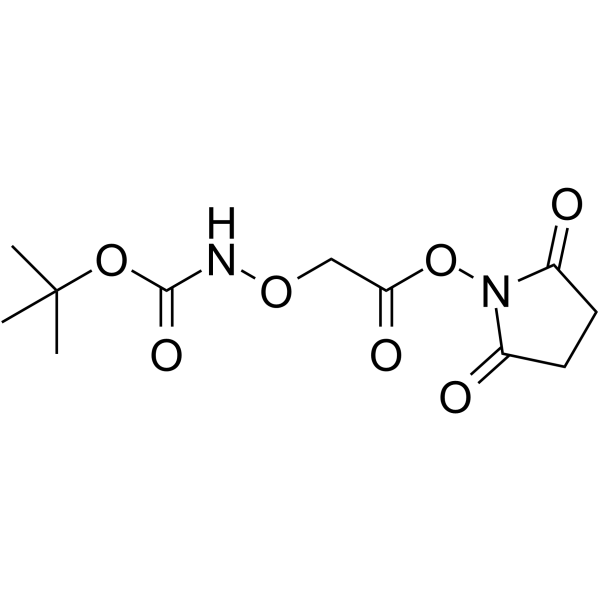
- HY-W017970
-
|
|
PROTAC Linkers
|
Cancer
|
|
Boc-C2-NH2 is an alkyl/ether-based PROTAC linker that can be used in the synthesis of PROTACs .
|
-

- HY-W090446
-
|
|
PROTAC Linkers
|
Cancer
|
|
4-Boc-amino-22-dimethylbutyric acid is an alkyl/ether-based PROTAC linker that can be used in the synthesis of PROTACs .
|
-
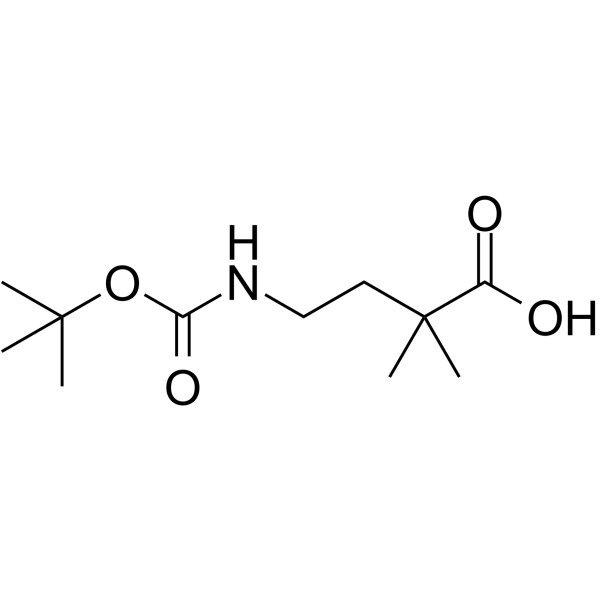
- HY-125361
-
|
|
Others
|
Others
|
|
Ganosporeric acid A, a natural product, is isolated from the ether-soluble fraction of the spores of Ganoderma lucidum. Ganosporeric acid A can be used for the research of liver injury .
|
-

- HY-108610
-
|
(R)-ET-18-OCH3
|
HIV
|
Infection
Cancer
|
|
(R)-Edelfosine ((R)-ET-18-OCH3) is a ether lipid analog with anti-HIV and antineoplastic activity .
|
-

- HY-N7982
-
|
|
Others
|
Others
|
|
(+)-Pinoresinol monomethyl ether O-β-D-glucoside (Compound 6) is a natural product that can be isolated from the stems of Tinospora sinensis .
|
-
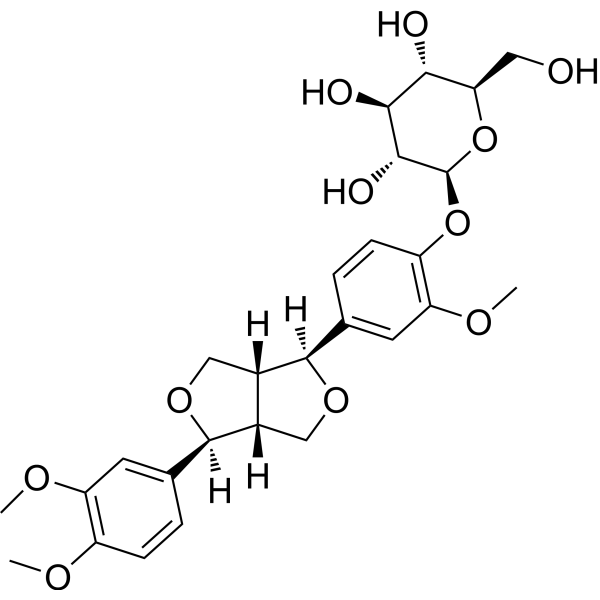
- HY-N9112
-
|
|
Bacterial
|
Infection
|
|
Eriodictyol 7, 3'-dimethyl ether (compound 11) is the first flavonoid extract from B. riparia with antioxidant and antibacterial activity .
|
-
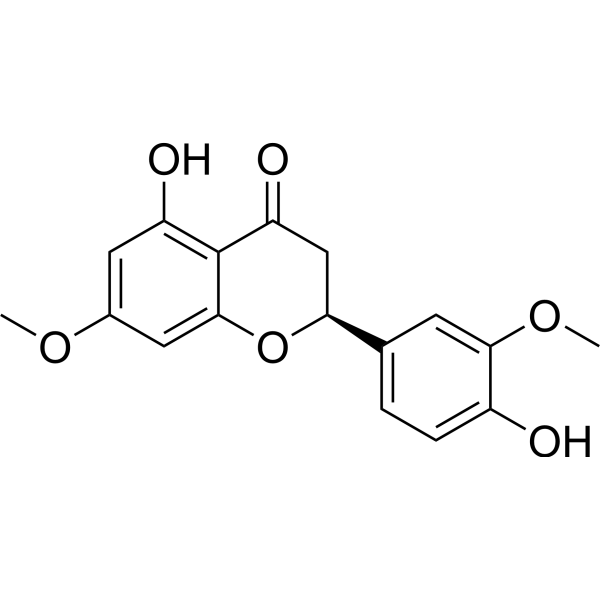
- HY-N1655
-
|
|
Others
|
Cancer
|
|
2,3-Dihydroamentoflavone 7,4'-dimethyl ether is a biflavonoid, which can be isolated from the aerial parts of Selaginella delicatula. 2,3-Dihydroamentoflavone 7,4'-dimethyl ether exhibits cytotoxicities against P-388 and HT-29 cell lines, with ED50 (median effective dose) values of 3.50 and 5.25 µg/mL, respectively .
|
-

- HY-135801
-
|
|
Others
|
Metabolic Disease
|
|
Arachidonyl alcohol is a long-chain primary fatty alcohol. Arachidonyl alcohol is used as a substrate for the production of several ether lipids possessing beneficial functions .
|
-
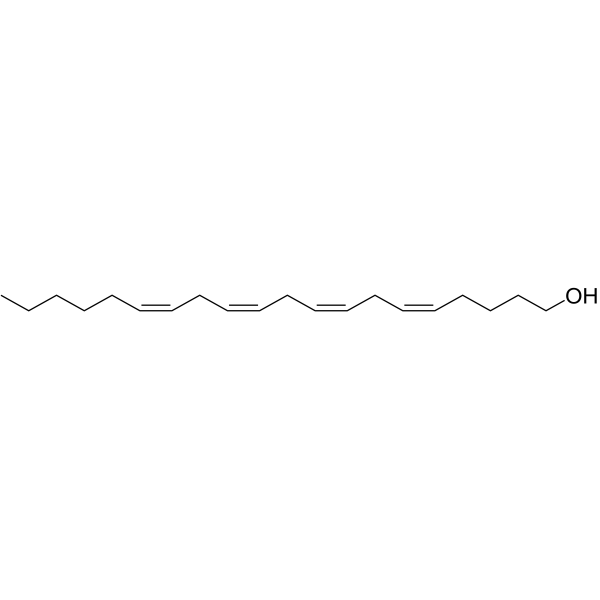
- HY-W013253
-
|
|
PROTAC Linkers
|
Cancer
|
|
Boc-11-aminoundecanoic acid is an Alkyl/ether-based PROTAC linker can be used in the synthesis of MS432 (HY-130602) .
|
-
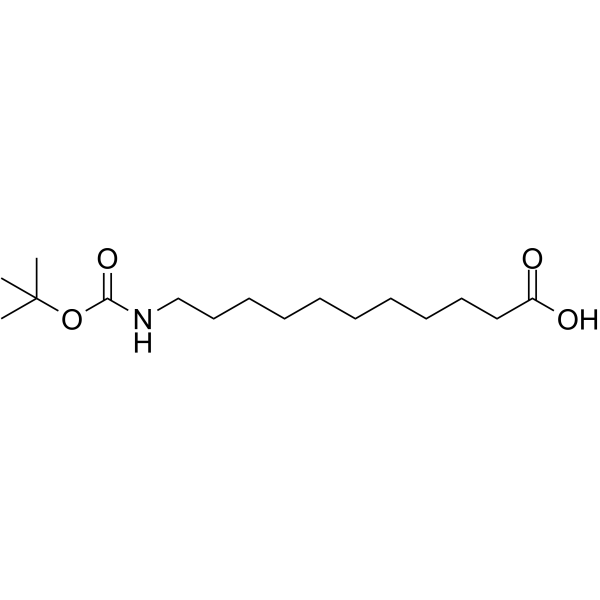
- HY-133388
-
|
|
PROTAC Linkers
|
Cancer
|
|
Boc-NH-C12-NH2 is an alkyl/ether-based PROTAC linker that can be used in the synthesis of PROTACs .
|
-
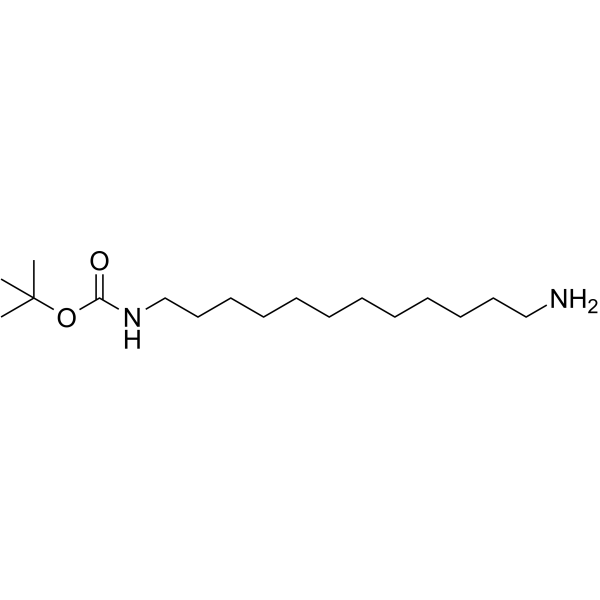
- HY-108293
-
|
|
Estrogen Receptor/ERR
|
Endocrinology
Cancer
|
|
Promestriene is a synthetic diethyl-ether of estradiol and a locally effective estrogen. Promestriene has an efficient action on vaginal atrophy while it is minimally absorbed .
|
-
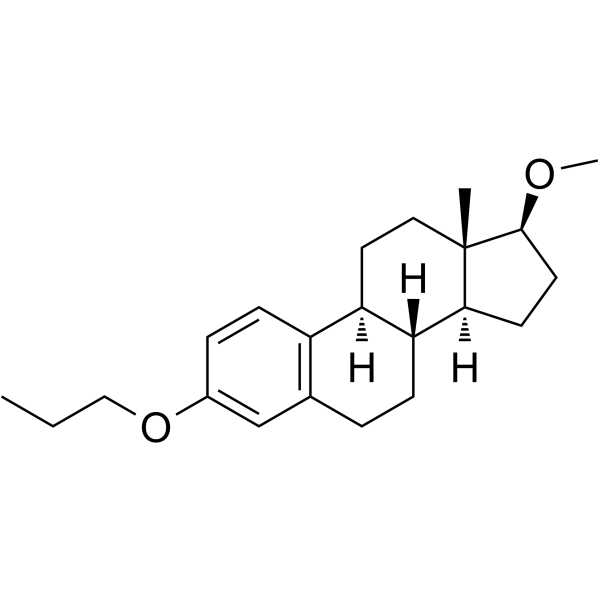
- HY-N9961
-
|
|
Others
|
Others
|
|
2-Hydroxyl emodin-1-methyl ether (Compound 5) is an anthraquinone that can be isolated from the seeds of Cassia obtusifolia .
|
-
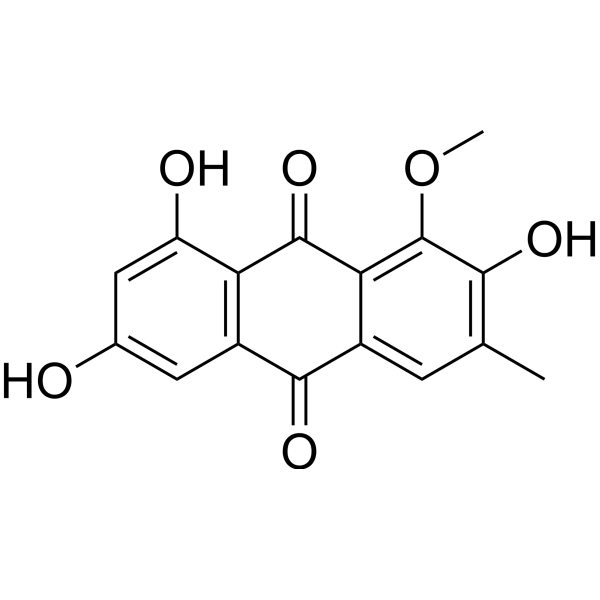
- HY-W133953
-
|
Propylene glycol monomethyl ether acetate
|
Biochemical Assay Reagents
|
Others
|
|
1-Methoxy-2-propyl acetate (Propylene glycol monomethyl ether acetate) is utilized as solvent, especially in the electronic-grade semiconductor industry .
|
-

- HY-152899
-
|
|
Endogenous Metabolite
|
Cardiovascular Disease
|
|
Selachyl alcohol is an orally active antihypertensive agent. Selachyl alcohol has similar activities with antihypertensive neutral renomedullary lipid (ANRL). Selachyl alcohol is an alkylglycerol compound in shark liver oil mixture with properties that reduce lung metastasis. Selachyl alcohol can be used for cardiovascular disease research .
|
-
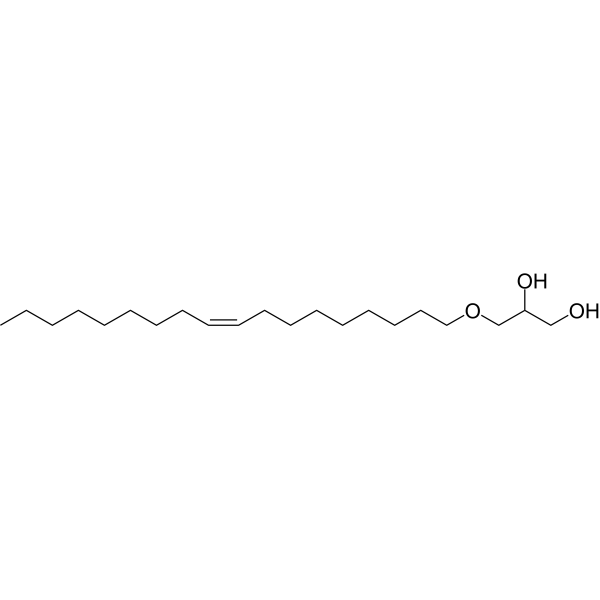
- HY-130488
-
|
|
PROTAC Linkers
|
Cancer
|
|
Hydroxy-PEG2-C2-PFP ester is a PEG/Alkyl/ether-based PROTAC linker can be used in the synthesis of PROTACs.
|
-
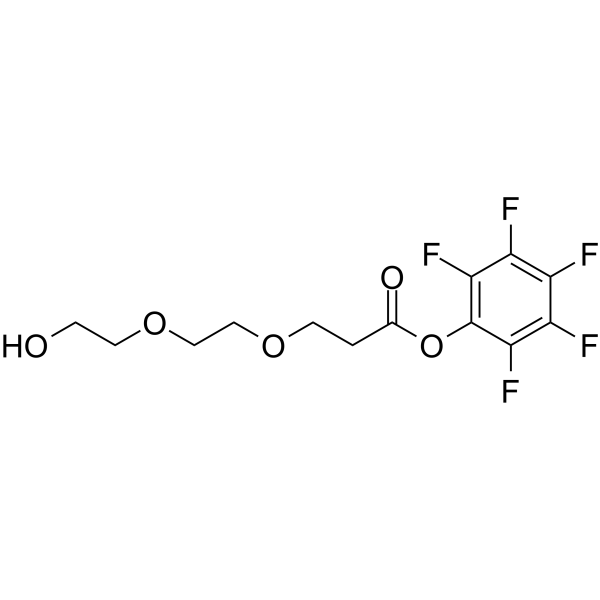
- HY-130599
-
|
|
PROTAC Linkers
|
Cancer
|
|
Hydroxy-PEG2-CH2-Boc is a PEG/Alkyl/ether-based PROTAC linker can be used in the synthesis of PROTACs.
|
-
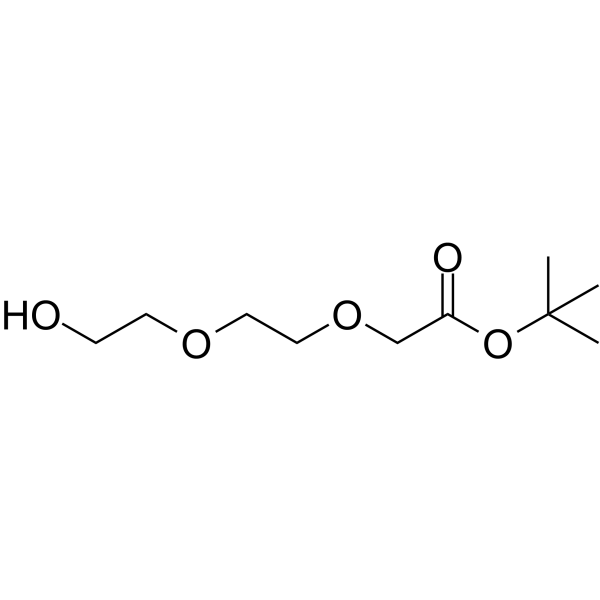
- HY-140534
-
|
|
PROTAC Linkers
|
Cancer
|
|
4-(N-Boc-amino)-1,6-heptanedioic acid is an alkyl/ether-based PROTAC linker that can be used in the synthesis of PROTACs .
|
-
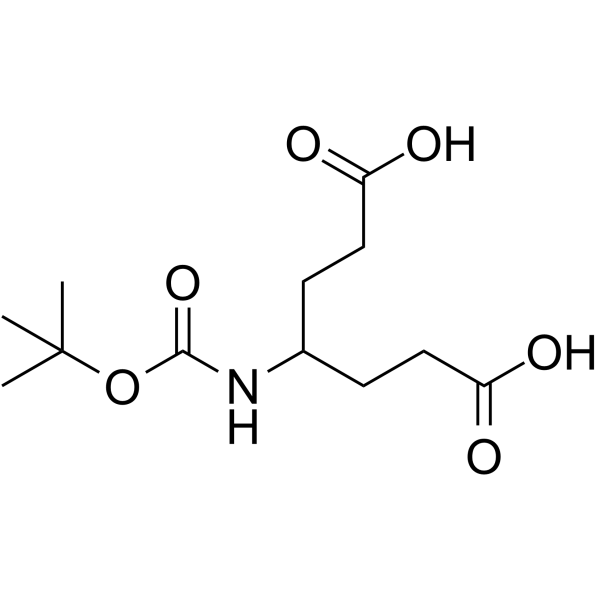
- HY-130758
-
|
|
PROTAC Linkers
|
Cancer
|
|
Ald-PEG1-C2-Boc is an alkyl/ether-based PROTAC linker that can be used in the synthesis of PROTACs .
|
-
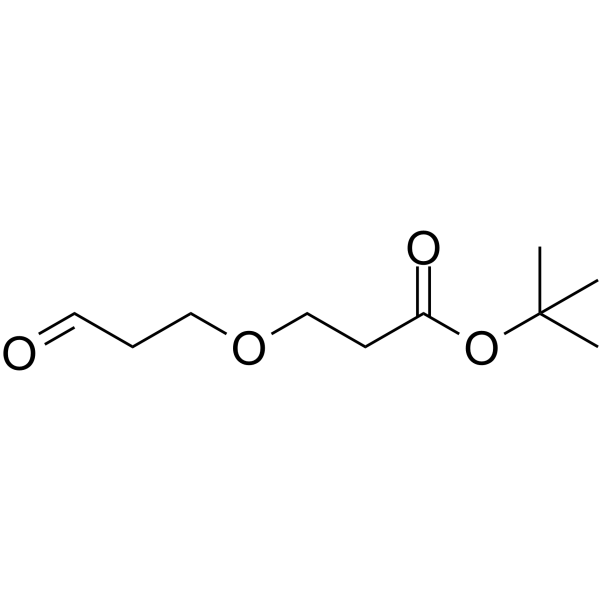
- HY-140405
-
|
|
PROTAC Linkers
|
Cancer
|
|
1-(t-Boc-Aminooxy)-3-aminooxy-propane is an alkyl/ether-based PROTAC linker that can be used in the synthesis of PROTACs .
|
-
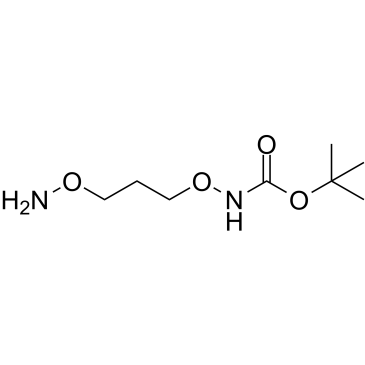
- HY-N1770
-
|
3,4-Didehydrosapriparaquione
|
Others
|
Others
|
|
12-Hydroxysapriparaquinone (compound 8) is a rearranged 4,5-seco-abietane diterpenoid isolated from the petroleum ether extract of the root of Salvia rhytidea .
|
-
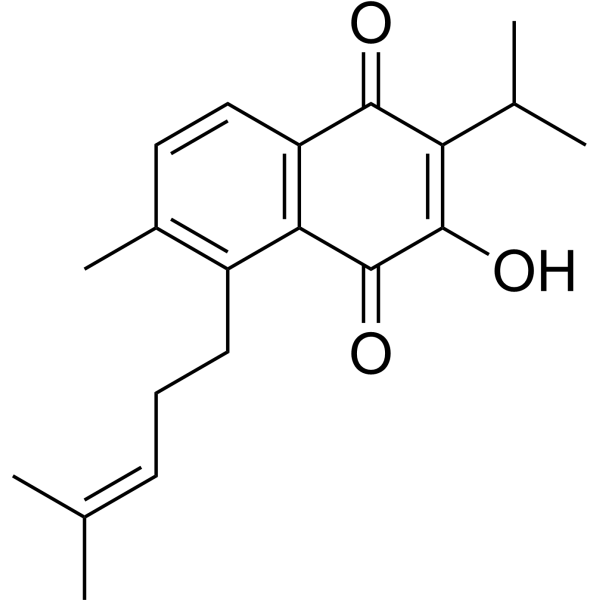
- HY-135592
-
|
|
Others
|
Endocrinology
|
|
LY88074 Methyl ether (Example 2) is useful for the inhibition of the various estrogen deficient conditions, which are associated with estrogendeprivation syndrome including osteoporosis and hyperlipidemia .
|
-
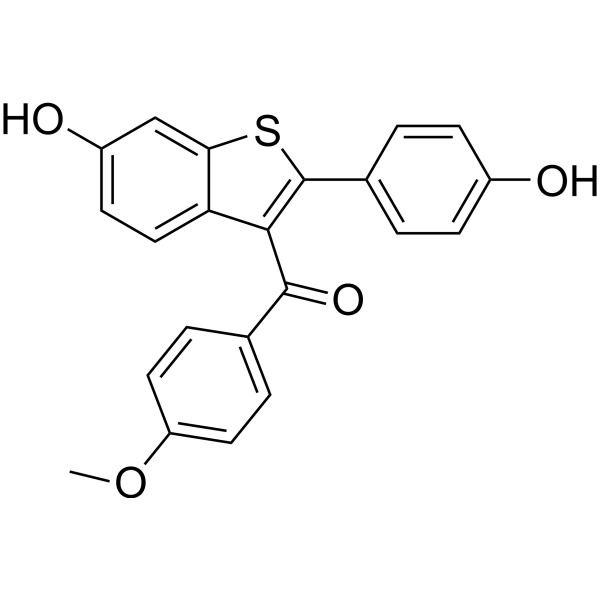
- HY-130520
-
|
|
PROTAC Linkers
|
Cancer
|
|
Bromoacetamido-PEG4-C2-Boc is a PEG- and Alkyl/ether-based PROTAC linker can be used in the synthesis of PROTACs .
|
-
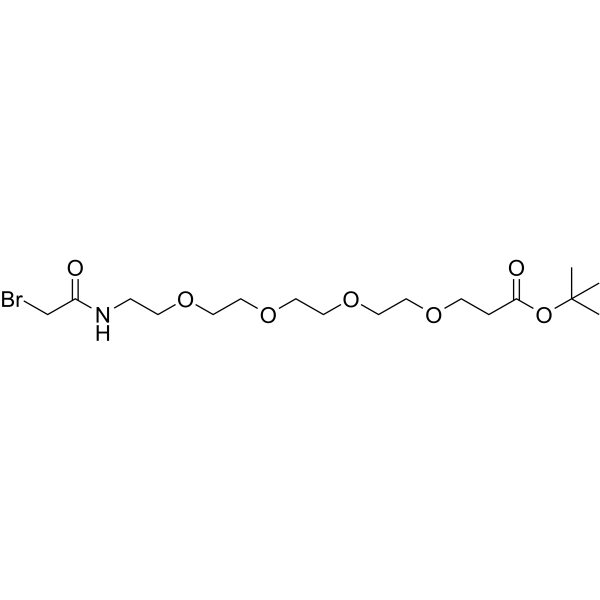
- HY-130536
-
|
|
PROTAC Linkers
|
Cancer
|
|
Br-PEG4-CH2-Boc is a PEG- and Alkyl/ether-based PROTAC linker can be used in the synthesis of PROTACs .
|
-
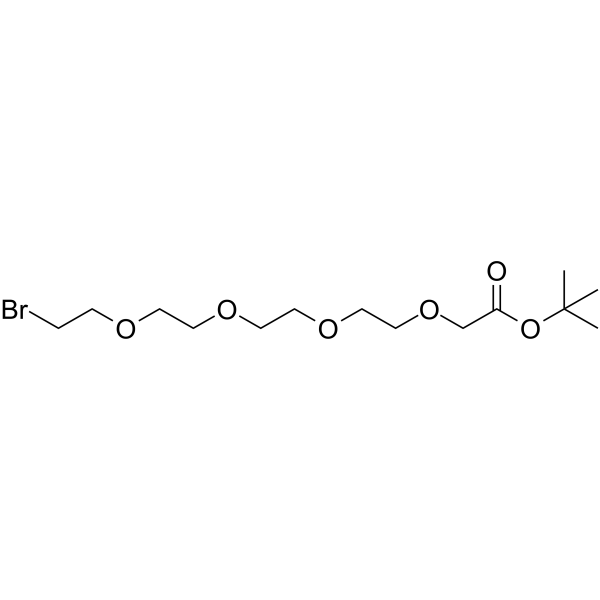
- HY-130330
-
|
|
PROTAC Linkers
|
Cancer
|
|
Ald-CH2-PEG5-Boc is a PEG- and Alkyl/ether-based PROTAC linker can be used in the synthesis of PROTACs .
|
-

- HY-W017829
-
|
|
PROTAC Linkers
|
Cancer
|
|
1,7-Bis-Boc-1,4,7-triazaheptane is an alkyl/ether-based PROTAC linker that can be used in the synthesis of PROTACs .
|
-
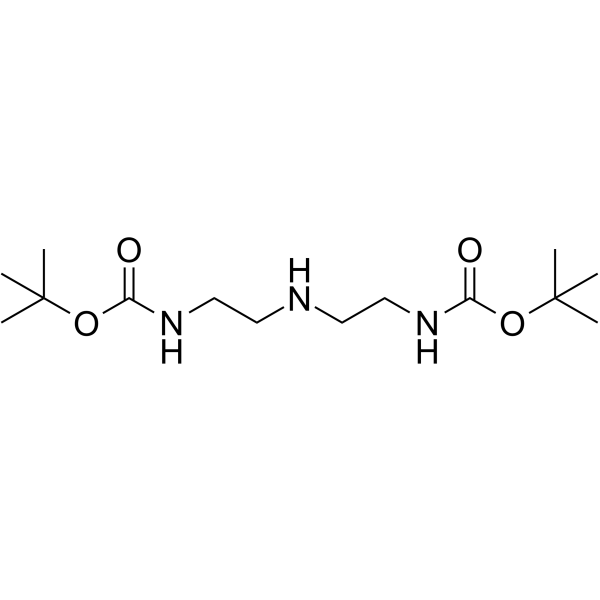
- HY-140336
-
|
|
PROTAC Linkers
|
Cancer
|
|
C-NH-Boc-C-Bis-(C-PEG1-Boc) is an alkyl/ether-based PROTAC linker that can be used in the synthesis of PROTACs .
|
-
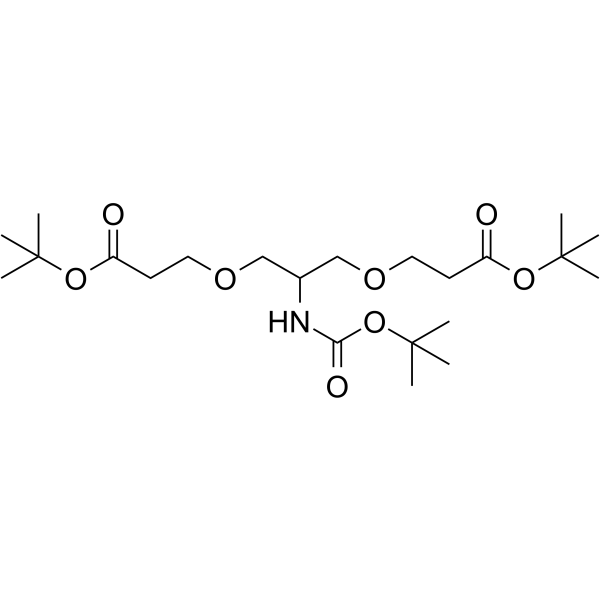
- HY-140256
-
|
|
PROTAC Linkers
|
Cancer
|
|
NH-bis(PEG2-C2-Boc) is an alkyl/ether-based PROTAC linker that can be used in the synthesis of PROTACs .
|
-
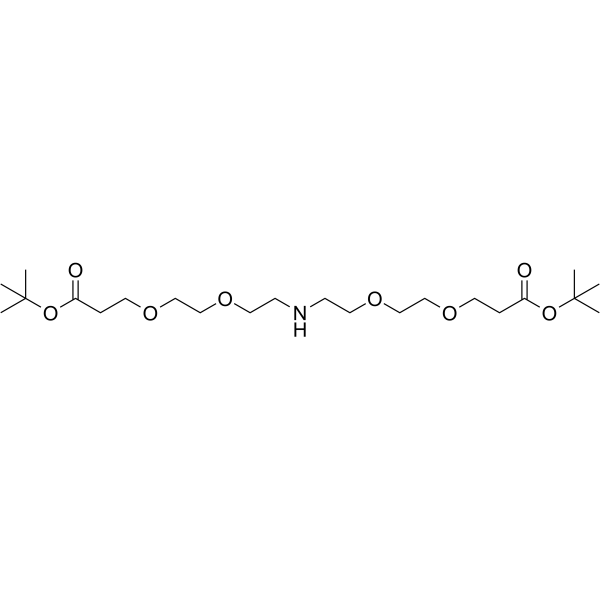
- HY-140252
-
|
|
PROTAC Linkers
|
Cancer
|
|
NH-bis(C1-PEG1-Boc) is an alkyl/ether-based PROTAC linker that can be used in the synthesis of PROTACs .
|
-
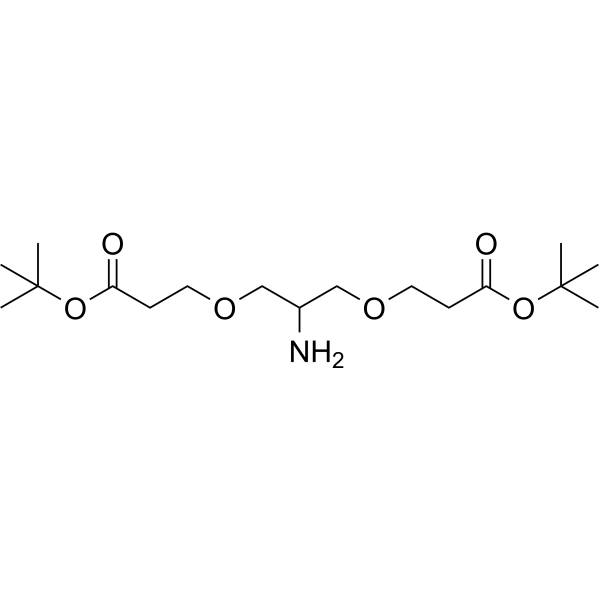
- HY-141117
-
|
|
PROTAC Linkers
|
Cancer
|
|
Boc-NH-PEG2-C2-NHS ester is an alkyl/ether-based PROTAC linker that can be used in the synthesis of PROTACs .
|
-

- HY-140750
-
|
|
PROTAC Linkers
|
Cancer
|
|
Benzyloxy carbonyl-PEG3-C2-Boc is an alkyl/ether-based PROTAC linker that can be used in the synthesis of PROTACs .
|
-
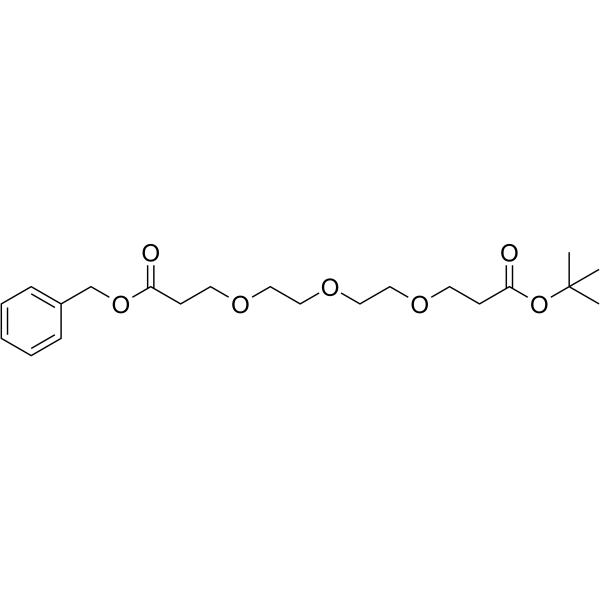
- HY-N1798
-
-

- HY-P1440
-
-
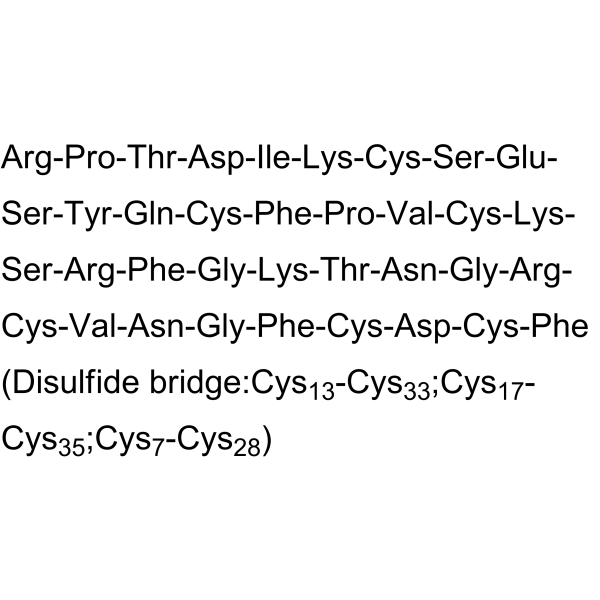
- HY-N12212
-
|
|
Others
|
Others
|
|
Triptonoterpene Me ether (compound 5) is a rosinane-type diterpenoid compound, which can be isolated from the traditional Chinese medicine Tripterygium wilfordii Hook. f .
|
-

- HY-W250166
-
|
|
Biochemical Assay Reagents
|
Others
|
|
Poly(ethylene glycol) (12) tridecyl ether is a nonionic surfactant belonging to the family of ethoxylated fatty alcohols. It is commonly used as an emulsifier, solubilizer, and wetting agent in a variety of industrial and personal care products. Poly(ethylene glycol)(12) tridecyl ether has various properties that make it suitable for these applications, including its low toxicity, high solubility in water and organic solvents, and ability to stabilize emulsions. In addition, it can be used as a raw material for the production of other surfactants and specialty chemicals.
|
-
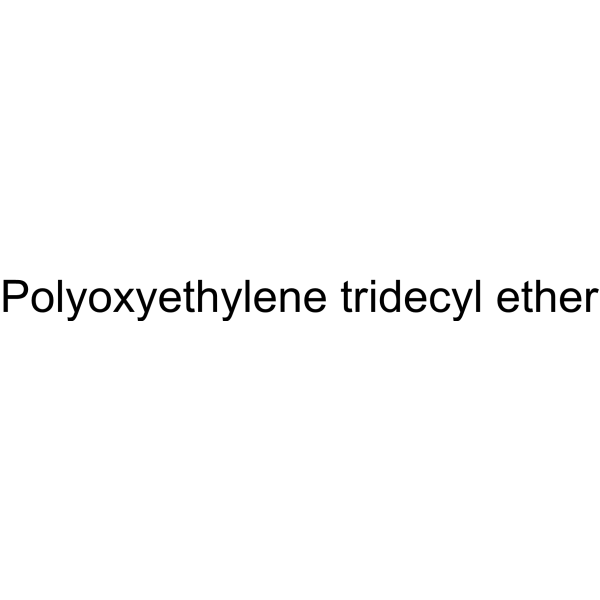
- HY-N12838
-
|
|
Others
|
Others
|
|
Glycerol-2-(3-methoxy-4-hydroxybenzoicacid)ether is a phenolic derivative and can be isolated from Picrasma quassioides (D. Don) Benn .
|
-

- HY-N3212
-
|
|
Others
|
Infection
|
|
Naringenin trimethyl ether is a constituent of twigs and leaves of Aglaia duperreana. Naringenin trimethyl exhibits significant molluscicidal activity, with a LC50 of 3.9 μg/ mL for P. canaliculata .
|
-
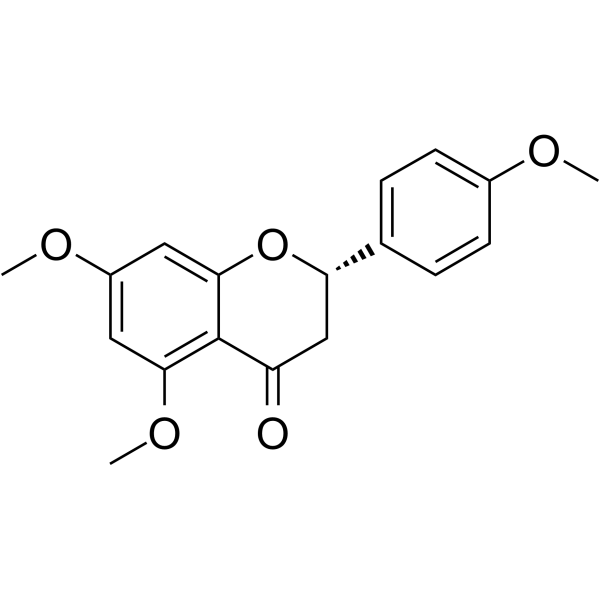
- HY-135583
-
|
|
Others
|
Endocrinology
|
|
LY88074 Trimethyl ether (Example 1) is useful for the inhibition of the various estrogen deficient conditions, which are associated with estrogen deprivation syndrome including osteoporosis and hyperlipidemia .
|
-
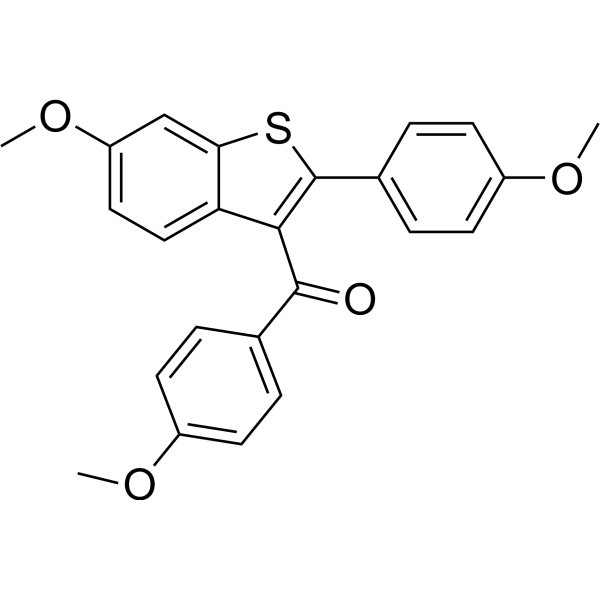
- HY-141250
-
|
|
PROTAC Linkers
|
Cancer
|
|
Hydroxy-Amino-bis(PEG1-C2-Boc) is an alkyl/ether-based PROTAC linker that can be used in the synthesis of PROTACs .
|
-
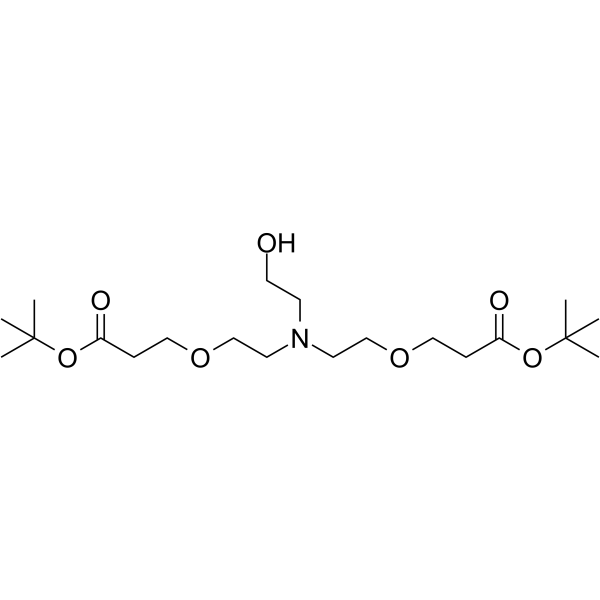
- HY-141047
-
|
|
PROTAC Linkers
|
Cancer
|
|
Bis-(N,N'-PEG4-NHS ester)-Cy5 is an alkyl/ether-based PROTAC linker that can be used in the synthesis of PROTACs .
|
-
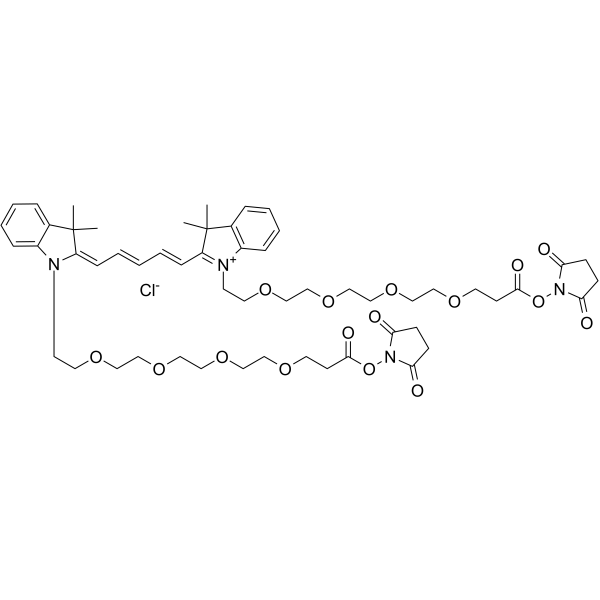
- HY-W145493
-
|
Poly(ethylene glycol) tetrahydrofurfuryl ether
|
Biochemical Assay Reagents
|
Others
|
|
Poly(ethylene glycol) tetrahydrofurfuryl ether is liquid glycogen can be easily transformed into a gel system with excellent elasticity, so it can be used as a medium for dissolving water-insoluble agents.
|
-

- HY-A0148A
-
|
SKF-102886; WR-171669 hydrochloride
|
Parasite
|
Infection
|
|
Halofantrine hydrochloride (SKF-102886) is a blocker of delayed rectifier potassium current via the inhibition of human-ether-a-go-go-related gene (HERG) channel and a potent antimalarial compound .
|
-
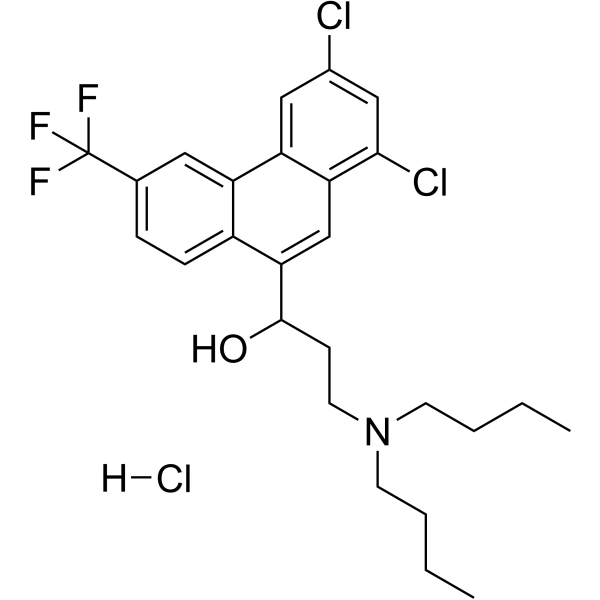
- HY-N7116
-
|
2-Methoxy-1,4-naphthoquinone
|
Fungal
Bacterial
|
Infection
|
|
Lawsone methyl ether (2-Methoxy-1,4-naphthoquinone), isolated from Impatiens balsamina L. and Swertia calycina, exhibits potent antifungal and antibacterial activities .
|
-

- HY-23167
-
|
|
PROTAC Linkers
|
Cancer
|
|
Acid-PEG4-C2-Boc is a PEG- and Alkyl/ether-based PROTAC linker can be used in the synthesis of PROTACs for the inhibition of mTOR .
|
-
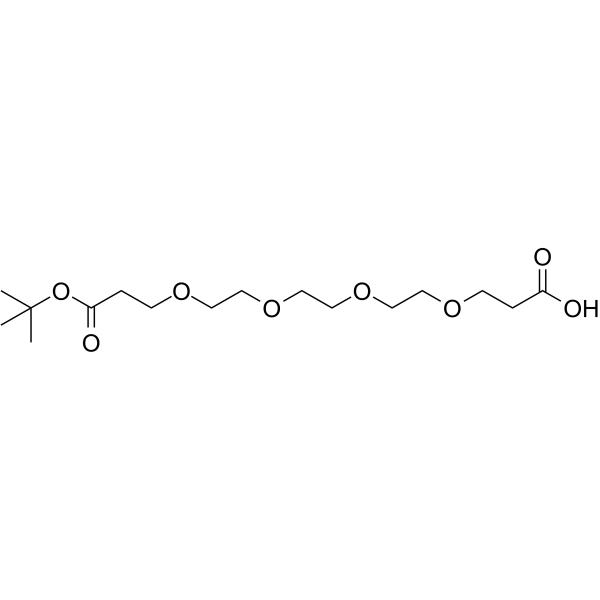
- HY-140157
-
|
|
PROTAC Linkers
|
Cancer
|
|
N-Me-N-bis(PEG4-C2-Boc) is an alkyl/ether-based PROTAC linker that can be used in the synthesis of PROTACs .
|
-
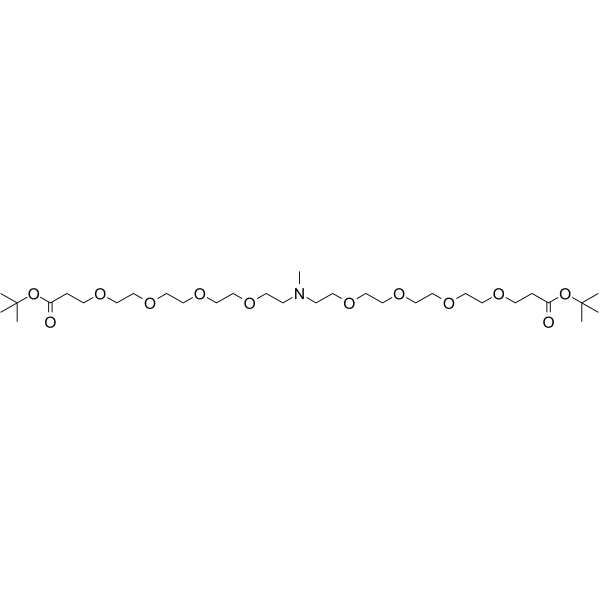
- HY-N7641
-
|
Quercetin 3′,4′,7-trimethyl ether
|
Others
|
Others
|
|
3',4',7-Trimethoxyquercetin (Quercetin 3′,4′,7-trimethyl ether) is a polymethoxylated flavone isolated from the plant of genus Taraxacum, has antioxidant activity .
|
-
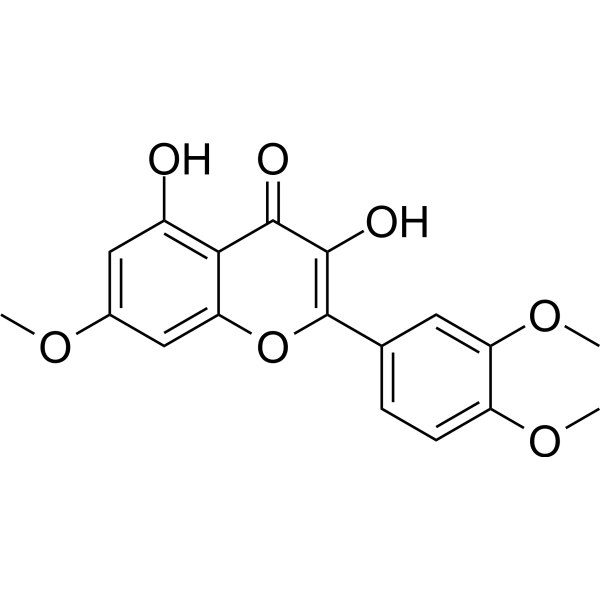
- HY-163397
-
|
|
Fungal
|
Infection
|
|
Antibacterial agent 196 (compound 6b) is a coumarin derivative containing oxime ether structure, and shows antifungal activity, with the EC50 of 0.46 μg/mL against Rhizoctonia solani .
|
-
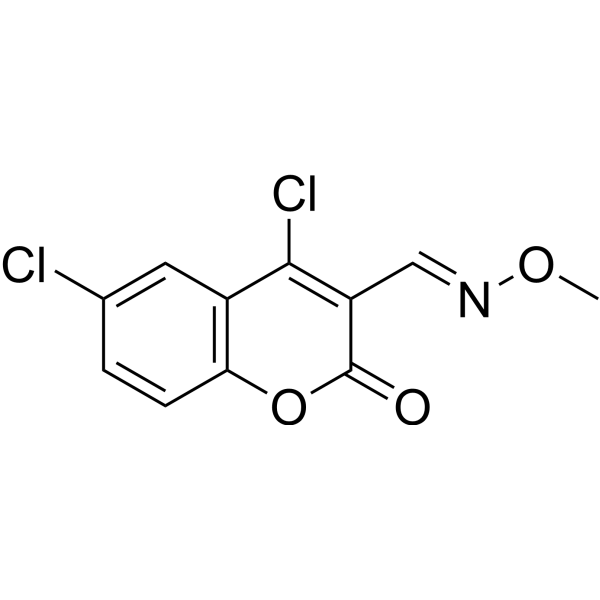
- HY-126313
-
|
PROTAC Linker 29
|
PROTAC Linkers
|
Cancer
|
|
BnOH-NH-bis-(C2-S)-propane-O-isoprene ester (PROTAC Linker 29) is an alkyl ether-based PROTAC linker can be used in the synthesis of PROTACs .
|
-
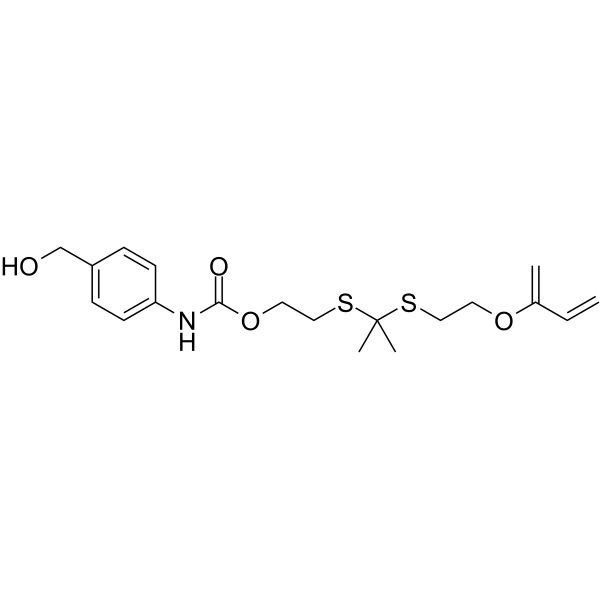
- HY-125888
-
|
PROTAC Linker 32
|
PROTAC Linkers
|
Cancer
|
|
Boc-NH-C6-amido-C4-acid (PROTAC Linker 32) is an alkyl ether-based PROTAC linker can be used in the synthesis of PROTACs .
|
-
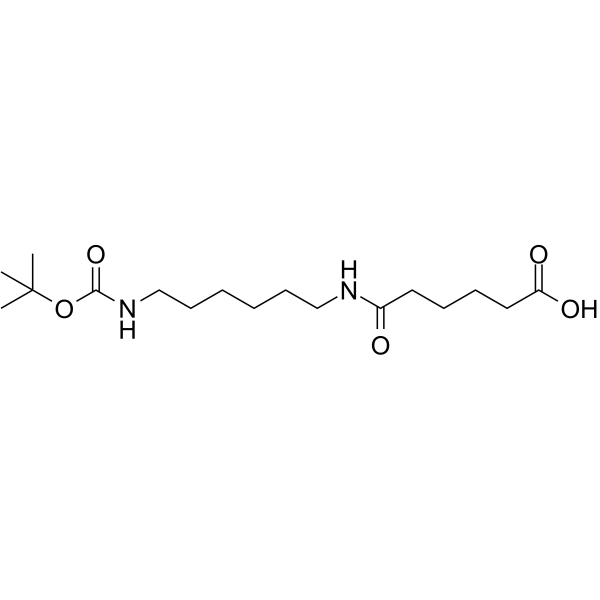
- HY-W278867
-
|
cis-Pinosylvin dimethyl ether
|
Others
|
Inflammation/Immunology
|
|
trans-3,5-Dimethoxystilbene (cis-Pinosylvin dimethyl ether) is a natural product that has been isolated from the benzene extract of the bark of jack pine (Pinus bunksiuna) .
|
-

- HY-130537
-
|
|
PROTAC Linkers
ADC Linker
|
Cancer
|
|
Azido-PEG6-alcohol is a PEG-based PROTAC linker that can be used in the synthesis of PROTACs . Azido-PEG6-alcohol is also a non-cleavable 6 unit PEG ADC linker used in the synthesis of antibody-drug conjugates (ADCs) . Azido-PEG6-alcohol is a click chemistry reagent, it contains an Azide group and can undergo copper-catalyzed azide-alkyne cycloaddition reaction (CuAAc) with molecules containing Alkyne groups. Strain-promoted alkyne-azide cycloaddition (SPAAC) can also occur with molecules containing DBCO or BCN groups.
|
-
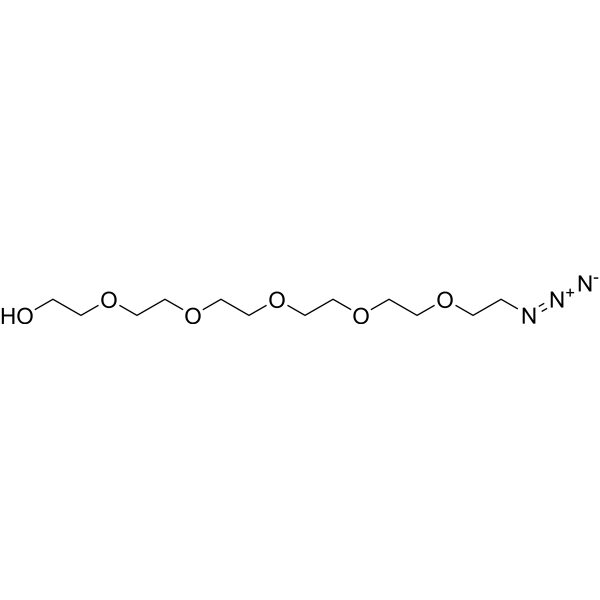
- HY-W044078
-
|
|
ADC Linker
PROTAC Linkers
|
Cancer
|
|
N-Boc-diethanolamine is an Alkyl/ether-based PROTAC linker can be used in the synthesis of PROTACs. N-Boc-diethanolamine is a cleavable ADC linker used in the synthesis of antibody-drug conjugates (ADCs) .
|
-
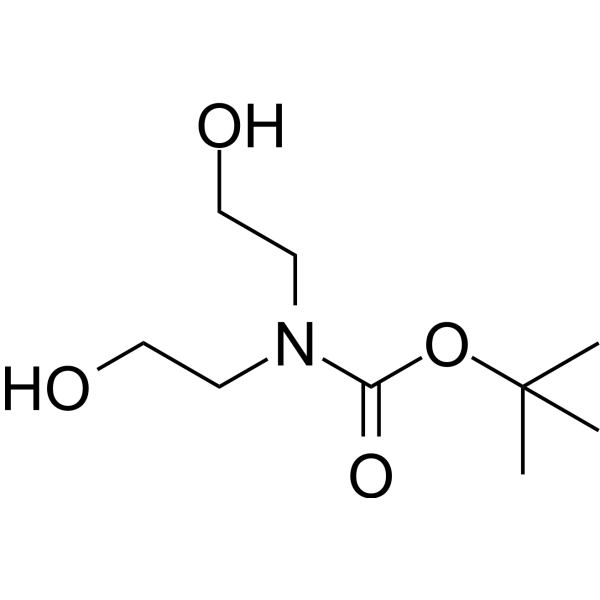
- HY-D0145
-
|
Resorufin ethyl ether
|
Cytochrome P450
NO Synthase
|
Others
|
|
7-Ethoxyresorufin (Resorufin ethyl ether) is a fluorometric substrate and competitive inhibitor of cytochrome P450, especially CYP1A1. 7-Ethoxyresorufin also inhibits NO synthase .
|
-

- HY-130049
-
|
|
Bacterial
|
Infection
|
|
Lucidin ω-ethyl ether (compound 17) is an anthraquinone metabolite isolated from the root part of Prismatomeris filamentosa with some antibacterial activity against Gram-positive and Gram-negative bacteria .
|
-
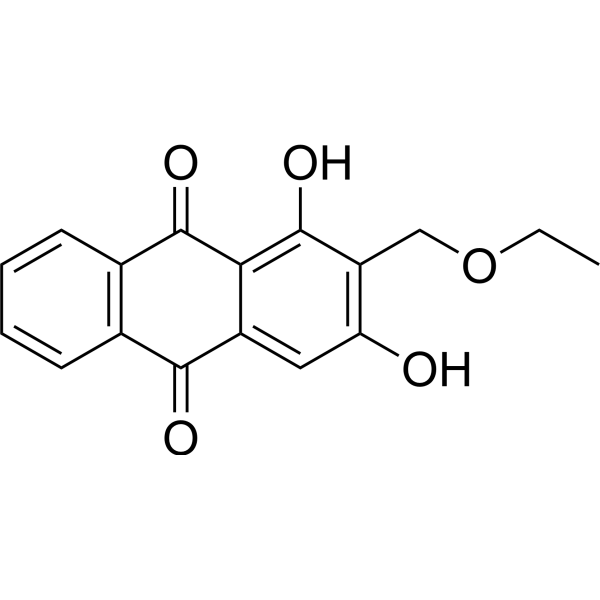
- HY-N4167
-
|
Galangin 3-methyl ether; 3-Methylgalangin
|
Bacterial
|
Infection
|
|
3-O-Methylgalangin (Galangin 3-methyl ether) is a natural flavonoid compound from the rhizome of Alpinia officinarum (AO) with antibacterial activities, which also inhibits pancreatic lipase .
|
-
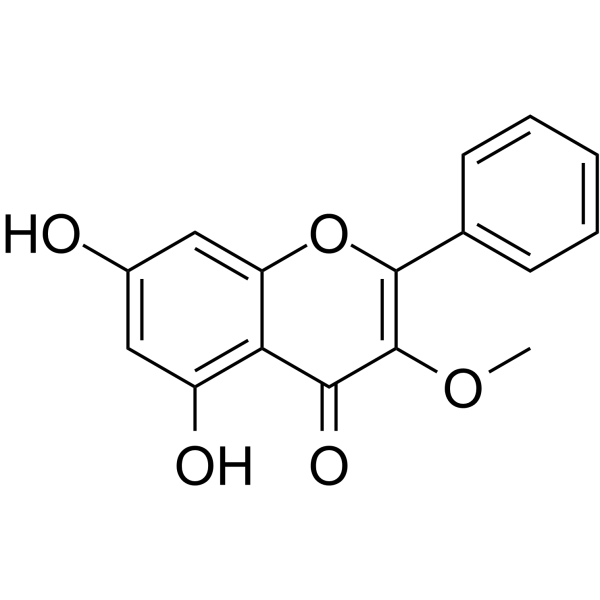
- HY-N1933
-
|
|
Potassium Channel
|
Cardiovascular Disease
|
|
Allocryptopine, a derivative of tetrahydropalmatine, is extracted from Macleaya cordata (Thunb.) Pers. Papaveraceae. Allocryptopine has antiarrhythmic effects and potently blocks human ether-a-go-go related gene (hERG) current .
|
-
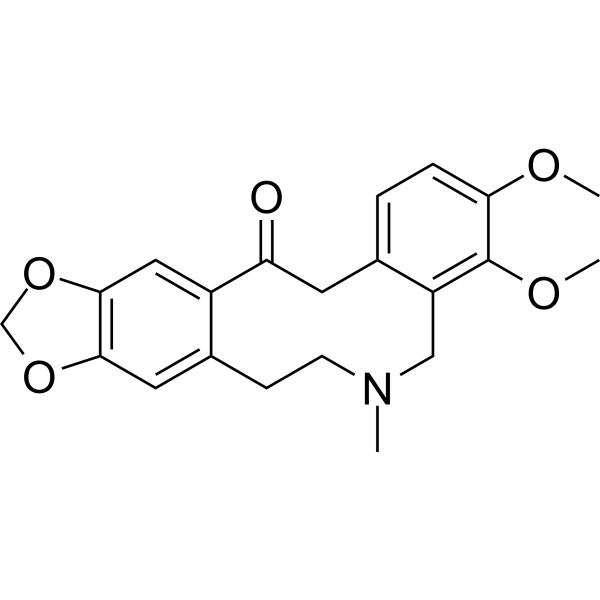
- HY-130549
-
|
|
PROTAC Linkers
|
Cancer
|
|
Acid-PEG3-C2-Boc is a PEG- and Alkyl/ether-based PROTAC linker can be used in the synthesis of PROTACs for the degradation of EGFR and inhibition of mTOR .
|
-

- HY-114056
-
|
|
Others
|
Cancer
|
|
AS115 is a potent and selective KIAA1363 inactivator with IC50 value of 150 nM. KIAA1363 is a 2-acetyl monoacylglycerol ether (MAGE) hydrolase that is upregulated in aggressive cancers of various tissues .
|
-
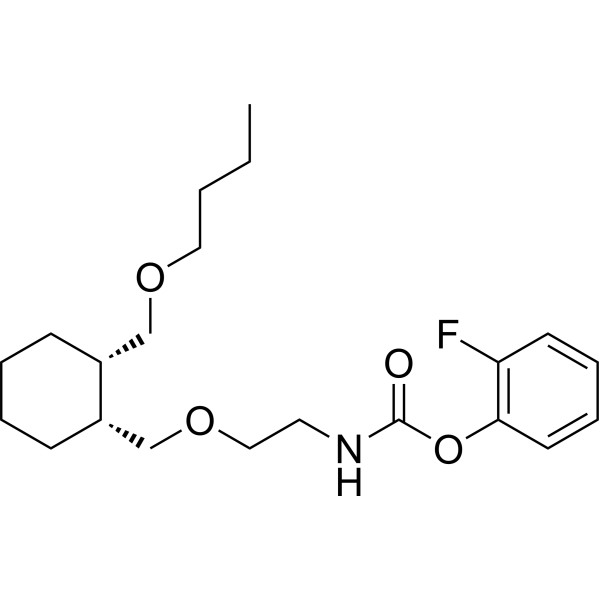
- HY-112075
-
|
|
Potassium Channel
Calcium Channel
|
Cardiovascular Disease
|
|
Lidoflazine is a high affinity blocker of the HERG (human ether-a-go-go-related gene) K + channel. Lidoflazine is an antianginal calcium channel blocker that carries a significant risk of QT interval prolongation and ventricular arrhythmia .
|
-
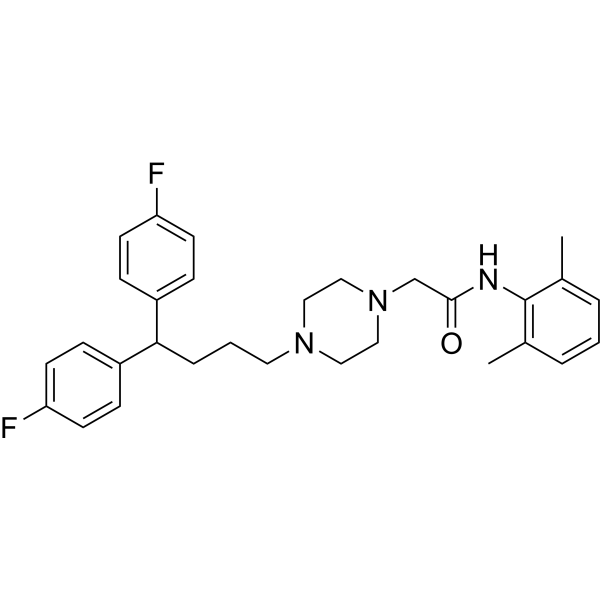
- HY-30105
-
|
|
PROTAC Linkers
|
Cancer
|
|
N-Boc-piperazine is a Alkyl/ether-based PROTAC linker that can be used in the synthesis of PROTAC PD-1/PD-L1 degrader-1 (HY-131183) .
|
-

- HY-N5060
-
|
4-Allylanisole
|
Parasite
|
Neurological Disease
|
|
Estragole (4-Allylanisole), a relatively nontoxic volatile terpenoid ether, is a major component of the essential oil of many plants. Estragole dose-dependently blocks nerve excitability . Estragole displays anti-toxoplasma activity .
|
-

- HY-W016087
-
|
|
PROTAC Linkers
|
Cancer
|
|
Monoethyl pimelate is a PROTAC linker, which refers to the alkyl/ether composition. Monoethyl pimelate can be used in the synthesis of (S,R,S)-AHPC-Me-C7 ester, a specific BCL-XL PROTAC degrader .
|
-
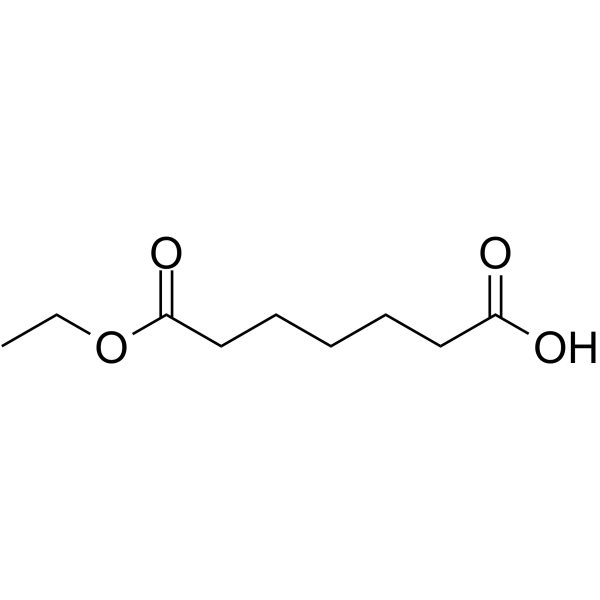
- HY-W067489
-
|
|
PROTAC Linkers
|
Cancer
|
|
NH2-PEG1-CH2CH2-Boc is a PEG- and Alkyl/ether-based PROTAC linker can be used in the synthesis of PROTACs .
|
-
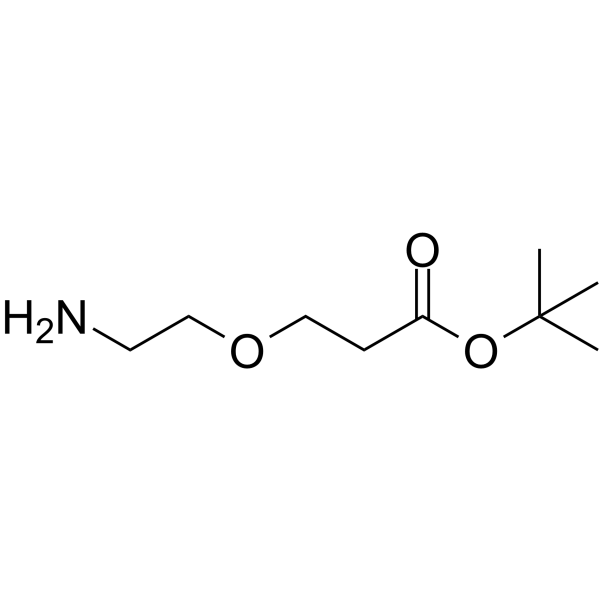
- HY-108293R
-
|
|
Estrogen Receptor/ERR
|
Endocrinology
Cancer
|
|
Promestriene (Standard) is the analytical standard of Promestriene. This product is intended for research and analytical applications. Promestriene is a synthetic diethyl-ether of estradiol and a locally effective estrogen. Promestriene has an efficient action on vaginal atrophy while it is minimally absorbed .
|
-

- HY-130770
-
|
|
PROTAC Linkers
|
Cancer
|
|
Ald-CH2-PEG3-CH2-Boc is a PEG- and Alkyl/ether-based PROTAC linker can be used in the synthesis of SGK3 kinase PROTAC degrader .
|
-
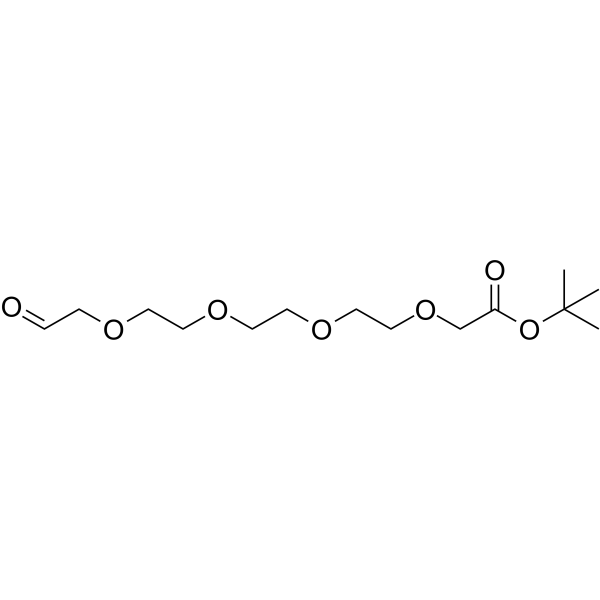
- HY-N1875
-
|
p-Hydroxybenzyl Et ether
|
Others
|
Inflammation/Immunology
|
|
4-(Ethoxymethyl)phenol (p-Hydroxybenzyl Et ether) is a potent antioxidant from Amburana cearensis leaf extract, with in vitro cytogenotoxic properties. Amburana cearensis leaves can be used foe the research of respiratory diseases and inflammations .
|
-
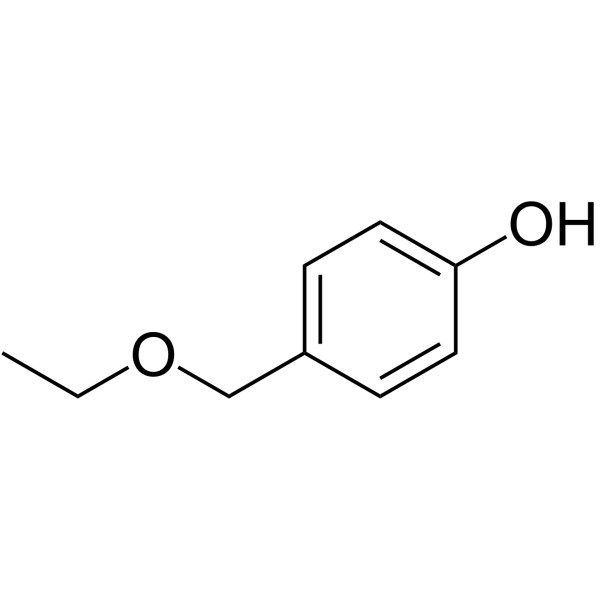
- HY-B0264
-
|
Guaiacol glyceryl ether; Guaiphenesin; Glycerol guaiacolate
|
Mucin
|
Neurological Disease
Inflammation/Immunology
|
|
Guaifenesin (Guaiacol glyceryl ether), a constituent of guaiac resin from the wood of Guajacum officinale Linné, is an expectorant. Guaifenesin can alleviate cough discomfortby increasing sputum volume and decreasing its viscosity, thereby promoting effective cough .
|
-

- HY-W004701
-
|
|
PROTAC Linkers
|
Cancer
|
|
Br-C3-methyl ester is a Alkyl/ether-based PROTAC linker that can be used in the synthesis of PROTAC PD-1/PD-L1 degrader-1 (HY-131183) .
|
-
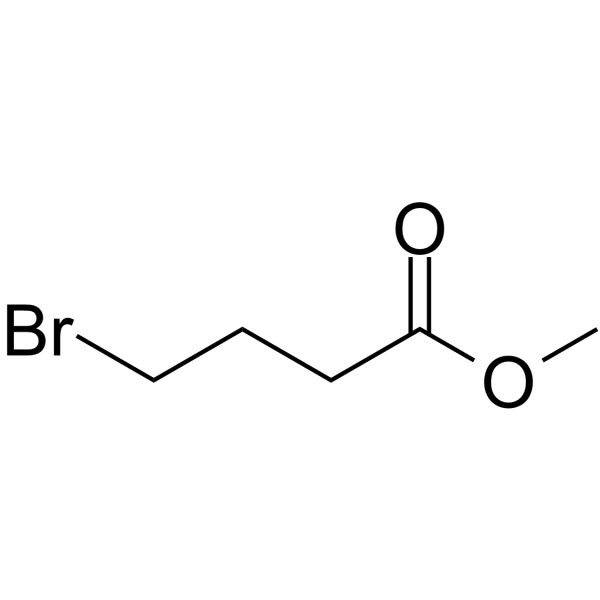
- HY-147052
-
|
|
PROTAC Linkers
|
Cancer
|
|
Boc-Pip-butyn is an Alkyl/ether-based PROTAC linker . Boc-Pip-butyn is a click chemistry reagent, itcontains an Alkyne group and can undergo copper-catalyzed azide-alkyne cycloaddition (CuAAc) with molecules containing Azide groups.
|
-
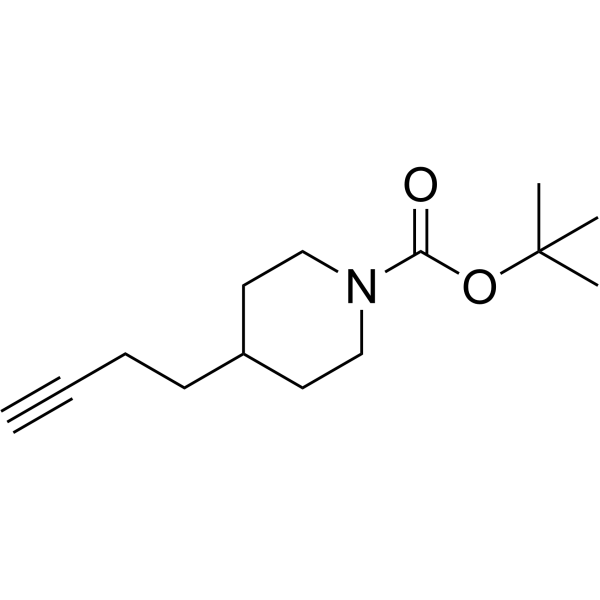
- HY-W022036
-
|
Guaethol; Guethol; NSC 180
|
Biochemical Assay Reagents
|
Others
|
|
2-Ethoxyphenol, also known as guaiacol ethyl ether, consists of a phenolic ring and an ethoxy group connected to the 2-position. The compound has a sweet, smoky flavor and is commonly used as a flavoring in foods such as baked goods, candy and beverages.
|
-
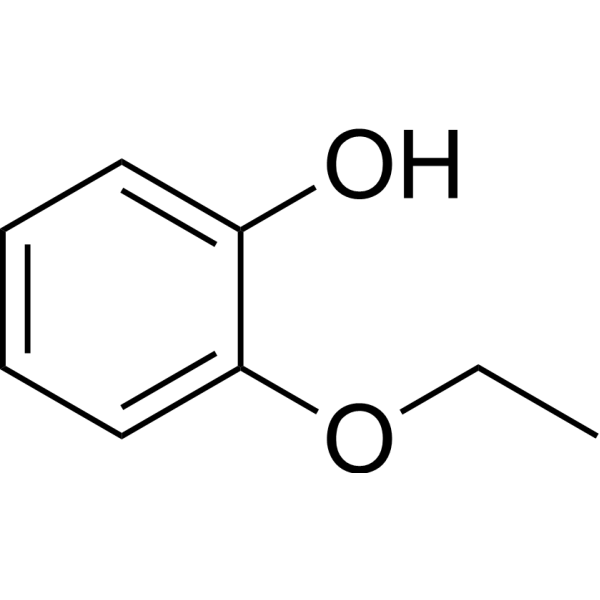
- HY-N7656
-
|
Norwogonin 5,7,8-trimethyl ether
|
NO Synthase
|
Inflammation/Immunology
|
|
5,7,8-Trimethoxyflavone (Norwogonin 5,7,8-trimethyl ether), isolated from Andrographis echioides, inhibits NO with an IC50 of 39.1 μM. 5,7,8-Trimethoxyflavone has anti-inflammatory activity .
|
-
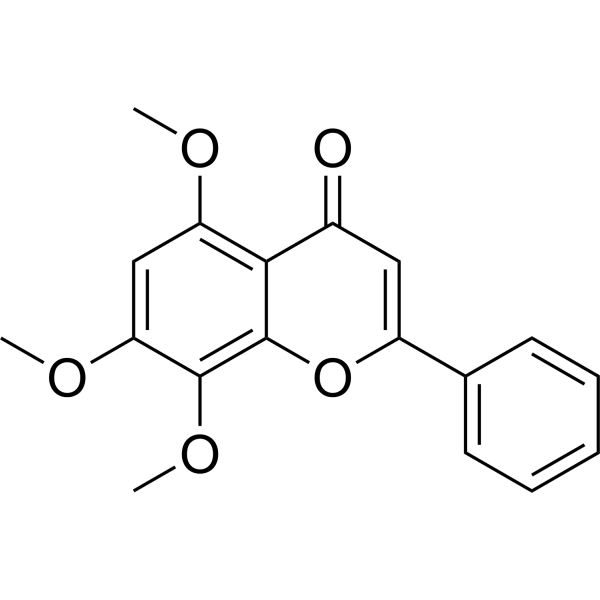
- HY-117009
-
|
|
ADC Linker
PROTAC Linkers
|
Cancer
|
|
Bis-PEG9-NHS ester is a PEG/Alkyl/ether-based PROTAC linker can be used in the synthesis of PROTACs. Bis-PEG9-NHS ester is a cleavable ADC linker used in the synthesis of antibody-drug conjugates (ADCs) .
|
-

- HY-126889
-
|
|
ADC Linker
PROTAC Linkers
|
Cancer
|
|
Bis-PEG5-NHS ester is a PEG/Alkyl/ether-based PROTAC linker can be used in the synthesis of PROTACs. Bis-PEG5-NHS ester is a cleavable ADC linker used in the synthesis of antibody-drug conjugates (ADCs) .
|
-
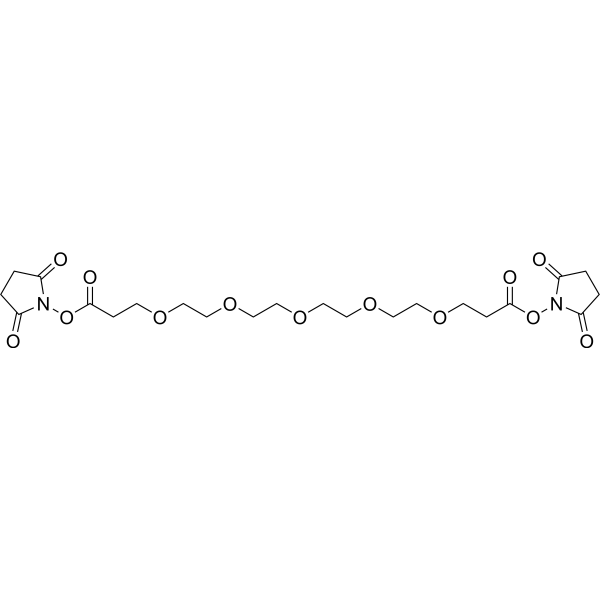
- HY-126890
-
|
|
ADC Linker
PROTAC Linkers
|
Cancer
|
|
Bis-PEG7-NHS ester is a PEG/Alkyl/ether-based PROTAC linker can be used in the synthesis of PROTACs. Bis-PEG7-NHS ester is a cleavable ADC linker used in the synthesis of antibody-drug conjugates (ADCs) .
|
-
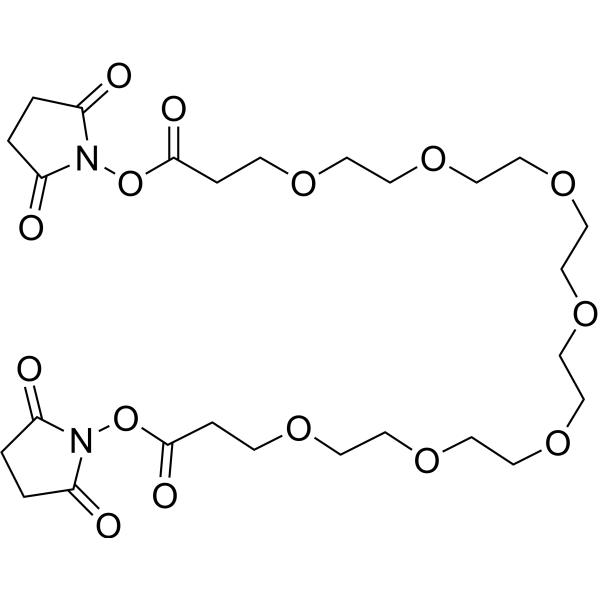
- HY-130824
-
|
|
PROTAC Linkers
ADC Linker
|
Cancer
|
|
Bis-PEG10-NHS ester is a PEG/Alkyl/ether-based PROTAC linker can be used in the synthesis of PROTACs. Bis-PEG10-NHS ester is a cleavable ADC linker used in the synthesis of antibody-drug conjugates (ADCs) .
|
-
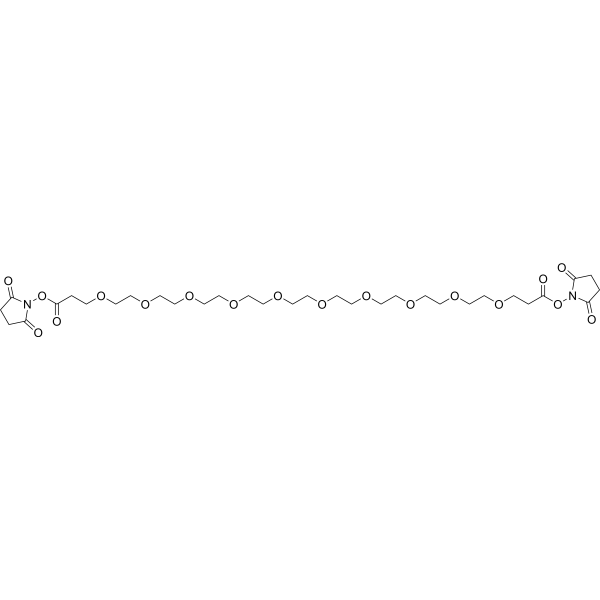
- HY-130825
-
|
|
PROTAC Linkers
ADC Linker
|
Cancer
|
|
Bis-PEG13-NHS ester is a PEG/Alkyl/ether-based PROTAC linker can be used in the synthesis of PROTACs. Bis-PEG13-NHS ester is a cleavable ADC linker used in the synthesis of antibody-drug conjugates (ADCs) .
|
-
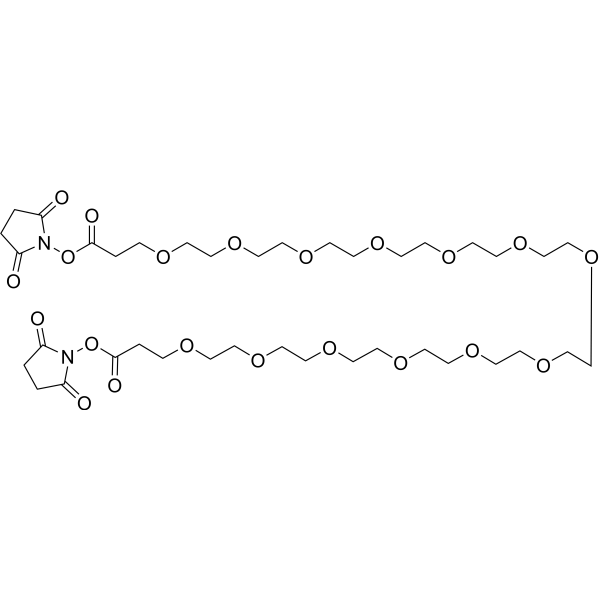
- HY-130826
-
|
|
ADC Linker
PROTAC Linkers
|
Cancer
|
|
Bis-PEG17-NHS ester is a PEG/Alkyl/ether-based PROTAC linker can be used in the synthesis of PROTACs. Bis-PEG17-NHS ester is a cleavable ADC linker used in the synthesis of antibody-drug conjugates (ADCs) .
|
-
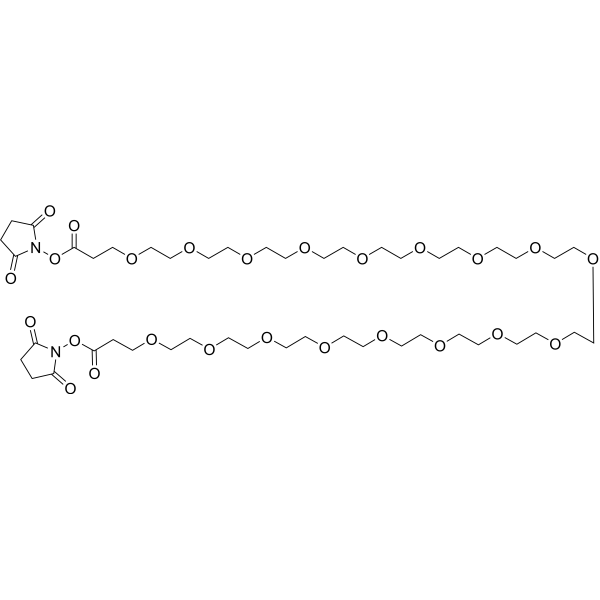
- HY-130827
-
|
|
PROTAC Linkers
ADC Linker
|
Cancer
|
|
Bis-PEG21-NHS ester is a PEG/Alkyl/ether-based PROTAC linker can be used in the synthesis of PROTACs. Bis-PEG21-NHS ester is a cleavable ADC linker used in the synthesis of antibody-drug conjugates (ADCs) .
|
-
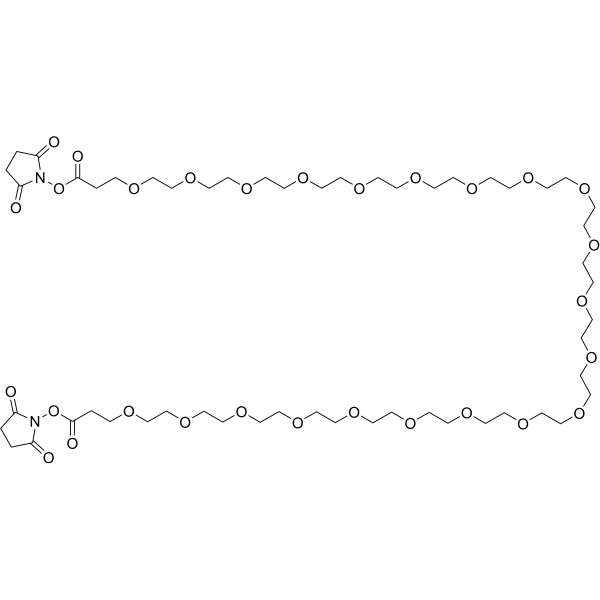
- HY-130828
-
|
|
PROTAC Linkers
ADC Linker
|
Cancer
|
|
Bis-PEG25-NHS ester is a PEG/Alkyl/ether-based PROTAC linker can be used in the synthesis of PROTACs. Bis-PEG25-NHS ester is a cleavable ADC linker used in the synthesis of antibody-drug conjugates (ADCs) .
|
-
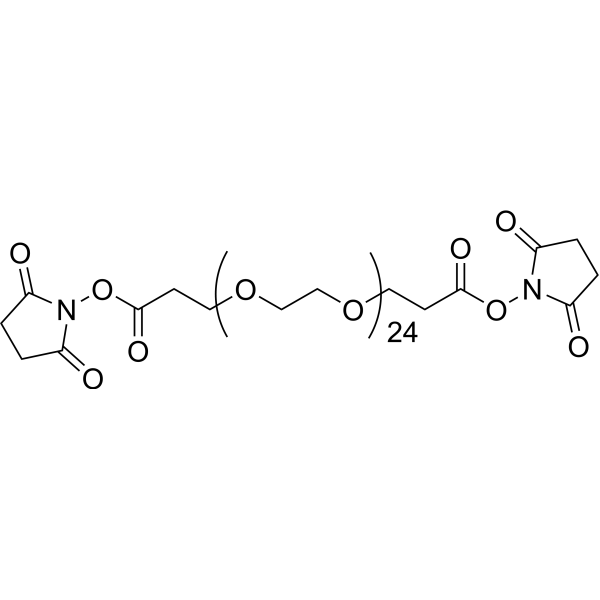
- HY-N7497
-
|
|
Others
|
Others
|
|
Protoescigenin is the main aglycone of horse chestnut saponin mixture known as escin. Protoescigenin is selected as substrate for exploratory chemistry towards selective protection, followed by propargyl ether formation and subsequent condensation with azido-monosaccharides, to obtain novel triazole linked conjugates of the triterpene .
|
-

- HY-W725473
-
|
|
Isotope-Labeled Compounds
|
Others
|
|
Oxyfluorfen-d5 is deuterated labeled Oxyfluorfen (HY-119176) Oxyfluorfen is a pre- and post-emergence diphenyl ether herbicide to control annual broad-leaved and grass weeds. Oxyfluorfen is a protoporphyrinogen oxidase inhibitor and inhibits photosynthesis by blocking chlorophyll synthesis.
|
-
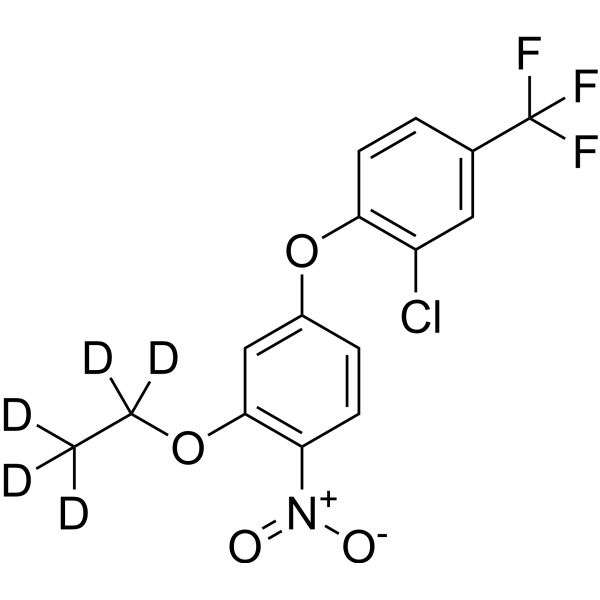
- HY-160680
-
|
|
Androgen Receptor
|
Endocrinology
|
|
AR antagonist 6 (compound 6i) is a diphenyl ether androgen receptor (AR) antagonist that binds AR at a concentration of 120 nM. AR antagonist 6 exhibits low toxicity and in vitro activity against the golden Syrian hamster ear model. .
|
-
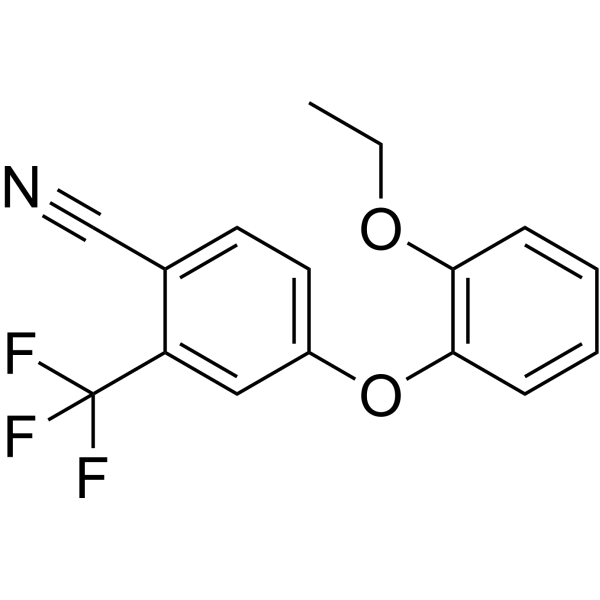
- HY-A0148AR
-
|
|
|
Infection
|
|
Halofantrine (hydrochloride) (Standard) is the analytical standard of Halofantrine (hydrochloride). This product is intended for research and analytical applications. Halofantrine hydrochloride (SKF-102886) is a blocker of delayed rectifier potassium current via the inhibition of human-ether-a-go-go-related gene (HERG) channel and a potent antimalarial compound .
|
-

- HY-120702
-
|
|
ADC Linker
PROTAC Linkers
|
Cancer
|
|
N-Boc-PEG5-bromide is a PEG/Alkyl/ether-based PROTAC linker can be used in the synthesis of PROTACs. N-Boc-PEG5-bromide is a cleavable ADC linker used in the synthesis of antibody-drug conjugates (ADCs) .
|
-

- HY-130503
-
|
|
ADC Linker
PROTAC Linkers
|
Cancer
|
|
N-Boc-PEG2-bromide is a PEG/Alkyl/ether-based PROTAC linker can be used in the synthesis of PROTACs. N-Boc-PEG2-bromide is a cleavable ADC linker used in the synthesis of antibody-drug conjugates (ADCs) .
|
-
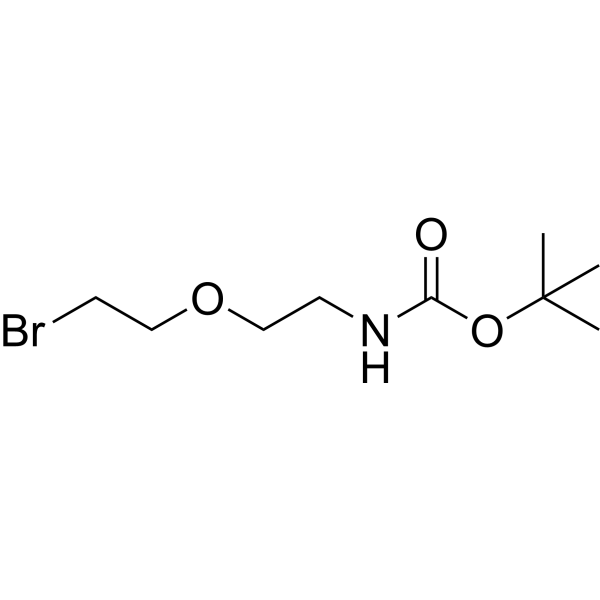
- HY-130505
-
|
|
ADC Linker
PROTAC Linkers
|
Cancer
|
|
N-Boc-PEG7-alcohol is a PEG/Alkyl/ether-based PROTAC linker can be used in the synthesis of PROTACs. N-Boc-PEG7-alcohol is a cleavable ADC linker used in the synthesis of antibody-drug conjugates (ADCs) .
|
-

- HY-W006445
-
|
|
ADC Linker
PROTAC Linkers
|
Cancer
|
|
N-Boc-PEG3-bromide is a PEG/Alkyl/ether-based PROTAC linker can be used in the synthesis of PROTACs. N-Boc-PEG3-bromide is a cleavable ADC linker used in the synthesis of antibody-drug conjugates (ADCs) .
|
-
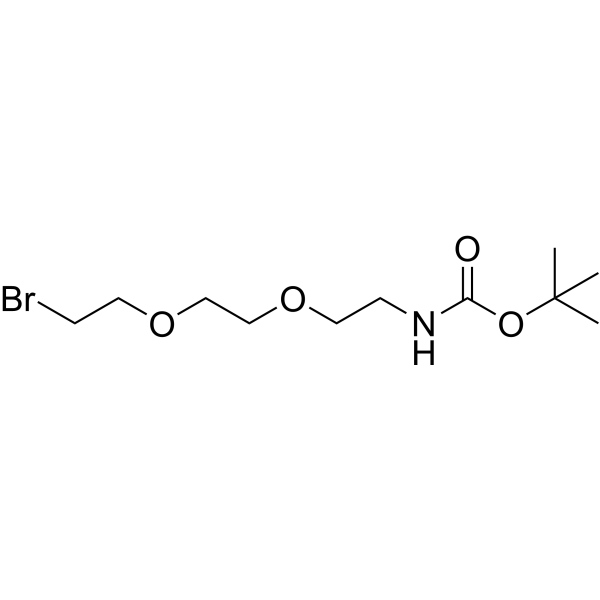
- HY-W046471
-
|
|
ADC Linker
PROTAC Linkers
|
Cancer
|
|
N-Boc-PEG4-bromide is a PEG/Alkyl/ether-based PROTAC linker can be used in the synthesis of PROTACs. N-Boc-PEG4-bromide is a cleavable ADC linker used in the synthesis of antibody-drug conjugates (ADCs) .
|
-

- HY-W071583
-
|
|
ADC Linker
PROTAC Linkers
|
Cancer
|
|
N-Boc-PEG9-alcohol is a PEG/Alkyl/ether-based PROTAC linker can be used in the synthesis of PROTACs. N-Boc-PEG9-alcohol is a cleavable ADC linker used in the synthesis of antibody-drug conjugates (ADCs) .
|
-
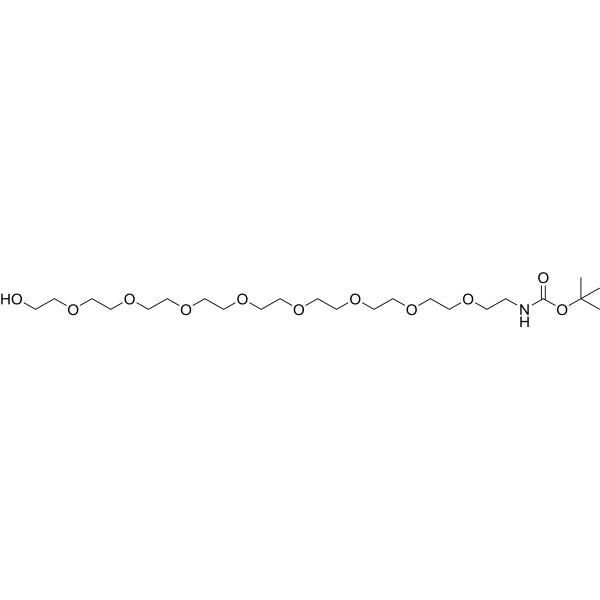
- HY-W071584
-
|
|
ADC Linker
PROTAC Linkers
|
Cancer
|
|
N-Boc-PEG6-alcohol is a PEG/Alkyl/ether-based PROTAC linker can be used in the synthesis of PROTACs. N-Boc-PEG6-alcohol is a cleavable ADC linker used in the synthesis of antibody-drug conjugates (ADCs) .
|
-
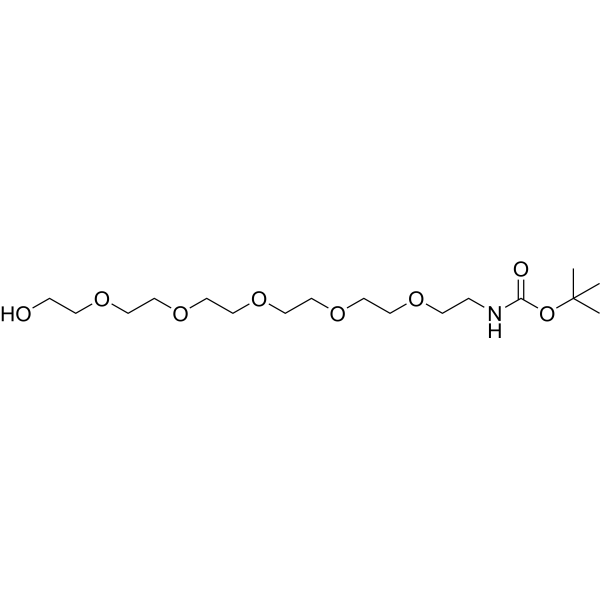
- HY-140293
-
|
|
PROTAC Linkers
|
Cancer
|
|
DBCO-NH-Boc is an alkyl/ether-based PROTAC linker that can be used in the synthesis of PROTACs . DBCO-NH-Boc is a click chemistry reagent, it contains a DBCO group that can undergo strain-promoted alkyne-azide cycloaddition (SPAAC) with molecules containing Azide groups.
|
-
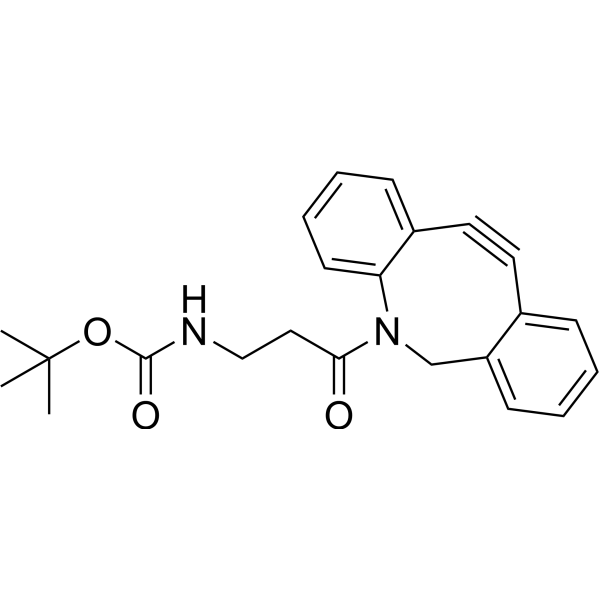
- HY-N1393S1
-
|
NSC 3778-d3; O-Methylsalicylic acid-d3; Salicylic acid methyl ether-d3
|
Endogenous Metabolite
Isotope-Labeled Compounds
|
Cancer
|
|
2-Methoxybenzoic acid-d3 (NSC 3778-d3; O-Methylsalicylic acid-d3; Salicylic acid methyl ether-d3) is deuterium-labeled 2-Methoxybenzoic acid (HY-N1393) .
|
-

- HY-N1956
-
|
|
NF-κB
|
Metabolic Disease
|
|
Rubiadin-1-methyl ether is a natural anthraquinone isolated from Morinda officinalis How, and inhibits osteoclastic bone resorption via inhibition on the phosphorylation of NF-κB p65 and the degradation of IκBα as well as decrease in the nuclear translocation of p65 .
|
-

- HY-133066
-
|
|
PROTAC Linkers
ADC Linker
|
Inflammation/Immunology
Cancer
|
|
m-PEG6-NHS ester is a non-cleavable 6 unit PEG ADC linker used in the synthesis of antibody-drug conjugates (ADCs). m-PEG6-NHS ester is a PEG/Alkyl/ether-based PROTAC linker can be used in the synthesis of PROTACs.
|
-

- HY-126908
-
|
|
PROTAC Linkers
|
Cancer
|
|
Tetrazine-Ph-NHS ester is an alkyl/ether-based PROTAC linker that can be used in the synthesis of PROTACs . Tetrazine-Ph-NHS ester is a click chemistry reagent, it contains a Tetrazine group that can undergo an inverse electron demand Diels-Alder reaction (iEDDA) with molecules containing TCO groups.
|
-
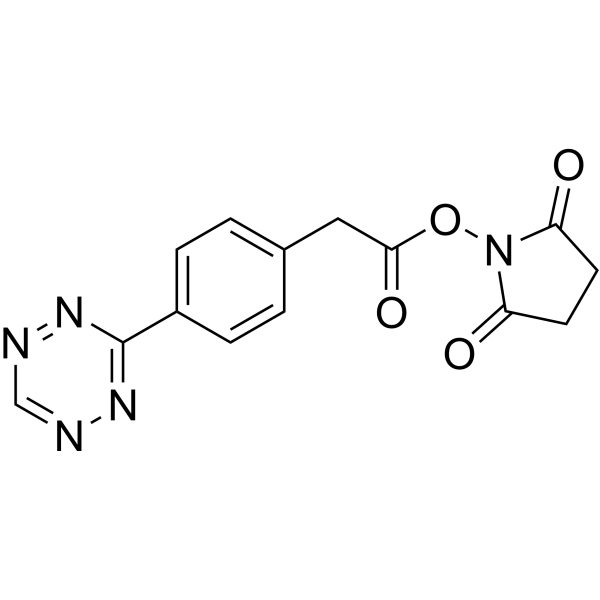
- HY-130283
-
|
|
PROTAC Linkers
|
Cancer
|
|
Methyltetrazine-Ph-NHS ester is an alkyl/ether-based PROTAC linker that can be used in the synthesis of PROTACs . Methyltetrazine-Ph-NHS ester is a click chemistry reagent, it contains a Tetrazine group that can undergo an inverse electron demand Diels-Alder reaction (iEDDA) with molecules containing TCO groups.
|
-

- HY-113673
-
|
|
Potassium Channel
|
Cardiovascular Disease
|
|
A-935142 is a human ether-a-go-go-related gene (hERG, Kv 11.1) channel activator. A-935142 enhances hERG current in a complex manner by facilitation of activation, reduction of inactivation, and slowing of deactivation, and abbreviates atrial and ventricular repolarization .
|
-
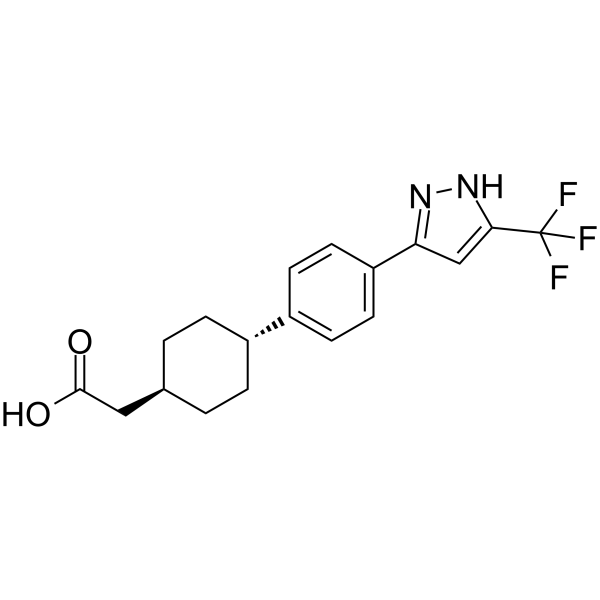
- HY-W014099
-
|
|
PROTAC Linkers
|
Cancer
|
|
Boc-NH-C4-acid is a PROTAC linker, which belongs to a Alkyl/ether linker. Boc-NH-C4-acid can be used in the synthesis of the compound PROTAC1, and specifically degrades EED, EZH2, and SUZ12 in the PRC2 Complex.
|
-
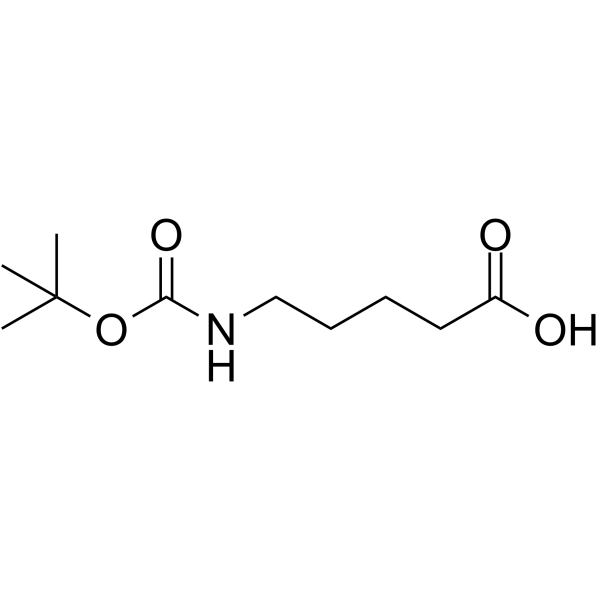
- HY-114661
-
|
|
PROTAC Linkers
|
Cancer
|
|
m-PEG4-Tos is a derivative of silybin ethers, extracted from patent CN105037337A (compound III-b). m-PEG4-Tos is a PEG-based PROTAC linker can be used in the synthesis of Silymarin (HY-W043277) .
|
-
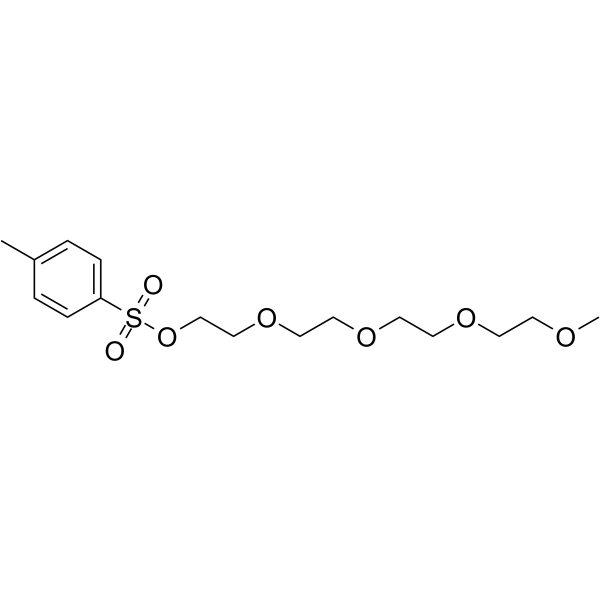
- HY-135090
-
|
|
PROTAC Linkers
|
Cancer
|
|
Tos-PEG8-m is a derivative of silybin ethers, extracted from patent CN105037337A (compound III-d). Tos-PEG8-m is a PEG-based PROTAC linker can be used in the synthesis of Silymarin (HY-W043277) .
|
-

- HY-W042501
-
|
|
PROTAC Linkers
|
Cancer
|
|
m-PEG5-Tos is a derivative of silybin ethers, extracted from patent CN105037337A (compound III-c). m-PEG5-Tos is a PEG-based PROTAC linker can be used in the synthesis of Silymarin (HY-W043277) .
|
-
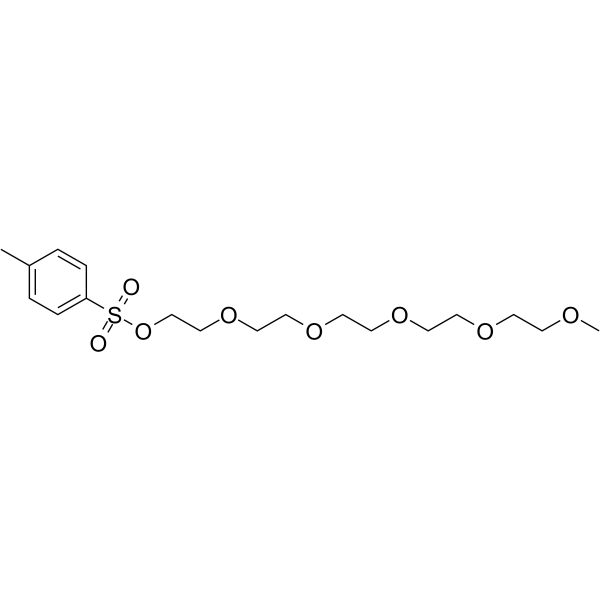
- HY-21577
-
|
|
ADC Linker
PROTAC Linkers
|
Cancer
|
|
Tris[[2-(tert-butoxycarbonyl)ethoxy]methyl]methylamine is a cleavable PEG ADC linker used in the synthesis of antibody-drug conjugates (ADCs). Amino-Tri-(t-butoxycarbonylethoxymethyl)-methane is also a PEG/Alkyl/ether-based PROTAC linker that can be used in the synthesis of PROTACs .
|
-
![Tris[[2-(tert-butoxycarbonyl)ethoxy]methyl]methylamine](//file.medchemexpress.com/product_pic/hy-21577.gif)
- HY-133406
-
|
|
PROTAC Linkers
|
Cancer
|
|
exo BCN-O-PNB is an alkyl/ether-based PROTAC linker that can be used in the synthesis of PROTACs . exo BCN-O-PNB is a click chemistry reagent, it contains a BCN group that can undergo strain-promoted alkyne-azide cycloaddition (SPAAC) with molecules containing Azide groups.
|
-
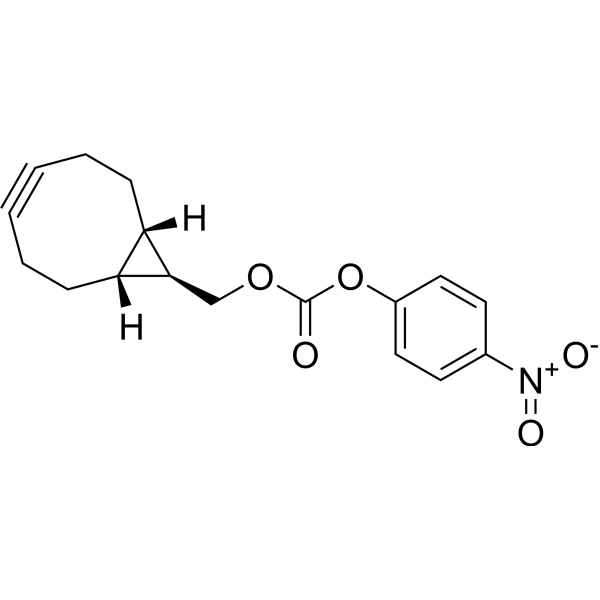
- HY-43581
-
|
|
PROTAC Linkers
|
Cancer
|
|
endo-BCN-O-PNB is an alkyl/ether-based PROTAC linker that can be used in the synthesis of PROTACs . endo-BCN-O-PNB is a click chemistry reagent, it contains a BCN group that can undergo strain-promoted alkyne-azide cycloaddition (SPAAC) with molecules containing Azide groups.
|
-

- HY-D0145S
-
|
Resorufin ethyl ether-d5
|
Isotope-Labeled Compounds
Cytochrome P450
NO Synthase
|
Others
|
|
7-Ethoxyresorufin-d5 is deuterium labeled 7-Ethoxyresorufin. 7-Ethoxyresorufin (Resorufin ethyl ether) is a fluorometric substrate and competitive inhibitor of cytochrome P450, especially CYP1A1. 7-Ethoxyresorufin also inhibits NO synthase[1][2].
|
-
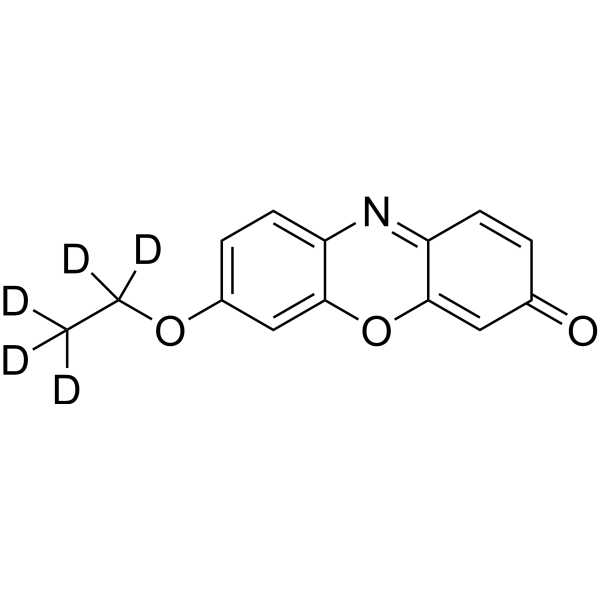
- HY-W008296
-
|
|
PROTAC Linkers
|
Cancer
|
|
NH2-C6-NH-Boc is a PROTAC linker which refers to the alkyl/ether composition. NH2-C6-NH-Boc can be used in the synthesis the Mcl-1 inhibitor based on PROTAC .
|
-

- HY-130150
-
|
|
PROTAC Linkers
ADC Linker
|
Inflammation/Immunology
Cancer
|
|
m-PEG5-succinimidyl carbonate is a non-cleavable 5 unit PEG ADC linker used in the synthesis of antibody-drug conjugates (ADCs). m-PEG5-succinimidyl carbonate is a PEG/Alkyl/ether-based PROTAC linker can be used in the synthesis of PROTACs.
|
-
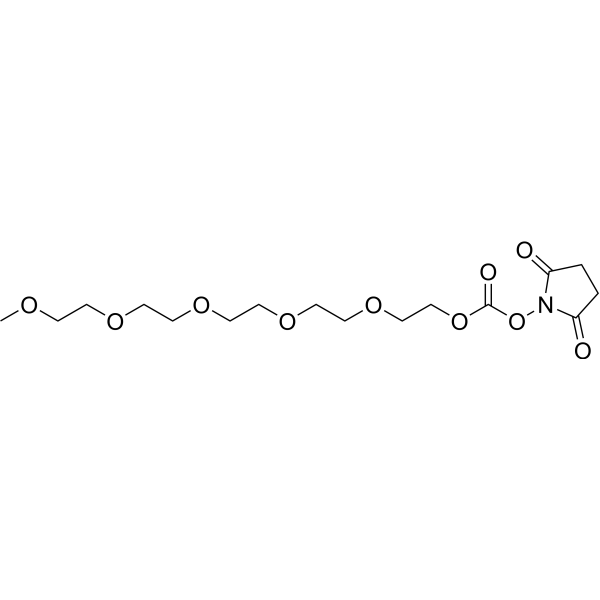
- HY-16916
-
NS1643
1 Publications Verification
|
Potassium Channel
Autophagy
|
Cancer
|
|
NS1643 is a partial agonist of human ether-a-go-go-related gene (hERG) K + channels with an EC50 of 10.5 μM. NS1643 inhibits the growth of breast cancer tumors in TNBC mouse models. NS1643 inhibits cell migration and invasion of breast cancer cells .
|
-
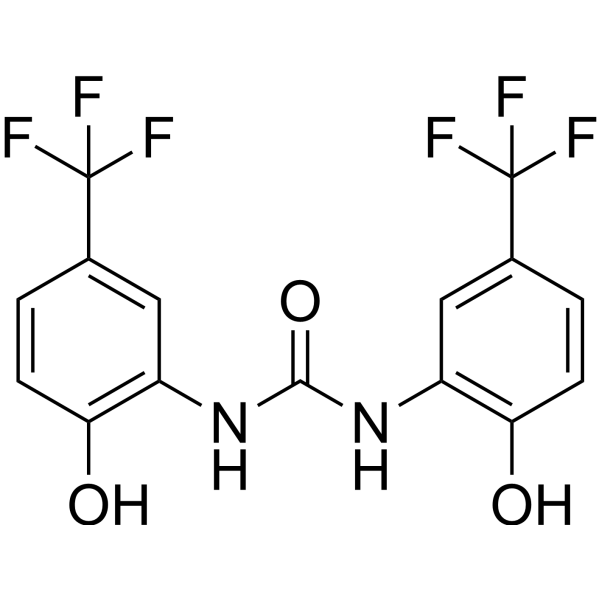
- HY-B0264S
-
|
Guaiacol glyceryl ether-d3; Guaiphenesin-d3; Glycerol guaiacolate-d3
|
Isotope-Labeled Compounds
|
Neurological Disease
Inflammation/Immunology
|
|
Guaifenesin-d3 is the deuterium labeled Guaifenesin. Guaifenesin (Guaiacol glyceryl ether), a constituent of guaiac resin from the wood of Guajacum officinale Linné, is an expectorant. Guaifenesin can alleviate cough discomfortby increasing sputum volume and decreasing its viscosity, thereby promoting effective cough[1][2].
|
-
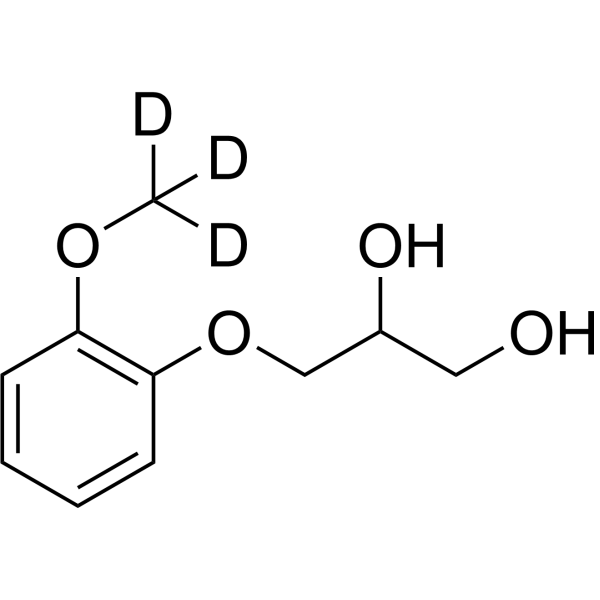
- HY-117079
-
|
|
ADC Linker
PROTAC Linkers
|
Cancer
|
|
N-Boc-N-bis(PEG2-OH) is a PEG/Alkyl/ether-based PROTAC linker can be used in the synthesis of PROTACs. N-Boc-N-bis(PEG2-OH) is a cleavable ADC linker used in the synthesis of antibody-drug conjugates (ADCs) .
|
-
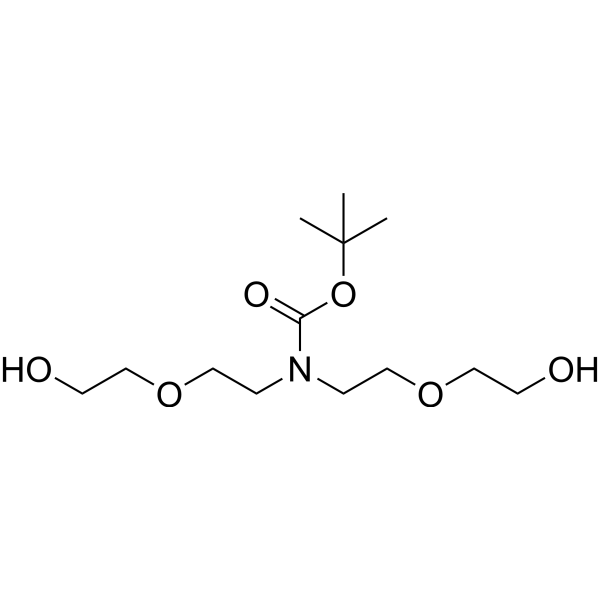
- HY-134990
-
|
|
Apoptosis
|
Cancer
|
|
Hematoporphyrin monomethyl ether, second generation of porphyrin-related photosensitizer, is characterized by its single form, high yield of singlet oxygen, high selectivity, and low toxicity, which has been widely used in the diagnosis and research of various tumors, including lung cancer, bladder cancer, and nevus flammeus and brain glioma .
|
-
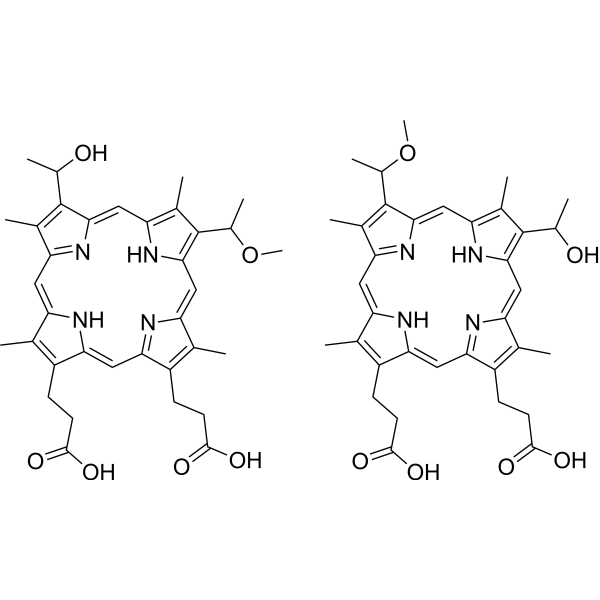
- HY-W127502
-
|
1-Hex-GPA
|
Biochemical Assay Reagents
|
Others
|
|
1-Hexadecyl lysophosphatidic acid is an ether analog of lysophosphatidic acid (LPA) containing a hexadecyl group in the sn-1 position. LPA binds to five different G protein-coupled receptors and mediates a variety of biological responses, including cell proliferation, smooth muscle contraction, platelet aggregation, neurite contraction, and cell motility.
|
-
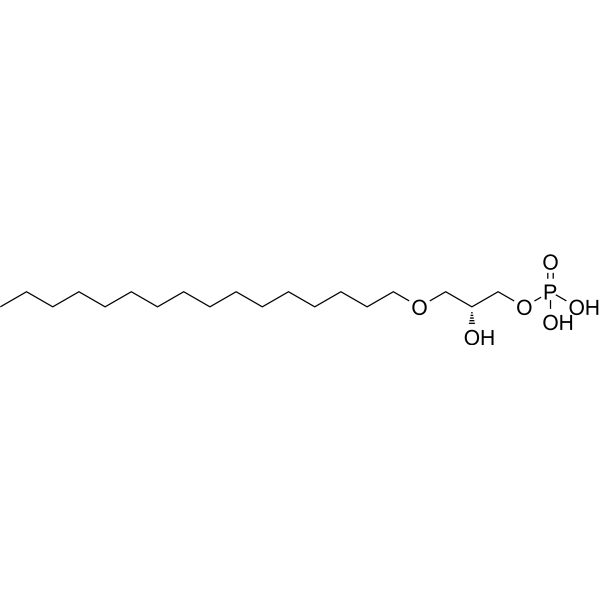
- HY-153910
-
|
|
Others
|
Cancer
|
|
AGPS-IN-1 (Compound 2i) is an effective AGPS binder. AGPS-IN-1 reduces ether lipids levels and cell migration rate. AGPS-IN-1 inhibits epithelial-mesenchymal transition (EMT) in prostate PC-3 and breast MDA-MB-231 cancer cells .
|
-
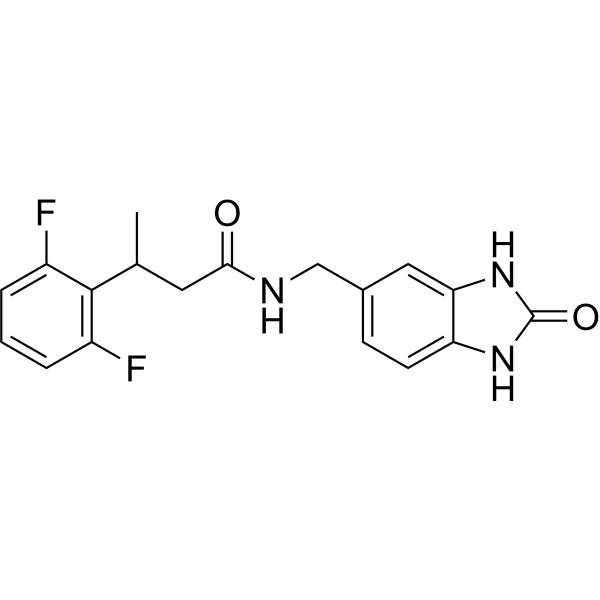
- HY-108586
-
|
|
Potassium Channel
|
Neurological Disease
|
|
NS3623 is an activator of human ether-a-go-go-related gene (hERG1/KV11.1) potassium channels. NS3623 activates the IKr and Ito currents and has antiarrhythmic effect. NS3623 has a dual mode of action, being an inhibitor of hERG1 channels .
|
-

- HY-141218
-
|
Decaethylene glycol monomethyl ether
|
ADC Linker
PROTAC Linkers
|
Cancer
|
|
m-PEG10-alcohol (Decaethylene glycol monomethyl ether) is a non-cleavable 10 unit PEG ADC linker used in the synthesis of antibody-drug conjugates (ADCs) . m-PEG10-alcohol is also a PEG-based PROTAC linker that can be used in the synthesis of PROTACs .
|
-
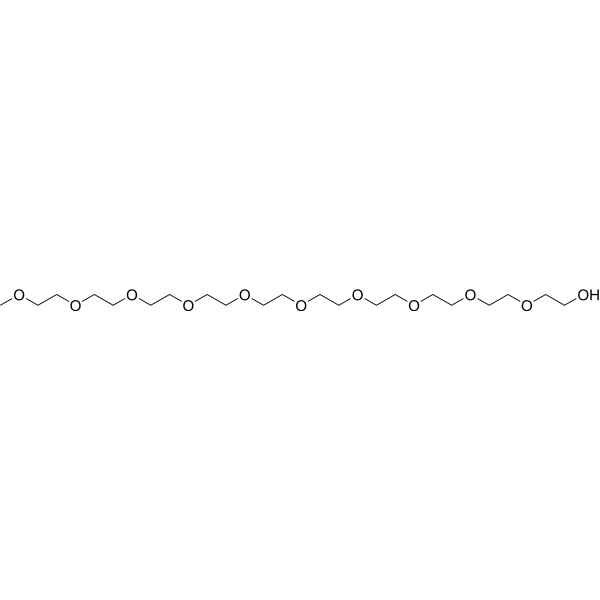
- HY-140026
-
|
|
PROTAC Linkers
|
Cancer
|
|
Propargyl-PEG1-Boc is an alkyl/ether-based PROTAC linker that can be used in the synthesis of PROTACs . Propargyl-PEG1-Boc is a click chemistry reagent, it contains an Alkyne group and can undergo copper-catalyzed azide-alkyne cycloaddition (CuAAc) with molecules containing Azide groups.
|
-
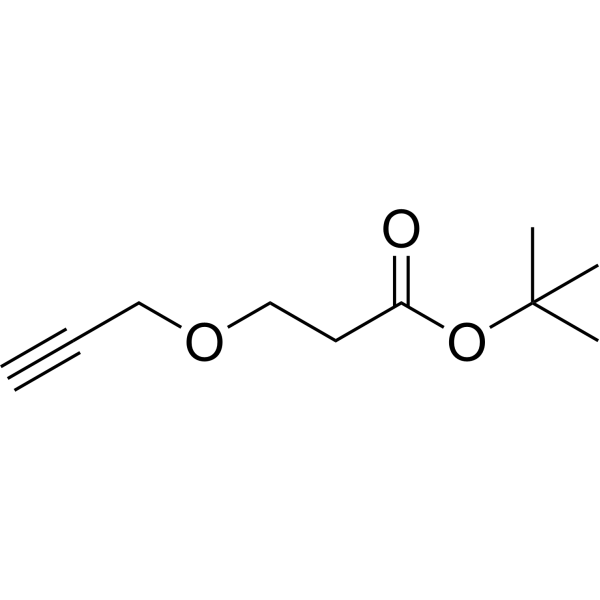
- HY-133509
-
|
|
PROTAC Linkers
|
Cancer
|
|
DBCO-C2-SulfoNHS ester is an alkyl/ether-based PROTAC linker that can be used in the synthesis of PROTACs . DBCO-C2-SulfoNHS ester is a click chemistry reagent, it contains a DBCO group that can undergo strain-promoted alkyne-azide cycloaddition (SPAAC) with molecules containing Azide groups.
|
-
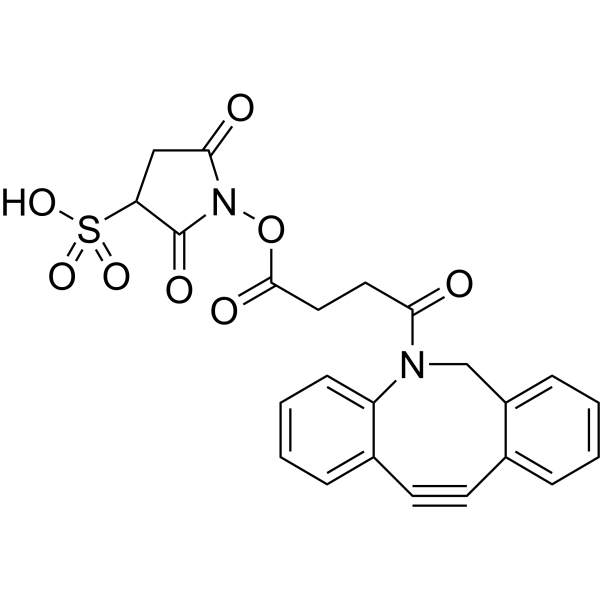
- HY-B0264R
-
|
Guaiacol glyceryl ether(Standard); Guaiphenesin(Standard); Glycerol guaiacolate (Standard)
|
Others
|
Neurological Disease
Inflammation/Immunology
|
|
Guaifenesin (Standard) is the analytical standard of Guaifenesin. This product is intended for research and analytical applications. Guaifenesin (Guaiacol glyceryl ether), a constituent of guaiac resin from the wood of Guajacum officinale Linné, is an expectorant. Guaifenesin can alleviate cough discomfortby increasing sputum volume and decreasing its viscosity, thereby promoting effective cough .
|
-
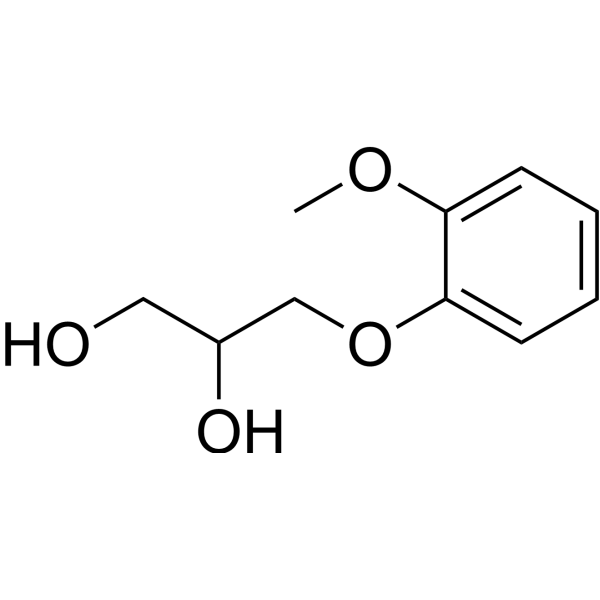
- HY-162302
-
|
|
Others
|
Metabolic Disease
|
|
NMY1009 is a lipophilic C8-hydrocarbon chain conjugated analog that links mitochondrial uncouplers via ether linkages. NMY1009 can be released and enter the mitochondrial matrix and intermembrane space, thereby targeting mitochondrial uncoupler to adipose tissue and increasing energy expenditure in brown and white adipose tissue .
|
-

- HY-158321
-
|
|
Fungal
Succinate Dehydrogenase
|
Infection
|
|
SDH-IN-15 (Compound 5e) is an inhibitor of succinate dehydrogenase (SDH) (IC50=2.04 μM). SDH-IN-15 has significant antifungal activity. SDH-IN-15 blocks the mitochondrial respiratory chain of the fungus through inhibition of SDH, resulting in fungal death .
|
-

- HY-N9714
-
|
|
Others
|
Others
|
|
4-Hydroxyalternariol-9-methyl ether can be isolated from an endolichenic fungal strain Nigrospora sphaerica (No.83-1-1-2), endolichenic fungal strains Alternaria alternata (No.58-8-4-1) and Phialophora sp. (No.96-1-8-1) .
|
-

- HY-B0264S1
-
|
|
Isotope-Labeled Compounds
|
Neurological Disease
Inflammation/Immunology
|
|
Guaifenesin-d5 is the deuterium labeled Guaifenesin. Guaifenesin (Guaiacol glyceryl ether), a constituent of guaiac resin from the wood of Guajacum officinale Linné, is an expectorant. Guaifenesin can alleviate cough discomfortby increasing sputum volume and decreasing its viscosity, thereby promoting effective cough. Guaifenesin also has narcotic effect[1][2].
|
-
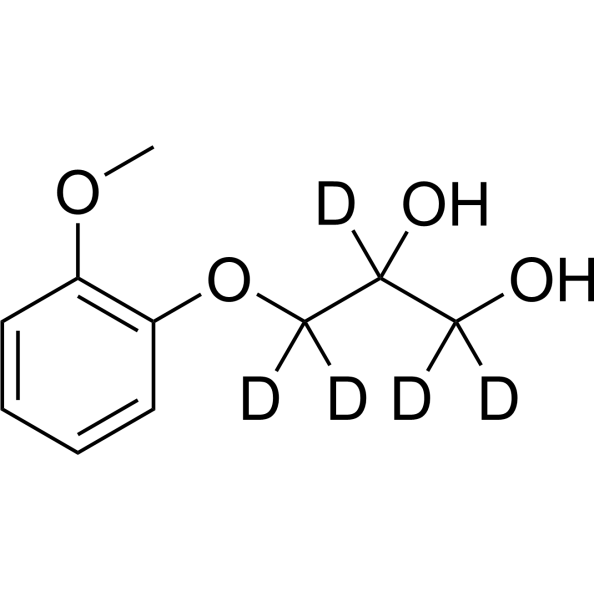
- HY-130641
-
|
|
PROTAC Linkers
|
Cancer
|
|
Br-C10-methyl ester is a PROTAC linker, which refers to the alkyl/ether composition. Br-C10-methyl ester is used in the synthesis of a series of PROTACs (MS432). PROTACs contain two different ligands connected by a linker; one is the VHL ligand portion and the other is for the target protein .
|
-
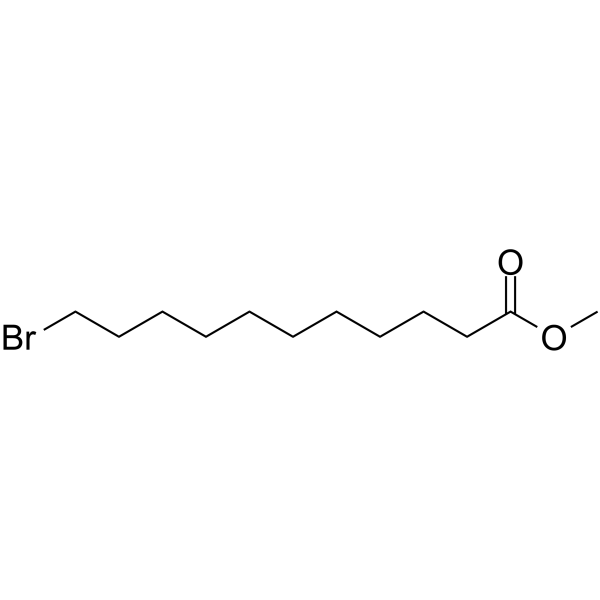
- HY-140347
-
|
tert-Butyl 3-(4-(2-cyanoethynyl)phenylcarbamoyl)propylcarbamate
|
PROTAC Linkers
|
Cancer
|
|
APN-C3-NH-Boc is an alkyl/ether-based PROTAC linker that can be used in the synthesis of PROTACs . APN-C3-NH-Boc is a click chemistry reagent, it contains an Alkyne group and can undergo copper-catalyzed azide-alkyne cycloaddition (CuAAc) with molecules containing Azide groups.
|
-
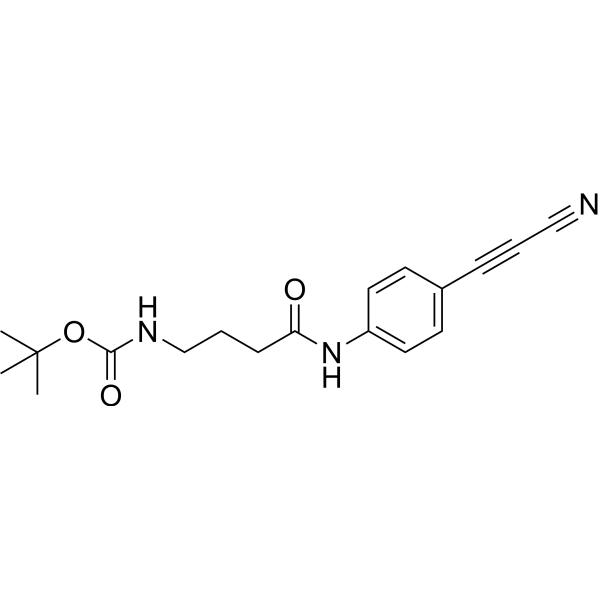
- HY-131184
-
|
|
PROTAC Linkers
|
Inflammation/Immunology
|
|
N-Boc-piperazine-C3-COOH is a PROTAC linker, which refers to the alkyl/ether composition. Boc-N-piperazine-C3-COOH can be used in the synthesis of PROTAC PD-1/PD-L1 degrader-1 (HY-131183) .
|
-

- HY-W013576S
-
|
|
Isotope-Labeled Compounds
|
Cancer
|
|
Methyl 2-Octynoate-d5 is deuterated labeled Estragole (HY-N5060). Estragole (4-Allylanisole), a relatively nontoxic volatile terpenoid ether, is a major component of the essential oil of many plants. Estragole dose-dependently blocks nerve excitability . Estragole displays anti-toxoplasma activity .
|
-

- HY-A0104J
-
|
Hypromellose (Type II,Viscosity:5mPa.s); (Hydroxypropyl)methyl cellulose (Type II,Viscosity:5mPa.s); Celacol HPM 5000 (Type II,Viscosity:5mPa.s)
|
Biochemical Assay Reagents
|
Others
|
|
HPMC (Hypromellose) (Type II,Viscosity:5mPa.s) is a hydrophilic, non-ionic cellulose ether used to form swellable-soluble matrices. HPMC (Type II,Viscosity:5mPa.s) is widely used in agent formulations due to its biocompatibility, uncharged nature, solubility in water and thermoplastic behavior .
|
-
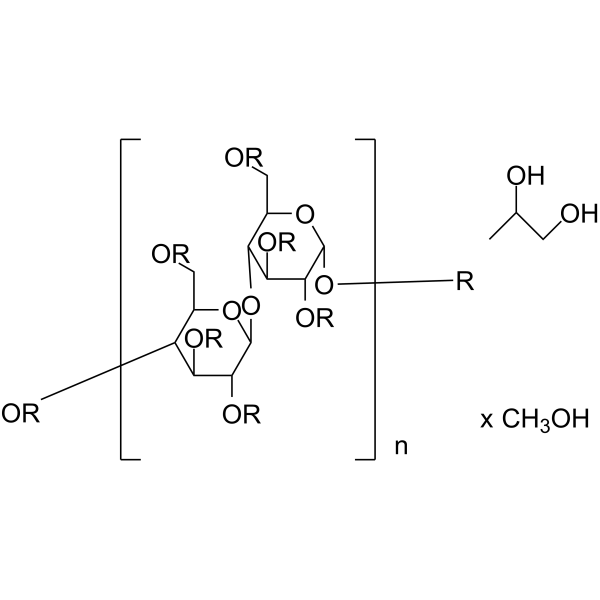
- HY-N11879
-
|
|
Bacterial
Antibiotic
|
Others
|
|
6-C-Methylquercetin-3,4'-dimethyl etheris a flavonol derivative isolated from the leaves of Bauhinia thonningii Schum. 6-C-Methylquercetin-3,4'-dimethyl ether has antibacterial activity against Gram-negative multidrug-resistant bacteria and against methicillin-resistant Staphylococcus aureus (MRSA) strains .
|
-
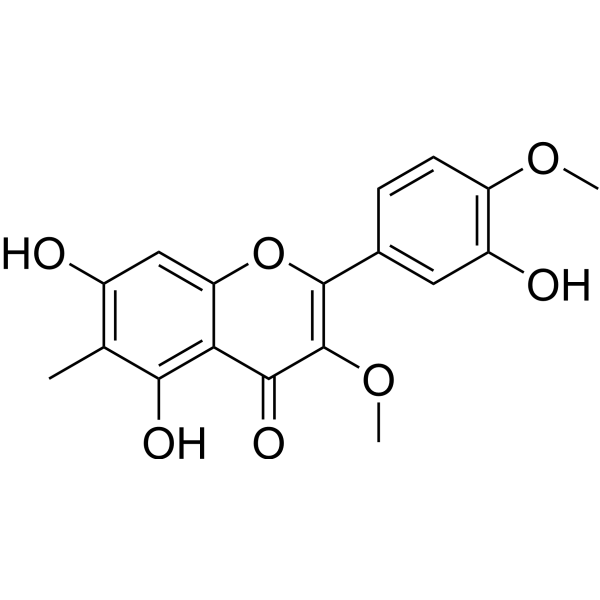
- HY-103268
-
|
|
Potassium Channel
|
Neurological Disease
|
|
(Rac)-AZD3839 is an orally active beta-amyloid precursor protein cleaving enzyme (BACE1) inhibitor that is blood-brain barrier-permeable. (Rac)-AZD3839 has an affinity for the human ether-a-go-go related gene (hERG) ion channel. (Rac)-AZD3839 can be used in the research of Alzheimer's disease .
|
-
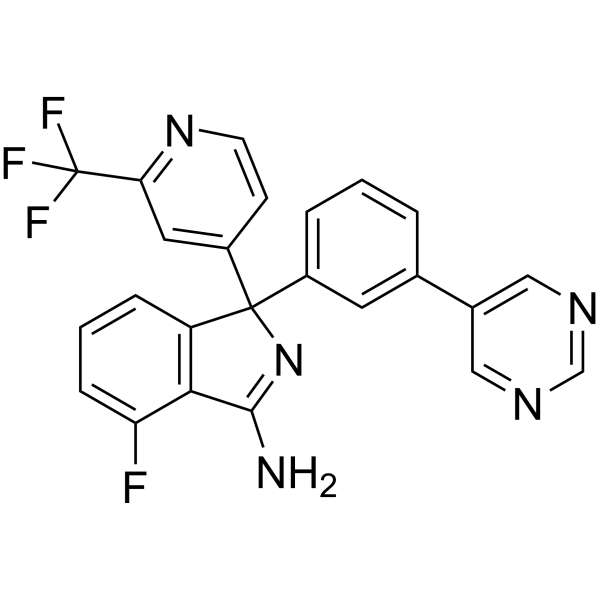
- HY-108610A
-
|
ET-18-OCH3
|
Apoptosis
|
Cancer
|
|
Edelfosine (ET-18-OCH3) is a selective antitumour lipid targeting apoptosis through intracellular activation of Fas/CD95 Death receptor .
|
-
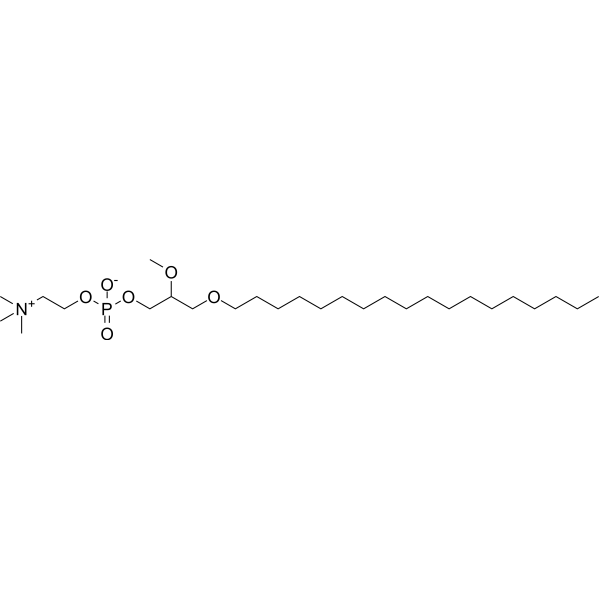
- HY-W105411
-
|
|
Biochemical Assay Reagents
|
Others
|
|
tert-Butanol, 99.8% (Trimethyl carbinol, 99.8%; tert-Butyl alcohol, 99.8%; 2-Methyl-2-propanol, 99.8%) is a common organic solvent that is miscible with water, ethanol, ether, and other organic solvents. N,N'-Diacryloylpiperazine is a kind of biological materials or organic compounds that are widely used in life science research .
|
-

- HY-140339
-
|
|
PROTAC Linkers
|
Cancer
|
|
ANB-NOS is an alkyl/ether-based PROTAC linker that can be used in the synthesis of PROTACs . ANB-NOS is a click chemistry reagent, it contains an Azide group and can undergo copper-catalyzed azide-alkyne cycloaddition reaction (CuAAc) with molecules containing Alkyne groups. Strain-promoted alkyne-azide cycloaddition (SPAAC) can also occur with molecules containing DBCO or BCN groups.
|
-
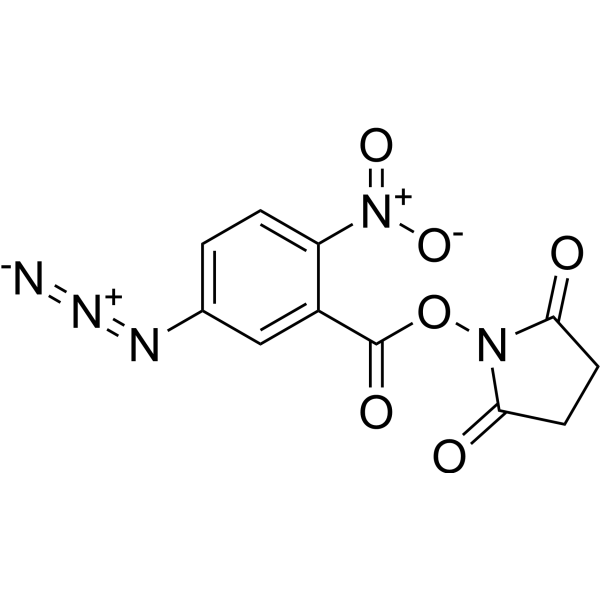
- HY-W024365
-
|
|
PROTAC Linkers
|
Cancer
|
|
3-tert-Butyl-4-methoxyphenol is a PROTAC linker, belongs to alkyl/ether class, with insecticidal activity. 3-tert-Butyl-4-methoxyphenol also induced increased activities of glutathione (GSH) S-transferase and epoxide hydrolase in the liver and forestomach tissues of A/HeJ mice, regulating the carcinogen metabolism system .
|
-
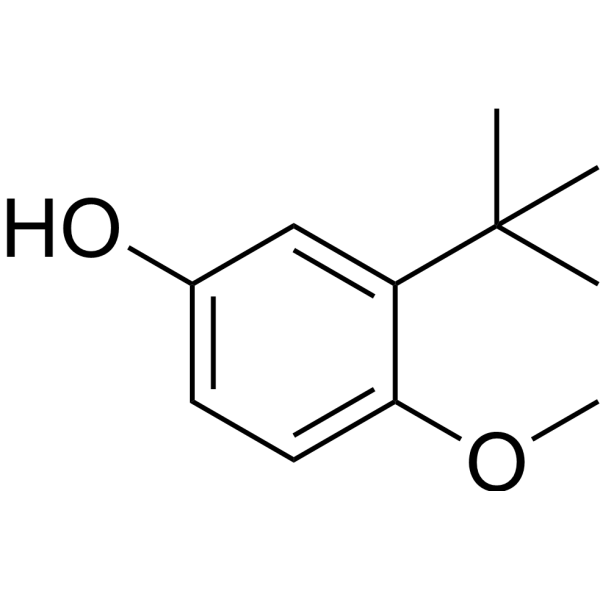
- HY-130712
-
|
|
PROTAC Linkers
|
Cancer
|
|
NH2-C2-amido-C2-Boc is a PROTAC linker, which refers to the alkyl/ether composition. NH2-C5-NH-Boc can be used in the synthesis of a series of PROTACs, such as the PROTAC CDK2/9 Degrader-1 (HY-130709) .
|
-

- HY-17504AS
-
-

- HY-W142428
-
|
Diethylene glycol monododecyl ether
|
Biochemical Assay Reagents
|
Others
|
|
PEG 2 lauryl ether can be used as an excipient. Pharmaceutical excipients, or pharmaceutical auxiliaries, refer to other chemical substances used in the pharmaceutical process other than pharmaceutical ingredients. Pharmaceutical excipients generally refer to inactive ingredients in pharmaceutical preparations, which can improve the stability, solubility and processability of pharmaceutical preparations. Pharmaceutical excipients also affect the absorption, distribution, metabolism, and elimination (ADME) processes of co-administered drugs .
|
-
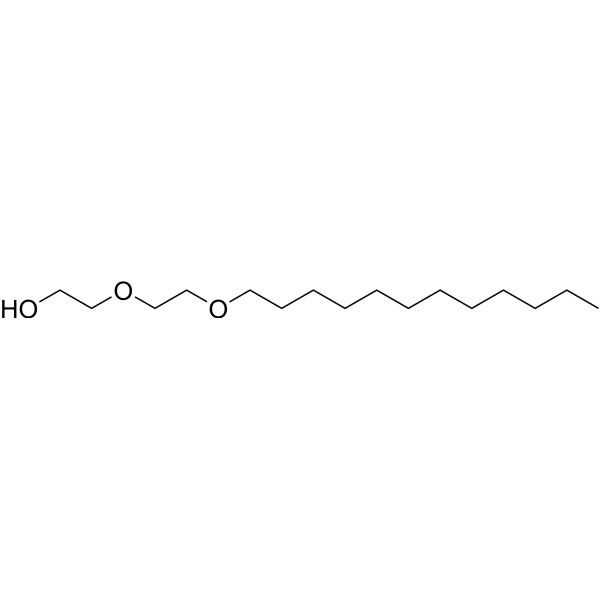
- HY-W099536
-
|
Tetraoxyethylene glycol monododecyl ether
|
Biochemical Assay Reagents
|
Others
|
|
PEG 4 lauryl ether can be used as an excipient. Pharmaceutical excipients, or pharmaceutical auxiliaries, refer to other chemical substances used in the pharmaceutical process other than pharmaceutical ingredients. Pharmaceutical excipients generally refer to inactive ingredients in pharmaceutical preparations, which can improve the stability, solubility and processability of pharmaceutical preparations. Pharmaceutical excipients also affect the absorption, distribution, metabolism, and elimination (ADME) processes of co-administered drugs .
|
-
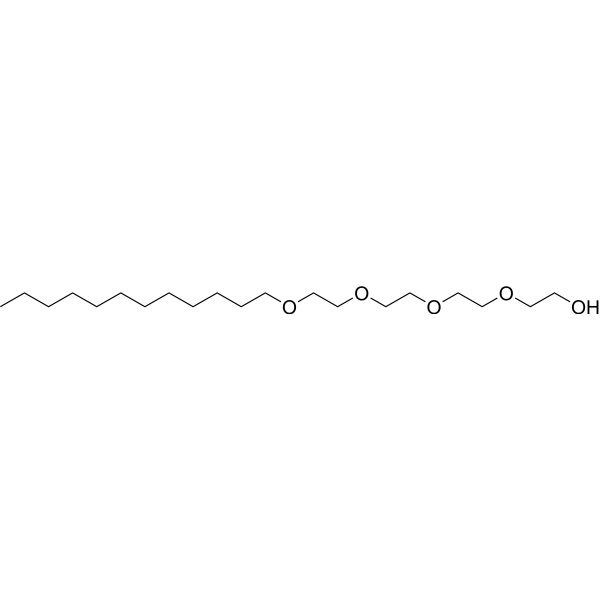
- HY-W127624A
-
|
|
Biochemical Assay Reagents
|
Others
|
|
PEG 18 cetostearyl ether can be used as an excipient. Pharmaceutical excipients, or pharmaceutical auxiliaries, refer to other chemical substances used in the pharmaceutical process other than pharmaceutical ingredients. Pharmaceutical excipients generally refer to inactive ingredients in pharmaceutical preparations, which can improve the stability, solubility and processability of pharmaceutical preparations. Pharmaceutical excipients also affect the absorption, distribution, metabolism, and elimination (ADME) processes of co-administered drugs .
|
-

- HY-W127624B
-
|
|
Biochemical Assay Reagents
|
Others
|
|
PEG 25 cetostearyl ether can be used as an excipient. Pharmaceutical excipients, or pharmaceutical auxiliaries, refer to other chemical substances used in the pharmaceutical process other than pharmaceutical ingredients. Pharmaceutical excipients generally refer to inactive ingredients in pharmaceutical preparations, which can improve the stability, solubility and processability of pharmaceutical preparations. Pharmaceutical excipients also affect the absorption, distribution, metabolism, and elimination (ADME) processes of co-administered drugs .
|
-
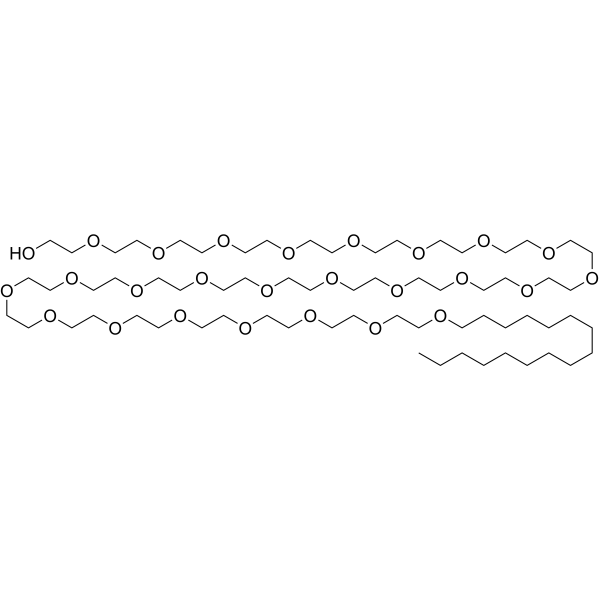
- HY-W127624C
-
|
|
Biochemical Assay Reagents
|
Others
|
|
PEG 20 cetostearyl ether can be used as an excipient. Pharmaceutical excipients, or pharmaceutical auxiliaries, refer to other chemical substances used in the pharmaceutical process other than pharmaceutical ingredients. Pharmaceutical excipients generally refer to inactive ingredients in pharmaceutical preparations, which can improve the stability, solubility and processability of pharmaceutical preparations. Pharmaceutical excipients also affect the absorption, distribution, metabolism, and elimination (ADME) processes of co-administered drugs .
|
-

- HY-B2106C
-
|
|
Biochemical Assay Reagents
|
Others
|
|
PEG 23 lauryl ether can be used as an excipient. Pharmaceutical excipients, or pharmaceutical auxiliaries, refer to other chemical substances used in the pharmaceutical process other than pharmaceutical ingredients. Pharmaceutical excipients generally refer to inactive ingredients in pharmaceutical preparations, which can improve the stability, solubility and processability of pharmaceutical preparations. Pharmaceutical excipients also affect the absorption, distribution, metabolism, and elimination (ADME) processes of co-administered drugs .
|
-

- HY-W127624D
-
|
|
Biochemical Assay Reagents
|
Others
|
|
PEG 12 cetostearyl ether can be used as an excipient. Pharmaceutical excipients, or pharmaceutical auxiliaries, refer to other chemical substances used in the pharmaceutical process other than pharmaceutical ingredients. Pharmaceutical excipients generally refer to inactive ingredients in pharmaceutical preparations, which can improve the stability, solubility and processability of pharmaceutical preparations. Pharmaceutical excipients also affect the absorption, distribution, metabolism, and elimination (ADME) processes of co-administered drugs .
|
-
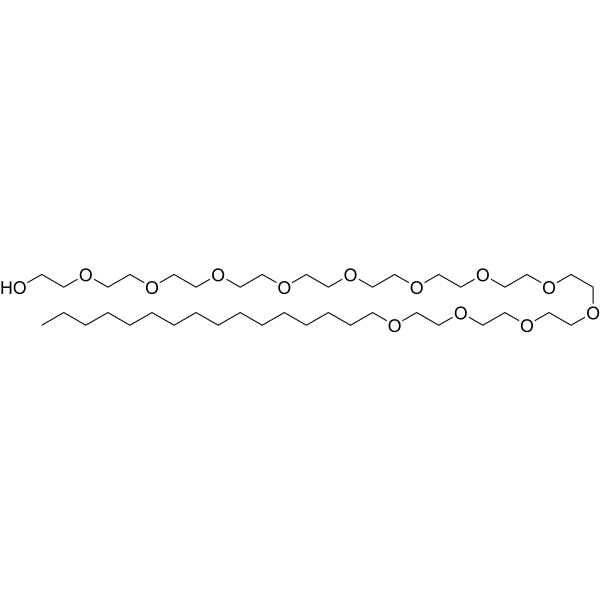
- HY-19620
-
Branaplam
Maximum Cited Publications
10 Publications Verification
LMI070; NVS-SM1
|
DNA/RNA Synthesis
Potassium Channel
|
Cancer
|
|
Branaplam (LMI070; NVS-SM1) is a highly potent, selective and orally active survival motor neuron-2 (SMN2) splicing modulator with an EC50 of 20 nM for SMN. Branaplam inhibits human-ether-a-go-go-related gene (hERG) with an IC50 of 6.3 μM. Branaplam elevates full-length SMN protein and extends survival in a severe spinal muscular atrophy (SMA) mouse model .
|
-
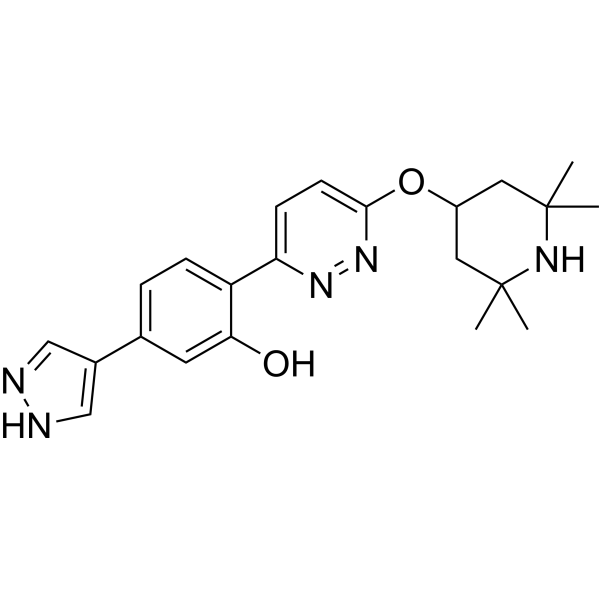
- HY-121495
-
|
|
Parasite
|
Infection
|
|
BKI-1369 is a bumped kinase inhibitor (BKI). BKI-1369 increases human Ether-a-go-go-related gene (hERG)-inhibitory activity with an IC50 of 1.52 μM. BKI-1369 reduces the parasite burden and diseases severity in the gnotobiotic pig model. BKI-1369 has been well characterized for potency, stability, metabolism, toxicity, pharmacokinetics and is potent against C. parvum in infected mice and calves .
|
-

- HY-140851
-
|
|
PROTAC Linkers
|
Cancer
|
|
Azido-PEG1-methyl ester is an alkyl/ether-based PROTAC linker that can be used in the synthesis of PROTACs . Azido-PEG1-methyl ester is a click chemistry reagent, it contains an Azide group and can undergo copper-catalyzed azide-alkyne cycloaddition reaction (CuAAc) with molecules containing Alkyne groups. Strain-promoted alkyne-azide cycloaddition (SPAAC) can also occur with molecules containing DBCO or BCN groups.
|
-
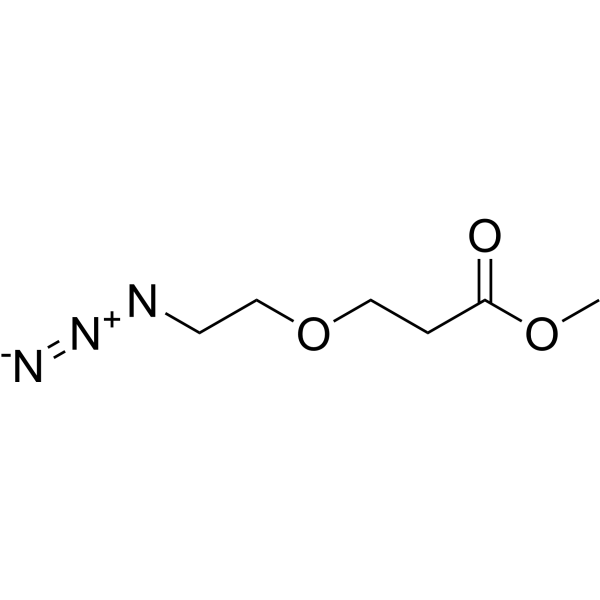
- HY-140755
-
|
|
PROTAC Linkers
|
Cancer
|
|
Aeide-C1-NHS ester is an alkyl/ether-based PROTAC linker that can be used in the synthesis of PROTACs . Aeide-C1-NHS ester is a click chemistry reagent, it contains an Azide group and can undergo copper-catalyzed azide-alkyne cycloaddition reaction (CuAAc) with molecules containing Alkyne groups. Strain-promoted alkyne-azide cycloaddition (SPAAC) can also occur with molecules containing DBCO or BCN groups.
|
-
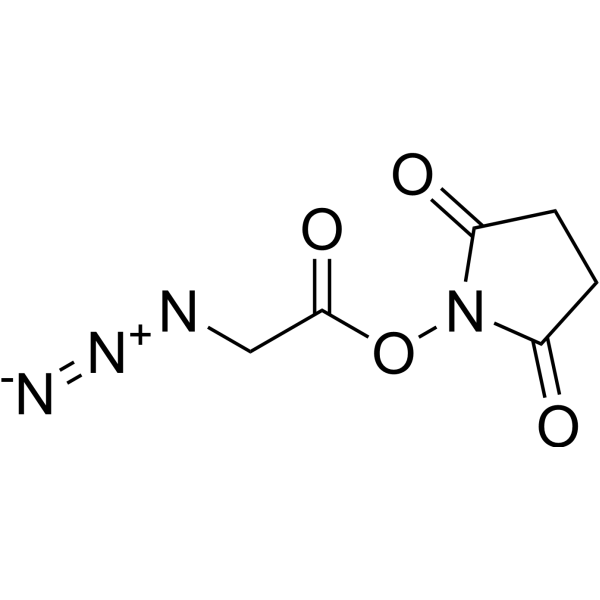
- HY-19620A
-
|
LMI070 hydrochloride; NVS-SM1 hydrochloride
|
DNA/RNA Synthesis
Potassium Channel
|
Cancer
|
|
Branaplam (LMI070; NVS-SM1) hydrochloride is a highly potent, selective and orally active survival motor neuron-2 (SMN2) splicing modulator with an EC50 of 20 nM for SMN. Branaplam hydrochloride inhibits human-ether-a-go-go-related gene (hERG) with an IC50 of 6.3 μM. Branaplam hydrochloride elevates full-length SMN protein and extends survival in a severe spinal muscular atrophy (SMA) mouse model .
|
-

- HY-125820
-
|
|
Sigma Receptor
Potassium Channel
|
Neurological Disease
|
|
Sigma-1 receptor antagonist 3 (compound135) is a potent and selective Sigma-1 (σ1) receptor antagonist with a Ki of 1.14 nM. Sigma-1 receptor antagonist 3 inhibits Human Ether-a-go-go-Related Gene (hERG) with an IC50 of 1.54 μM. Sigma-1 receptor antagonist 3 has the potential for the neuropathic pain .
|
-
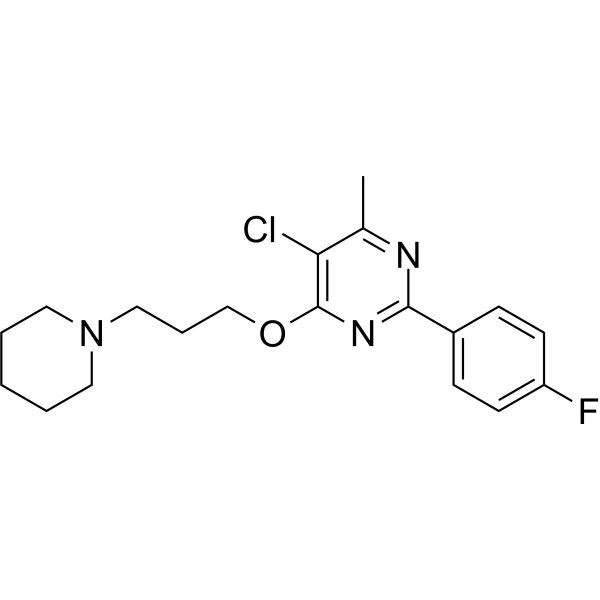
- HY-111456
-
|
|
ADC Linker
PROTAC Linkers
|
Cancer
|
|
DBCO-NHCO-PEG4-NHS ester is a PEG/Alkyl/ether-based PROTAC linker can be used in the synthesis of PROTACs. DBCO-NHCO-PEG4-NHS ester is a cleavable ADC linker used in the synthesis of antibody-drug conjugates (ADCs) . DBCO-NHCO-PEG4-NHS ester is a click chemistry reagent, it contains a DBCO group that can undergo strain-promoted alkyne-azide cycloaddition (SPAAC) with molecules containing Azide groups.
|
-

- HY-126885
-
|
|
ADC Linker
PROTAC Linkers
|
Cancer
|
|
DBCO-PEG5-NHS ester is a PEG/Alkyl/ether-based PROTAC linker can be used in the synthesis of PROTACs. DBCO-PEG5-NHS ester is a cleavable ADC linker used in the synthesis of antibody-drug conjugates (ADCs) . DBCO-PEG5-NHS ester is a click chemistry reagent, it contains a DBCO group that can undergo strain-promoted alkyne-azide cycloaddition (SPAAC) with molecules containing Azide groups.
|
-

- HY-126974
-
|
|
ADC Linker
PROTAC Linkers
|
Cancer
|
|
Propargyl-PEG3-NHS ester is a PEG/Alkyl/ether-based PROTAC linker can be used in the synthesis of PROTACs. Propargyl-PEG3-NHS ester is a cleavable ADC linker used in the synthesis of antibody-drug conjugates (ADCs) . Propargyl-PEG3-NHS ester is a click chemistry reagent, it contains an Alkyne group and can undergo copper-catalyzed azide-alkyne cycloaddition (CuAAc) with molecules containing Azide groups.
|
-
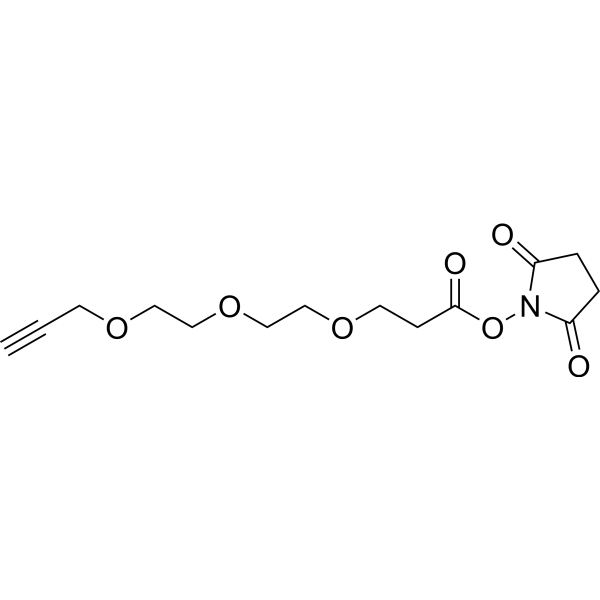
- HY-130376
-
|
|
ADC Linker
PROTAC Linkers
|
Cancer
|
|
Propargyl-PEG8-NHS ester is a PEG/Alkyl/ether-based PROTAC linker can be used in the synthesis of PROTACs. Propargyl-PEG8-NHS ester is a cleavable ADC linker used in the synthesis of antibody-drug conjugates (ADCs) . Propargyl-PEG8-NHS ester is a click chemistry reagent, it contains an Alkyne group and can undergo copper-catalyzed azide-alkyne cycloaddition (CuAAc) with molecules containing Azide groups.
|
-
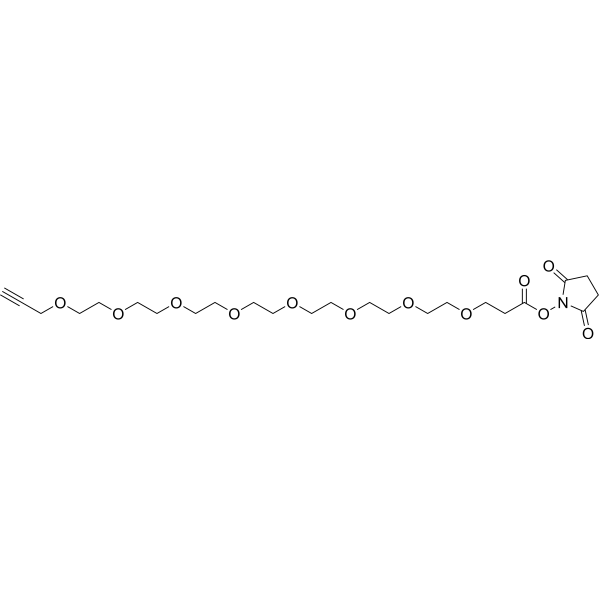
- HY-130381
-
|
|
ADC Linker
PROTAC Linkers
|
Cancer
|
|
Propargyl-PEG7-NHS ester is a PEG/Alkyl/ether-based PROTAC linker can be used in the synthesis of PROTACs. Propargyl-PEG7-NHS ester is a cleavable ADC linker used in the synthesis of antibody-drug conjugates (ADCs) . Propargyl-PEG7-NHS ester is a click chemistry reagent, it contains an Alkyne group and can undergo copper-catalyzed azide-alkyne cycloaddition (CuAAc) with molecules containing Azide groups.
|
-
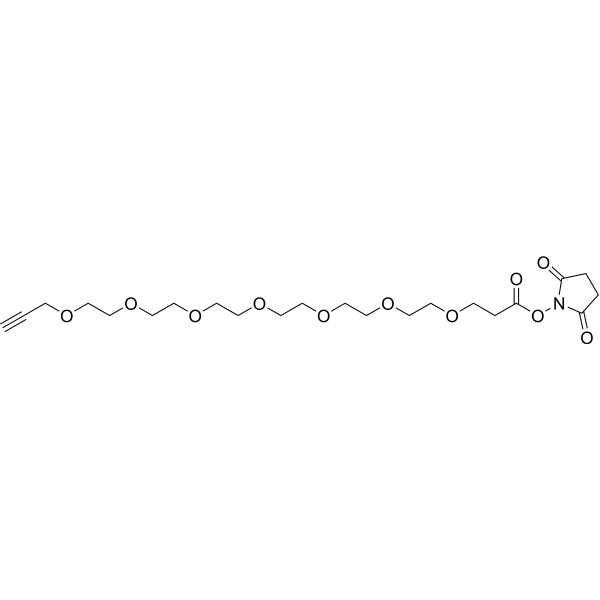
- HY-130385
-
|
|
ADC Linker
PROTAC Linkers
|
Cancer
|
|
Propargyl-PEG6-NHS ester is a PEG/Alkyl/ether-based PROTAC linker can be used in the synthesis of PROTACs. Propargyl-PEG6-NHS ester is a cleavable ADC linker used in the synthesis of antibody-drug conjugates (ADCs) . Propargyl-PEG6-NHS ester is a click chemistry reagent, it contains an Alkyne group and can undergo copper-catalyzed azide-alkyne cycloaddition (CuAAc) with molecules containing Azide groups.
|
-
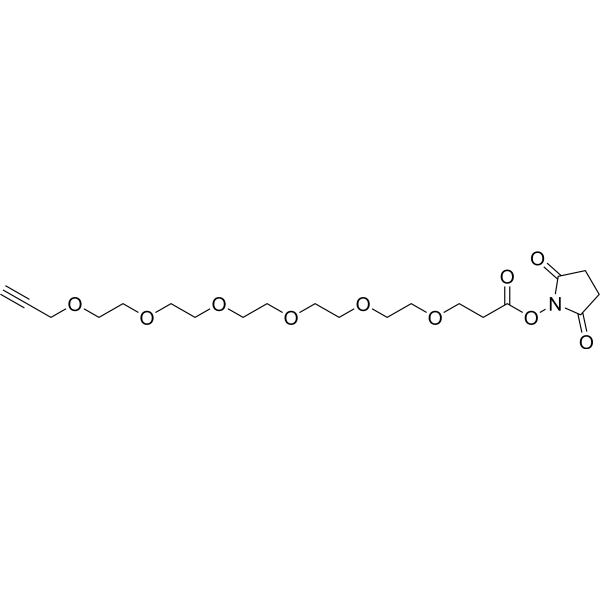
- HY-130388
-
|
|
ADC Linker
PROTAC Linkers
|
Cancer
|
|
Propargyl-PEG5-NHS ester is a PEG/Alkyl/ether-based PROTAC linker can be used in the synthesis of PROTACs. Propargyl-PEG5-NHS ester is a cleavable ADC linker used in the synthesis of antibody-drug conjugates (ADCs) . Propargyl-PEG5-NHS ester is a click chemistry reagent, it contains an Alkyne group and can undergo copper-catalyzed azide-alkyne cycloaddition (CuAAc) with molecules containing Azide groups.
|
-
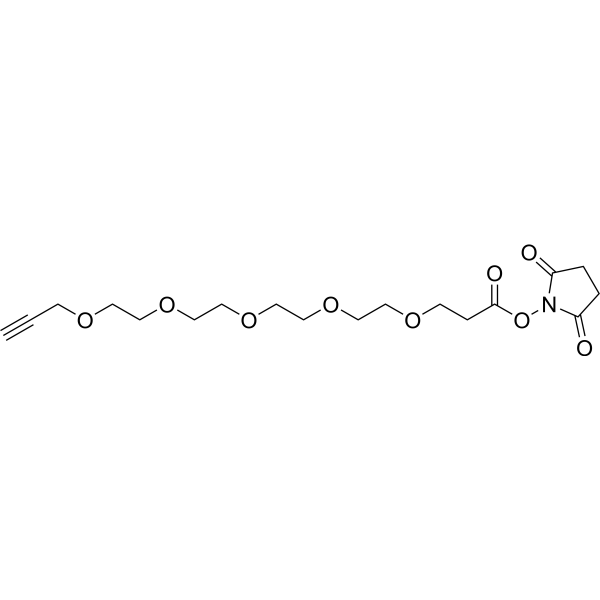
- HY-138464
-
|
|
PROTAC Linkers
|
Cancer
|
|
Br-Boc-C2-azido is an alkyl/ether-based PROTAC linker that can be used in the synthesis of PROTACs . Br-Boc-C2-azido is a click chemistry reagent, it contains an Azide group and can undergo copper-catalyzed azide-alkyne cycloaddition reaction (CuAAc) with molecules containing Alkyne groups. Strain-promoted alkyne-azide cycloaddition (SPAAC) can also occur with molecules containing DBCO or BCN groups.
|
-
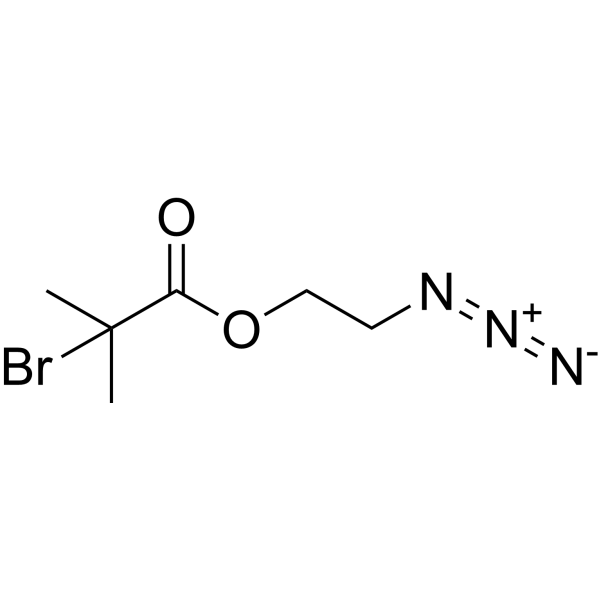
- HY-B1482
-
|
TPS-23 benzenesulfonate
|
Potassium Channel
|
Neurological Disease
|
|
Mesoridazine (TPS-23) benzenesulfonate, a metabolite of Thioridazine (HY-B0965A), acts as an orally active phenothiazine antipsychotic agent. Mesoridazine benzenesulfonate is a potent and rapid open-channel blocker of human ether-a-go-go related gene (hERG) channels and blocks hERG currents with an IC50 of 550 nM (at 0 mV) in human embryonic kidney 293 cells .Mesoridazine benzenesulfonate can be used for the research of schizophrenia, as well as certain other psychiatric disorders .
|
-
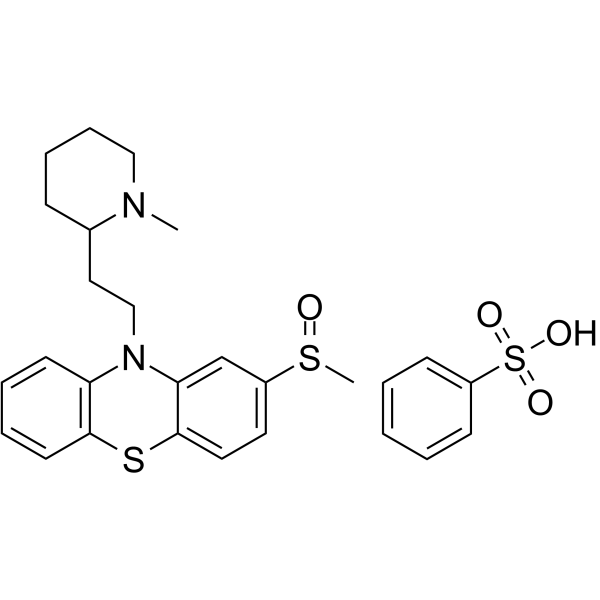
- HY-B1482A
-
|
TPS-23
|
Potassium Channel
|
Neurological Disease
|
|
Mesoridazine (TPS-23) , a metabolite of Thioridazine (HY-B0965A), acts as an orally active phenothiazine antipsychotic agent. Mesoridazine is a potent and rapid open-channel blocker of human ether-a-go-go related gene (hERG) channels and blocks hERG currents with an IC50 of 550 nM (at 0 mV) in human embryonic kidney 293 cells .Mesoridazine can be used for the research of schizophrenia, as well as certain other psychiatric disorders .
|
-
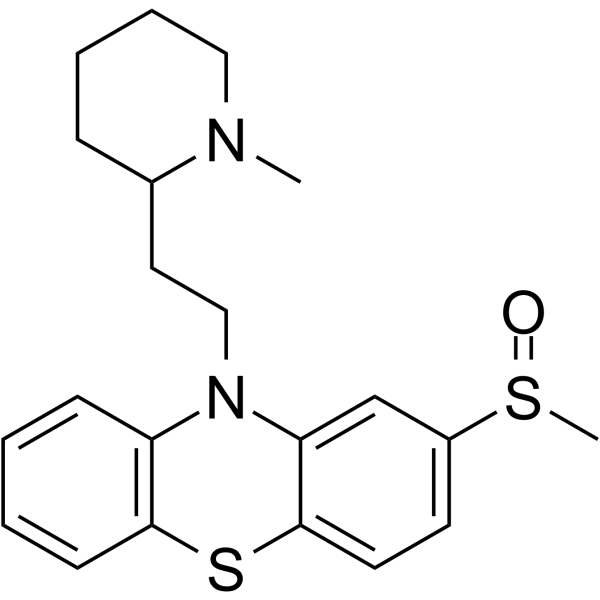
- HY-154630
-
|
|
Biochemical Assay Reagents
|
Others
|
|
Polyoxypropylene stearyl ether can be used as an excipient, such as surfactant, softener, lubricating, wetting, plasticizing, solubilizing and dispersing properties. Pharmaceutical excipients, or pharmaceutical auxiliaries, refer to other chemical substances used in the pharmaceutical process other than pharmaceutical ingredients. Pharmaceutical excipients generally refer to inactive ingredients in pharmaceutical preparations, which can improve the stability, solubility and processability of pharmaceutical preparations. Pharmaceutical excipients also affect the absorption, distribution, metabolism, and elimination (ADME) processes of co-administered drugs .
|
-
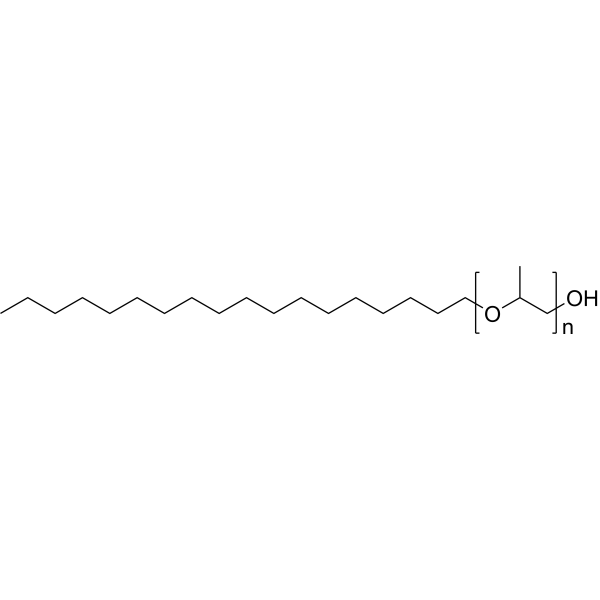
- HY-154639
-
|
|
Biochemical Assay Reagents
|
Others
|
|
Polyoxyl 20 Cetostearyl Ether can be used as an excipient, such as Emulsifier and solubilizer for emulsions and creams, etc. Pharmaceutical excipients, or pharmaceutical auxiliaries, refer to other chemical substances used in the pharmaceutical process other than pharmaceutical ingredients. Pharmaceutical excipients generally refer to inactive ingredients in pharmaceutical preparations, which can improve the stability, solubility and processability of pharmaceutical preparations. Pharmaceutical excipients also affect the absorption, distribution, metabolism, and elimination (ADME) processes of co-administered drugs .
|
-
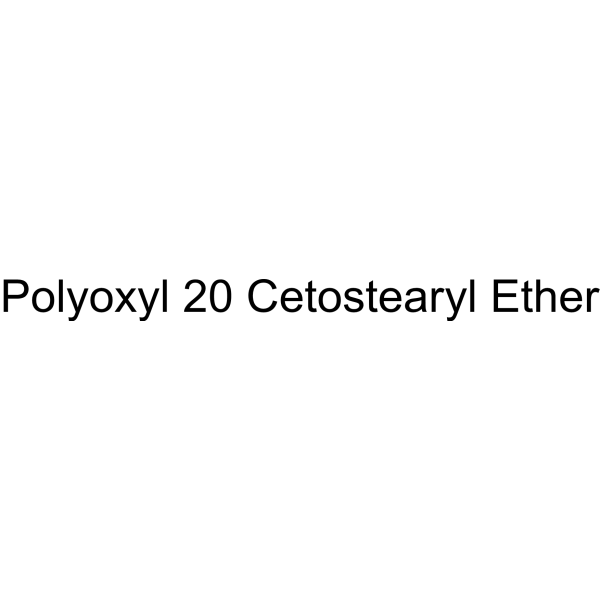
- HY-40178
-
|
|
PROTAC Linkers
|
Cancer
|
|
NH2-C4-NH-Boc (compound 15) is a PROTAC linker, which refers to the Alkyl/ether composition. NH2-C4-NH-Boc can be used in the synthesis of a series of PROTACs. PROTACs contain two different ligands connected by a linker; one is a ligand for an E3 ubiquitin ligase and the other is for the target protein. PROTACs exploit the intracellular ubiquitin-proteasome system to selectively degrade target proteins .
|
-
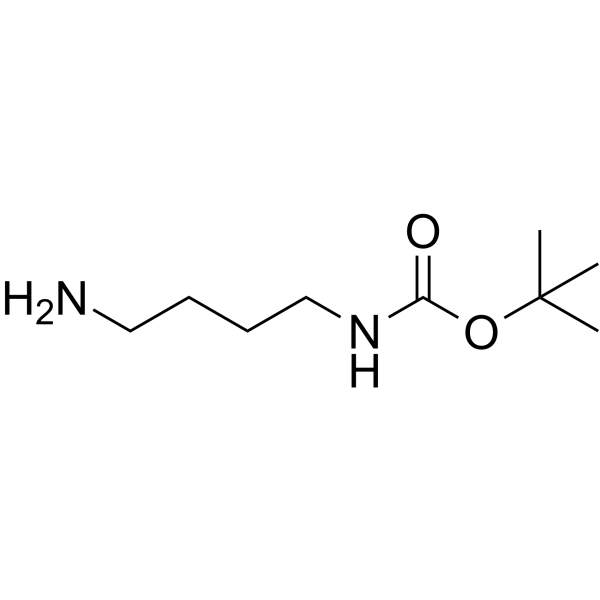
- HY-126884
-
|
|
ADC Linker
PROTAC Linkers
|
Cancer
|
|
DBCO-NHCO-PEG4-NH-Boc is a PEG/Alkyl/ether-based PROTAC linker can be used in the synthesis of PROTACs. DBCO-NHCO-PEG4-NH-Boc is a cleavable ADC linker used in the synthesis of antibody-drug conjugates (ADCs) . DBCO-NHCO-PEG4-NH-Boc is a click chemistry reagent, it contains a DBCO group that can undergo strain-promoted alkyne-azide cycloaddition (SPAAC) with molecules containing Azide groups.
|
-

- HY-140792
-
|
|
PROTAC Linkers
|
Cancer
|
|
Azido-PEG1-C1-Boc is an alkyl/ether-based PROTAC linker that can be used in the synthesis of PROTACs . Azido-PEG1-C1-Boc is a click chemistry reagent, it contains an Azide group and can undergo copper-catalyzed azide-alkyne cycloaddition reaction (CuAAc) with molecules containing Alkyne groups. Strain-promoted alkyne-azide cycloaddition (SPAAC) can also occur with molecules containing DBCO or BCN groups.
|
-
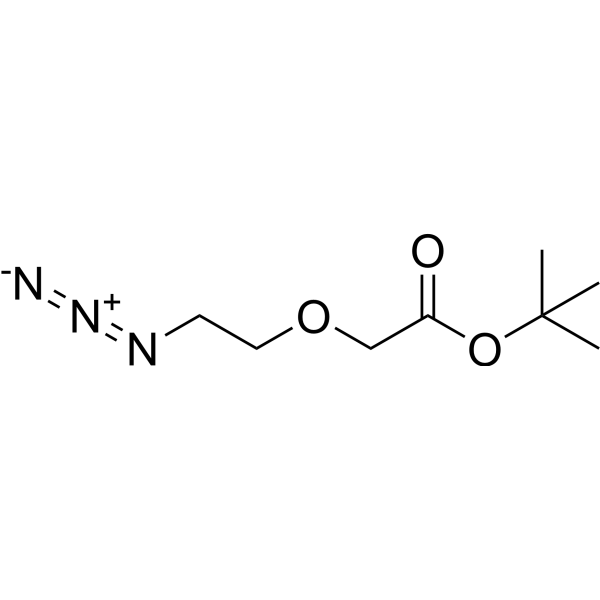
- HY-140846
-
|
|
PROTAC Linkers
|
Cancer
|
|
N-Fmoc-N'-(azido-PEG4)-L-Lysine is an alkyl/ether-based PROTAC linker that can be used in the synthesis of PROTACs . N-Fmoc-N'-(azido-PEG4)-L-Lysine is a click chemistry reagent, it contains an Azide group and can undergo copper-catalyzed azide-alkyne cycloaddition reaction (CuAAc) with molecules containing Alkyne groups. Strain-promoted alkyne-azide cycloaddition (SPAAC) can also occur with molecules containing DBCO or BCN groups.
|
-

- HY-130618
-
|
|
PROTAC Linkers
|
Cancer
|
|
Boc-C1-PEG3-C4-OH is a PROTAC linker, which refers to the Alkyl/ether composition. Boc-C1-PEG3-C4-OH can be used in the synthesis of a series of PROTACs. PROTACs contain two different ligands connected by a linker; one is a ligand for an E3 ubiquitin ligase and the other is for the target protein. PROTACs exploit the intracellular ubiquitin-proteasome system to selectively degrade target proteins .
|
-

- HY-17504D
-
|
|
HMG-CoA Reductase (HMGCR)
Potassium Channel
Autophagy
|
Cardiovascular Disease
Metabolic Disease
|
|
(3S,5R)-Rosuvastatin is the (3S,5R)-enantiomer of Rosuvastatin. Rosuvastatin is a competitive HMG-CoA reductase inhibitor with an IC50 of 11 nM . Rosuvastatin potently blocks human ether-a-go-go related gene (hERG) current with an IC50 of 195 nM . Rosuvastatin reduces the expression of the mature hERG and the interaction of heat shock protein 70 (Hsp70) with the hERG protein. Rosuvastatin is very effective in lowering low-density lipoprotein (LDL) cholesterol, triglycerides, and C-reactive protein levels .
|
-
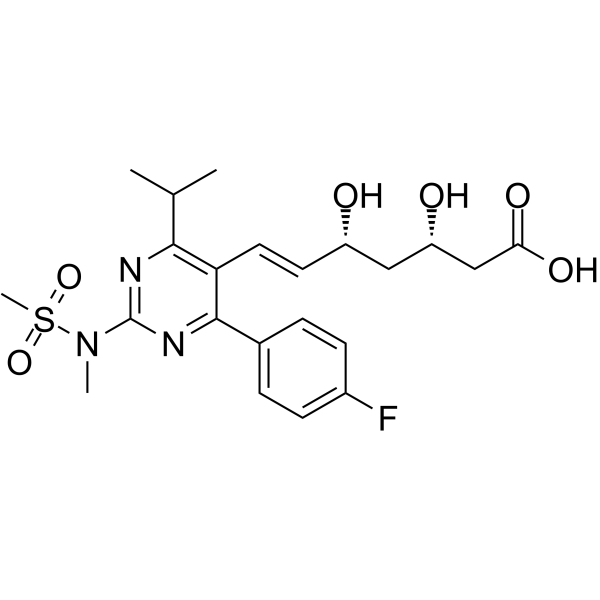
- HY-17504C
-
|
|
HMG-CoA Reductase (HMGCR)
Potassium Channel
Autophagy
|
Cardiovascular Disease
Metabolic Disease
|
|
(3R,5R)-Rosuvastatin is the (3R,5R)-enantiomer of Rosuvastatin. Rosuvastatin is a competitive HMG-CoA reductase inhibitor with an IC50 of 11 nM . Rosuvastatin potently blocks human ether-a-go-go related gene (hERG) current with an IC50 of 195 nM . Rosuvastatin reduces the expression of the mature hERG and the interaction of heat shock protein 70 (Hsp70) with the hERG protein. Rosuvastatin is very effective in lowering low-density lipoprotein (LDL) cholesterol, triglycerides, and C-reactive protein levels .
|
-
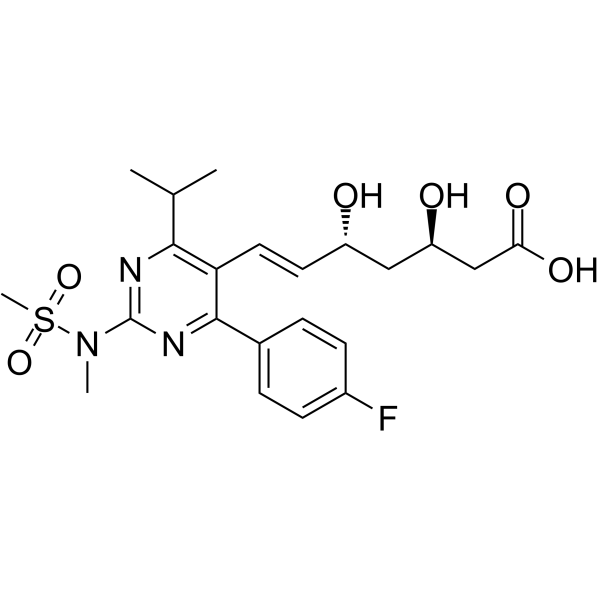
- HY-140787
-
|
17-(Azide-PEG6-ethylcarbamoyl)heptadecanoic t-butyl ester
|
PROTAC Linkers
|
Cancer
|
|
Azide-PEG6-amido-C16-Boc is an alkyl/ether-based PROTAC linker that can be used in the synthesis of PROTACs . Azide-PEG6-amido-C16-Boc is a click chemistry reagent, it contains an Azide group and can undergo copper-catalyzed azide-alkyne cycloaddition reaction (CuAAc) with molecules containing Alkyne groups. Strain-promoted alkyne-azide cycloaddition (SPAAC) can also occur with molecules containing DBCO or BCN groups.
|
-

- HY-140791
-
|
17-(Azide-PEG9-ethylcarbamoyl)heptadecanoic t-butyl ester
|
PROTAC Linkers
|
Cancer
|
|
Azide-PEG9-amido-C16-Boc is an alkyl/ether-based PROTAC linker that can be used in the synthesis of PROTACs . Azide-PEG9-amido-C16-Boc is a click chemistry reagent, it contains an Azide group and can undergo copper-catalyzed azide-alkyne cycloaddition reaction (CuAAc) with molecules containing Alkyne groups. Strain-promoted alkyne-azide cycloaddition (SPAAC) can also occur with molecules containing DBCO or BCN groups.
|
-
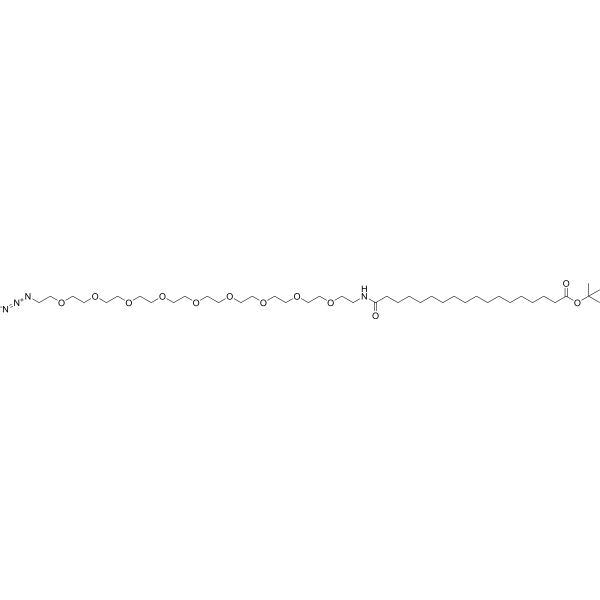
- HY-140847
-
|
|
PROTAC Linkers
|
Cancer
|
|
N-Fmoc-N'-(azido-PEG4)-L-Lysine-PFP ester is an alkyl/ether and PEG-based PROTAC linker that can be used in the synthesis of PROTACs . N-Fmoc-N'-(azido-PEG4)-L-Lysine-PFP ester is a click chemistry reagent, it contains an Azide group and can undergo copper-catalyzed azide-alkyne cycloaddition reaction (CuAAc) with molecules containing Alkyne groups. Strain-promoted alkyne-azide cycloaddition (SPAAC) can also occur with molecules containing DBCO or BCN groups.
|
-
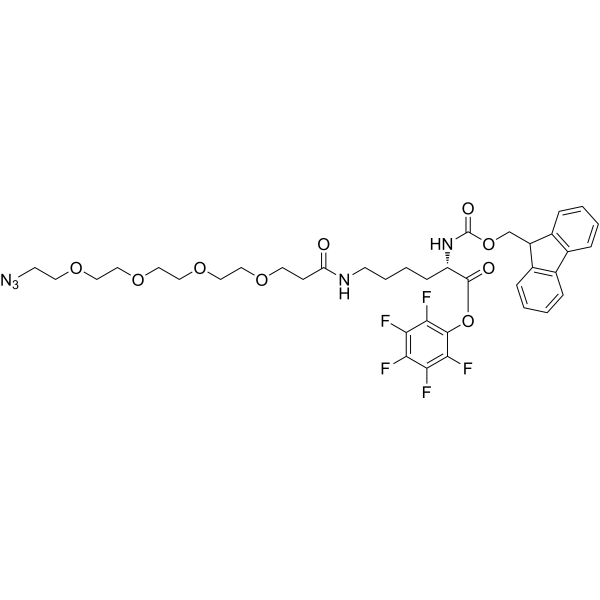
- HY-W010507
-
|
Methyl (R)-(-)-3-hydroxybutyrate
|
Biochemical Assay Reagents
|
Others
|
|
(R)-Methyl 3-hydroxybutanoate, (R)-Methyl 3-hydroxybutanoate is an enantiomer, from the perspective of the methyl (-CH3) group, the hydroxyl (-OH) group on the third carbon atom The group faces to the right, a colorless transparent liquid, soluble in organic solvents such as ethanol and ether, insoluble in water, (R)-Methyl 3-hydroxybutanoate is usually used to synthesize various organic compounds (including drugs, agricultural chemicals and flavoring agents) It can also be used as a chiral auxiliary in asymmetric synthetic reactions involving the formation of chemical bonds in a stereoselective manner.
|
-

- HY-W250168
-
|
|
Biochemical Assay Reagents
|
Others
|
|
Polyethylene glycol monooleyl ether, also known as POE(20) monooleate, is a nonionic surfactant consisting of a polyethylene glycol chain with 20 ethylene oxide units and an oleic acid residue. It has excellent emulsifying, wetting and dispersing properties, making it suitable for a variety of applications including personal care products and pharmaceutical formulations. POE(20) monooleate is commonly used as a solubilizer to improve the solubility and bioavailability of poorly soluble drugs. Furthermore, it is biodegradable and has low toxicity, making it an environmentally friendly ingredient suitable for various industrial applications.
|
-
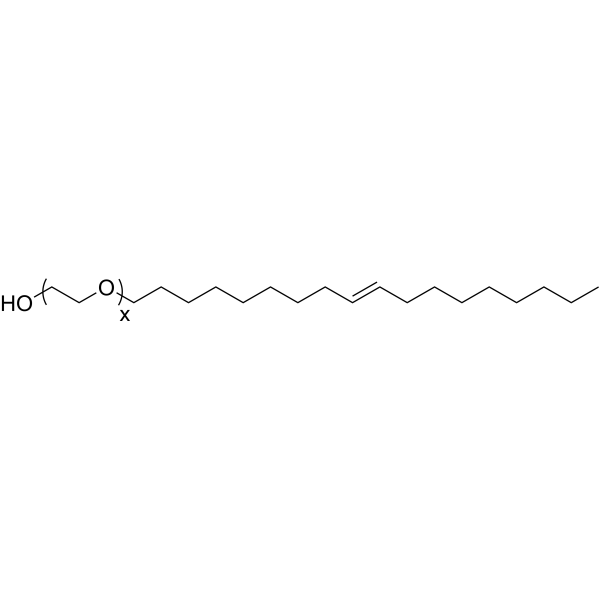
- HY-140763
-
|
|
PROTAC Linkers
|
Cancer
|
|
Azido-PEG1-CH2CO2-NHS is an alkyl/ether-based PROTAC linker that can be used in the synthesis of PROTACs . Azido-PEG1-CH2CO2-NHS is a click chemistry reagent, it contains an Azide group and can undergo copper-catalyzed azide-alkyne cycloaddition reaction (CuAAc) with molecules containing Alkyne groups. Strain-promoted alkyne-azide cycloaddition (SPAAC) can also occur with molecules containing DBCO or BCN groups.
|
-

- HY-140554
-
|
|
PROTAC Linkers
|
Cancer
|
|
N-Boc-N-bis(C2-PEG1-azide) is an alkyl/ether-based PROTAC linker that can be used in the synthesis of PROTACs . N-Boc-N-bis(C2-PEG1-azide) is a click chemistry reagent, it contains an Azide group and can undergo copper-catalyzed azide-alkyne cycloaddition reaction (CuAAc) with molecules containing Alkyne groups. Strain-promoted alkyne-azide cycloaddition (SPAAC) can also occur with molecules containing DBCO or BCN groups.
|
-
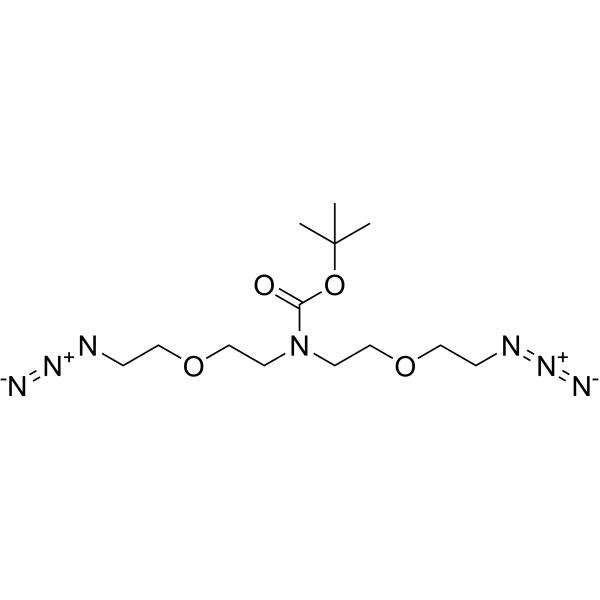
- HY-150686
-
|
|
Fungal
|
Infection
|
|
Chitin synthase inhibitor 4 (compound 4fh) is a chitin synthase inhibitor with fungicidal effect. Chitin synthase inhibitor 4 is a potential chitin synthase-based fungicide in agriculture .
|
-
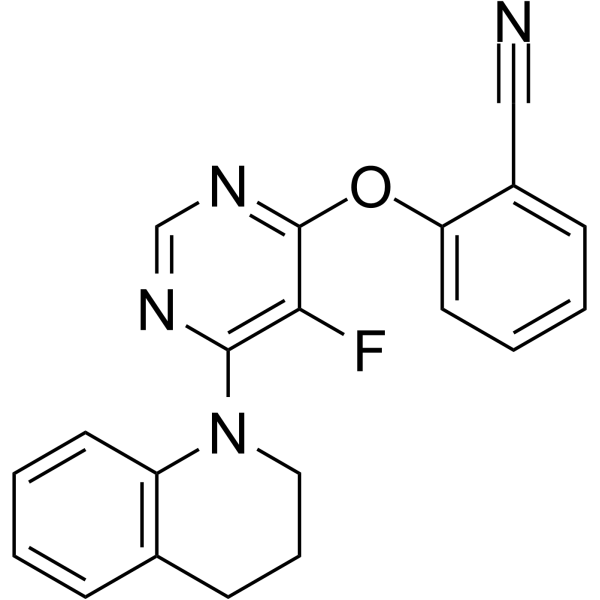
- HY-16915
-
|
|
Potassium Channel
|
Cardiovascular Disease
|
|
RPR-260243, a potent activator of human ether-a-go-go-related gene (hERG), slows deactivation and attenuates inactivation of hERG1 channels. RPR260243-modified HERG currents are inhibited by Dofetilide (IC50=58 nM). RPR260243 displays no activator-like effects on other voltage-dependent ion channels, including the closely related ERG3 K+ channel . RPR-260243 is a click chemistry reagent, it contains an Alkyne group and can undergo copper-catalyzed azide-alkyne cycloaddition (CuAAc) with molecules containing Azide groups.
|
-

- HY-N1934
-
|
|
Potassium Channel
HSP
|
Cardiovascular Disease
Inflammation/Immunology
Cancer
|
|
Dihydroberberine is a naturally occurring isoquinoline alkaloid with anti-inflammatory, anti-atherosclerotic, hypolipidemic and anti-tumor activities. Dihydroberberine inhibits the human ether-related gene (hERG) channel and significantly reduces the expression of heat shock protein 90 (Hsp90) and its interaction with hERG. Dihydroberberine also blocks the TLR4/MyD88/NF-κB signaling pathway to reduce pro-inflammatory cytokines and immunoglobulins, and has inhibitory effects on DSS (HY-116282C)-induced experimental colitis. Dihydroberberine also increases the sensitivity of lung cancer to sunitinib (HY-10255A), with synergistic efficacy .
|
-

- HY-130293
-
|
|
ADC Linker
PROTAC Linkers
|
Cancer
|
|
Propargyl-PEG4-CH2CH2-Boc is a non-cleavable ADC linker that can be used to synthesize ADC inhibitors of Galectin-3. Propargyl-PEG4-CH2CH2-Boc is a PEG- and Alkyl/ether-based PROTAC linker that can be used in the synthesis of PROTACs . Propargyl-PEG4-CH2CH2-Boc is a click chemistry reagent, it contains an Alkyne group and can undergo copper-catalyzed azide-alkyne cycloaddition (CuAAc) with molecules containing Azide groups.
|
-
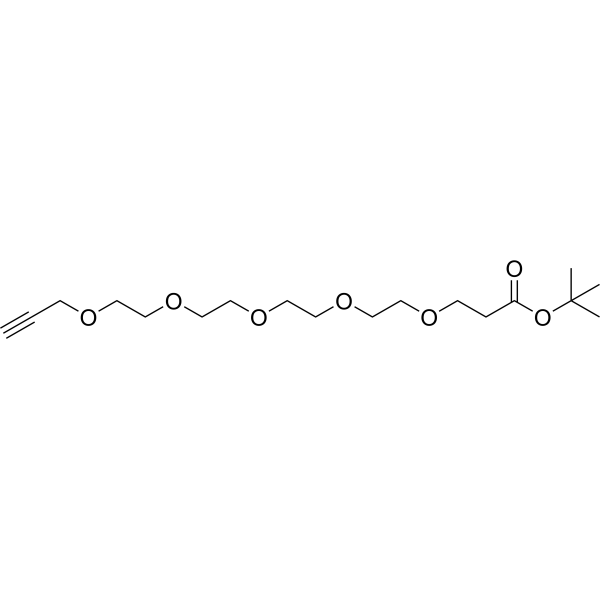
- HY-130690
-
|
|
ADC Linker
PROTAC Linkers
|
Cancer
|
|
Propargyl-PEG1-SS-PEG1-C2-Boc is a Alkyl/ether-based PROTAC linker can be used in the synthesis of PROTACs. Propargyl-PEG1-SS-PEG1-C2-Boc is a cleavable ADC linker used in the synthesis of antibody-drug conjugates (ADCs) . Propargyl-PEG1-SS-PEG1-C2-Boc is a click chemistry reagent, it contains an Alkyne group and can undergo copper-catalyzed azide-alkyne cycloaddition (CuAAc) with molecules containing Azide groups.
|
-
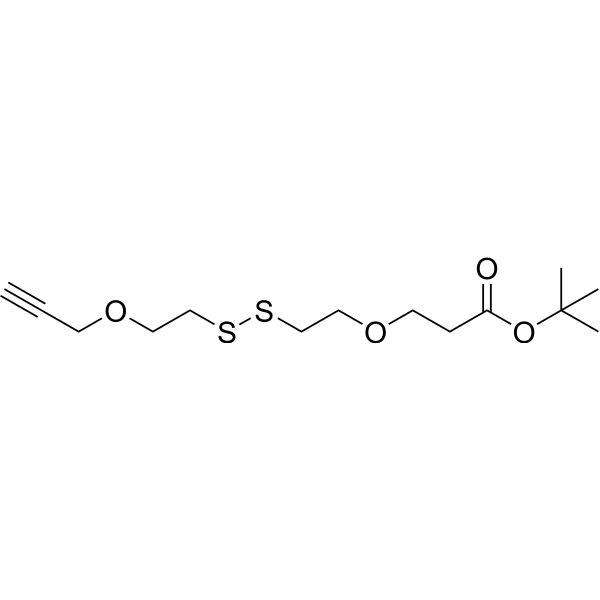
- HY-130984
-
|
|
PROTAC Linkers
|
Cancer
|
|
Azido-PEG1-CH2COO-Cl (compound 43a) is an alkyl/ether-based PROTAC linker. Azido-PEG1-CH2COO-Cl can be used in the synthesis of PROTAC BRD4 Degrader-1 (HY-133131) . Azido-PEG1-CH2COO-Cl is a click chemistry reagent, it contains an Azide group and can undergo copper-catalyzed azide-alkyne cycloaddition reaction (CuAAc) with molecules containing Alkyne groups. Strain-promoted alkyne-azide cycloaddition (SPAAC) can also occur with molecules containing DBCO or BCN groups.
|
-

- HY-W250172
-
|
|
Biochemical Assay Reagents
|
Others
|
|
Triton X-405 is a nonionic surfactant commonly used in a variety of industrial and research applications. Triton X-405 belongs to the family of polyethylene glycol (PEG) ethers with a hydrophilic head and lipophilic tail and is suitable for use in emulsions, detergents and solubilizers. Triton X-405 is particularly useful in the study of membrane proteins, where it is used to solubilize and stabilize proteins for structural analysis techniques. It is also used in a variety of other applications, including drug delivery systems, nanotechnology, and diagnostic analysis. Additionally, Triton X-405 is used in the production of microemulsions, salves and lotions due to its emulsifying and solubilizing properties. However, it can be toxic if ingested or inhaled, so proper handling and safety precautions are required.
|
-
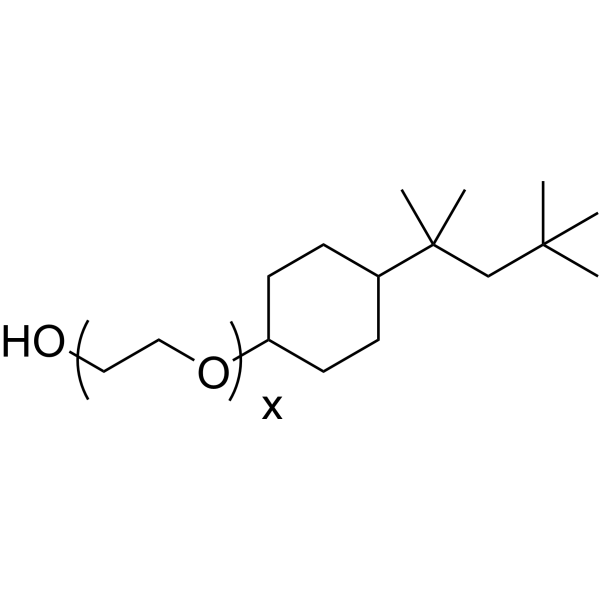
- HY-103607
-
|
VH032-PEG2-C4-Cl; VHL Ligand-Linker Conjugates 7; E3 ligase Ligand-Linker Conjugates 10
|
E3 Ligase Ligand-Linker Conjugates
|
Cancer
|
|
(S,R,S)-AHPC-PEG2-C4-Cl (VH032-PEG2-C4-Cl) is a conjugate of ligands for E3 and 13-atom-length linker. The connector of linker is Halogen group. (S,R,S)-AHPC-PEG2-C4-Cl incorporates the (S,R,S)-AHPC based VHL ligand and an alkyl/ether-based linker. (S,R,S)-AHPC-PEG2-C4-Cl is capable of inducing the degradation of GFP-HaloTag7 in cell-based assays .
|
-
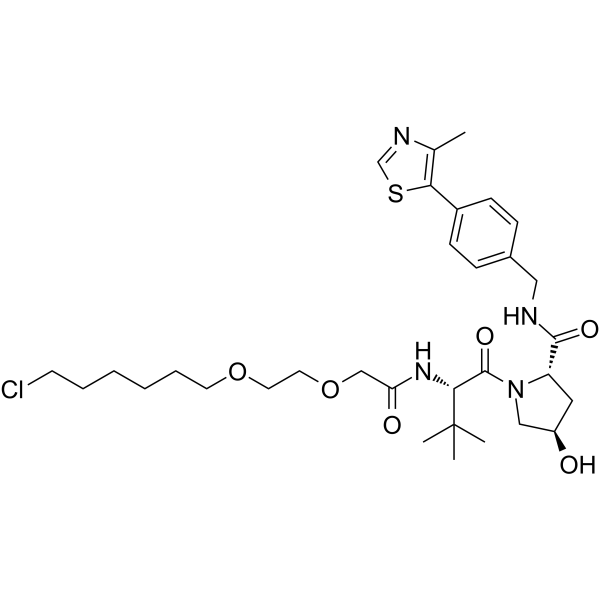
- HY-108369
-
|
|
PROTAC Linkers
|
Cancer
|
|
Azido-PEG1-CH2CO2H is a PROTAC linker, which refers to the alkyl/ether composition. Azido-PEG1-CH2CO2H can be used in the synthesis of PROTAC BRD4 Degrader-1 . Azido-PEG1-CH2CO2H is a click chemistry reagent, it contains an Azide group and can undergo copper-catalyzed azide-alkyne cycloaddition reaction (CuAAc) with molecules containing Alkyne groups. Strain-promoted alkyne-azide cycloaddition (SPAAC) can also occur with molecules containing DBCO or BCN groups.
|
-
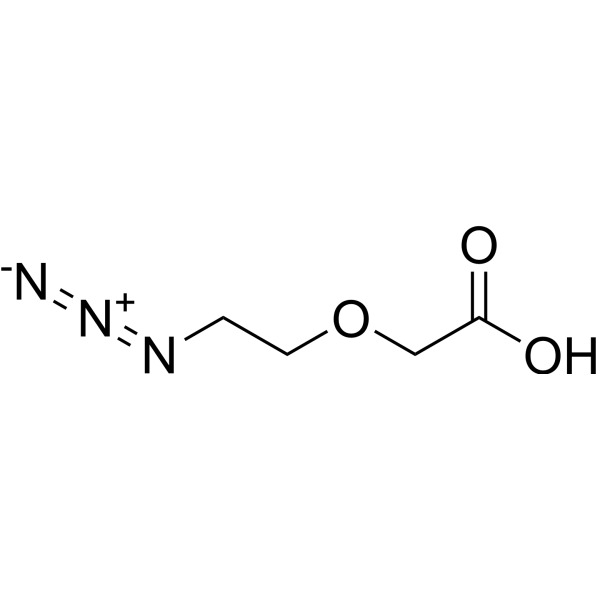
- HY-103605
-
|
VH032-C6-PEG3-C4-Cl; VHL Ligand-Linker Conjugates 12; E3 ligase Ligand-Linker Conjugates 8
|
E3 Ligase Ligand-Linker Conjugates
|
Cancer
|
|
(S,R,S)-AHPC-C6-PEG3-C4-Cl (VH032-C6-PEG3-C4-Cl) is a conjugate of ligands for E3 and 20-atom-length linker. The connector of linker is Halogen group. (S,R,S)-AHPC-C6-PEG3-C4-Cl incorporates the (S,R,S)-AHPC based VHL ligand and an alkyl/ether-based linker. (S,R,S)-AHPC-C6-PEG3-C4-Cl is capable of inducing the degradation of GFP-HaloTag7 in cell-based assays .
|
-
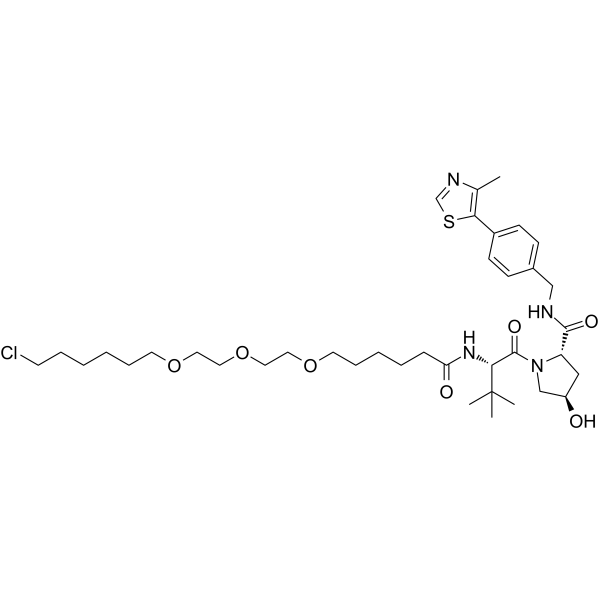
- HY-111997
-
|
HaloPROTAC 3
|
E3 Ligase Ligand-Linker Conjugates
|
|
|
VH285-PEG4-C4-Cl (HaloPROTAC 3) is a conjugate of ligands for E3 and 16-atom-length linker. The connector of linker is Halogen group. VH285-PEG4-C4-Cl incorporates the VH285 based VHL ligand and an alkyl/ether-based linker. VH285-PEG4-C4-Cl is a highly potent and efficacious degrader of GFP-HaloTag7 with a DC50 of 19 nM. VH285-PEG4-C4-Cl is able to induce 90 % degradation of GFP-Halotag at 625 nM. VH285-PEG4-C4-Cl binds to VHL with an IC50 of 0.54 μM .
|
-

-
-
HY-L041
-
|
|
367 compounds
|
|
Macrocycles, molecules containing 12-membered or larger rings, are receiving increased attention in small-molecule drug discovery. The reasons are several, including providing access to novel chemical space, challenging new protein targets, showing favorable ADME- and PK-properties. Macrocycles have demonstrated repeated success when addressing targets that have proved to be highly challenging for standard small-molecule drug discovery, especially in modulating macromolecular processes such as protein–protein interactions (PPI). Otherwise, the size and complexity of macrocyclic compounds make possible to ensure numerous and spatially distributed binding interactions, thereby increasing both binding affinity and selectivity.
MCE offers a unique collection of 367 macrocyclic compounds which can be used for drug discovery for high throughput screening (HTS) and high content screening (HCS). MCE Macrocyclic Compound Library is a useful tool for discovering new drugs, especially for “undruggable” targets and protein–protein interactions.
|
| Cat. No. |
Product Name |
Type |
-
- HY-D0144
-
|
Methoxyresorufin
|
Chromogenic Substrates
|
|
Resorufin methyl ether (Methoxyresorufin) is a cytochrome P450 fluorometric substrate . Resorufin methyl ether is a relatively specific substrate for CYP1A2 activity in rodents .
|
-
- HY-147170
-
|
|
Fluorescent Dyes/Probes
|
|
(1,1'-Dipyrenyl)dimethyl ether exhibits intramolecular excimer fluorescence in competition with fluorescence from the locally excited pyrene chromophore. (1,1'-Dipyrenyl)dimethyl ether is soluble in synthetic phospholipid membranes .
|
-
- HY-D0147
-
|
Pentoxyresorufin
|
Fluorescent Dyes/Probes
|
|
Resorufin pentyl ether (Pentoxyresorufin) is a Resazurin (HY-111391) analogue. Resorufin pentyl ether can function as a substrate probe to characterize and differentiate between a variety of inducers of cytochromes P-450. Resorufin pentyl ether has bactericidal activity against N. gonorrhoeae .
|
-
- HY-D1904
-
|
|
Fluorescent Dyes/Probes
|
|
D-Luciferin 6'-methyl ether sodium salt is a firefly luciferase inhibitor. D-Luciferin 6'-methyl ether sodium salt is a cofactor in Luc-catalyzed synthesis of dinucleoside polyphosphates .
|
-
- HY-D0146
-
|
BzRes; 7-Benzyloxyresorufin; 7-Benzyloxyphenoxazone
|
Dyes
|
|
Resorufin benzyl ether (BzRes), a fluorogenic enzyme substrate, can be used to detect CYP3A4 enzyme activity. Resorufin benzyl ether modified with a recognizing moiety boronate, can be used for ONOO - detection via a self-immolation mechanism. Ex/Em=530-570 nm/590 nm .
|
-
- HY-115749A
-
|
(Rac)-6′-Methoxyluciferin sodium
|
Fluorescent Dyes/Probes
|
|
D-Luciferin 6′-methyl ether (6′-Methoxyluciferin; compound 19a) sodium is a potent luciferase from the North American firefly Photinus pyralis (PpyLuc) inhibitor with an IC50 of 0.1 μM. D-Luciferin 6′-methyl ether, a D-luciferin analog, shows non-specific interactions at ATP- and luciferin-binding sites of the PpyLuc active site .
|
-
- HY-D0145
-
|
Resorufin ethyl ether
|
Chromogenic Substrates
|
|
7-Ethoxyresorufin (Resorufin ethyl ether) is a fluorometric substrate and competitive inhibitor of cytochrome P450, especially CYP1A1. 7-Ethoxyresorufin also inhibits NO synthase .
|
| Cat. No. |
Product Name |
Type |
-
- HY-W102545
-
|
|
Biochemical Assay Reagents
|
|
Diaza-15-crown-5 extends the lifetime of M intermediates in BR membranes. Diaza-15-crown-5 is a crown ether compound that alters the surface charge of BR membranes. Diaza-15-crown-5 changes the surface charge of the BR film. and overall membrane stability. Diaza-15-crown-5 allows the M state to be maintained for a longer period of time .
|
-
- HY-W008585
-
-
- HY-153124
-
-
- HY-W094511
-
|
Gold chloride sodium dihydrate
|
Biochemical Assay Reagents
|
|
Tetrachloroaurate III sodium dihydrate (Gold chloride sodium dihydrate) is utilized as catalyst in reactions like nucleophilic addition to multiple bonds, nucleophilic substitution of propargylic alcohols, and nonsymmetrical etherization .
|
-
- HY-157914
-
|
6,6-Dibenzyl-1,4,8,11-tetraoxacyclotetradecane
|
Chelators
|
|
Dibenzyl-14-crown-4 (6,6-Dibenzyl-1,4,8,11-tetraoxacyclotetradecane) is a crown ether derivate, which serves as neutral carrier in PVC ion-selective electrode, improves the Li + selectivity against Na + and K + .
|
-
- HY-W103245
-
|
B18C6
|
Biochemical Assay Reagents
|
|
Benzo-18-crown-6-ether (B18C6) is an organic compound that can be used to prepare stable microcapsule responsive layers for further assembly into bilayer microcapsules. For example, 18-Crown-6-ether is used to prepare the response layer and is coated with a G-quadruplex cross-linked hydrogel layer stabilized by K +; when Mg 2+ ions are present, 18-Crown-6-ether and K + ions can respectively Dissociates and locks with the G-quadruplex cross-linked layer, thereby achieving switchable controlled release of the load .
|
-
- HY-D0180
-
|
18C6; 1,4,7,10,13,16-Hexaoxacyclooctadecane
|
Biochemical Assay Reagents
|
|
18-Crown-6-ether (18C6; 1,4,7,10,13,16-Hexaoxacyclooctadecane) is an organic compound that can be used to prepare stable microcapsule responsive layers for further assembly into bilayer microcapsules. For example, 18-Crown-6-ether is used to prepare the response layer and is coated with a G-quadruplex cross-linked hydrogel layer stabilized by K +; when Mg 2+ ions are present, 18-Crown-6-ether and K + ions can respectively Dissociates and locks with the G-quadruplex cross-linked layer, thereby achieving switchable controlled release of the load .
|
-
- HY-W250183B
-
|
Polyethylene glycol octadecyl ether (n~20)
|
Surfactants
|
|
Polyoxyethylene (20) stearyl ether (Polyethylene glycol octadecyl ether) is a polyethylene glycolated lipid surfactant that can be used in the formation and stabilization studies of nanoparticles .
|
-
- HY-W250171
-
|
Polyoxyethylene (10) cetyl ether
|
Biochemical Assay Reagents
|
|
Octaethylene glycol monohexadecyl ether, is a nonionic surfactant commonly used in various industrial and research applications. Octaethylene glycol monohexadecyl ether belongs to the family of polyethylene glycol (PEG) ethers with a hydrophilic head and lipophilic tail, suitable for use in lotions, detergents and solubilizers. Octaethylene glycol monohexadecyl ether is particularly useful in the study of membrane proteins, where it is used to solubilize and stabilize proteins for structural analysis techniques. In addition, Octaethylene glycol monohexadecyl ether has the ability to interact with and penetrate cell membranes, so it has potential applications in drug delivery and other medical fields.
|
-
- HY-W250183C
-
|
Polyethylene glycol octadecyl ether (n=2)
|
Surfactants
|
|
Polyoxyethylene (2) stearyl ether (Polyethylene glycol octadecyl ether, n=2) is a biochemical reagent that can be used as a biological material or organic compound for life science related research .
|
-
- HY-W250178
-
|
|
Biochemical Assay Reagents
|
|
Octaethylene glycol monodecyl ether, is a nonionic surfactant commonly used in various industrial and research applications. It belongs to the family of polyethylene glycol (PEG) ethers with a hydrophilic head and lipophilic tail and is suitable for use in lotions, detergents and solubilizers. Octaethylene glycol monodecyl ether is particularly useful in the study of membrane proteins, where it is used to solubilize and stabilize proteins for structural analysis techniques. In addition, Octaethylene glycol monodecyl ether has the ability to interact with and penetrate cell membranes, so it has potential applications in drug delivery and other medical fields.
|
-
- HY-W250195
-
|
|
Biochemical Assay Reagents
|
|
Hexaethylene glycol monotetradecyl ether is a kind of nonionic surfactant with hydrophilic head and lipophilic tail. It belongs to the class of polyethylene glycol (PEG) ethers and is widely used in different industrial and research applications. Due to its unique properties, Hexaethylene glycol monotetradecyl ether is commonly used in lotions, detergents and solubilizers. It is particularly useful in the study of membrane proteins and can be used to stabilize and solubilize proteins for use in structural analysis techniques. Due to its moisturizing and emulsifying properties, Hexaethylene glycol monotetradecyl ether is also used in personal care and cosmetics.
|
-
- HY-W250176
-
|
|
Biochemical Assay Reagents
|
|
Polyethylene glycol trimethylnonyl ether, is a nonionic surfactant commonly used in various industrial and research applications. It belongs to the family of polyethylene glycol (PEG) ethers with a hydrophilic head and lipophilic tail and is suitable for use in lotions, detergents and solubilizers. Polyethylene glycol trimethylnonyl ether is particularly useful in protein chemistry, where it is used to solubilize and stabilize proteins, such as membrane proteins, for structural analysis techniques. In addition, Polyethylene glycol trimethylnonyl ether has potential applications in drug delivery and other medical fields due to its ability to interact with and penetrate cell membranes.
|
-
- HY-139415
-
-
- HY-W250183
-
|
Polyethylene glycol octadecyl ether (n~10, average Mn~711)
|
Surfactants
|
|
Polyoxyethylene (10) stearyl ether (Polyethylene glycol octadecyl ether, n~10, average Mn~711) is a biochemical reagent that can be used as a biological material or organic compound for life science related research.
|
-
- HY-W250183A
-
|
Polyethylene glycol octadecyl ether (n~100, average Mn~4670)
|
Surfactants
|
|
Polyoxyethylene (100) stearyl ether (Polyethylene glycol octadecyl ether, n~100, average Mn~4670) is a biochemical reagent that can be used as a biological material or organic compound for life science related research .
|
-
- HY-W250179
-
|
Polyoxyethylene (6) cetyl ether
|
Biochemical Assay Reagents
|
|
Hexaethylene glycol monohexadecyl ether, is a nonionic surfactant belonging to the polyethylene glycol (PEG) ether family. It has a hydrophilic head and a lipophilic tail, which makes it suitable for a wide range of applications. Specifically, Hexaethylene glycol monohexadecyl ether is commonly used in membrane protein research, for solubilization and stabilization of proteins, and for structural analysis techniques such as X-ray crystallography and electron microscopy. Additionally, Hexaethylene glycol monohexadecyl ether is used in a variety of other industrial and research applications, including drug delivery systems, nanotechnology, and diagnostic analysis. Its unique properties make it ideal for facilitating interactions between molecules with different physicochemical properties.
|
-
- HY-W009048
-
|
DCH18C6; Perhydrodibenzo-18-crown-6
|
Biochemical Assay Reagents
|
|
Dicyclohexano-18-crown-6-ether selectively extracts lysine-rich cytochrome c proteins from other cationic proteins under weakly acidic and neutral conditions, demonstrating specificity in ligand-protein interactions .
|
-
- HY-W127401
-
|
n-Octyltrioxyethylene
|
Biochemical Assay Reagents
|
|
Triethylene glycol monooctyl ether is a surfactant, C8E3 solubilizes membrane proteins.
|
-
- HY-W073183
-
|
|
Biochemical Assay Reagents
|
|
Dibenzo-24-crown-8-ether is a phase transfer catalyst that can reduce H 2PtCl 6·6H 2O and FeCl 2·4H 2O in a thermal system to synthesize 17 nm monodispersed iron-platinum (FePt) alloy nanoparticles .
|
-
- HY-Y1883
-
|
|
Biochemical Assay Reagents
|
|
Polyethylene Glycol Mono-4-octylphenyl Ether is an oligomeric blend that can be used for biochemical research .
|
-
- HY-W127577
-
|
O-Isopentyl-cholesterol
|
Biochemical Assay Reagents
|
|
Cholesteryl isoamyl ether is a biochemical reagent that can be used as a biological material or organic compound for life science related research.
|
-
- HY-W127440
-
|
|
Biochemical Assay Reagents
|
|
i-Cholesteryl methyl ether is a biochemical reagent that can be used as a biological material or organic compound for life science related research.
|
-
- HY-W250169
-
|
|
Biochemical Assay Reagents
|
|
Secondary alcohol polyoxyethylene ether is a biochemical reagent that can be used as a biological material or organic compound for life science related research.
|
-
- HY-W250198
-
|
|
Biochemical Assay Reagents
|
|
Hexaethylene glycol monododecyl ether is a biochemical reagent that can be used as a biological material or organic compound for life science related research.
|
-
- HY-W250185
-
|
|
Biochemical Assay Reagents
|
|
Pentaethylene glycol monodecyl ether is a biochemical reagent that can be used as a biological material or organic compound for life science related research.
|
-
- HY-136158A
-
|
Sulfo-EMCS
|
Biochemical Assay Reagents
|
|
6-Maleimidocaproic acid sulfo-NHS (Sulfo-EMCS) sodium is an alkyl/ether-based PROTAC linker that can be used in the synthesis of PROTACs .
|
-
- HY-W133953
-
|
Propylene glycol monomethyl ether acetate
|
Biochemical Assay Reagents
|
|
1-Methoxy-2-propyl acetate (Propylene glycol monomethyl ether acetate) is utilized as solvent, especially in the electronic-grade semiconductor industry .
|
-
- HY-W250166
-
|
|
Biochemical Assay Reagents
|
|
Poly(ethylene glycol) (12) tridecyl ether is a nonionic surfactant belonging to the family of ethoxylated fatty alcohols. It is commonly used as an emulsifier, solubilizer, and wetting agent in a variety of industrial and personal care products. Poly(ethylene glycol)(12) tridecyl ether has various properties that make it suitable for these applications, including its low toxicity, high solubility in water and organic solvents, and ability to stabilize emulsions. In addition, it can be used as a raw material for the production of other surfactants and specialty chemicals.
|
-
- HY-W145493
-
|
Poly(ethylene glycol) tetrahydrofurfuryl ether
|
Biochemical Assay Reagents
|
|
Poly(ethylene glycol) tetrahydrofurfuryl ether is liquid glycogen can be easily transformed into a gel system with excellent elasticity, so it can be used as a medium for dissolving water-insoluble agents.
|
-
- HY-W022036
-
|
Guaethol; Guethol; NSC 180
|
Biochemical Assay Reagents
|
|
2-Ethoxyphenol, also known as guaiacol ethyl ether, consists of a phenolic ring and an ethoxy group connected to the 2-position. The compound has a sweet, smoky flavor and is commonly used as a flavoring in foods such as baked goods, candy and beverages.
|
-
- HY-W127502
-
|
1-Hex-GPA
|
Cell Assay Reagents
|
|
1-Hexadecyl lysophosphatidic acid is an ether analog of lysophosphatidic acid (LPA) containing a hexadecyl group in the sn-1 position. LPA binds to five different G protein-coupled receptors and mediates a variety of biological responses, including cell proliferation, smooth muscle contraction, platelet aggregation, neurite contraction, and cell motility.
|
-
- HY-W105411
-
|
|
Biochemical Assay Reagents
|
|
tert-Butanol, 99.8% (Trimethyl carbinol, 99.8%; tert-Butyl alcohol, 99.8%; 2-Methyl-2-propanol, 99.8%) is a common organic solvent that is miscible with water, ethanol, ether, and other organic solvents. N,N'-Diacryloylpiperazine is a kind of biological materials or organic compounds that are widely used in life science research .
|
-
- HY-W010507
-
|
Methyl (R)-(-)-3-hydroxybutyrate
|
Biochemical Assay Reagents
|
|
(R)-Methyl 3-hydroxybutanoate, (R)-Methyl 3-hydroxybutanoate is an enantiomer, from the perspective of the methyl (-CH3) group, the hydroxyl (-OH) group on the third carbon atom The group faces to the right, a colorless transparent liquid, soluble in organic solvents such as ethanol and ether, insoluble in water, (R)-Methyl 3-hydroxybutanoate is usually used to synthesize various organic compounds (including drugs, agricultural chemicals and flavoring agents) It can also be used as a chiral auxiliary in asymmetric synthetic reactions involving the formation of chemical bonds in a stereoselective manner.
|
-
- HY-W250168
-
|
|
Biochemical Assay Reagents
|
|
Polyethylene glycol monooleyl ether, also known as POE(20) monooleate, is a nonionic surfactant consisting of a polyethylene glycol chain with 20 ethylene oxide units and an oleic acid residue. It has excellent emulsifying, wetting and dispersing properties, making it suitable for a variety of applications including personal care products and pharmaceutical formulations. POE(20) monooleate is commonly used as a solubilizer to improve the solubility and bioavailability of poorly soluble drugs. Furthermore, it is biodegradable and has low toxicity, making it an environmentally friendly ingredient suitable for various industrial applications.
|
-
- HY-W250172
-
|
|
Biochemical Assay Reagents
|
|
Triton X-405 is a nonionic surfactant commonly used in a variety of industrial and research applications. Triton X-405 belongs to the family of polyethylene glycol (PEG) ethers with a hydrophilic head and lipophilic tail and is suitable for use in emulsions, detergents and solubilizers. Triton X-405 is particularly useful in the study of membrane proteins, where it is used to solubilize and stabilize proteins for structural analysis techniques. It is also used in a variety of other applications, including drug delivery systems, nanotechnology, and diagnostic analysis. Additionally, Triton X-405 is used in the production of microemulsions, salves and lotions due to its emulsifying and solubilizing properties. However, it can be toxic if ingested or inhaled, so proper handling and safety precautions are required.
|
| Cat. No. |
Product Name |
Target |
Research Area |
-
- HY-P1440
-
-
- HY-W250166
-
|
|
Biochemical Assay Reagents
|
Others
|
|
Poly(ethylene glycol) (12) tridecyl ether is a nonionic surfactant belonging to the family of ethoxylated fatty alcohols. It is commonly used as an emulsifier, solubilizer, and wetting agent in a variety of industrial and personal care products. Poly(ethylene glycol)(12) tridecyl ether has various properties that make it suitable for these applications, including its low toxicity, high solubility in water and organic solvents, and ability to stabilize emulsions. In addition, it can be used as a raw material for the production of other surfactants and specialty chemicals.
|
| Cat. No. |
Product Name |
Category |
Target |
Chemical Structure |
-
- HY-N2756
-
-

-
- HY-N9903
-
-

-
- HY-N11903
-
-

-
- HY-N9203
-
-

-
- HY-N3754
-
-

-
- HY-W014394
-
-

-
- HY-N12274
-
-

-
- HY-W049970
-
-

-
- HY-N8930
-
-

-
- HY-N1152
-
-

-
- HY-N4314
-
|
4',5,6,7-Tetramethoxyflavone
|
Infection
Structural Classification
Flavonoids
Classification of Application Fields
Flavones
Plants
Compositae
Inflammation/Immunology
Disease Research Fields
Genista maderensis (Webb & Berthel.) Lowe
|
Bacterial
|
|
Scutellarein tetramethyl ether (4',5,6,7-Tetramethoxyflavone) is a bioactive component of Siam weed extract. Scutellarein tetramethyl ether (4',5,6,7-Tetramethoxyflavone) exhibits anti-inflammatory activity through NF-κB pathway . Scutellarein tetramethyl ether (4',5,6,7-Tetramethoxyflavone) modulats of bacterial agent resistance via efflux pump inhibition . Scutellarein tetramethyl ether (4',5,6,7-Tetramethoxyflavone) can enhance blood coagulation .
|
-

-
- HY-N9051
-
-

-
- HY-N11906
-
-

-
- HY-N1789
-
-

-
- HY-118427
-
-

-
- HY-N2411
-
-

-
- HY-N9166
-
-

-
- HY-N12071
-
-

-
- HY-N3864
-
-

-
- HY-N9135
-
-

-
- HY-N3056
-
-

-
- HY-N1582
-
-

-
- HY-N2180
-
-

-
- HY-N8259
-
-

-
- HY-N1785
-
-

-
- HY-N11000
-
-

-
- HY-N3420
-
-

-
- HY-N4280
-
-

-
- HY-W667666
-
-

-
- HY-N11516
-
-

-
- HY-N1340
-
-

-
- HY-W667667
-
-

-
- HY-N12596
-
-

-
- HY-N1339
-
-

-
- HY-N10994
-
-

-
- HY-N1538
-
-

-
- HY-W663232
-
-

-
- HY-N8450
-
-

-
- HY-W007656
-
-

-
- HY-N7150
-
|
5,7-Dihydroxy-3',4',5'-trimethoxyflavone
|
Structural Classification
Flavonols
Haplopteris anguste-elongata (Hayata) E. H. Crane
Flavonoids
Chrysanthemum × morifolium (Ramat.) Hemsl.
Source classification
Pteridaceae
Plants
Compositae
|
Xanthine Oxidase
|
|
Tricetin 3',4',5'-trimethyl ether (5,7-Dihydroxy-3',4',5'-trimethoxyflavone) is a flavone glucoside, that can be isolated the flowers of Chrysanthemum sinensea. Tricetin 3',4',5'-trimethyl ether displays xanthine oxidase competitive-type inhibitory activity, with an IC50 of 0.51 μM and a Ki of 0.37 μM .
|
-

-
- HY-111811
-
-

-
- HY-111911
-
-

-
- HY-N3434
-
-

-
- HY-125361
-
-

-
- HY-N7982
-
-

-
- HY-N9112
-
-

-
- HY-N1655
-
-

-
- HY-N9961
-
-

-
- HY-152899
-
-

-
- HY-N1798
-
-

- HY-N12212
-
-

- HY-N12838
-
-

- HY-N3212
-
-

- HY-N7116
-
-

- HY-N7641
-
-

- HY-130049
-
-

- HY-N4167
-
-

- HY-N1933
-
-

- HY-N5060
-
-

- HY-B0264
-
-

- HY-N7656
-
|
Norwogonin 5,7,8-trimethyl ether
|
Structural Classification
Flavonoids
Classification of Application Fields
Flavones
Leguminosae
Source classification
Plants
Inflammation/Immunology
Disease Research Fields
Lupinus micranthus Guss.
|
NO Synthase
|
|
5,7,8-Trimethoxyflavone (Norwogonin 5,7,8-trimethyl ether), isolated from Andrographis echioides, inhibits NO with an IC50 of 39.1 μM. 5,7,8-Trimethoxyflavone has anti-inflammatory activity .
|
-

- HY-N7497
-
-

- HY-N1956
-
-

- HY-B0264R
-
-

- HY-N9714
-
-

- HY-N11879
-
-

- HY-W024365
-
-

- HY-N1934
-
-

| Cat. No. |
Product Name |
Chemical Structure |
-
- HY-Y0339S
-
|
|
|
Diphenyl Ether-d10 is the deuterium labeled Diphenyl Ether[1].
|
-

-
- HY-W585866S
-
|
|
|
Alternariol, methyl ether- 13C15 is a 13C labeled Alternariol, methyl ether.
|
-

-
- HY-146626S
-
|
|
|
1,3,5(10)-Estratriene-17α-ethyl-3,17β-diol 3-methyl ether-d5 is the deuterium labeled 1,3,5(10)-Estratriene-17α-ethyl-3,17β-diol 3-methyl ether[1].
|
-

-
- HY-W725473
-
|
|
|
Oxyfluorfen-d5 is deuterated labeled Oxyfluorfen (HY-119176) Oxyfluorfen is a pre- and post-emergence diphenyl ether herbicide to control annual broad-leaved and grass weeds. Oxyfluorfen is a protoporphyrinogen oxidase inhibitor and inhibits photosynthesis by blocking chlorophyll synthesis.
|
-

-
- HY-N1393S1
-
|
|
|
2-Methoxybenzoic acid-d3 (NSC 3778-d3; O-Methylsalicylic acid-d3; Salicylic acid methyl ether-d3) is deuterium-labeled 2-Methoxybenzoic acid (HY-N1393) .
|
-

-
- HY-D0145S
-
|
|
|
7-Ethoxyresorufin-d5 is deuterium labeled 7-Ethoxyresorufin. 7-Ethoxyresorufin (Resorufin ethyl ether) is a fluorometric substrate and competitive inhibitor of cytochrome P450, especially CYP1A1. 7-Ethoxyresorufin also inhibits NO synthase[1][2].
|
-

-
- HY-B0264S
-
|
|
|
Guaifenesin-d3 is the deuterium labeled Guaifenesin. Guaifenesin (Guaiacol glyceryl ether), a constituent of guaiac resin from the wood of Guajacum officinale Linné, is an expectorant. Guaifenesin can alleviate cough discomfortby increasing sputum volume and decreasing its viscosity, thereby promoting effective cough[1][2].
|
-

-
- HY-B0264S1
-
|
|
|
Guaifenesin-d5 is the deuterium labeled Guaifenesin. Guaifenesin (Guaiacol glyceryl ether), a constituent of guaiac resin from the wood of Guajacum officinale Linné, is an expectorant. Guaifenesin can alleviate cough discomfortby increasing sputum volume and decreasing its viscosity, thereby promoting effective cough. Guaifenesin also has narcotic effect[1][2].
|
-

-
- HY-W013576S
-
|
|
|
Methyl 2-Octynoate-d5 is deuterated labeled Estragole (HY-N5060). Estragole (4-Allylanisole), a relatively nontoxic volatile terpenoid ether, is a major component of the essential oil of many plants. Estragole dose-dependently blocks nerve excitability . Estragole displays anti-toxoplasma activity .
|
-

-
- HY-17504AS
-
|
|
|
Rosuvastatin-d3 is a deuterium labeled Rosuvastatin. Rosuvastatin (ZD 4522) is a competitive HMG-CoA reductase inhibitor with an IC50 of 11 nM[1]. Rosuvastatin potently blocks human ether-a-go-go related gene (hERG) current with an IC50 of 195 nM, delayed cardiac repolarization, and thereby prolonged action potential durations (APDs) and corrected QT interval (QTc) intervals[2].
|
-

| Cat. No. |
Product Name |
|
Classification |
-
- HY-130742
-
|
|
|
PROTAC Synthesis
Azide
|
|
Azido-PEG8-Boc is a PEG- and Alkyl/ether-based PROTAC linker can be used in the synthesis of PROTACs . Azido-PEG8-Boc is a click chemistry reagent, it contains an Azide group and can undergo copper-catalyzed azide-alkyne cycloaddition reaction (CuAAc) with molecules containing Alkyne groups. Strain-promoted alkyne-azide cycloaddition (SPAAC) can also occur with molecules containing DBCO or BCN groups.
|
-
- HY-130184
-
|
|
|
Azide
ADC Synthesis
PROTAC Synthesis
|
|
Azido-PEG8-NHS ester is a cleavable 8 unit PEG ADC linker used in the synthesis of antibody-drug conjugates (ADCs) . Azido-PEG8-NHS ester is also a PEG- and Alkyl/ether-based PROTAC linker that can be used in the synthesis of PROTACs . Azido-PEG8-NHS ester is a click chemistry reagent, it contains an Azide group and can undergo copper-catalyzed azide-alkyne cycloaddition reaction (CuAAc) with molecules containing Alkyne groups. Strain-promoted alkyne-azide cycloaddition (SPAAC) can also occur with molecules containing DBCO or BCN groups.
|
-
- HY-130474
-
|
|
|
ADC Synthesis
Azide
PROTAC Synthesis
|
|
Azido-PEG6-NHS ester is a cleavable 6 unit PEG ADC linker used in the synthesis of antibody-drug conjugates (ADCs) . Azido-PEG6-NHS ester is also a PEG- and Alkyl/ether based PROTAC linker that can be used in the synthesis of PROTACs . Azido-PEG6-NHS ester is a click chemistry reagent, it contains an Azide group and can undergo copper-catalyzed azide-alkyne cycloaddition reaction (CuAAc) with molecules containing Alkyne groups. Strain-promoted alkyne-azide cycloaddition (SPAAC) can also occur with molecules containing DBCO or BCN groups.
|
-
- HY-130420
-
|
|
|
Azide
PROTAC Synthesis
|
|
Azido-PEG5-PFP ester is a PEG- and Alkyl/ether-based PROTAC linker can be used in the synthesis of PROTACs . Azido-PEG5-PFP ester is a click chemistry reagent, it contains an Azide group and can undergo copper-catalyzed azide-alkyne cycloaddition reaction (CuAAc) with molecules containing Alkyne groups. Strain-promoted alkyne-azide cycloaddition (SPAAC) can also occur with molecules containing DBCO or BCN groups.
|
-
- HY-130693
-
|
|
|
Azide
PROTAC Synthesis
|
|
Azido-PEG5-CH2CO2-PFP is a PEG- and Alkyl/ether-based PROTAC linker can be used in the synthesis of PROTACs . Azido-PEG5-CH2CO2-PFP is a click chemistry reagent, it contains an Azide group and can undergo copper-catalyzed azide-alkyne cycloaddition reaction (CuAAc) with molecules containing Alkyne groups. Strain-promoted alkyne-azide cycloaddition (SPAAC) can also occur with molecules containing DBCO or BCN groups.
|
-
- HY-42618
-
|
|
|
ADC Synthesis
PROTAC Synthesis
Azide
|
|
Azido-PEG4-CH2-Boc is a cleavable 4 unit PEG ADC linker used in the synthesis of antibody-drug conjugates (ADCs) . Azido-PEG4-CH2-Boc is also a PEG- and Alkyl/ether-based PROTAC linker that can be used in the synthesis of PROTACs . Azido-PEG4-CH2-Boc is a click chemistry reagent, it contains an Azide group and can undergo copper-catalyzed azide-alkyne cycloaddition reaction (CuAAc) with molecules containing Alkyne groups. Strain-promoted alkyne-azide cycloaddition (SPAAC) can also occur with molecules containing DBCO or BCN groups.
|
-
- HY-130985
-
|
|
|
Alkynes
PROTAC Synthesis
|
|
9-Decyn-1-ol is an alkyl/ether-based PROTAC linker that can be used in the synthesis of PROTACs. 9-Decyn-1-ol can be used to conjugate GDC-0068 with Lenalidomide to generate INY-03-041. INY-03-041 is a potent, highly selective and PROTAC-based pan-Akt degrader. INY-03-041 inhibits Akt1, Akt2 and Akt3 with IC50s of 2.0 nM, 6.8 nM and 3.5 nM, respectively . 9-Decyn-1-ol is a click chemistry reagent, it contains an Alkyne group and can undergo copper-catalyzed azide-alkyne cycloaddition (CuAAc) with molecules containing Azide groups.
|
-
- HY-42489
-
|
|
|
PROTAC Synthesis
Azide
ADC Synthesis
|
|
N3-PEG3-CH2CH2-Boc is a cleavable 3 unit PEG ADC linker used in the synthesis of antibody-drug conjugates (ADCs) . N3-PEG3-CH2CH2-Boc is also a PEG- and Alkyl/ether-based PROTAC linker that can be used in the synthesis of PROTACs . N3-PEG3-CH2CH2-Boc is a click chemistry reagent, it contains an Azide group and can undergo copper-catalyzed azide-alkyne cycloaddition reaction (CuAAc) with molecules containing Alkyne groups. Strain-promoted alkyne-azide cycloaddition (SPAAC) can also occur with molecules containing DBCO or BCN groups.
|
-
- HY-141175
-
|
|
|
TCO
|
|
TCO-PNB ester is an alkyl/ether-based PROTAC linker that can be used in the synthesis of PROTACs .
|
-
- HY-141165
-
|
|
|
TCO
|
|
TCO-NHS ester is an alkyl/ether-based PROTAC linker that can be used in the synthesis of PROTACs .
|
-
- HY-157514
-
|
|
|
Azide
|
|
Thalidomide 4'-ether-PEG1-azide is the Thalidomide (HY-14658)-based cereblon ligand used in the recruitment of CRBN protein. Thalidomide 4'-ether-PEG1-azide can be connected to the ligand for protein by a linker to form PROTACs .
|
-
- HY-141268
-
|
|
|
Tetrazine
|
|
Methyltetrazine-Sulfo-NHS ester (sodium) is an alkyl/ether-based PROTAC linker that can be used in the synthesis of PROTACs .
|
-
- HY-157515
-
|
|
|
Azide
|
|
Thalidomide 4'-ether-PEG2-azide is a click chemistry modified cereblon (CRBN) inhibitor Thalidomide (HY-14658). Thalidomide 4'-ether-PEG2-azide contains an azide group and can undergo copper-catalyzed azide-alkyne cycloaddition reaction (CuAAc) with molecules containing alkynyl groups. Thalidomide 4'-ether-PEG2-azide can be used as a ligand of E3 ubiquitin ligase and Linker conjugates (E3 Ligase Ligand-Linker Conjugates) for the synthesis of PROTACs .
|
-
- HY-130537
-
|
|
|
PROTAC Synthesis
ADC Synthesis
Azide
|
|
Azido-PEG6-alcohol is a PEG-based PROTAC linker that can be used in the synthesis of PROTACs . Azido-PEG6-alcohol is also a non-cleavable 6 unit PEG ADC linker used in the synthesis of antibody-drug conjugates (ADCs) . Azido-PEG6-alcohol is a click chemistry reagent, it contains an Azide group and can undergo copper-catalyzed azide-alkyne cycloaddition reaction (CuAAc) with molecules containing Alkyne groups. Strain-promoted alkyne-azide cycloaddition (SPAAC) can also occur with molecules containing DBCO or BCN groups.
|
-
- HY-147052
-
|
|
|
Alkynes
PROTAC Synthesis
|
|
Boc-Pip-butyn is an Alkyl/ether-based PROTAC linker . Boc-Pip-butyn is a click chemistry reagent, itcontains an Alkyne group and can undergo copper-catalyzed azide-alkyne cycloaddition (CuAAc) with molecules containing Azide groups.
|
-
- HY-140293
-
|
|
|
PROTAC Synthesis
DBCO
|
|
DBCO-NH-Boc is an alkyl/ether-based PROTAC linker that can be used in the synthesis of PROTACs . DBCO-NH-Boc is a click chemistry reagent, it contains a DBCO group that can undergo strain-promoted alkyne-azide cycloaddition (SPAAC) with molecules containing Azide groups.
|
-
- HY-126908
-
|
|
|
Tetrazine
PROTAC Synthesis
|
|
Tetrazine-Ph-NHS ester is an alkyl/ether-based PROTAC linker that can be used in the synthesis of PROTACs . Tetrazine-Ph-NHS ester is a click chemistry reagent, it contains a Tetrazine group that can undergo an inverse electron demand Diels-Alder reaction (iEDDA) with molecules containing TCO groups.
|
-
- HY-130283
-
|
|
|
PROTAC Synthesis
Tetrazine
|
|
Methyltetrazine-Ph-NHS ester is an alkyl/ether-based PROTAC linker that can be used in the synthesis of PROTACs . Methyltetrazine-Ph-NHS ester is a click chemistry reagent, it contains a Tetrazine group that can undergo an inverse electron demand Diels-Alder reaction (iEDDA) with molecules containing TCO groups.
|
-
- HY-133406
-
|
|
|
PROTAC Synthesis
BCN
|
|
exo BCN-O-PNB is an alkyl/ether-based PROTAC linker that can be used in the synthesis of PROTACs . exo BCN-O-PNB is a click chemistry reagent, it contains a BCN group that can undergo strain-promoted alkyne-azide cycloaddition (SPAAC) with molecules containing Azide groups.
|
-
- HY-43581
-
|
|
|
PROTAC Synthesis
BCN
|
|
endo-BCN-O-PNB is an alkyl/ether-based PROTAC linker that can be used in the synthesis of PROTACs . endo-BCN-O-PNB is a click chemistry reagent, it contains a BCN group that can undergo strain-promoted alkyne-azide cycloaddition (SPAAC) with molecules containing Azide groups.
|
-
- HY-140026
-
|
|
|
Alkynes
PROTAC Synthesis
|
|
Propargyl-PEG1-Boc is an alkyl/ether-based PROTAC linker that can be used in the synthesis of PROTACs . Propargyl-PEG1-Boc is a click chemistry reagent, it contains an Alkyne group and can undergo copper-catalyzed azide-alkyne cycloaddition (CuAAc) with molecules containing Azide groups.
|
-
- HY-133509
-
|
|
|
PROTAC Synthesis
DBCO
|
|
DBCO-C2-SulfoNHS ester is an alkyl/ether-based PROTAC linker that can be used in the synthesis of PROTACs . DBCO-C2-SulfoNHS ester is a click chemistry reagent, it contains a DBCO group that can undergo strain-promoted alkyne-azide cycloaddition (SPAAC) with molecules containing Azide groups.
|
-
- HY-140339
-
|
|
|
Azide
PROTAC Synthesis
|
|
ANB-NOS is an alkyl/ether-based PROTAC linker that can be used in the synthesis of PROTACs . ANB-NOS is a click chemistry reagent, it contains an Azide group and can undergo copper-catalyzed azide-alkyne cycloaddition reaction (CuAAc) with molecules containing Alkyne groups. Strain-promoted alkyne-azide cycloaddition (SPAAC) can also occur with molecules containing DBCO or BCN groups.
|
-
- HY-140851
-
|
|
|
Azide
PROTAC Synthesis
|
|
Azido-PEG1-methyl ester is an alkyl/ether-based PROTAC linker that can be used in the synthesis of PROTACs . Azido-PEG1-methyl ester is a click chemistry reagent, it contains an Azide group and can undergo copper-catalyzed azide-alkyne cycloaddition reaction (CuAAc) with molecules containing Alkyne groups. Strain-promoted alkyne-azide cycloaddition (SPAAC) can also occur with molecules containing DBCO or BCN groups.
|
-
- HY-140755
-
|
|
|
PROTAC Synthesis
Azide
|
|
Aeide-C1-NHS ester is an alkyl/ether-based PROTAC linker that can be used in the synthesis of PROTACs . Aeide-C1-NHS ester is a click chemistry reagent, it contains an Azide group and can undergo copper-catalyzed azide-alkyne cycloaddition reaction (CuAAc) with molecules containing Alkyne groups. Strain-promoted alkyne-azide cycloaddition (SPAAC) can also occur with molecules containing DBCO or BCN groups.
|
-
- HY-111456
-
|
|
|
PROTAC Synthesis
DBCO
ADC Synthesis
|
|
DBCO-NHCO-PEG4-NHS ester is a PEG/Alkyl/ether-based PROTAC linker can be used in the synthesis of PROTACs. DBCO-NHCO-PEG4-NHS ester is a cleavable ADC linker used in the synthesis of antibody-drug conjugates (ADCs) . DBCO-NHCO-PEG4-NHS ester is a click chemistry reagent, it contains a DBCO group that can undergo strain-promoted alkyne-azide cycloaddition (SPAAC) with molecules containing Azide groups.
|
-
- HY-126885
-
|
|
|
DBCO
PROTAC Synthesis
ADC Synthesis
|
|
DBCO-PEG5-NHS ester is a PEG/Alkyl/ether-based PROTAC linker can be used in the synthesis of PROTACs. DBCO-PEG5-NHS ester is a cleavable ADC linker used in the synthesis of antibody-drug conjugates (ADCs) . DBCO-PEG5-NHS ester is a click chemistry reagent, it contains a DBCO group that can undergo strain-promoted alkyne-azide cycloaddition (SPAAC) with molecules containing Azide groups.
|
-
- HY-126974
-
|
|
|
Alkynes
ADC Synthesis
PROTAC Synthesis
|
|
Propargyl-PEG3-NHS ester is a PEG/Alkyl/ether-based PROTAC linker can be used in the synthesis of PROTACs. Propargyl-PEG3-NHS ester is a cleavable ADC linker used in the synthesis of antibody-drug conjugates (ADCs) . Propargyl-PEG3-NHS ester is a click chemistry reagent, it contains an Alkyne group and can undergo copper-catalyzed azide-alkyne cycloaddition (CuAAc) with molecules containing Azide groups.
|
-
- HY-130376
-
|
|
|
Alkynes
PROTAC Synthesis
ADC Synthesis
|
|
Propargyl-PEG8-NHS ester is a PEG/Alkyl/ether-based PROTAC linker can be used in the synthesis of PROTACs. Propargyl-PEG8-NHS ester is a cleavable ADC linker used in the synthesis of antibody-drug conjugates (ADCs) . Propargyl-PEG8-NHS ester is a click chemistry reagent, it contains an Alkyne group and can undergo copper-catalyzed azide-alkyne cycloaddition (CuAAc) with molecules containing Azide groups.
|
-
- HY-130381
-
|
|
|
ADC Synthesis
Alkynes
PROTAC Synthesis
|
|
Propargyl-PEG7-NHS ester is a PEG/Alkyl/ether-based PROTAC linker can be used in the synthesis of PROTACs. Propargyl-PEG7-NHS ester is a cleavable ADC linker used in the synthesis of antibody-drug conjugates (ADCs) . Propargyl-PEG7-NHS ester is a click chemistry reagent, it contains an Alkyne group and can undergo copper-catalyzed azide-alkyne cycloaddition (CuAAc) with molecules containing Azide groups.
|
-
- HY-130385
-
|
|
|
Alkynes
PROTAC Synthesis
ADC Synthesis
|
|
Propargyl-PEG6-NHS ester is a PEG/Alkyl/ether-based PROTAC linker can be used in the synthesis of PROTACs. Propargyl-PEG6-NHS ester is a cleavable ADC linker used in the synthesis of antibody-drug conjugates (ADCs) . Propargyl-PEG6-NHS ester is a click chemistry reagent, it contains an Alkyne group and can undergo copper-catalyzed azide-alkyne cycloaddition (CuAAc) with molecules containing Azide groups.
|
-
- HY-130388
-
|
|
|
ADC Synthesis
Alkynes
PROTAC Synthesis
|
|
Propargyl-PEG5-NHS ester is a PEG/Alkyl/ether-based PROTAC linker can be used in the synthesis of PROTACs. Propargyl-PEG5-NHS ester is a cleavable ADC linker used in the synthesis of antibody-drug conjugates (ADCs) . Propargyl-PEG5-NHS ester is a click chemistry reagent, it contains an Alkyne group and can undergo copper-catalyzed azide-alkyne cycloaddition (CuAAc) with molecules containing Azide groups.
|
-
- HY-138464
-
|
|
|
PROTAC Synthesis
Azide
|
|
Br-Boc-C2-azido is an alkyl/ether-based PROTAC linker that can be used in the synthesis of PROTACs . Br-Boc-C2-azido is a click chemistry reagent, it contains an Azide group and can undergo copper-catalyzed azide-alkyne cycloaddition reaction (CuAAc) with molecules containing Alkyne groups. Strain-promoted alkyne-azide cycloaddition (SPAAC) can also occur with molecules containing DBCO or BCN groups.
|
-
- HY-126884
-
|
|
|
ADC Synthesis
DBCO
PROTAC Synthesis
|
|
DBCO-NHCO-PEG4-NH-Boc is a PEG/Alkyl/ether-based PROTAC linker can be used in the synthesis of PROTACs. DBCO-NHCO-PEG4-NH-Boc is a cleavable ADC linker used in the synthesis of antibody-drug conjugates (ADCs) . DBCO-NHCO-PEG4-NH-Boc is a click chemistry reagent, it contains a DBCO group that can undergo strain-promoted alkyne-azide cycloaddition (SPAAC) with molecules containing Azide groups.
|
-
- HY-140792
-
|
|
|
PROTAC Synthesis
Azide
|
|
Azido-PEG1-C1-Boc is an alkyl/ether-based PROTAC linker that can be used in the synthesis of PROTACs . Azido-PEG1-C1-Boc is a click chemistry reagent, it contains an Azide group and can undergo copper-catalyzed azide-alkyne cycloaddition reaction (CuAAc) with molecules containing Alkyne groups. Strain-promoted alkyne-azide cycloaddition (SPAAC) can also occur with molecules containing DBCO or BCN groups.
|
-
- HY-140846
-
|
|
|
Azide
PROTAC Synthesis
|
|
N-Fmoc-N'-(azido-PEG4)-L-Lysine is an alkyl/ether-based PROTAC linker that can be used in the synthesis of PROTACs . N-Fmoc-N'-(azido-PEG4)-L-Lysine is a click chemistry reagent, it contains an Azide group and can undergo copper-catalyzed azide-alkyne cycloaddition reaction (CuAAc) with molecules containing Alkyne groups. Strain-promoted alkyne-azide cycloaddition (SPAAC) can also occur with molecules containing DBCO or BCN groups.
|
-
- HY-140787
-
|
17-(Azide-PEG6-ethylcarbamoyl)heptadecanoic t-butyl ester
|
|
PROTAC Synthesis
Azide
|
|
Azide-PEG6-amido-C16-Boc is an alkyl/ether-based PROTAC linker that can be used in the synthesis of PROTACs . Azide-PEG6-amido-C16-Boc is a click chemistry reagent, it contains an Azide group and can undergo copper-catalyzed azide-alkyne cycloaddition reaction (CuAAc) with molecules containing Alkyne groups. Strain-promoted alkyne-azide cycloaddition (SPAAC) can also occur with molecules containing DBCO or BCN groups.
|
-
- HY-140791
-
|
17-(Azide-PEG9-ethylcarbamoyl)heptadecanoic t-butyl ester
|
|
Azide
PROTAC Synthesis
|
|
Azide-PEG9-amido-C16-Boc is an alkyl/ether-based PROTAC linker that can be used in the synthesis of PROTACs . Azide-PEG9-amido-C16-Boc is a click chemistry reagent, it contains an Azide group and can undergo copper-catalyzed azide-alkyne cycloaddition reaction (CuAAc) with molecules containing Alkyne groups. Strain-promoted alkyne-azide cycloaddition (SPAAC) can also occur with molecules containing DBCO or BCN groups.
|
-
- HY-140847
-
|
|
|
Azide
PROTAC Synthesis
|
|
N-Fmoc-N'-(azido-PEG4)-L-Lysine-PFP ester is an alkyl/ether and PEG-based PROTAC linker that can be used in the synthesis of PROTACs . N-Fmoc-N'-(azido-PEG4)-L-Lysine-PFP ester is a click chemistry reagent, it contains an Azide group and can undergo copper-catalyzed azide-alkyne cycloaddition reaction (CuAAc) with molecules containing Alkyne groups. Strain-promoted alkyne-azide cycloaddition (SPAAC) can also occur with molecules containing DBCO or BCN groups.
|
-
- HY-140763
-
|
|
|
Azide
PROTAC Synthesis
|
|
Azido-PEG1-CH2CO2-NHS is an alkyl/ether-based PROTAC linker that can be used in the synthesis of PROTACs . Azido-PEG1-CH2CO2-NHS is a click chemistry reagent, it contains an Azide group and can undergo copper-catalyzed azide-alkyne cycloaddition reaction (CuAAc) with molecules containing Alkyne groups. Strain-promoted alkyne-azide cycloaddition (SPAAC) can also occur with molecules containing DBCO or BCN groups.
|
-
- HY-140554
-
|
|
|
PROTAC Synthesis
Azide
|
|
N-Boc-N-bis(C2-PEG1-azide) is an alkyl/ether-based PROTAC linker that can be used in the synthesis of PROTACs . N-Boc-N-bis(C2-PEG1-azide) is a click chemistry reagent, it contains an Azide group and can undergo copper-catalyzed azide-alkyne cycloaddition reaction (CuAAc) with molecules containing Alkyne groups. Strain-promoted alkyne-azide cycloaddition (SPAAC) can also occur with molecules containing DBCO or BCN groups.
|
-
- HY-130293
-
|
|
|
ADC Synthesis
PROTAC Synthesis
Alkynes
|
|
Propargyl-PEG4-CH2CH2-Boc is a non-cleavable ADC linker that can be used to synthesize ADC inhibitors of Galectin-3. Propargyl-PEG4-CH2CH2-Boc is a PEG- and Alkyl/ether-based PROTAC linker that can be used in the synthesis of PROTACs . Propargyl-PEG4-CH2CH2-Boc is a click chemistry reagent, it contains an Alkyne group and can undergo copper-catalyzed azide-alkyne cycloaddition (CuAAc) with molecules containing Azide groups.
|
-
- HY-130690
-
|
|
|
ADC Synthesis
Alkynes
PROTAC Synthesis
|
|
Propargyl-PEG1-SS-PEG1-C2-Boc is a Alkyl/ether-based PROTAC linker can be used in the synthesis of PROTACs. Propargyl-PEG1-SS-PEG1-C2-Boc is a cleavable ADC linker used in the synthesis of antibody-drug conjugates (ADCs) . Propargyl-PEG1-SS-PEG1-C2-Boc is a click chemistry reagent, it contains an Alkyne group and can undergo copper-catalyzed azide-alkyne cycloaddition (CuAAc) with molecules containing Azide groups.
|
-
- HY-130984
-
|
|
|
PROTAC Synthesis
Azide
|
|
Azido-PEG1-CH2COO-Cl (compound 43a) is an alkyl/ether-based PROTAC linker. Azido-PEG1-CH2COO-Cl can be used in the synthesis of PROTAC BRD4 Degrader-1 (HY-133131) . Azido-PEG1-CH2COO-Cl is a click chemistry reagent, it contains an Azide group and can undergo copper-catalyzed azide-alkyne cycloaddition reaction (CuAAc) with molecules containing Alkyne groups. Strain-promoted alkyne-azide cycloaddition (SPAAC) can also occur with molecules containing DBCO or BCN groups.
|
-
- HY-108369
-
|
|
|
PROTAC Synthesis
Azide
|
|
Azido-PEG1-CH2CO2H is a PROTAC linker, which refers to the alkyl/ether composition. Azido-PEG1-CH2CO2H can be used in the synthesis of PROTAC BRD4 Degrader-1 . Azido-PEG1-CH2CO2H is a click chemistry reagent, it contains an Azide group and can undergo copper-catalyzed azide-alkyne cycloaddition reaction (CuAAc) with molecules containing Alkyne groups. Strain-promoted alkyne-azide cycloaddition (SPAAC) can also occur with molecules containing DBCO or BCN groups.
|
Your information is safe with us. * Required Fields.
Inquiry Information
- Product Name:
- Cat. No.:
- Quantity:
- MCE Japan Authorized Agent:
































































































































































![5-[Boc(methyl)amino]pentanal](http://file.medchemexpress.com/product_pic/hy-138520.gif)




















































































































![Tris[[2-(tert-butoxycarbonyl)ethoxy]methyl]methylamine](http://file.medchemexpress.com/product_pic/hy-21577.gif)





















































































